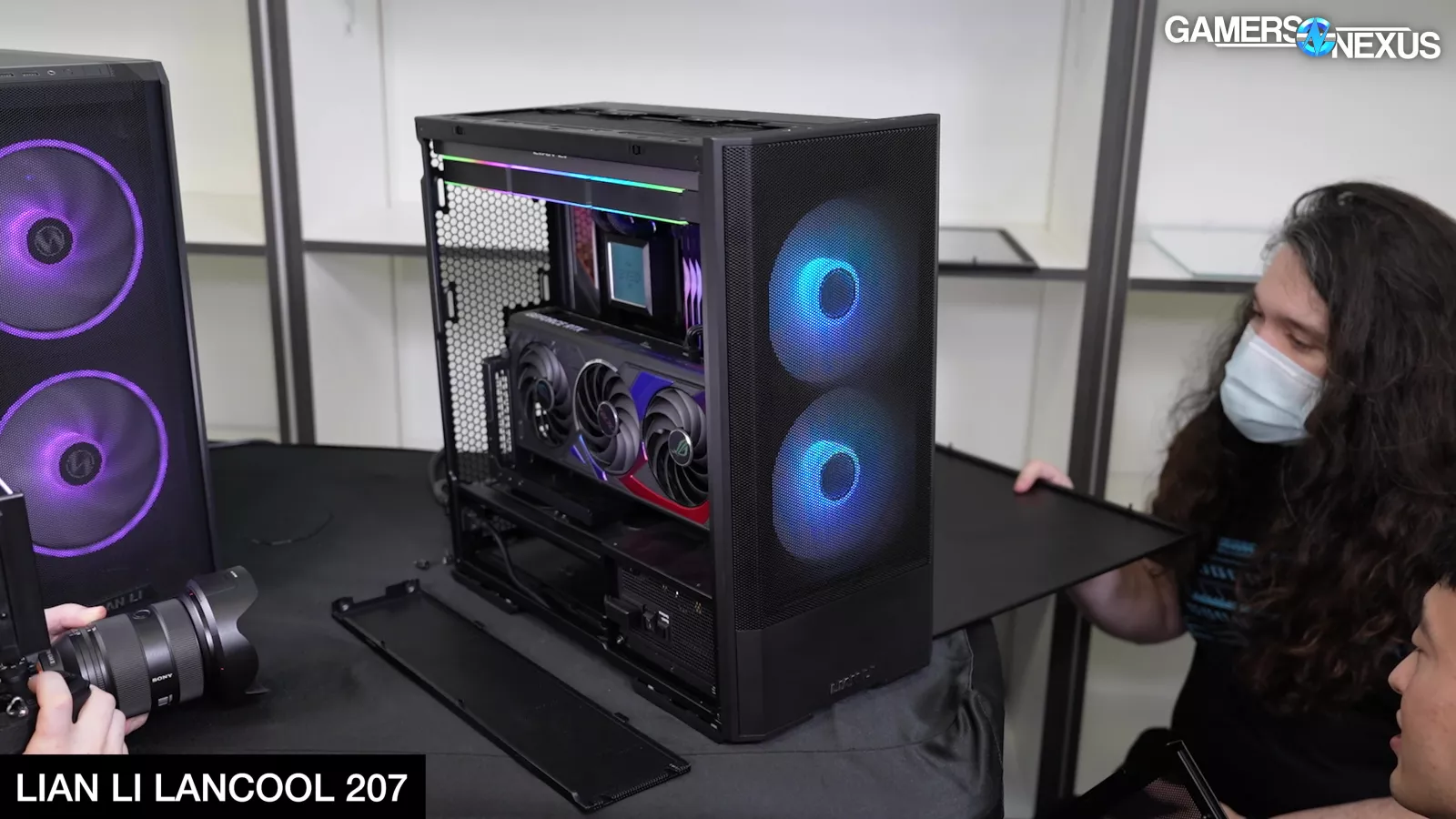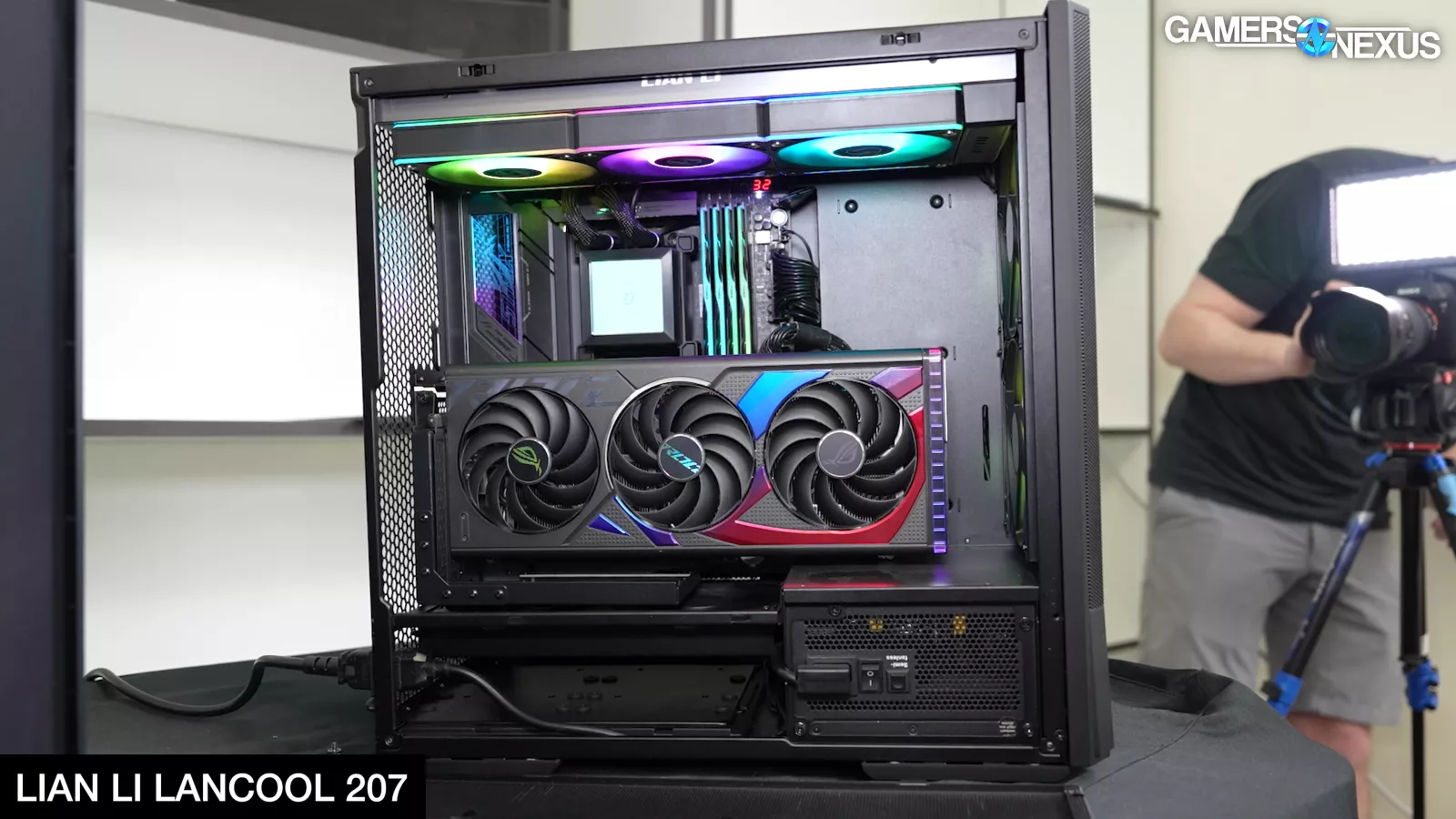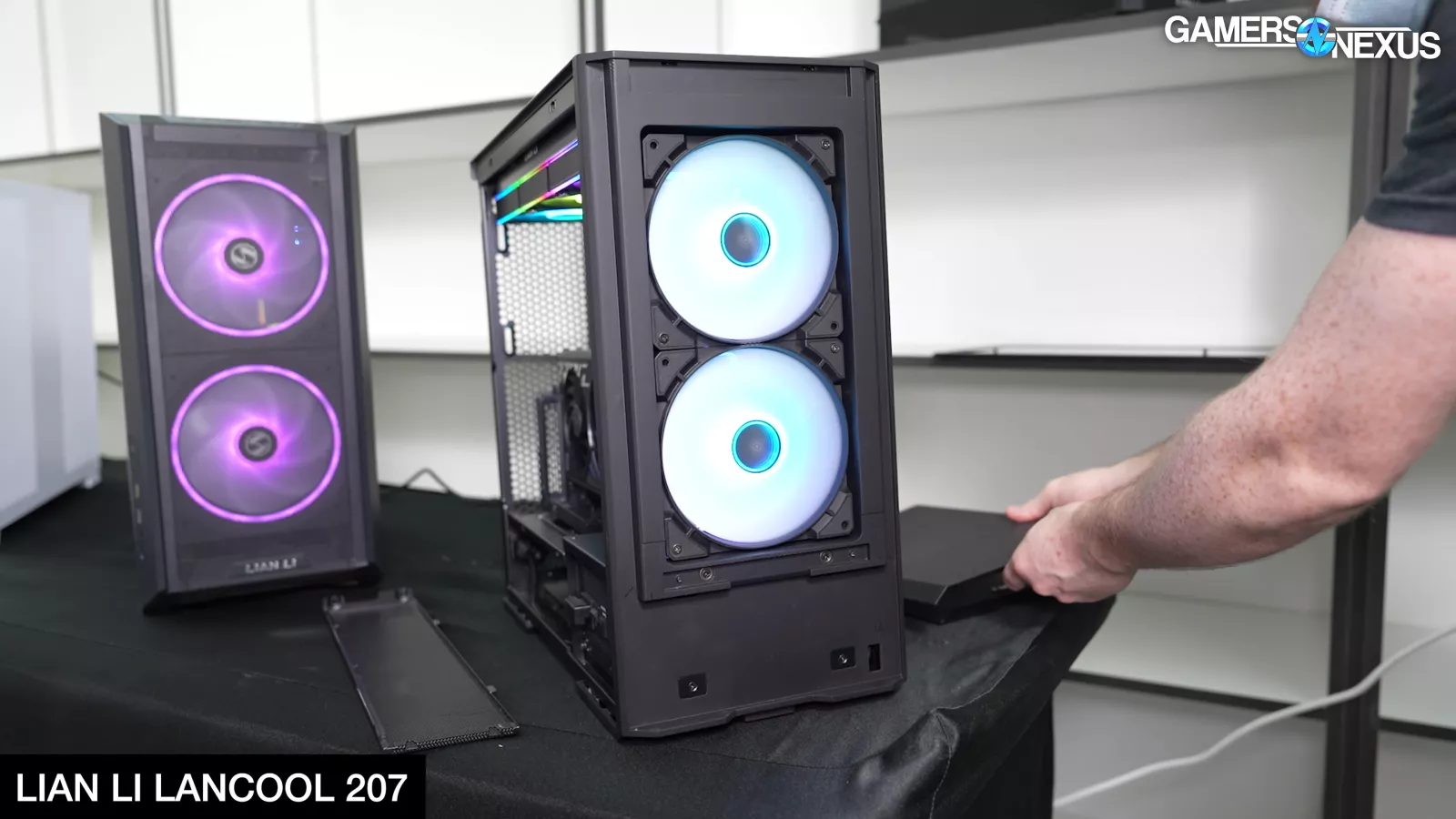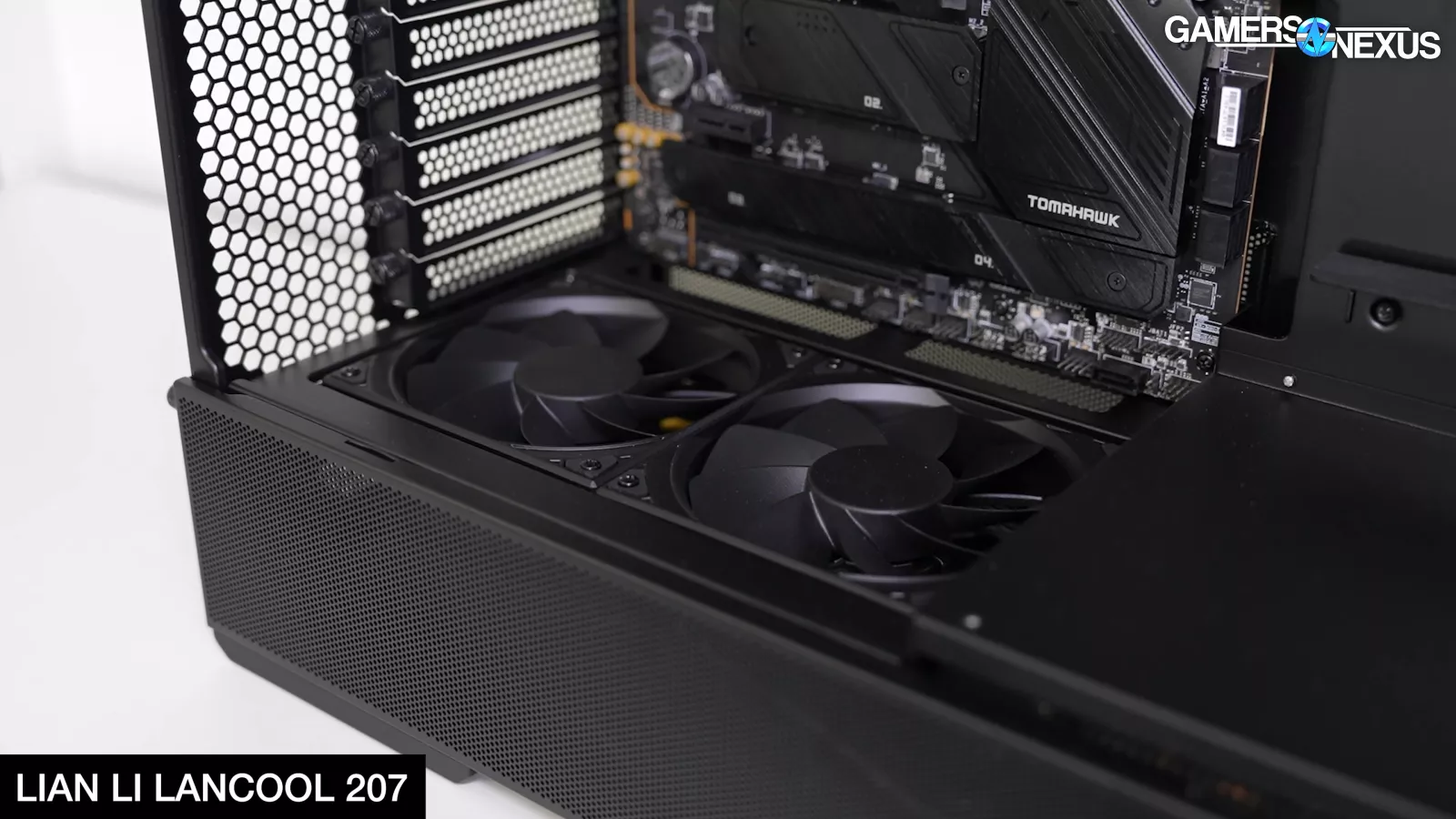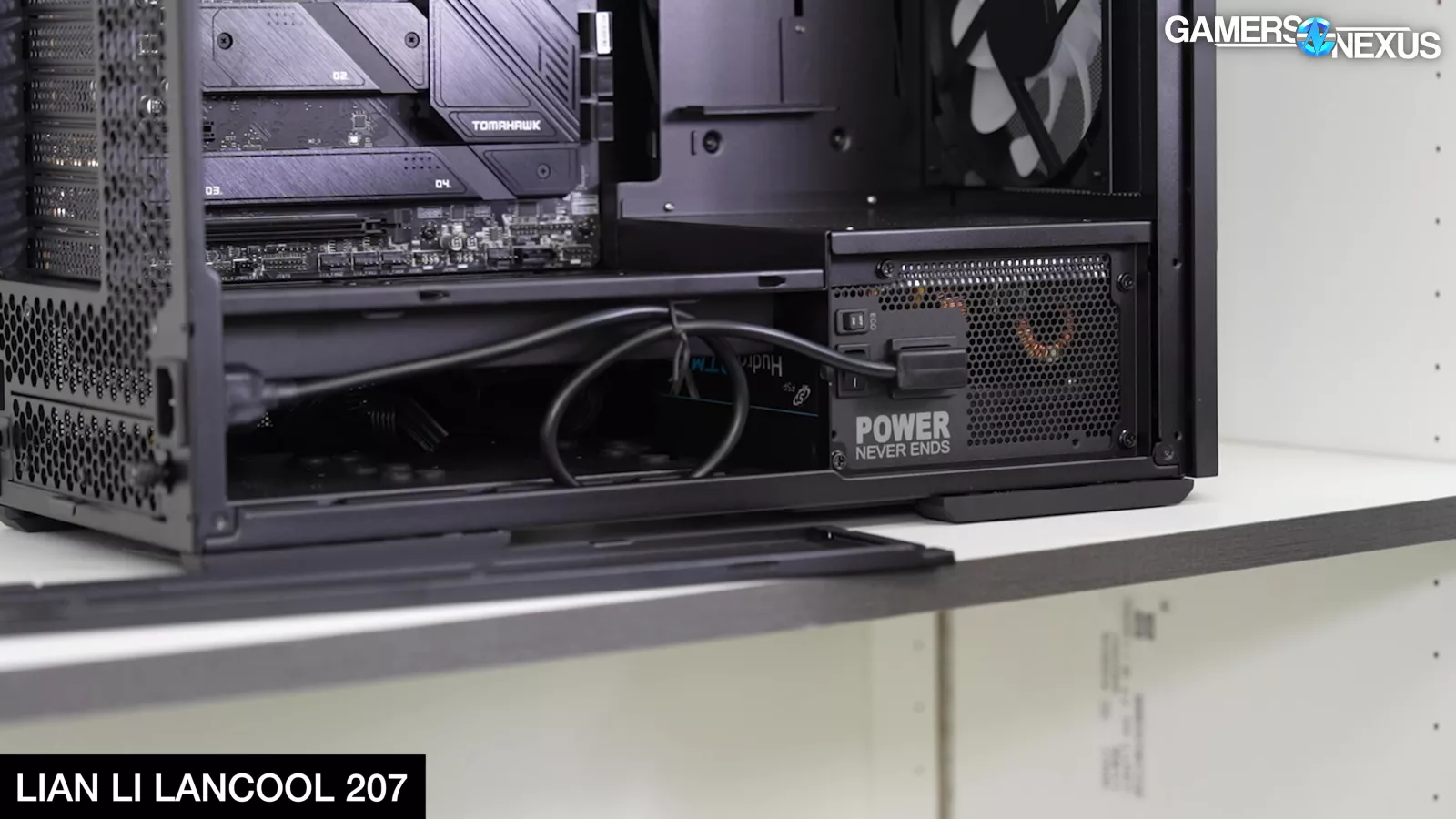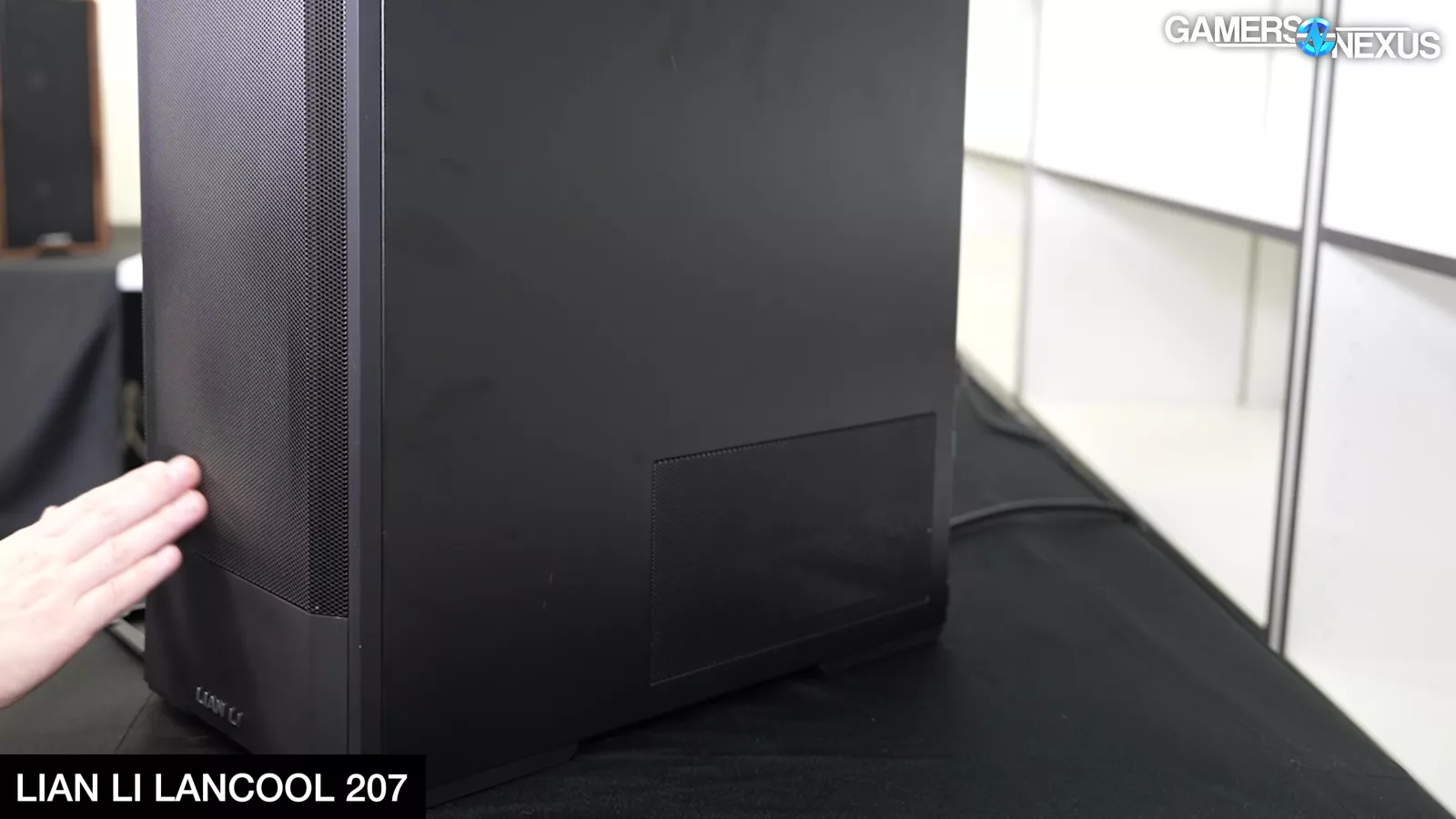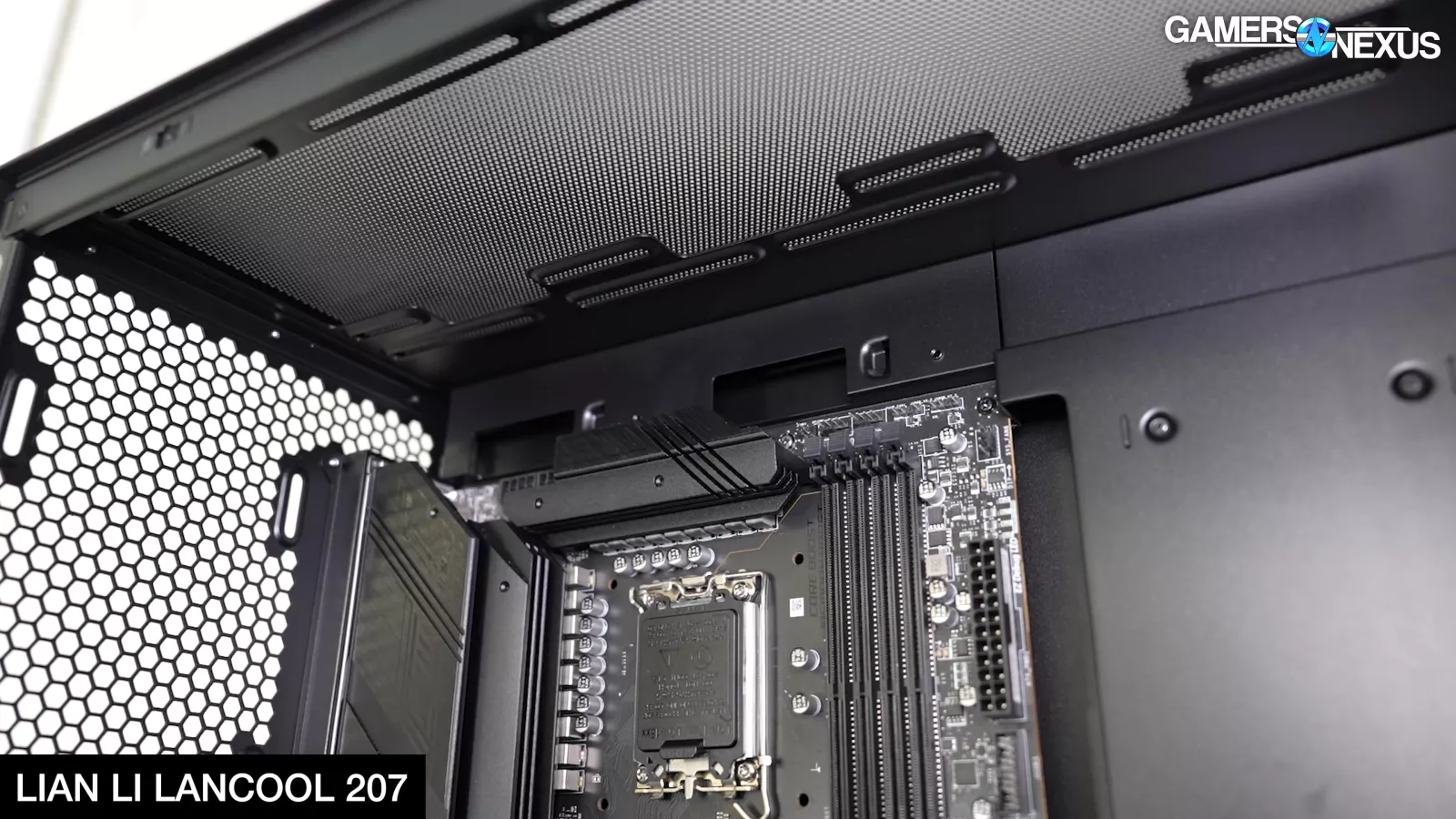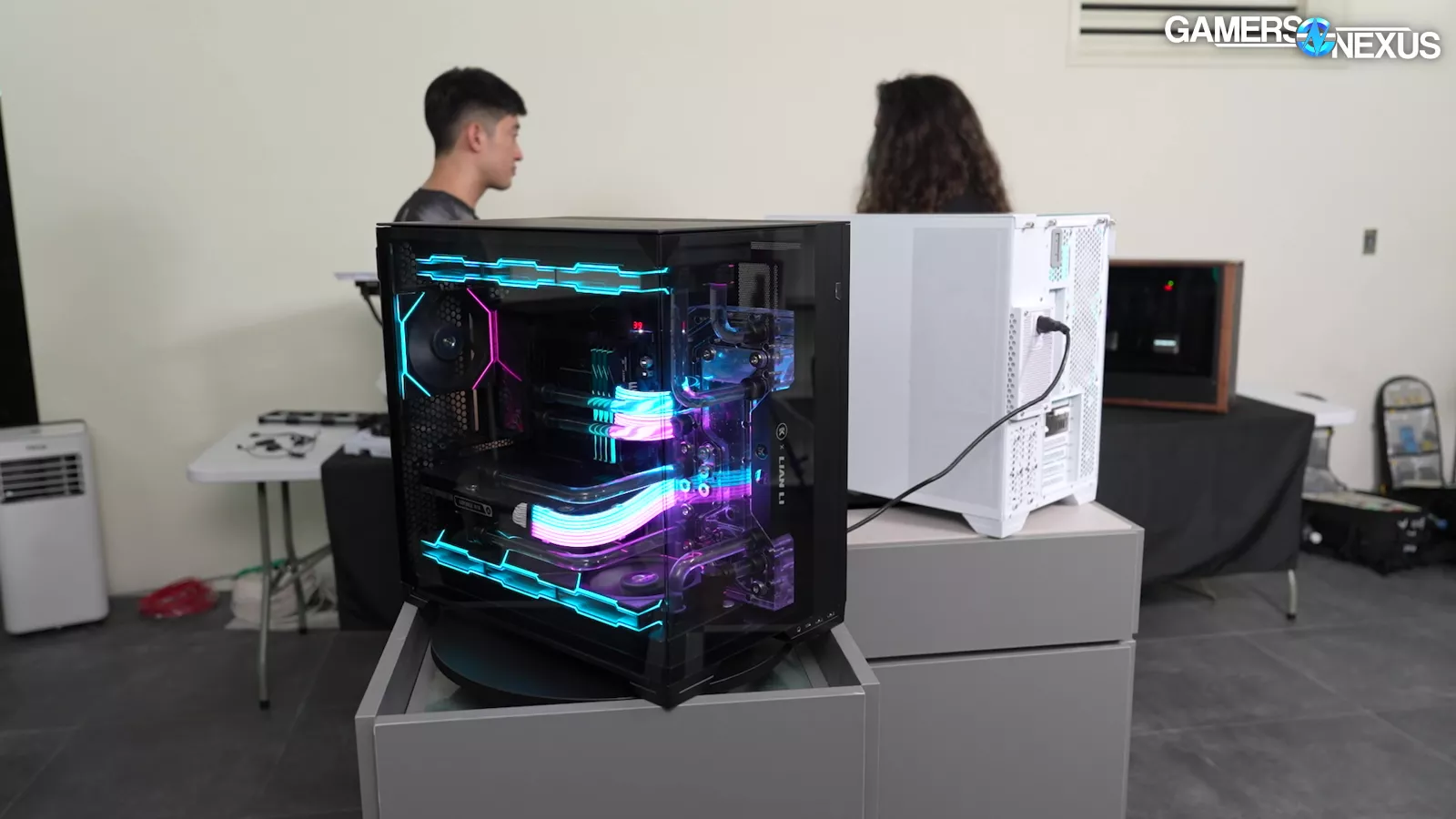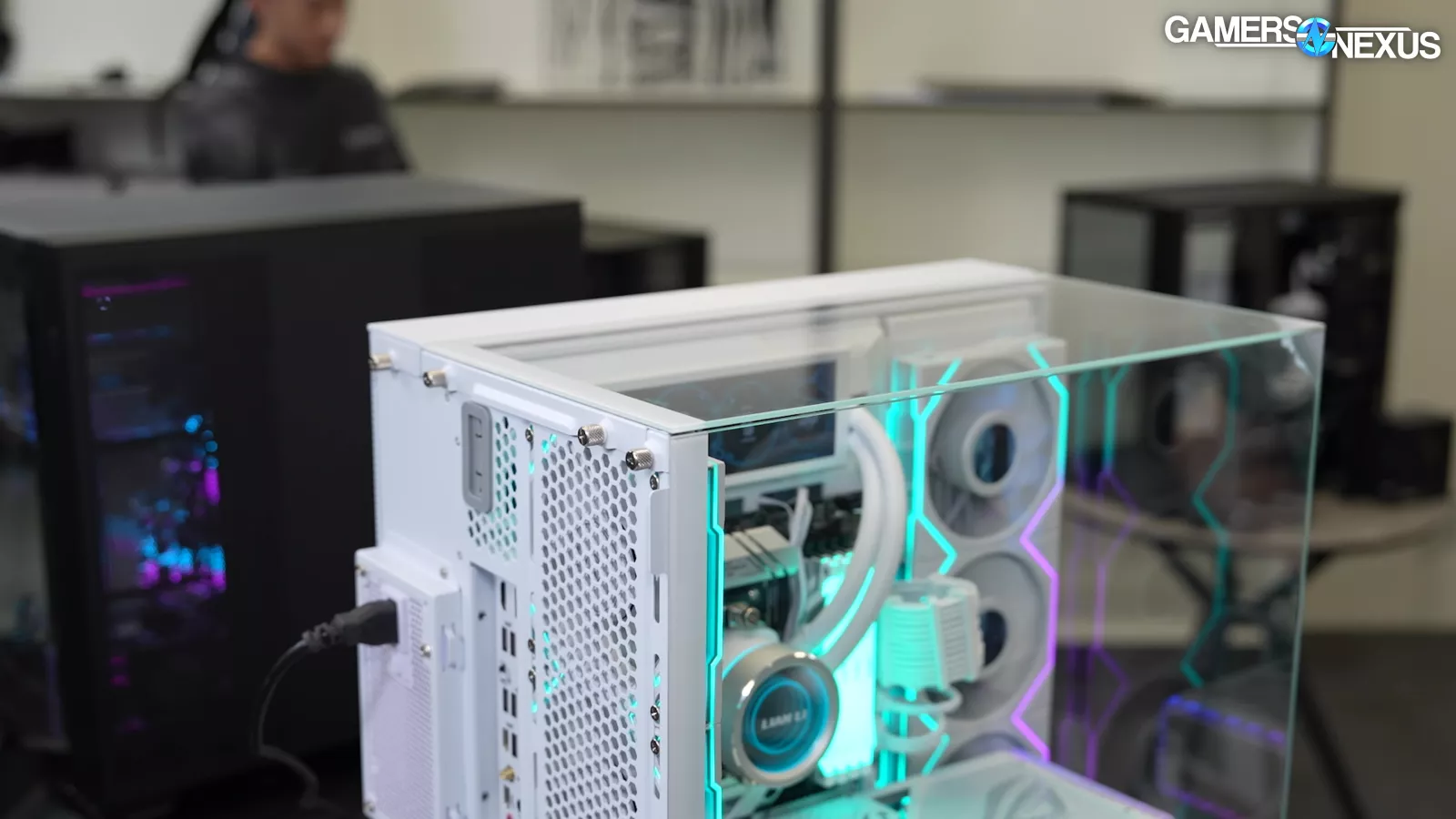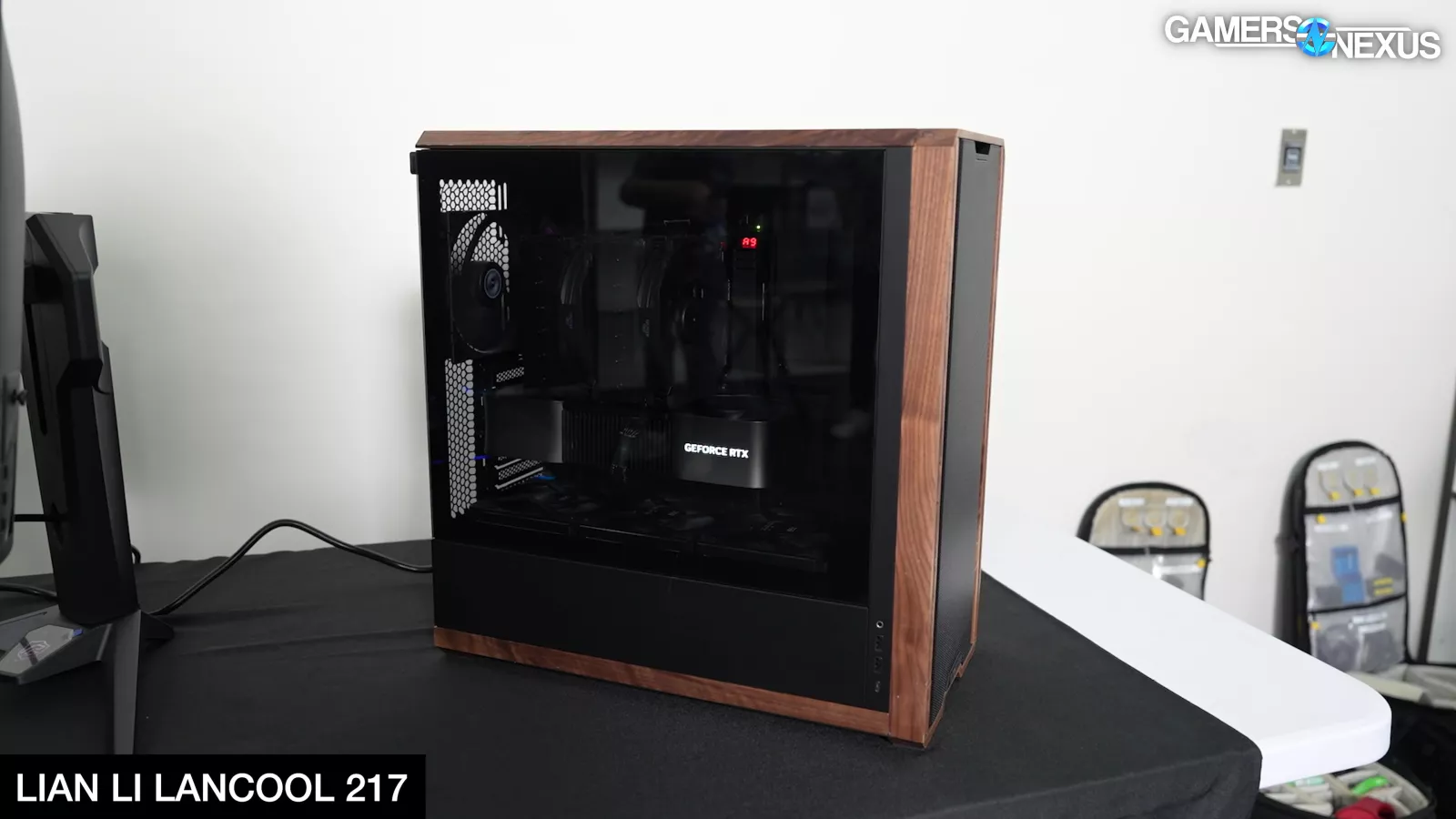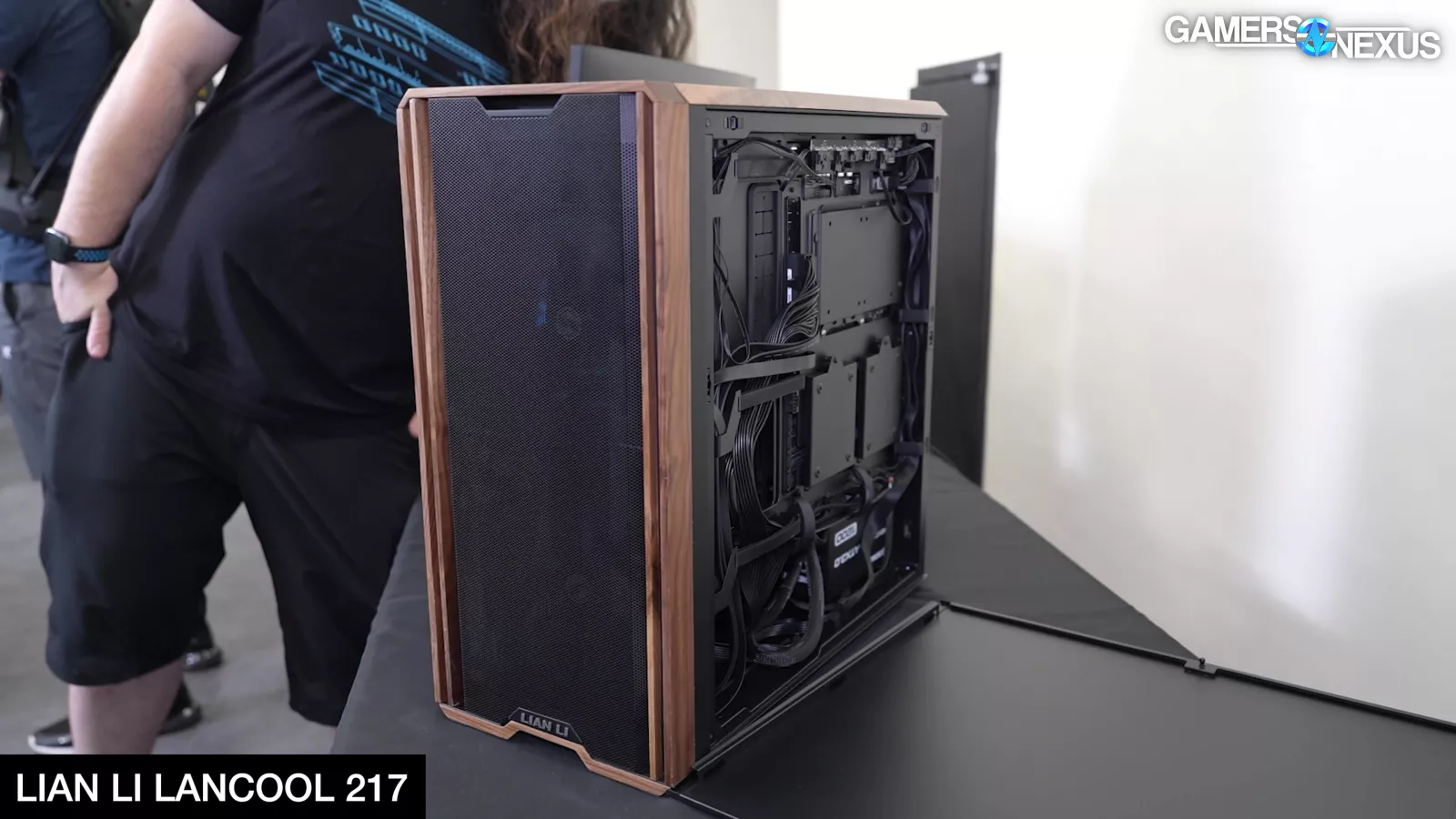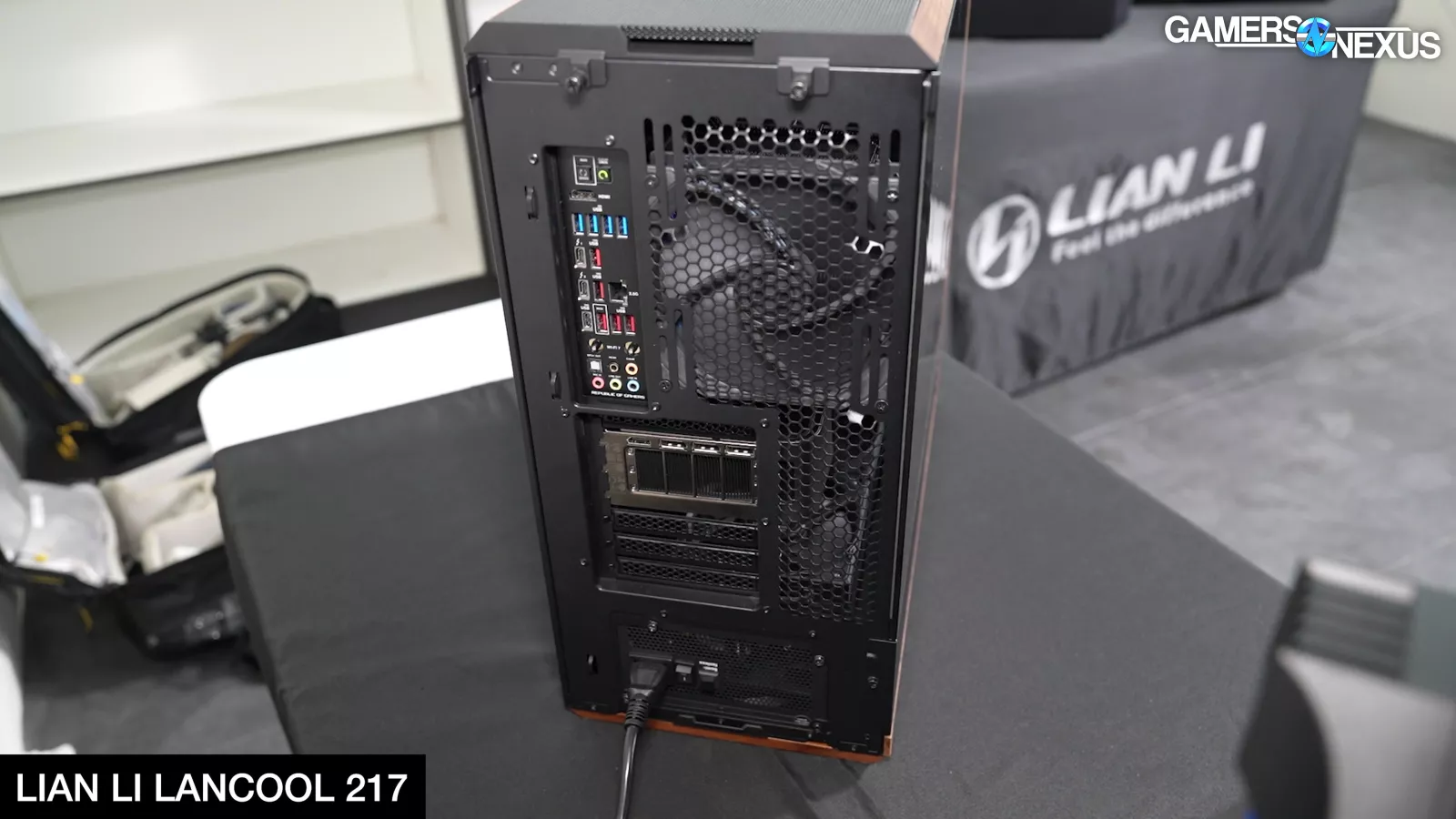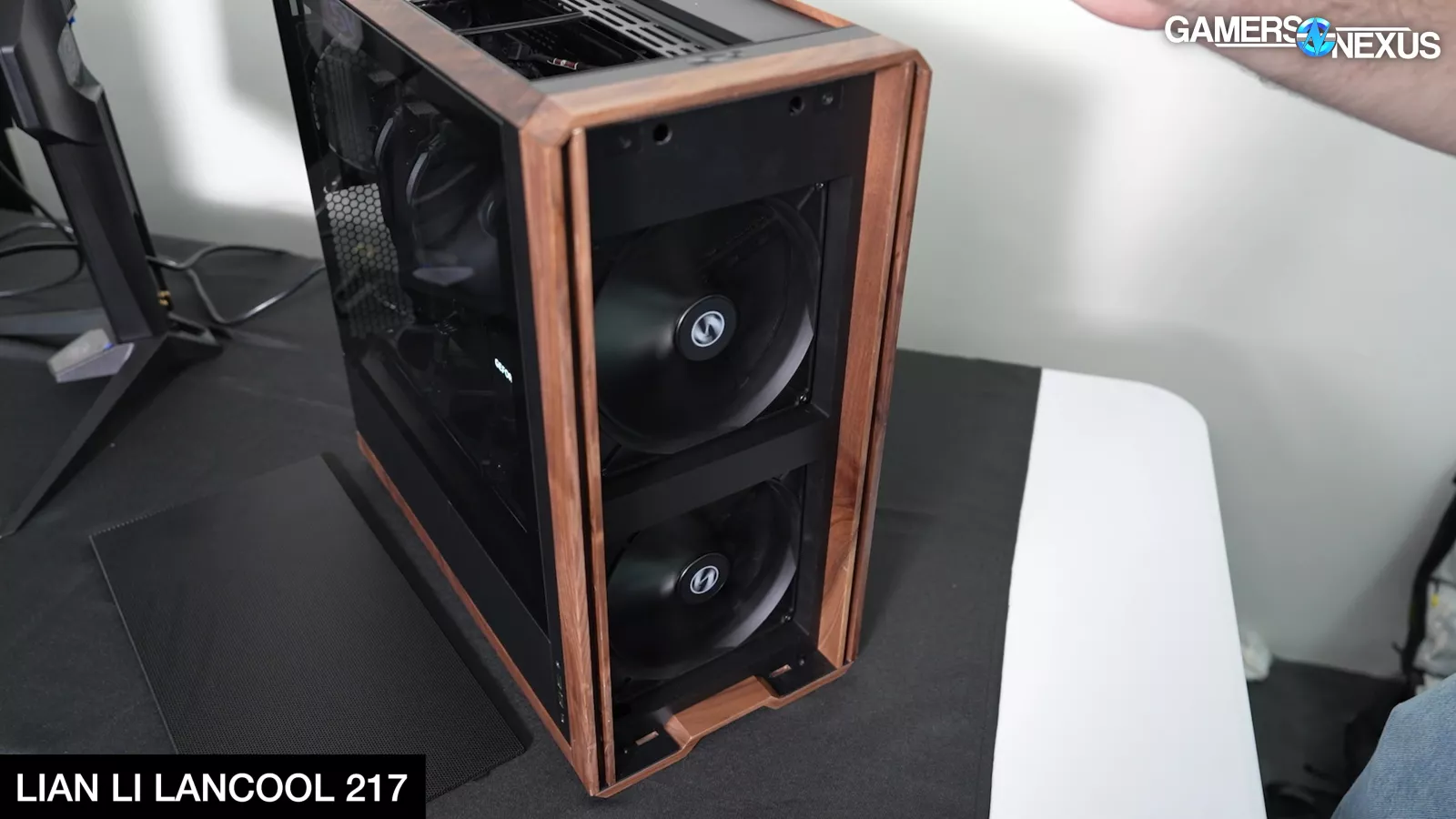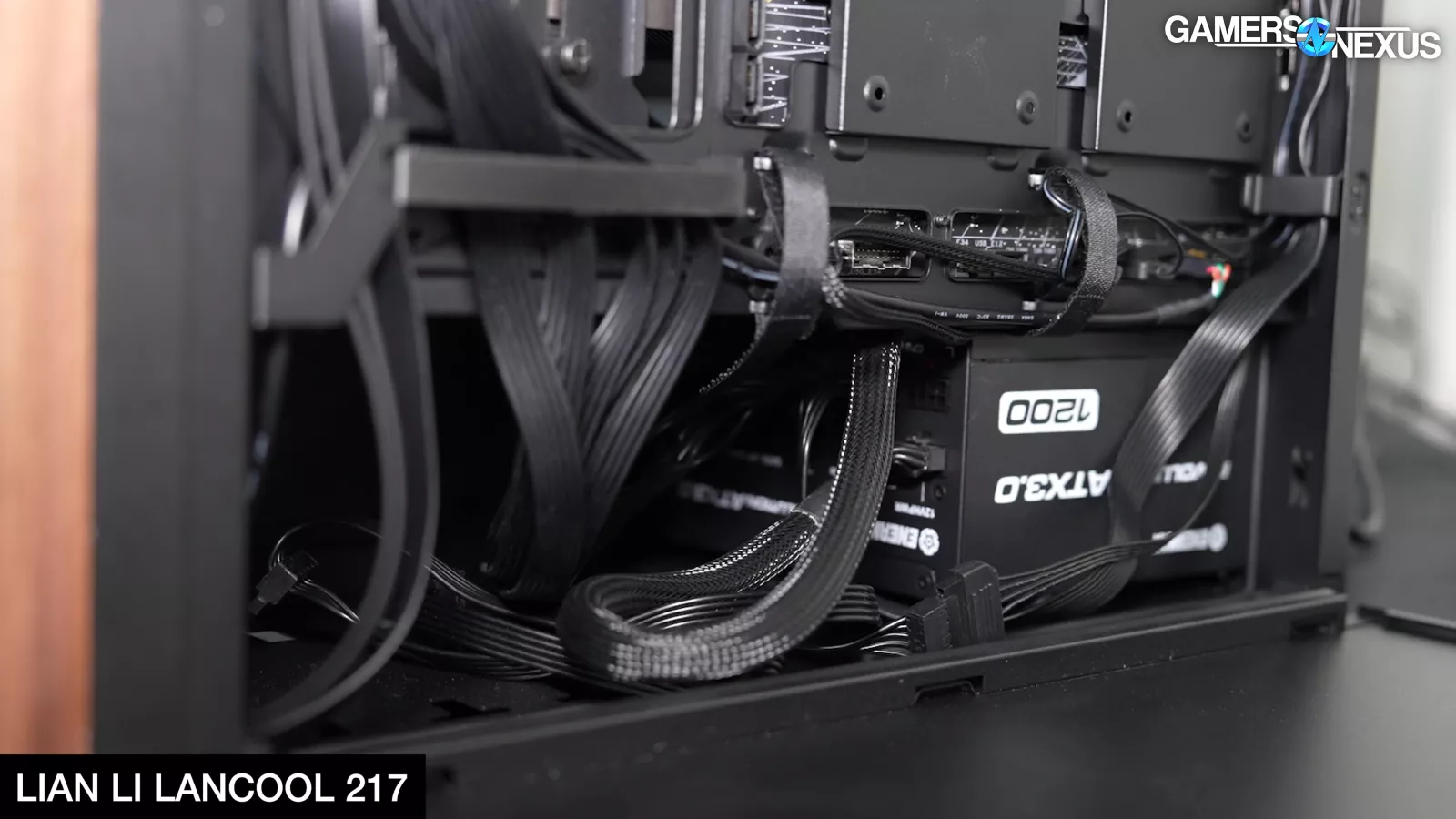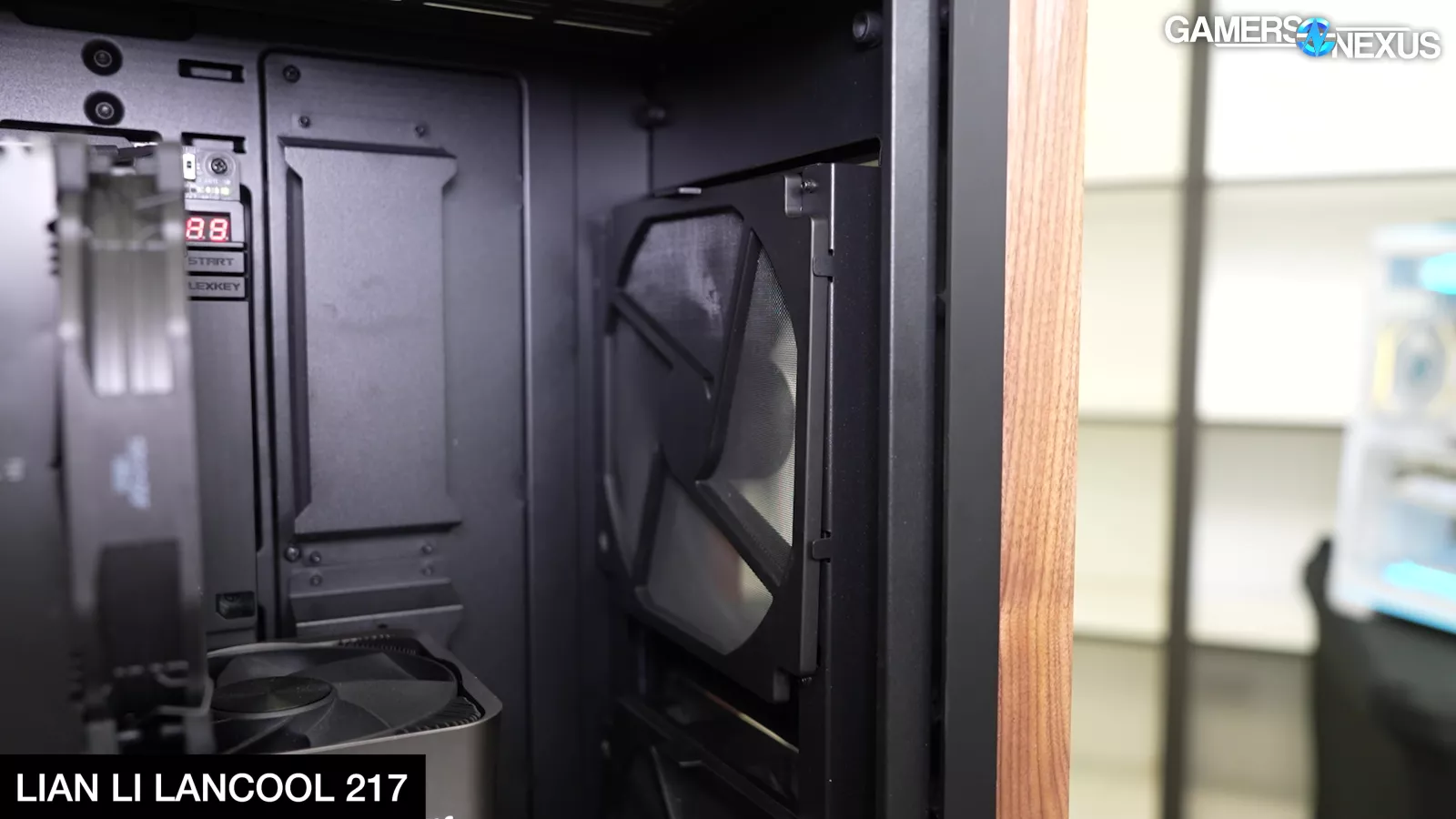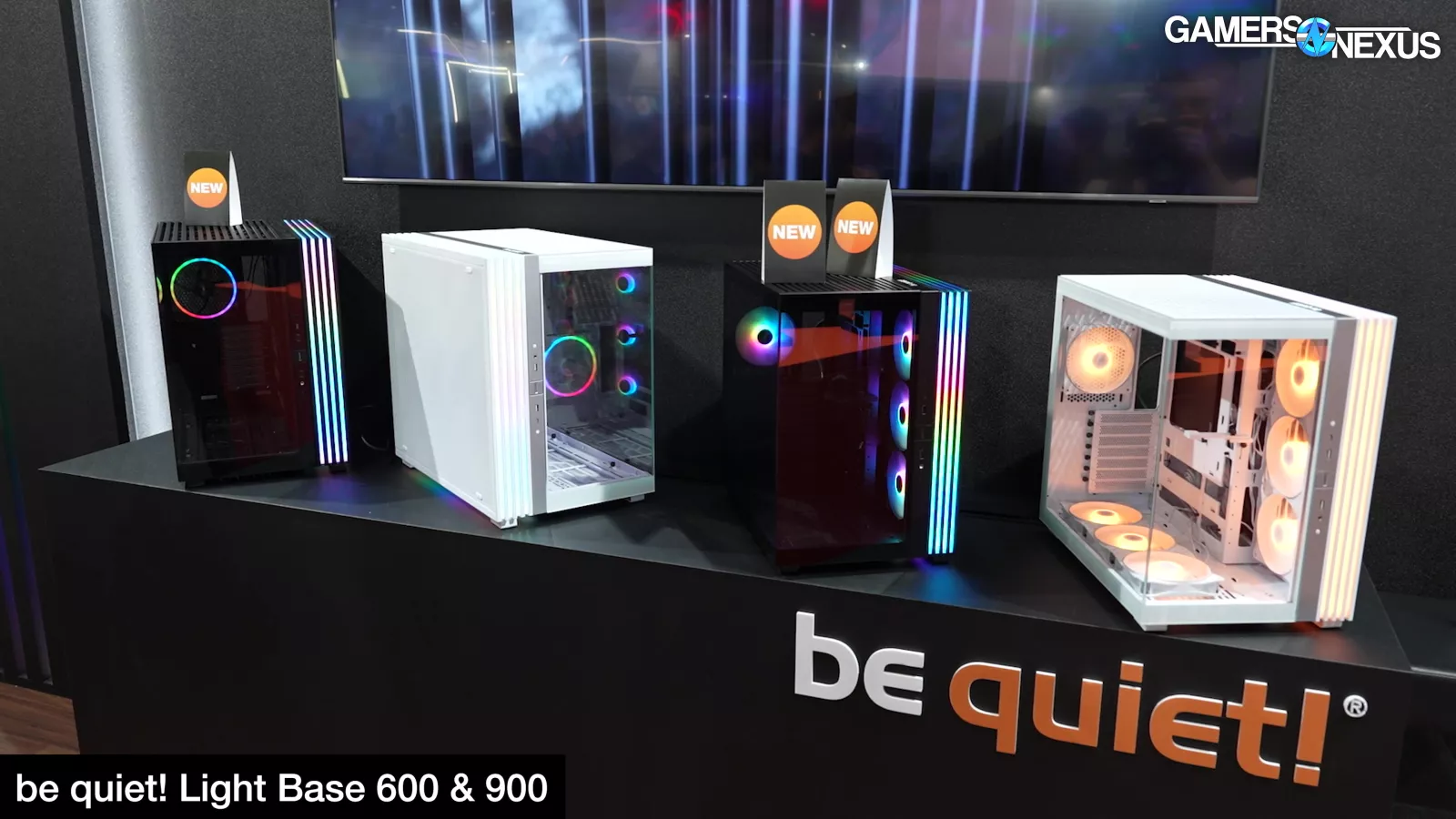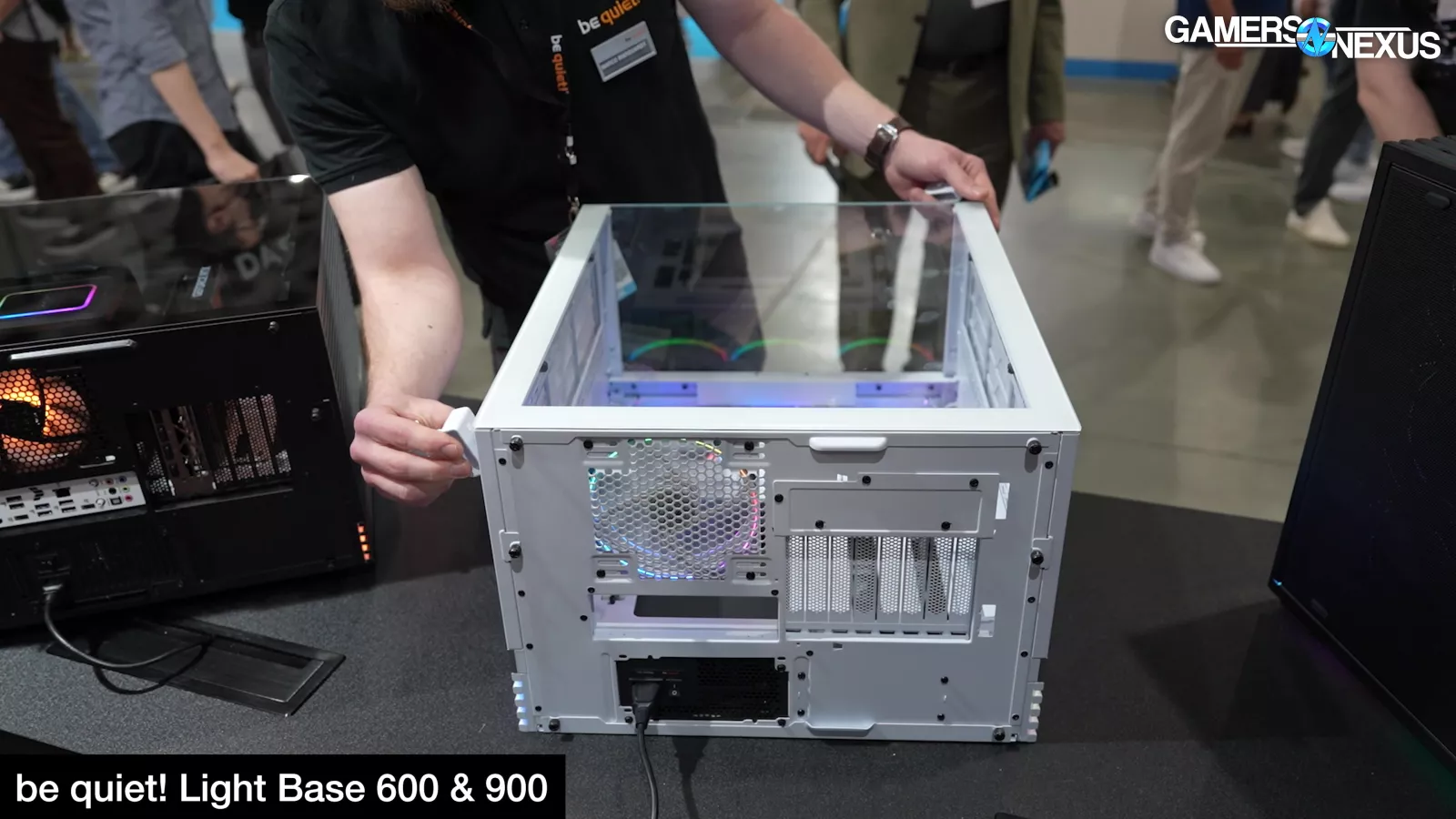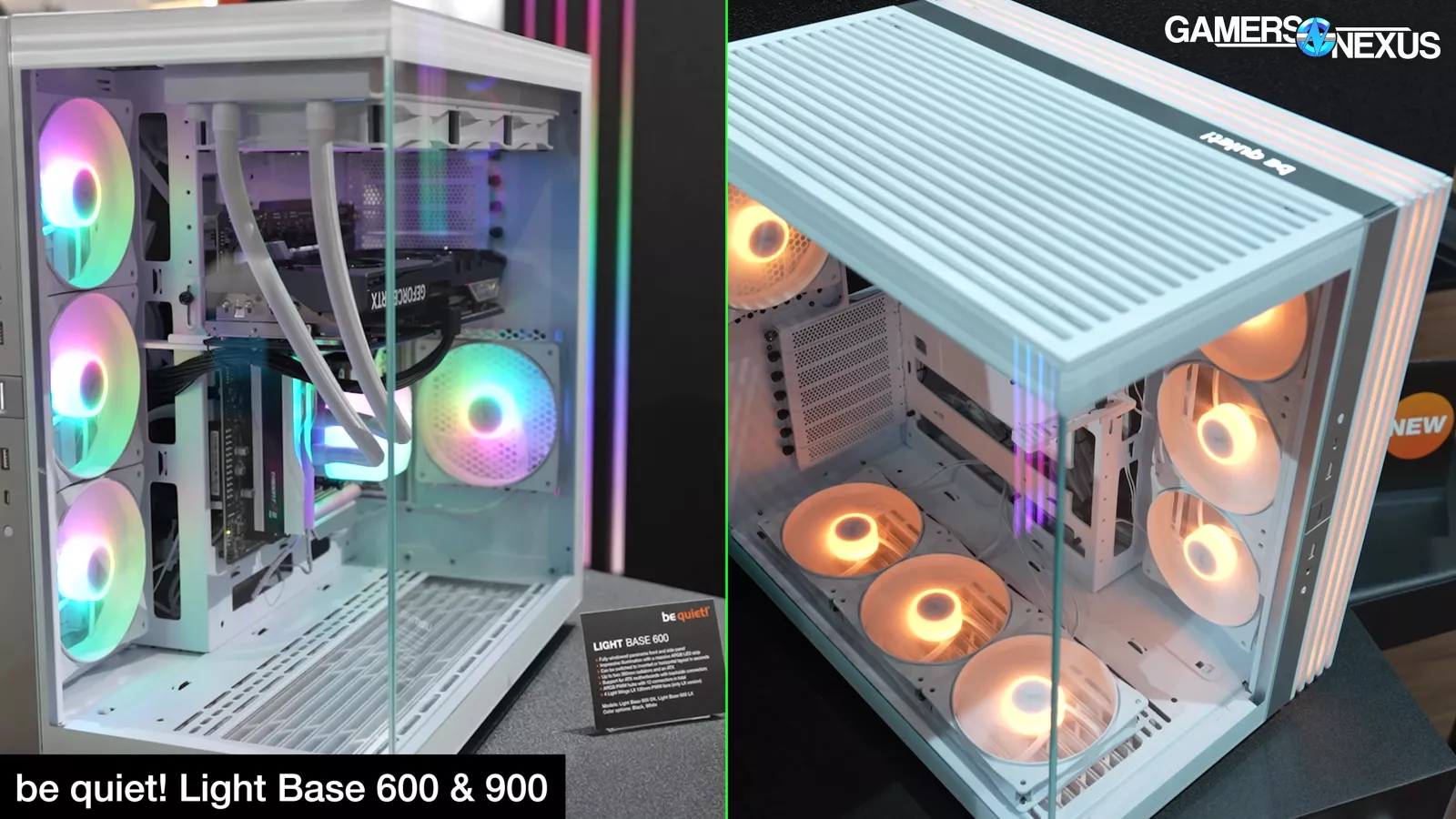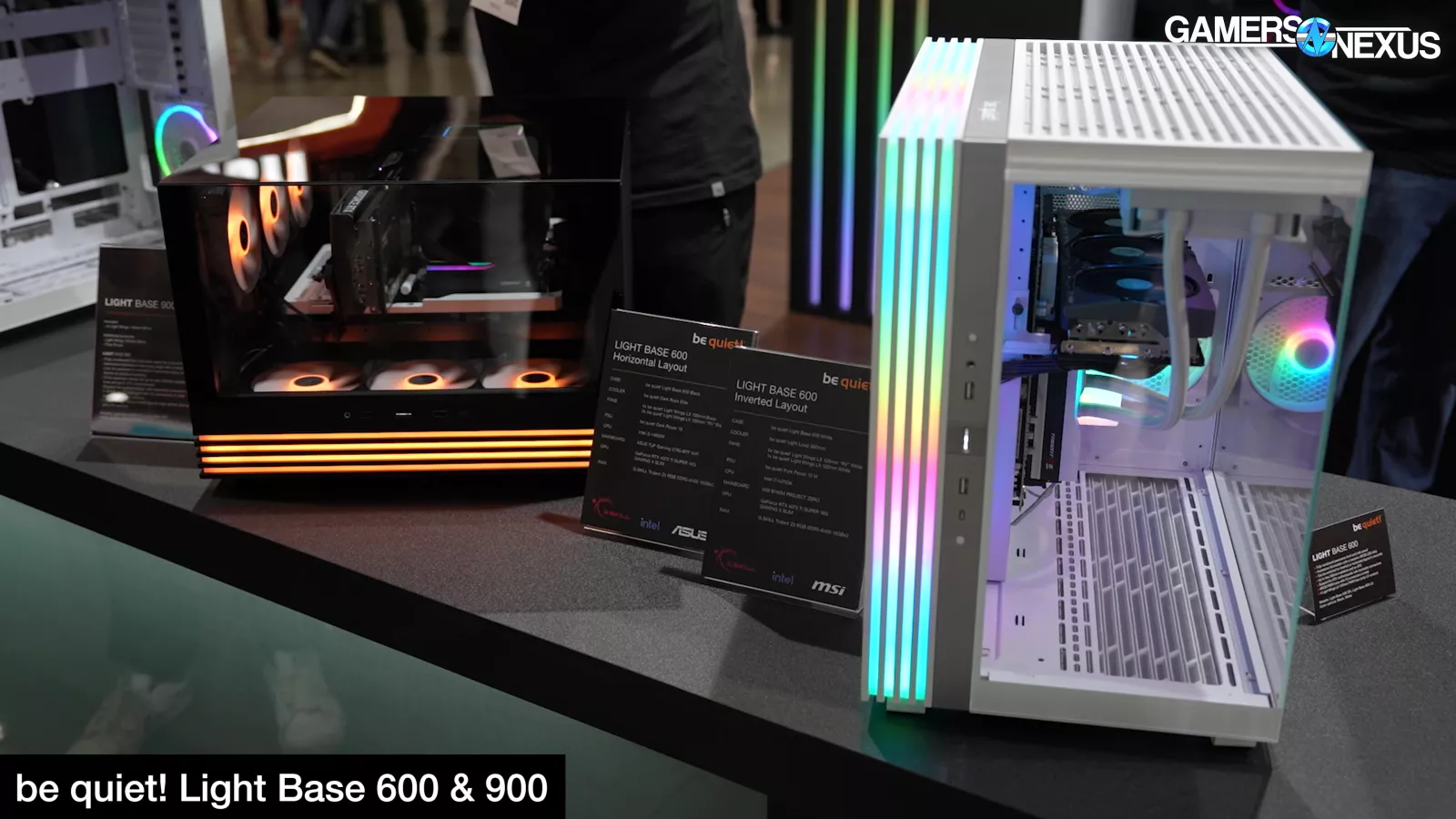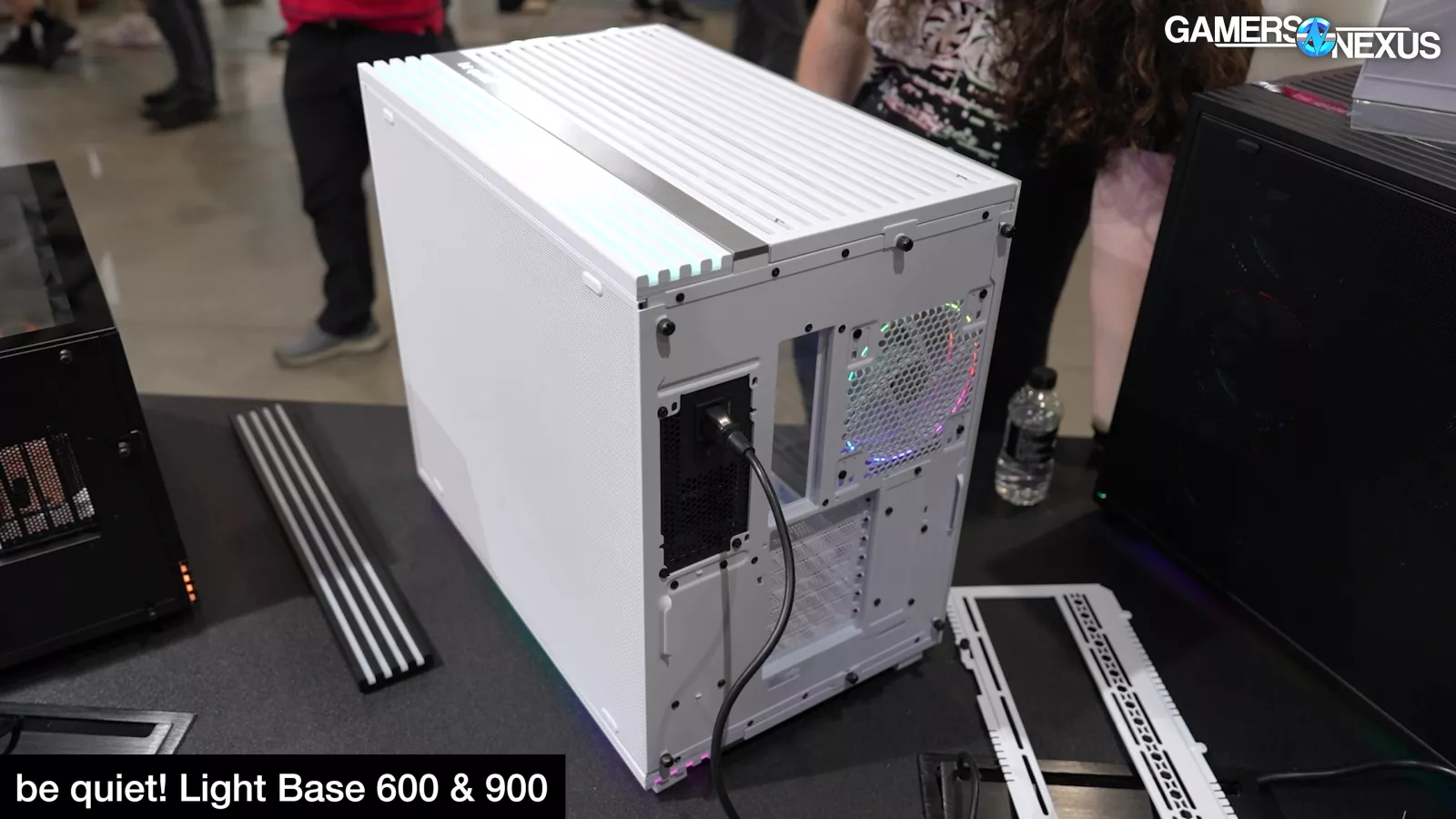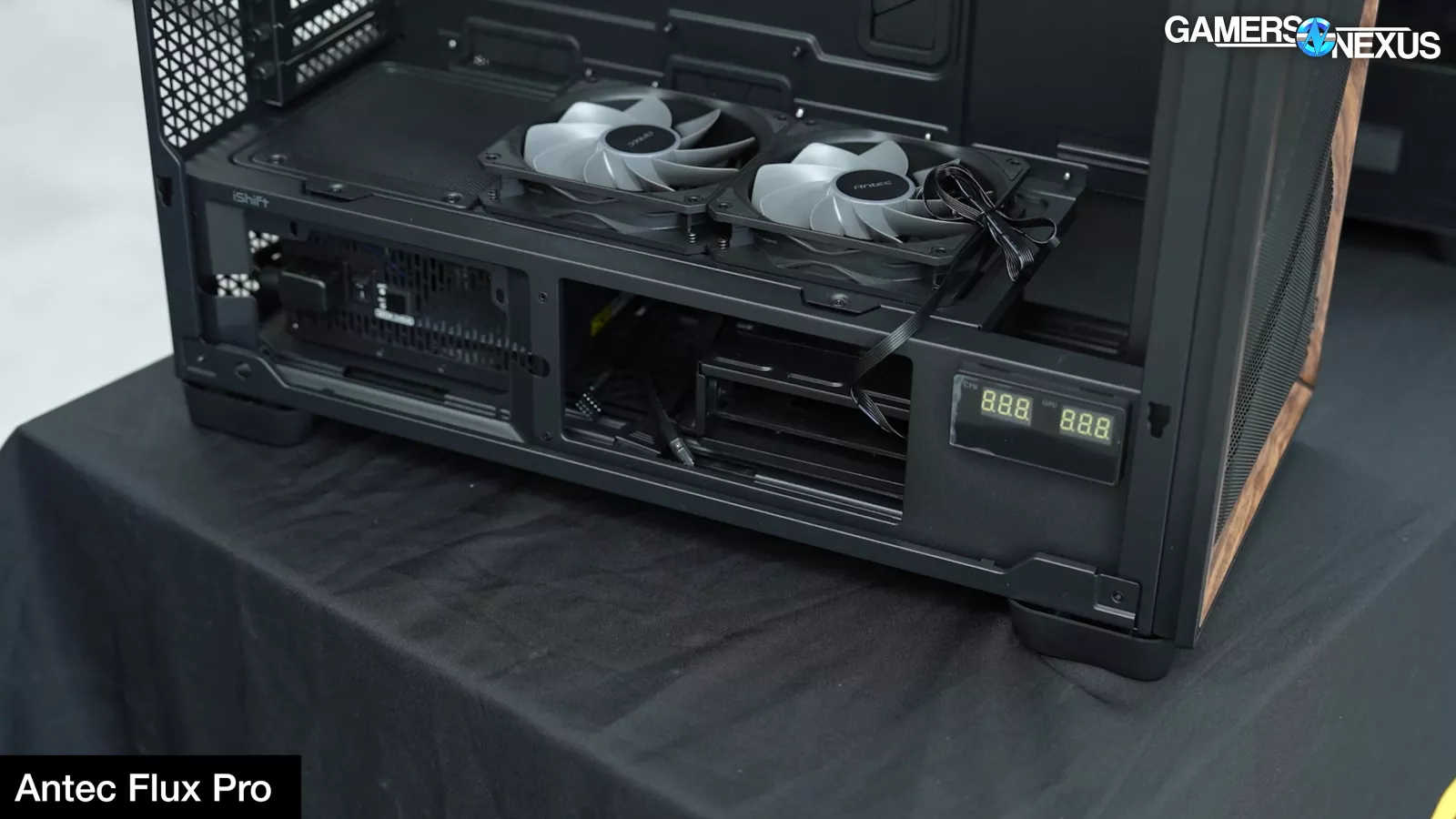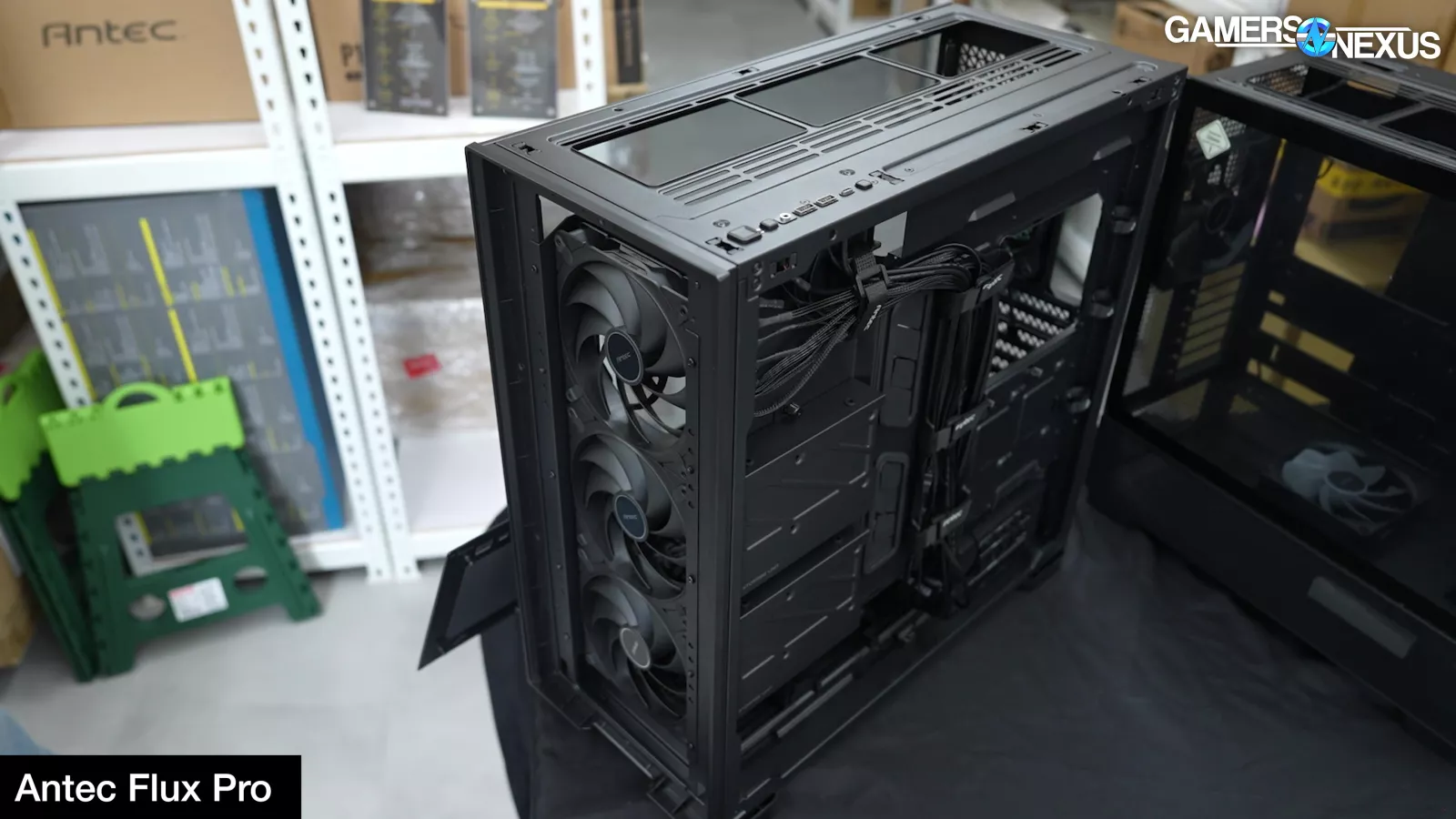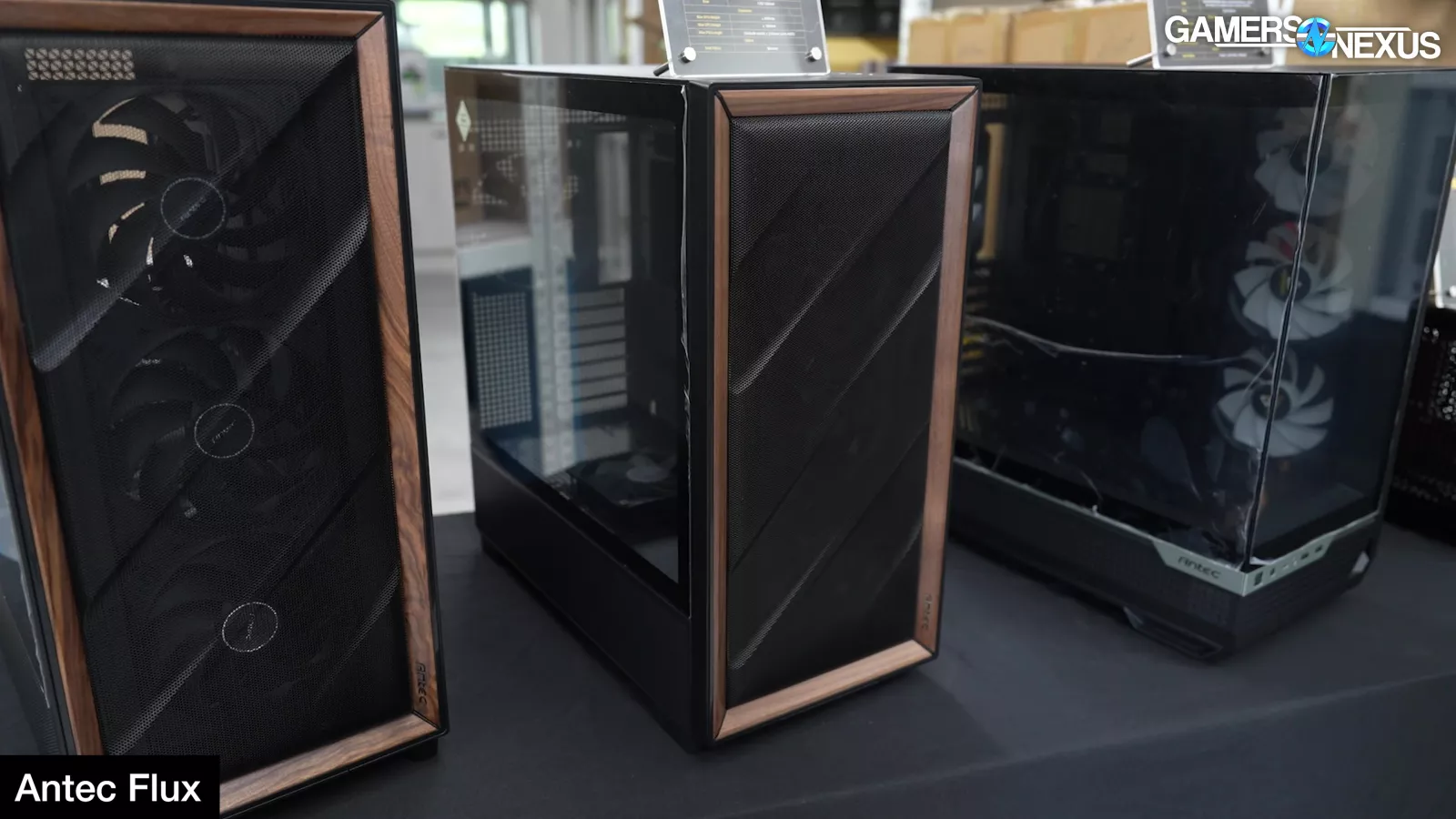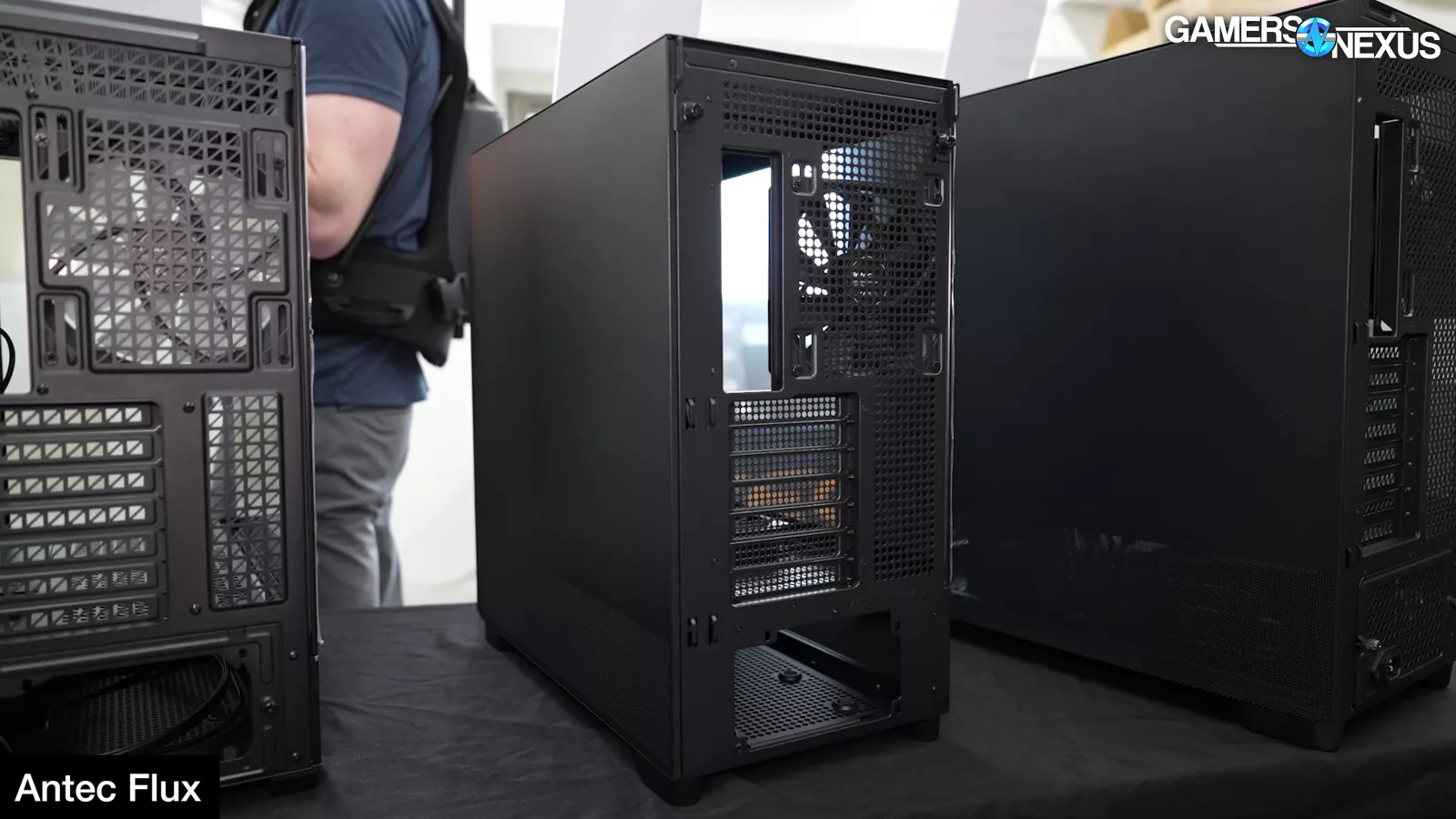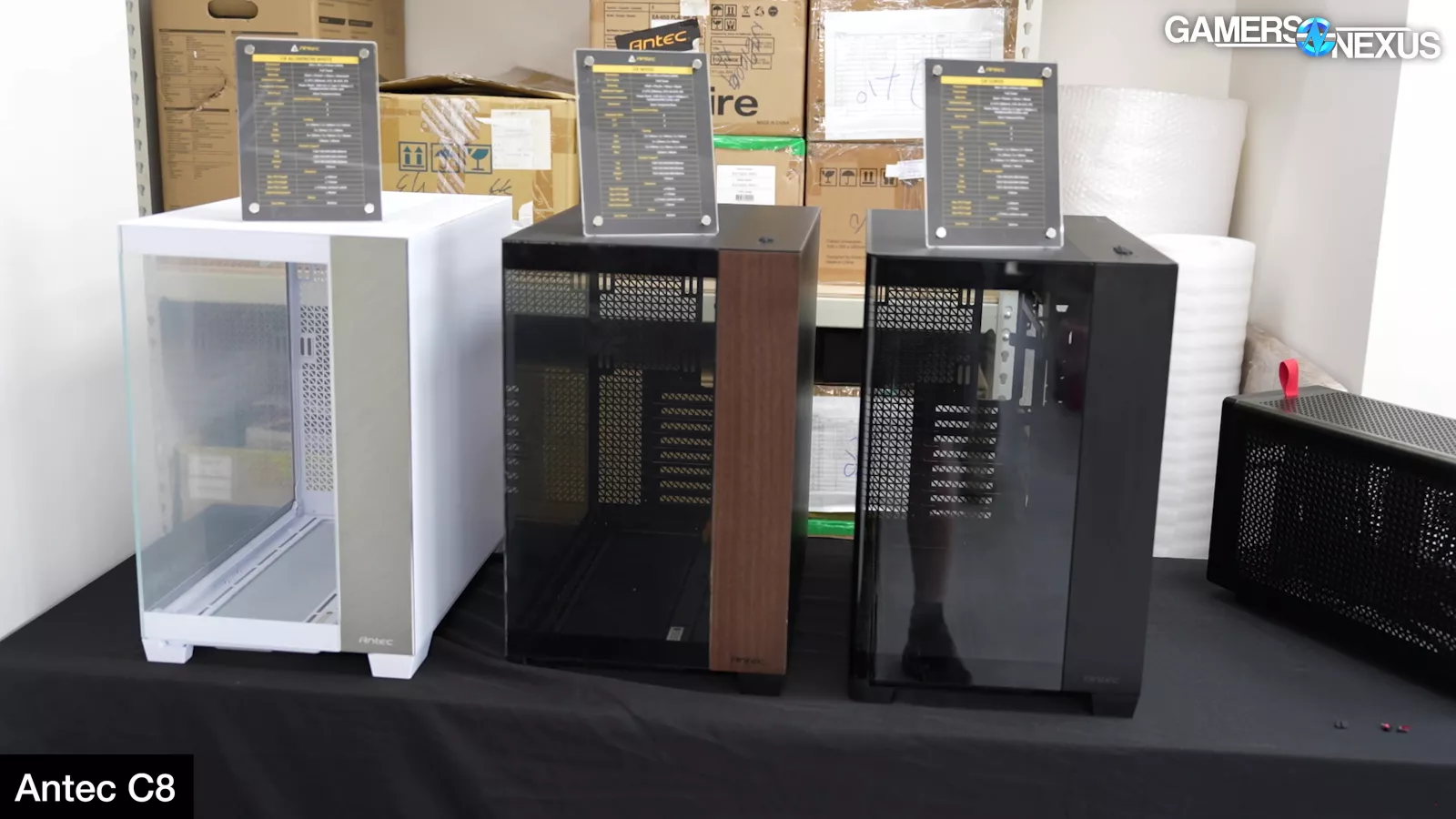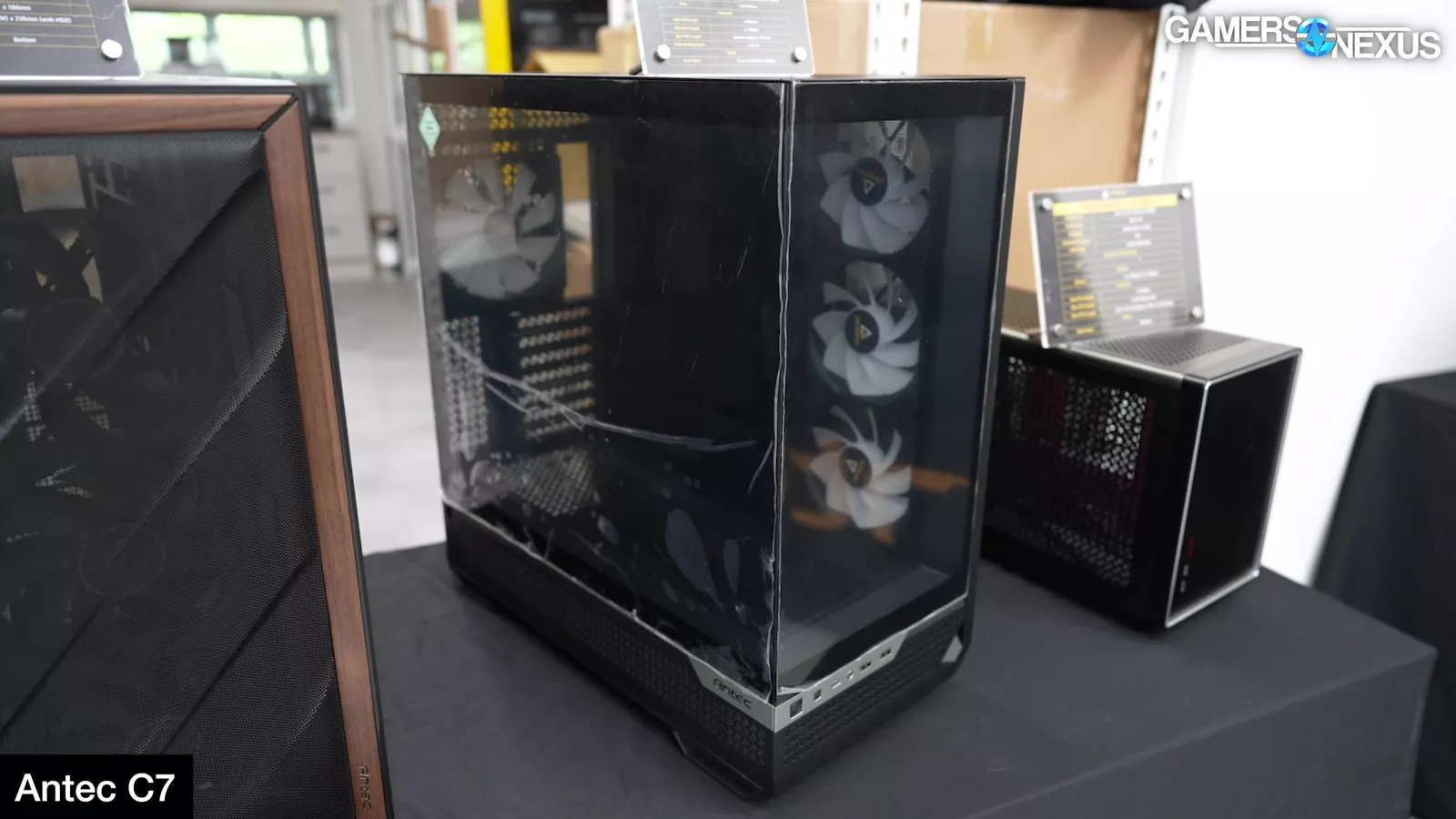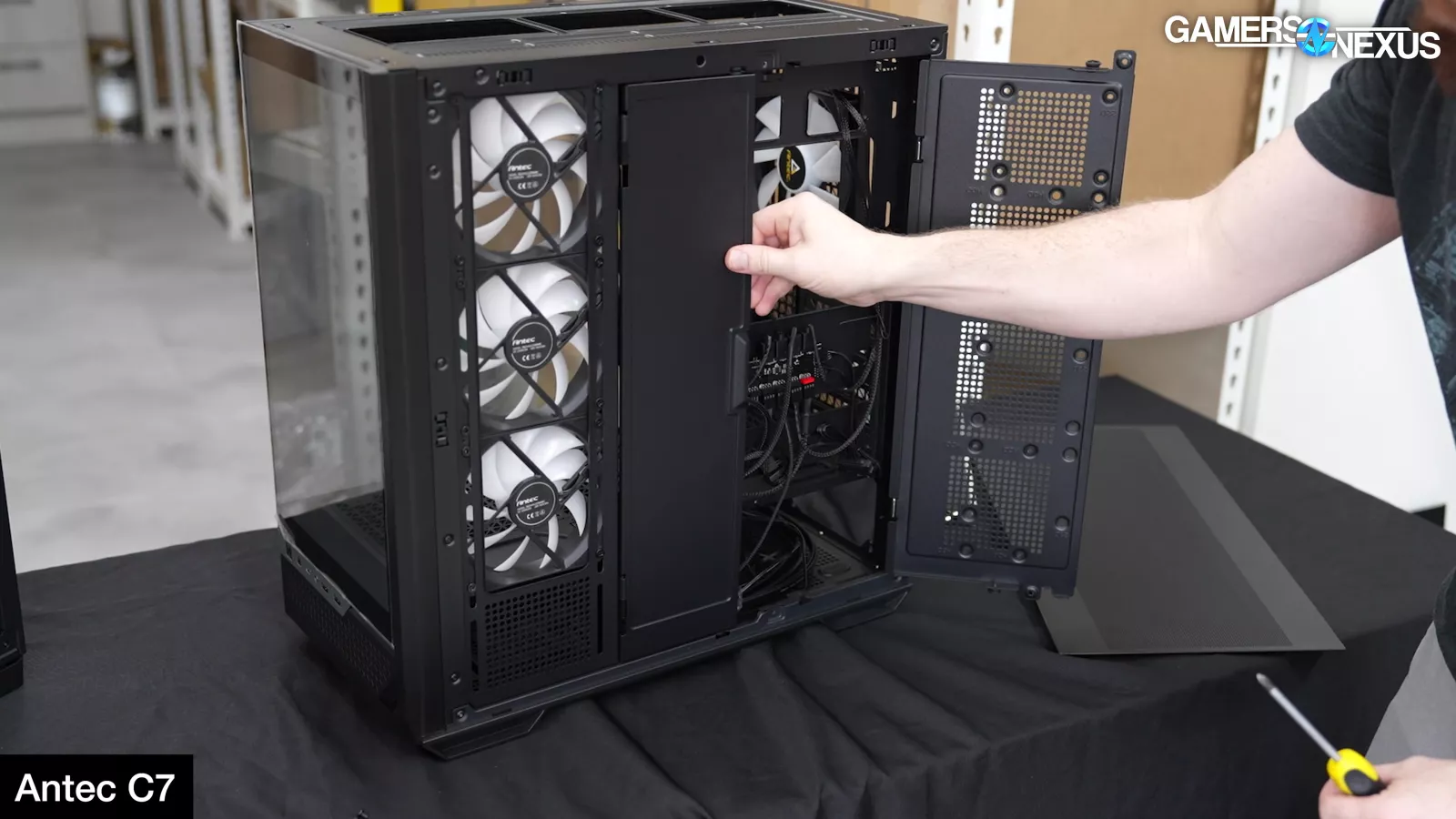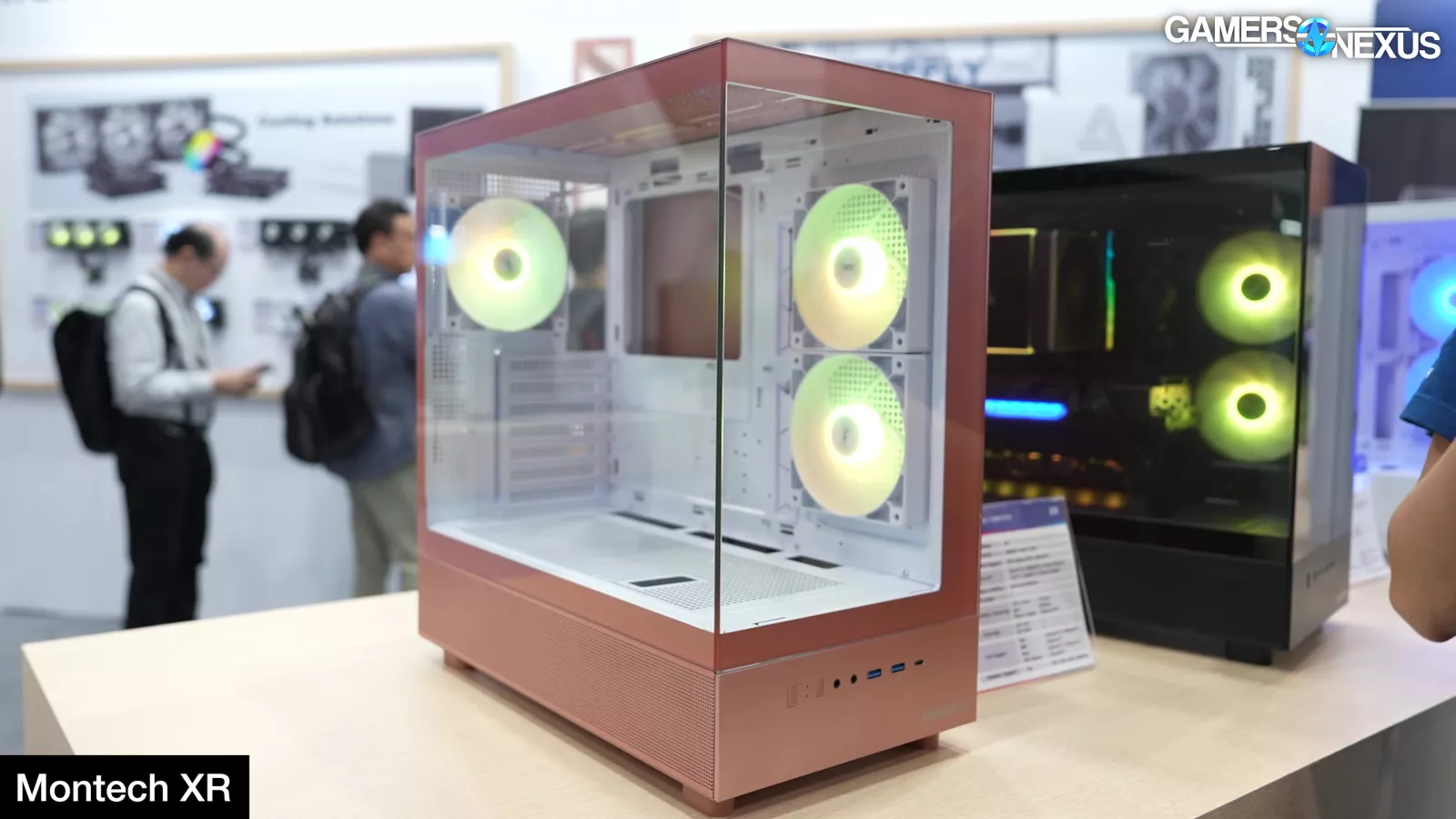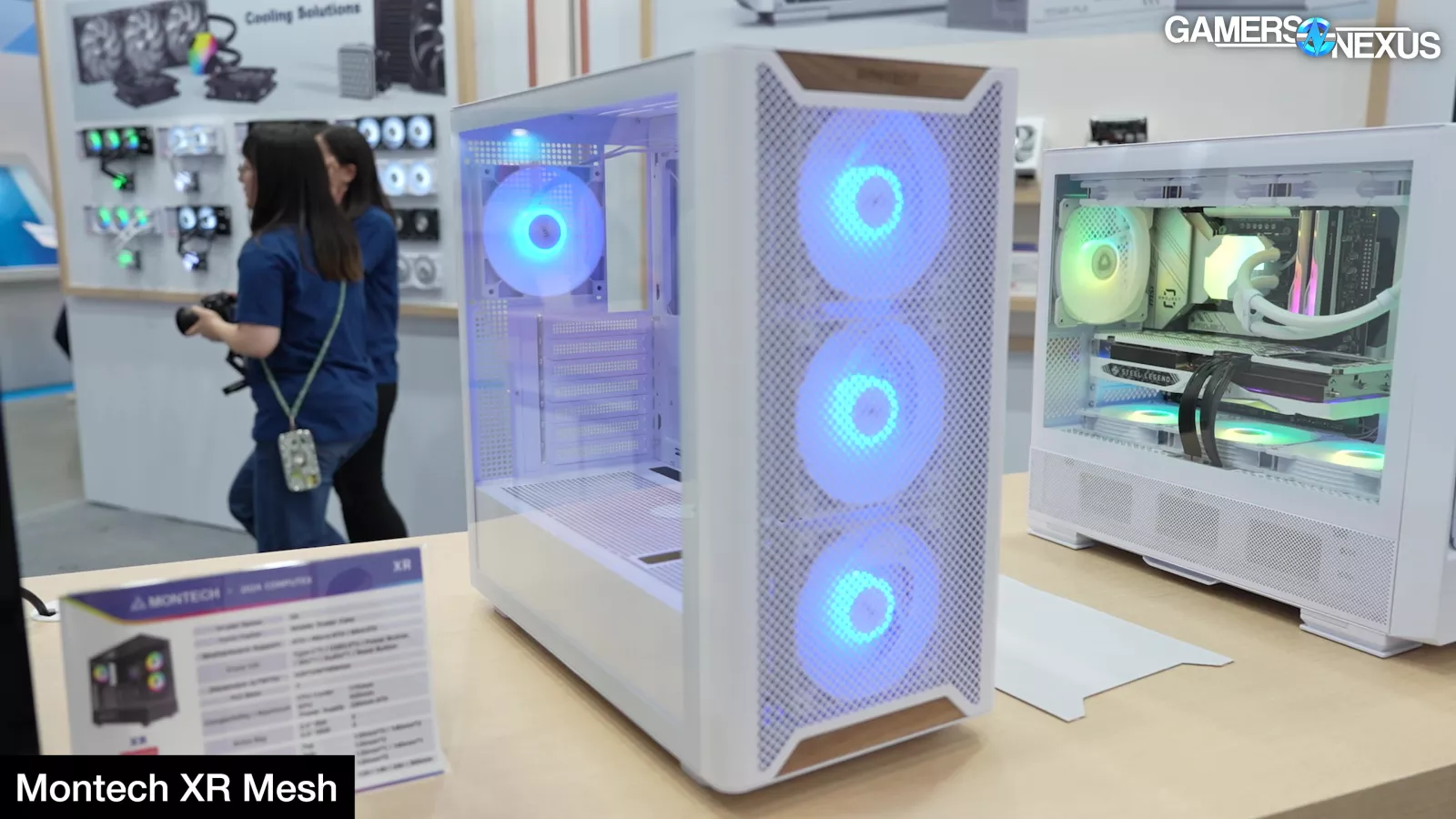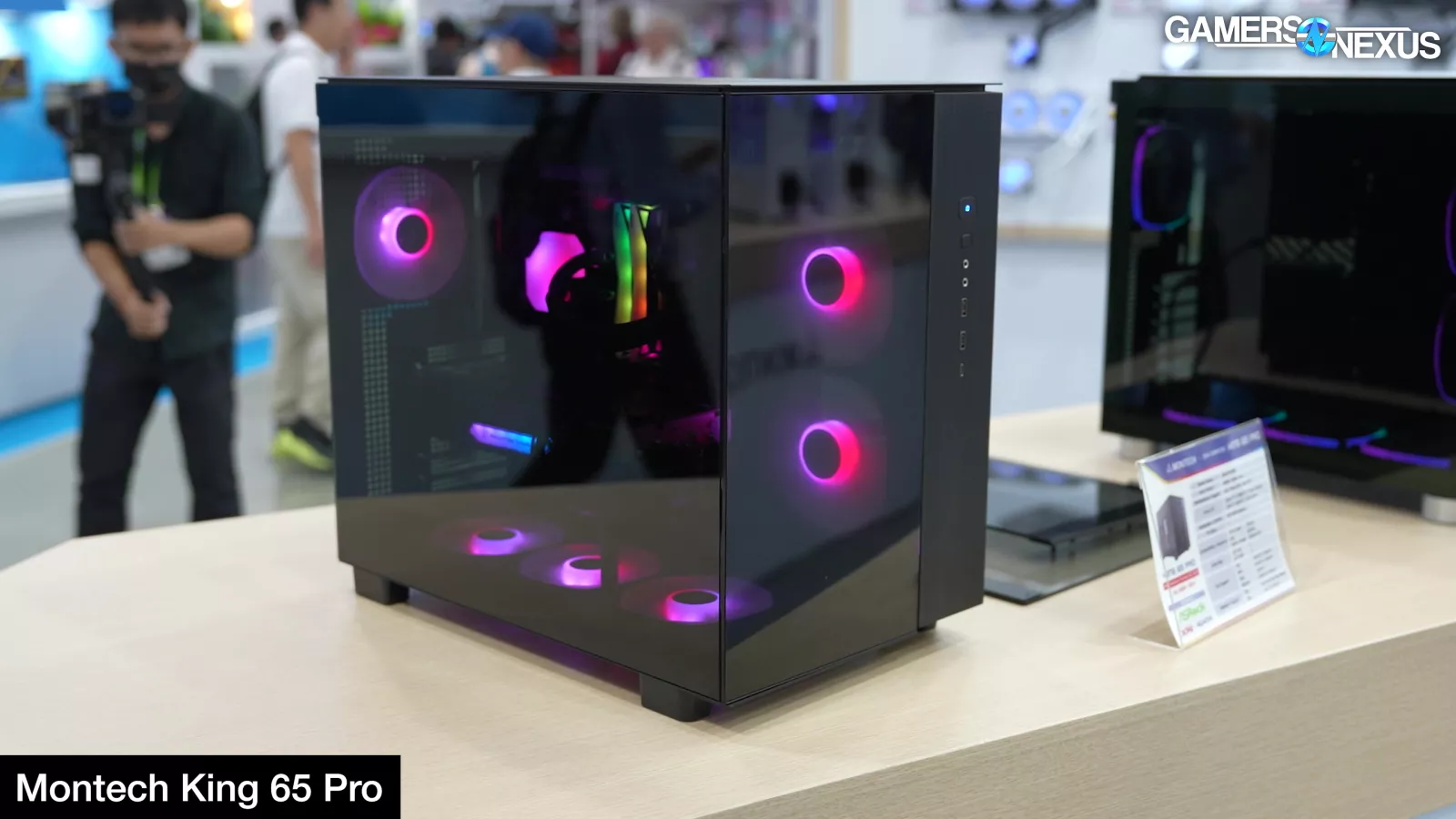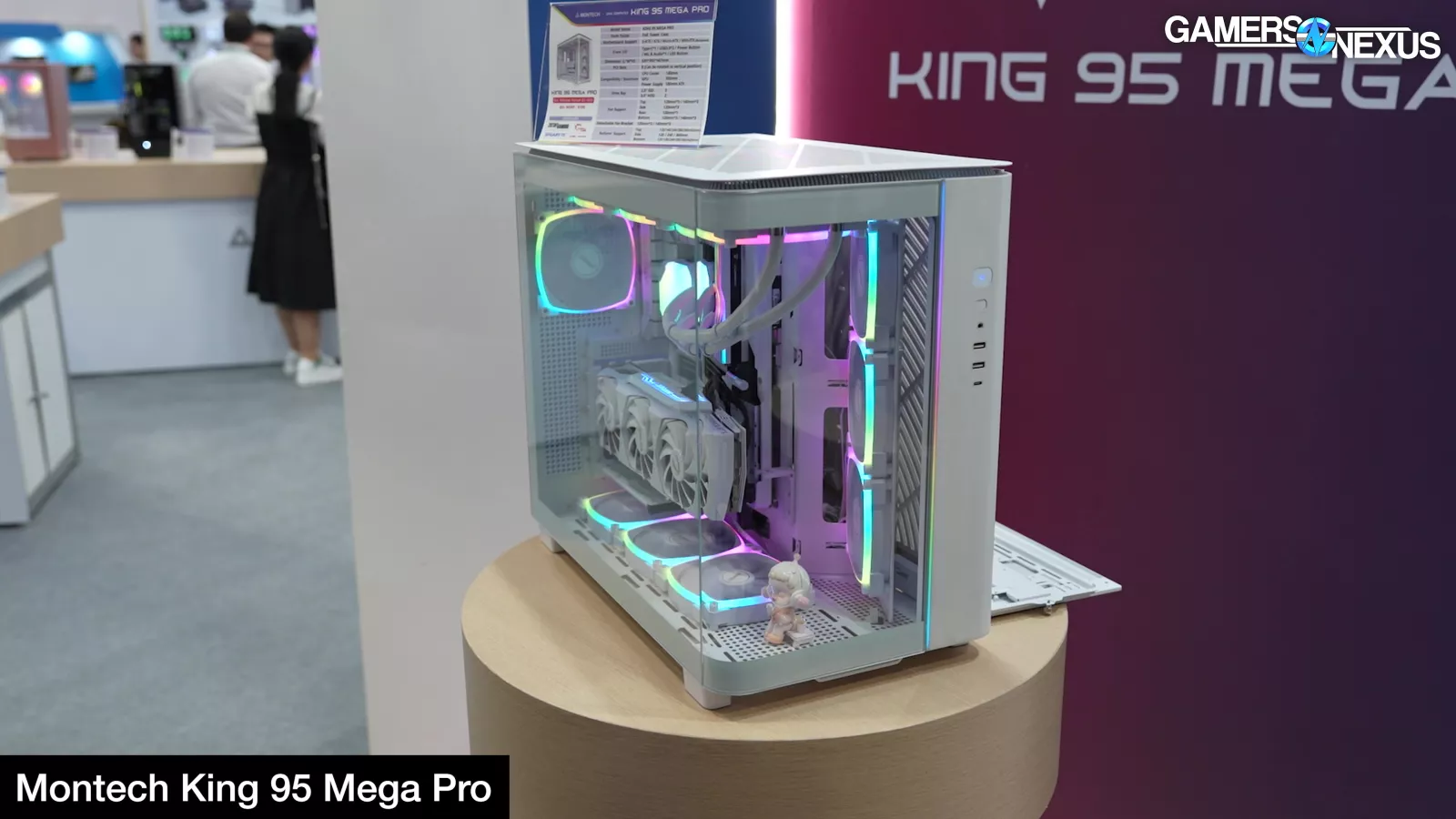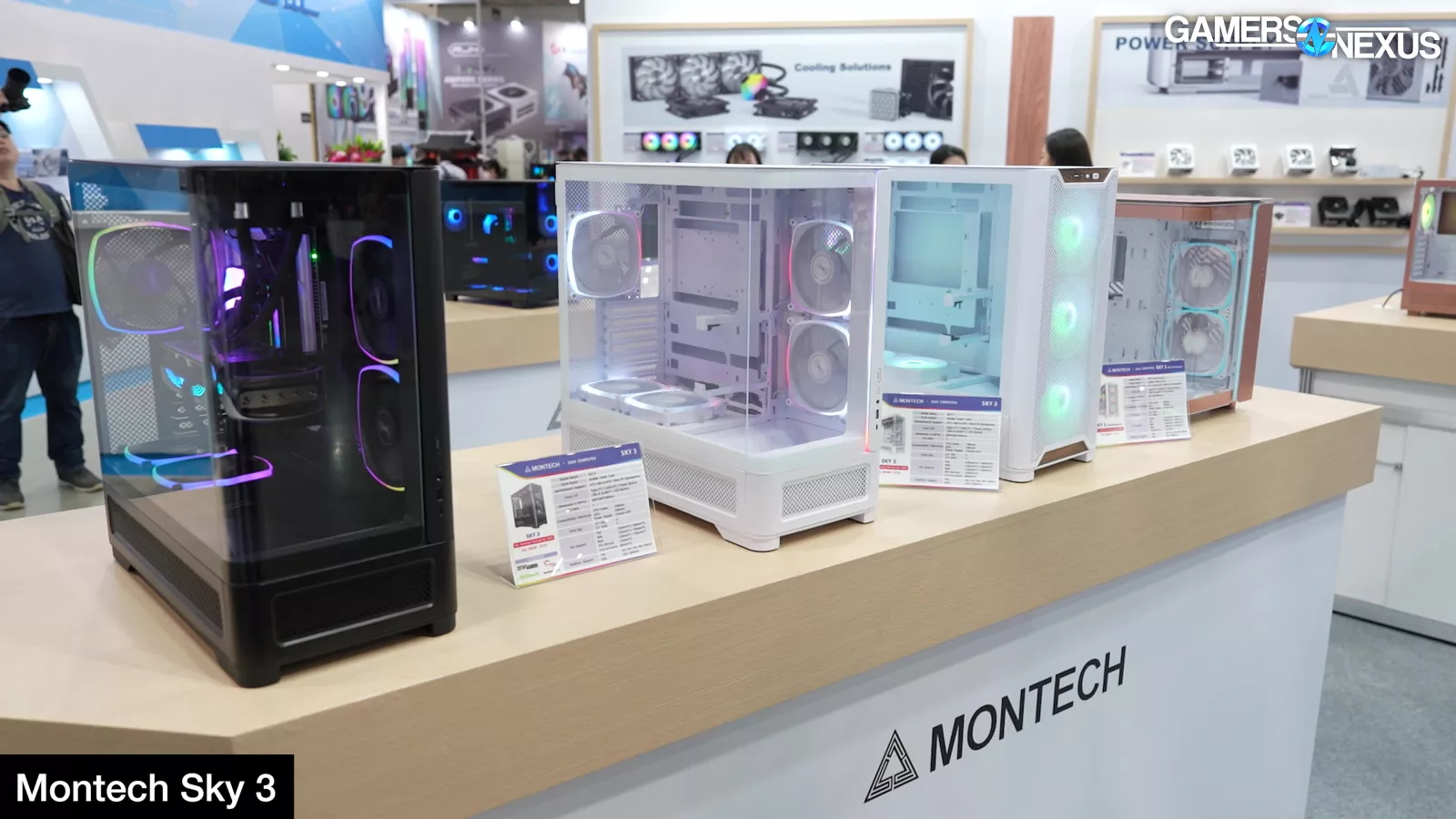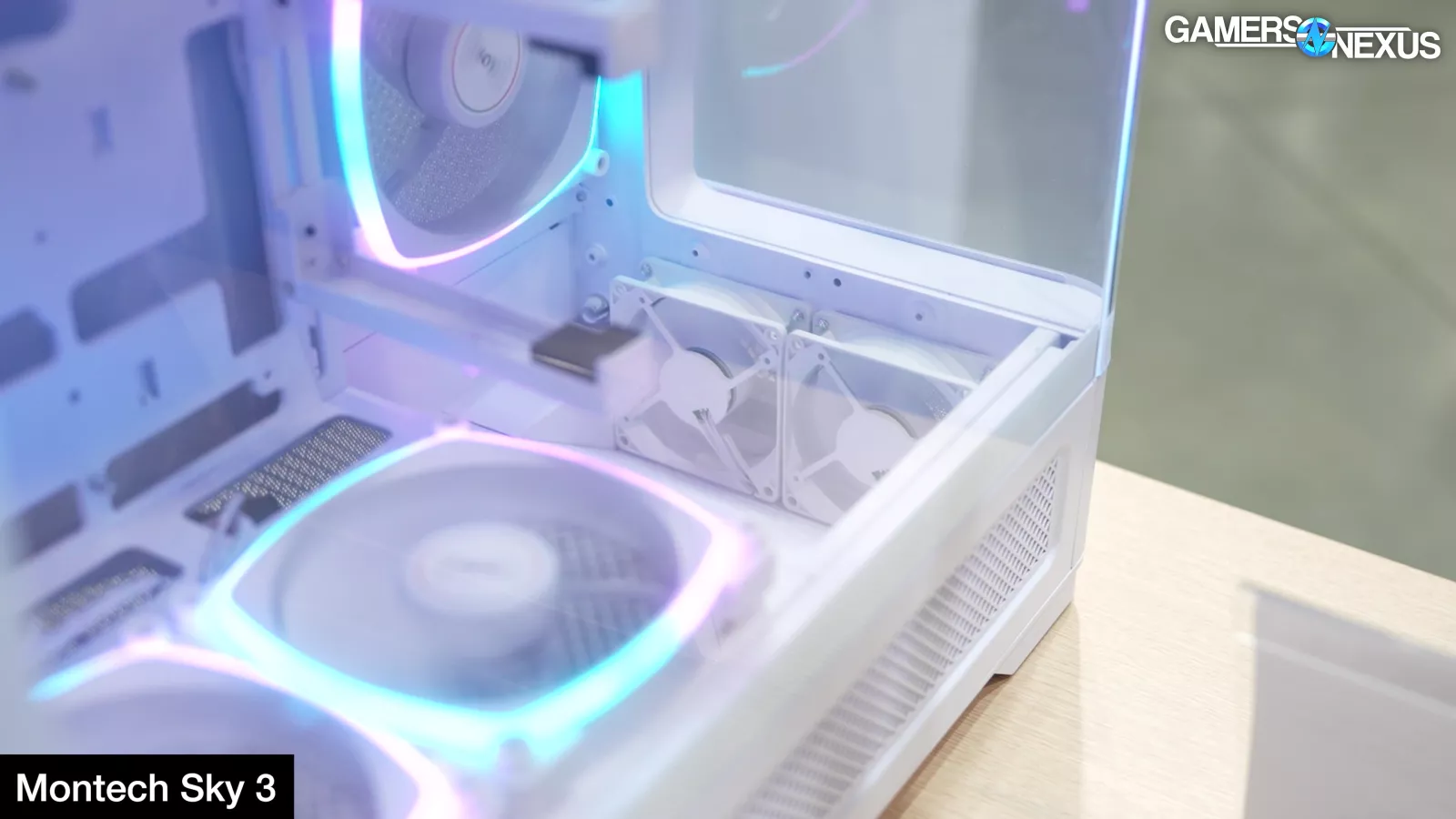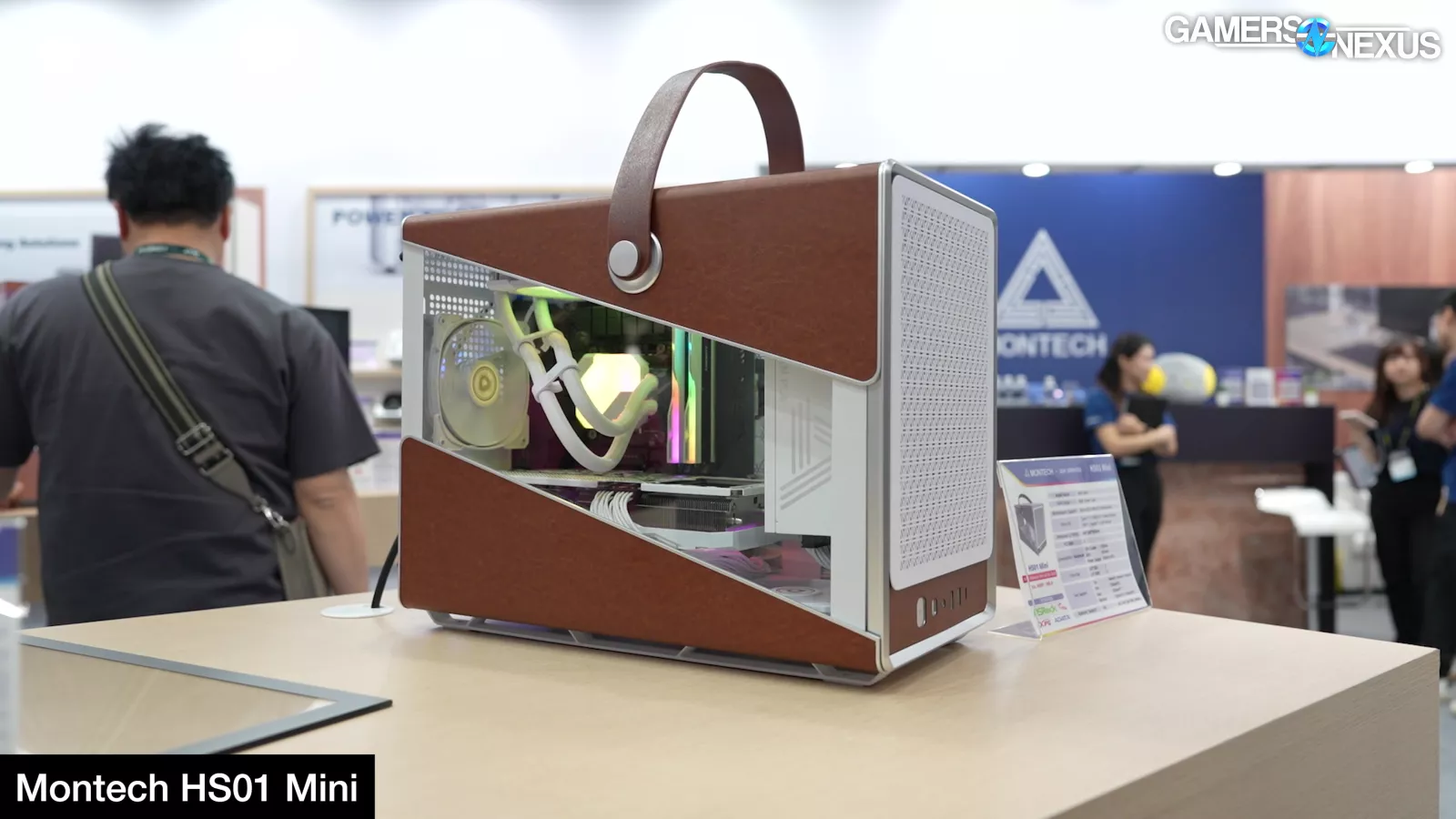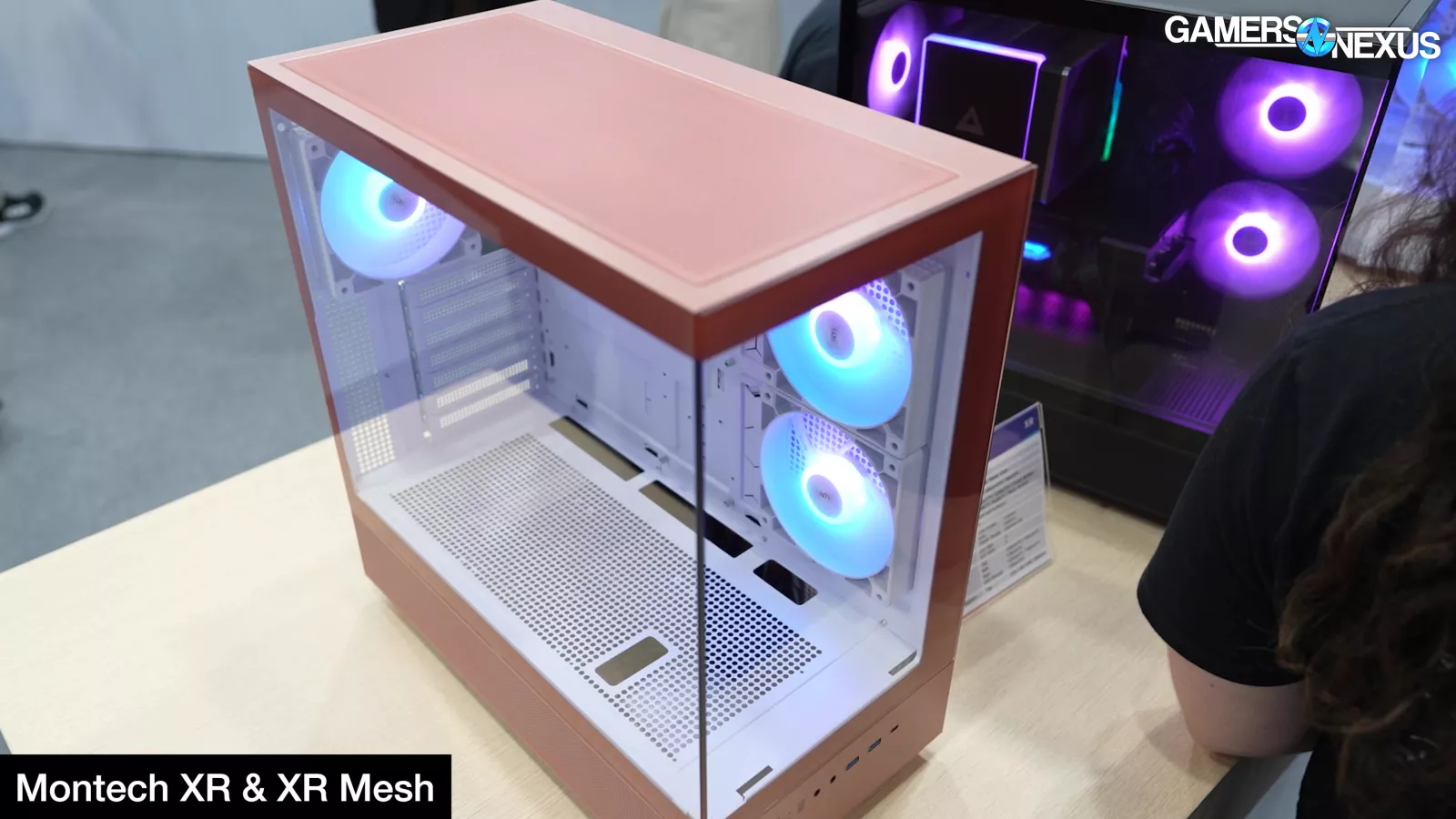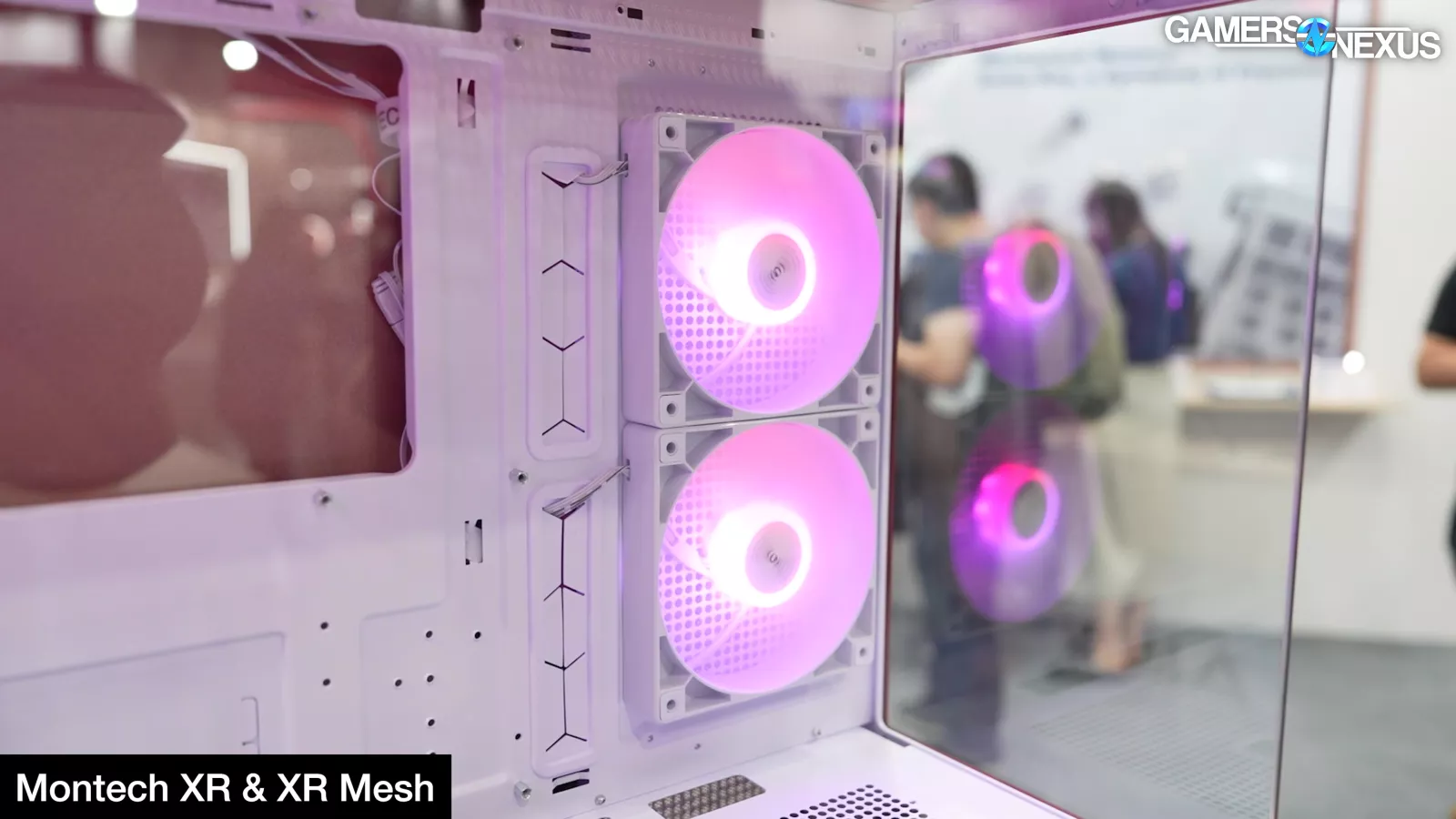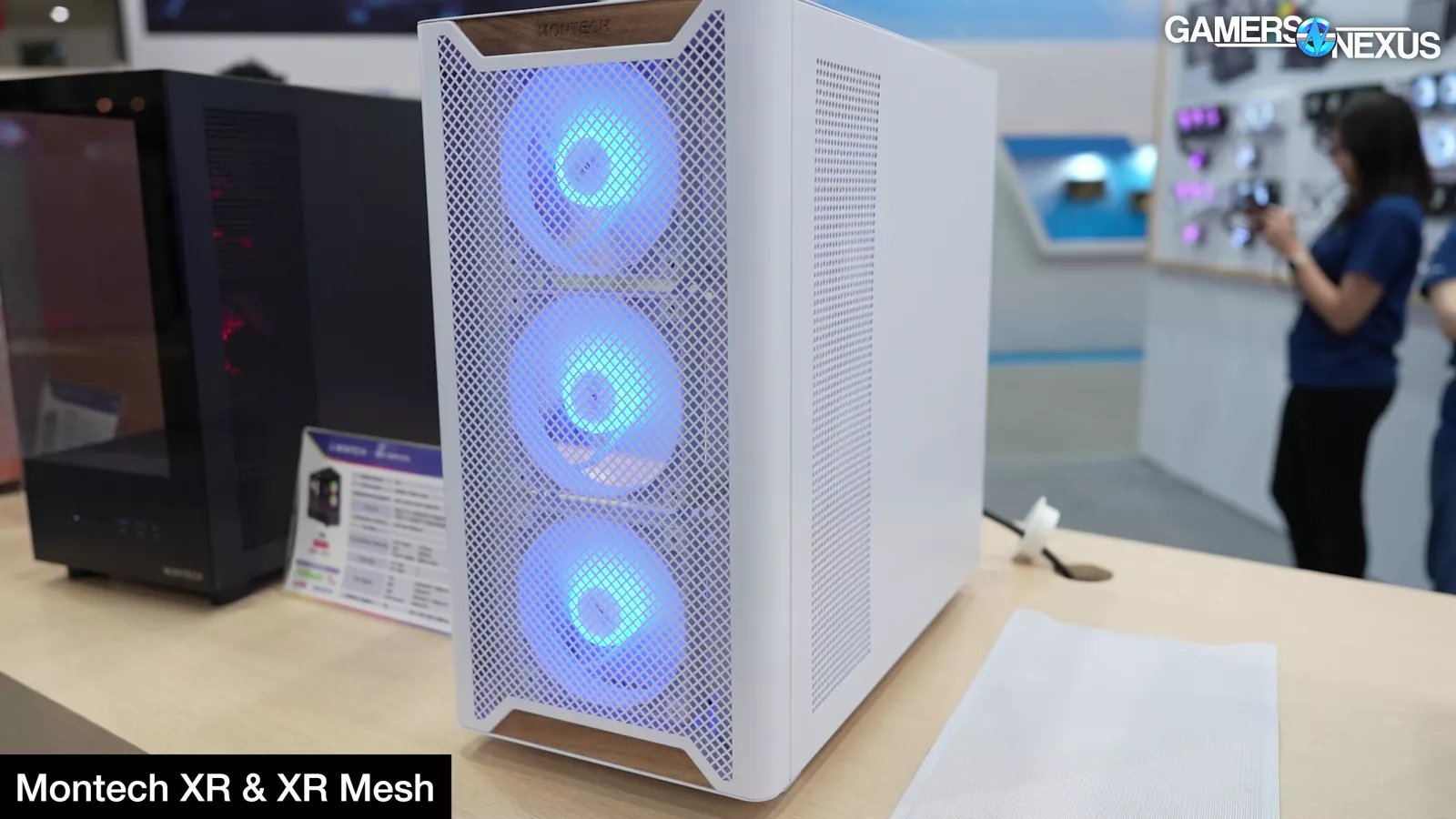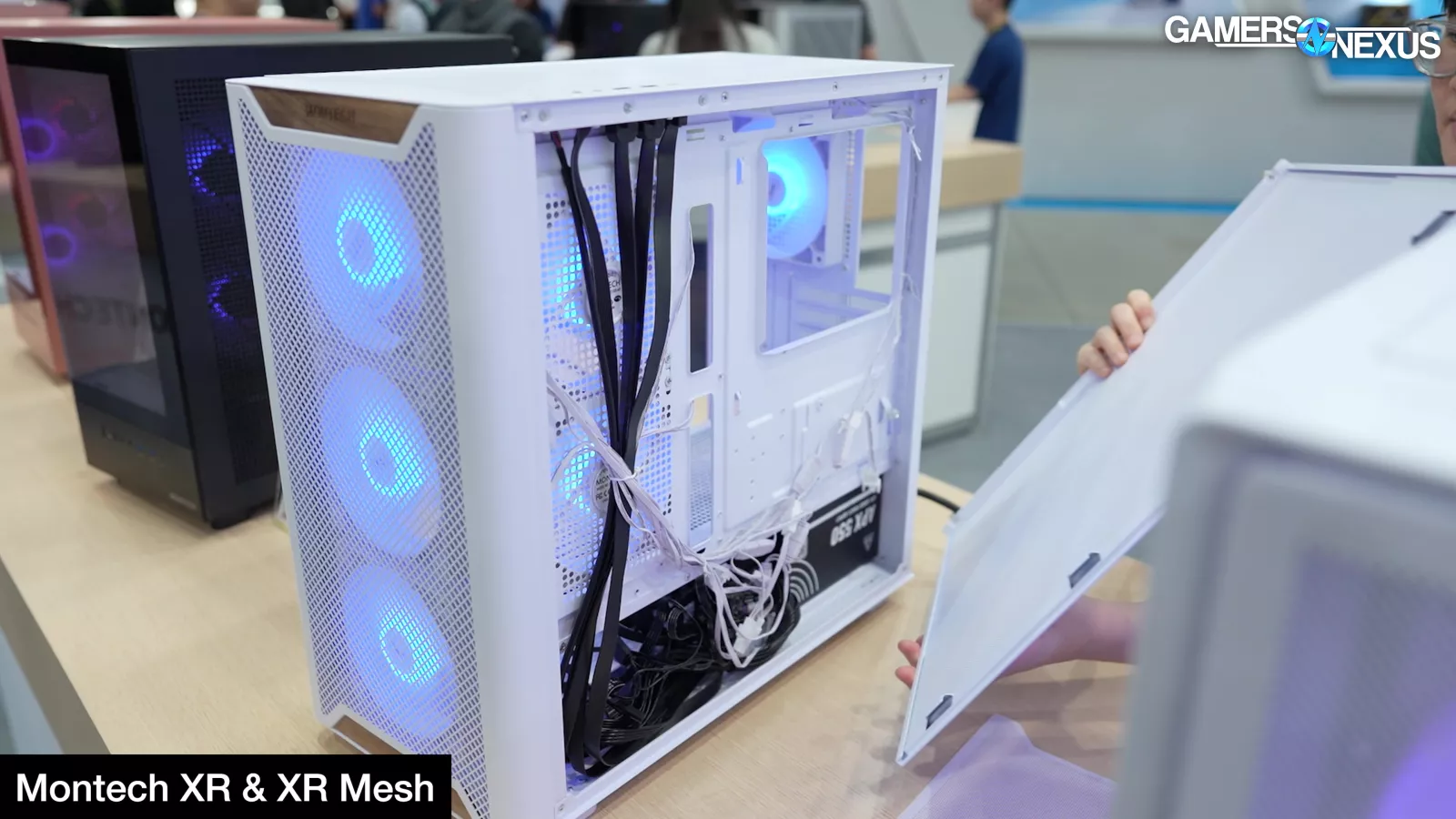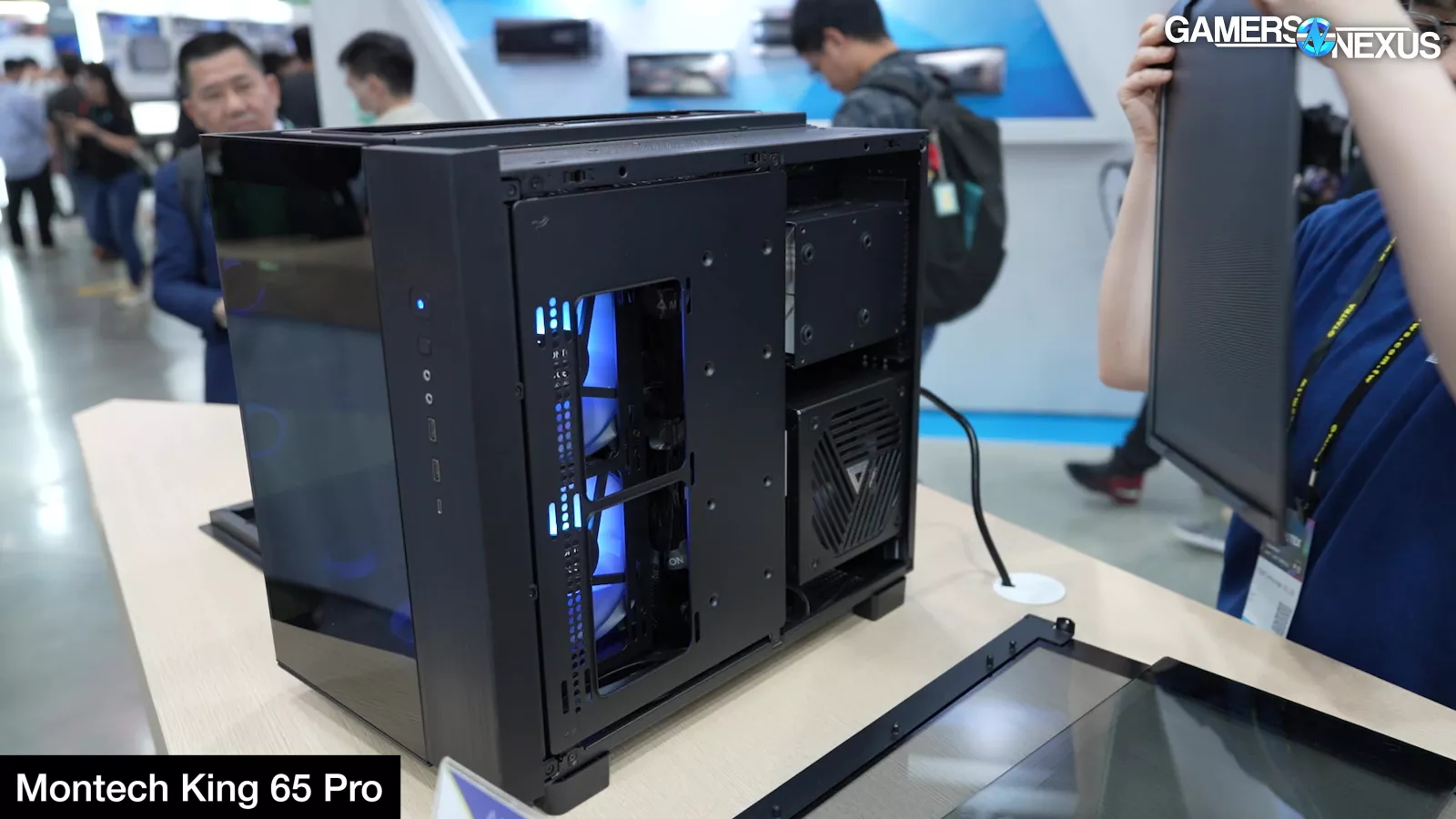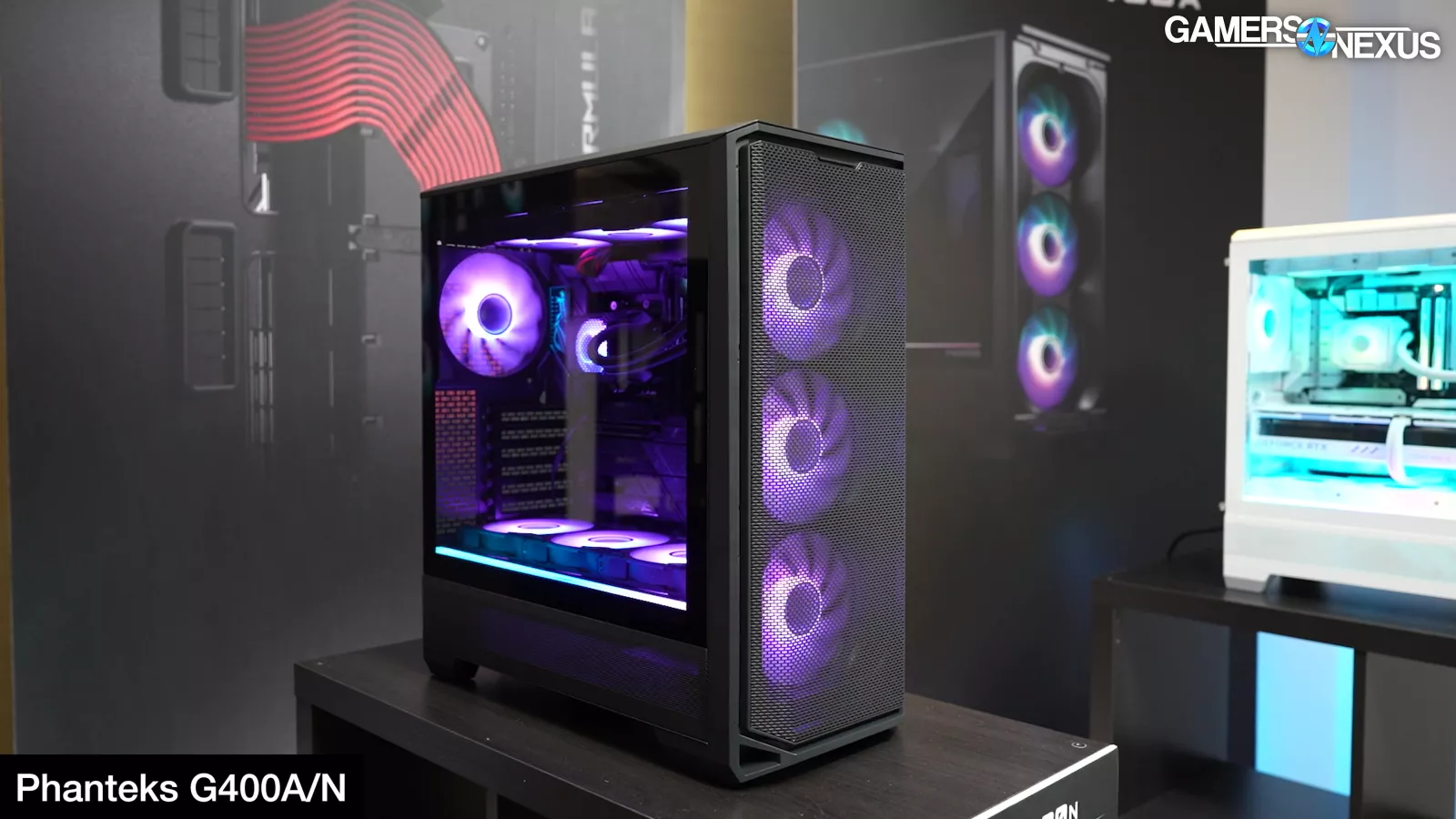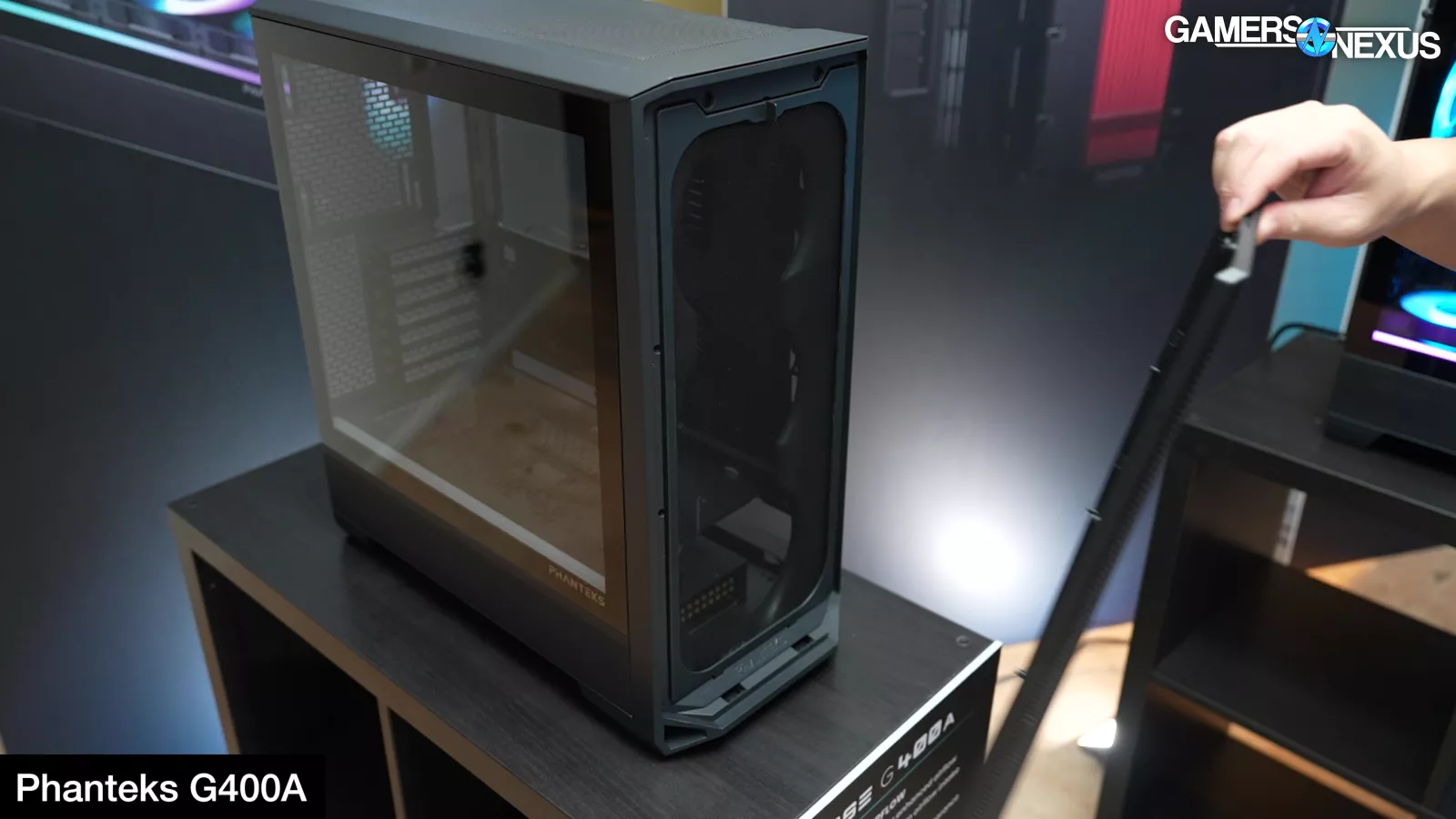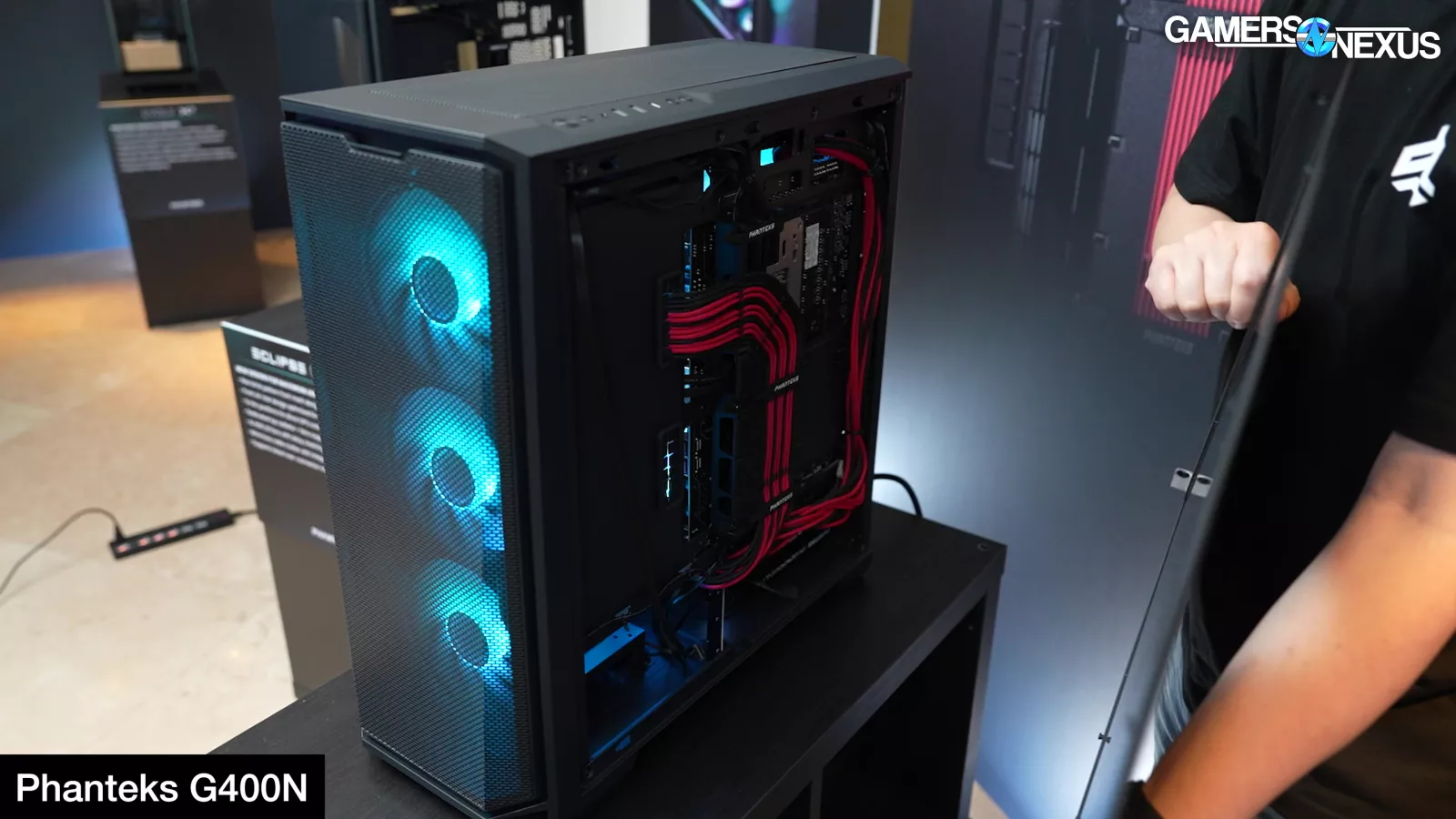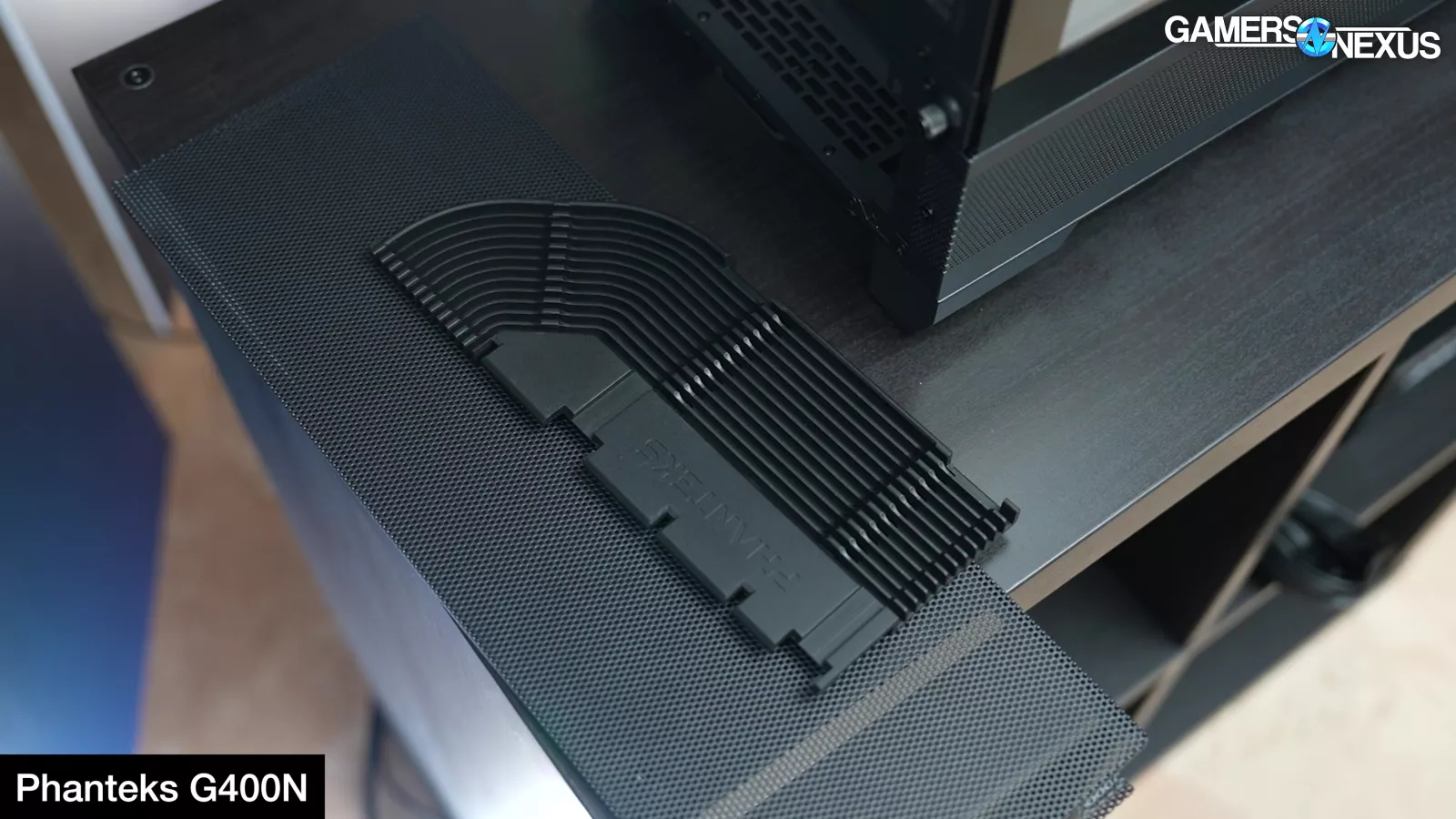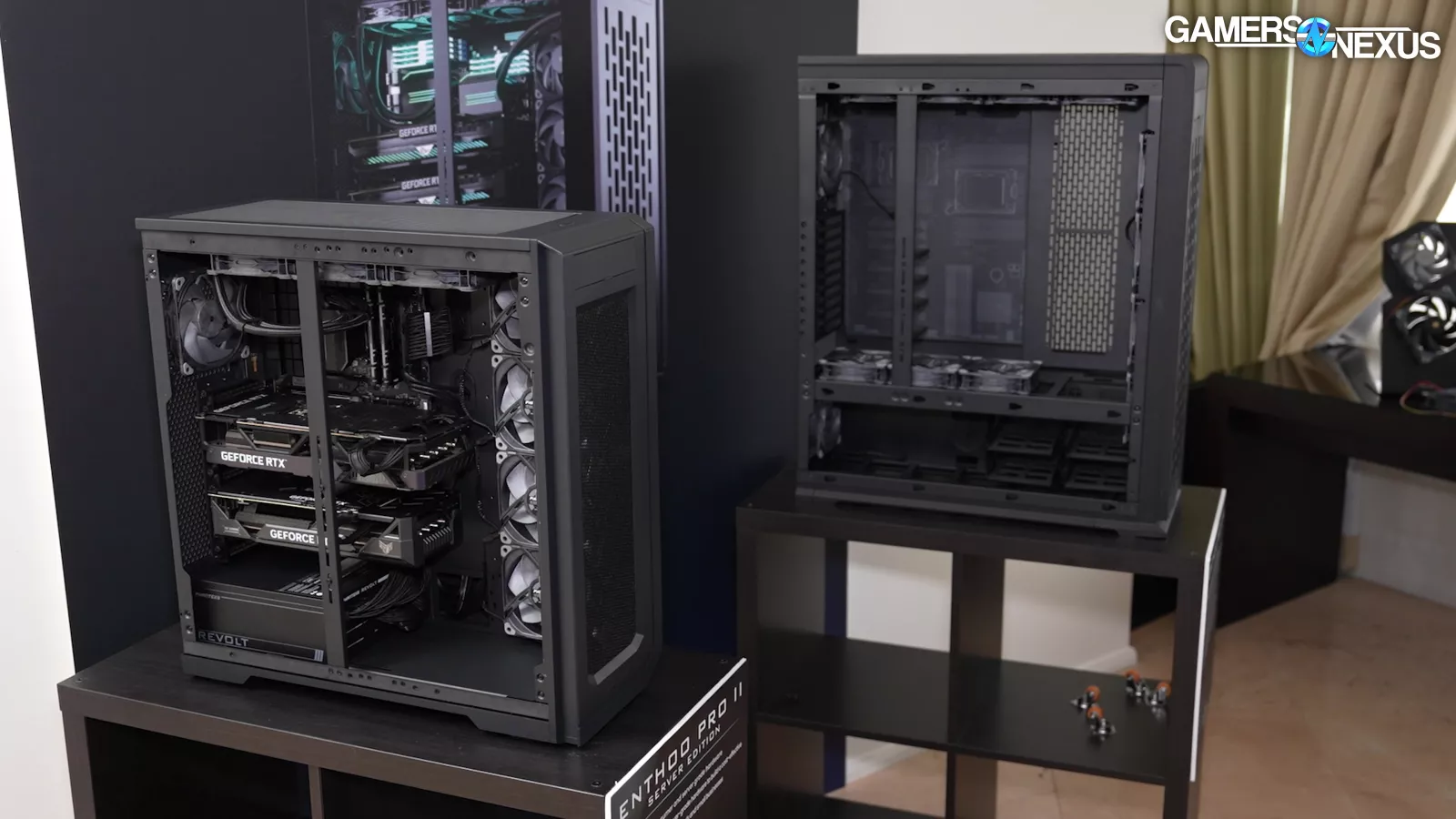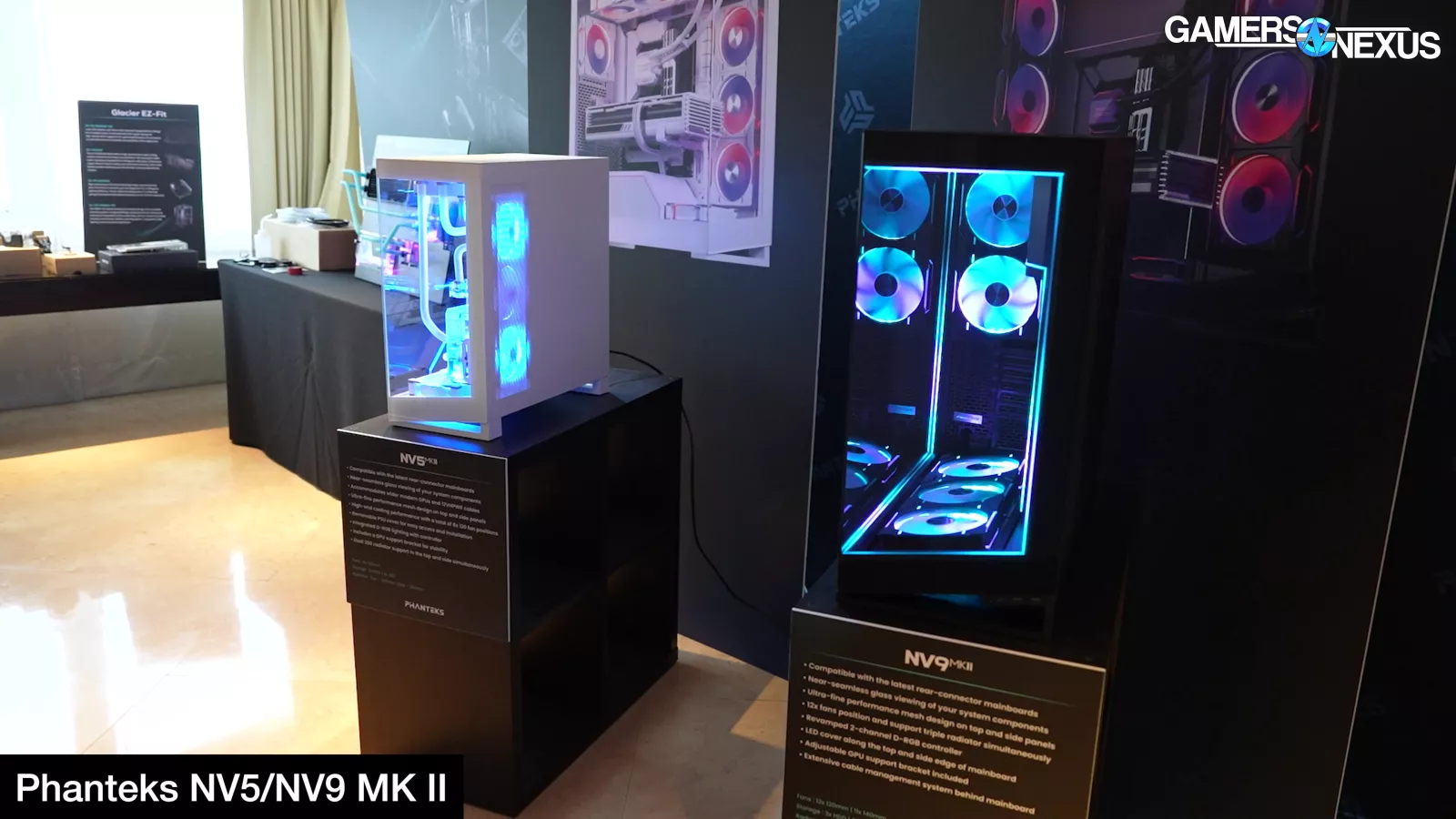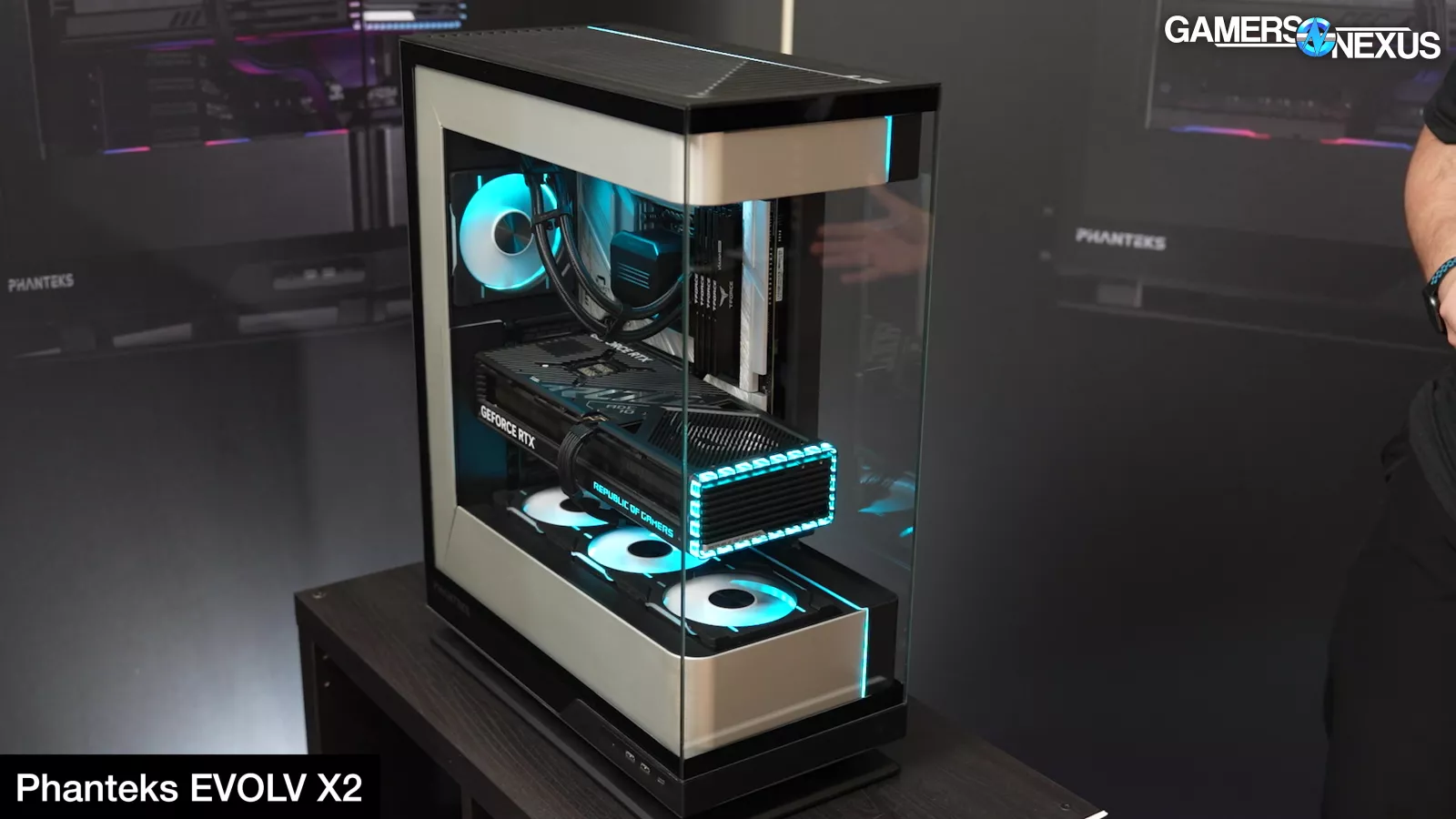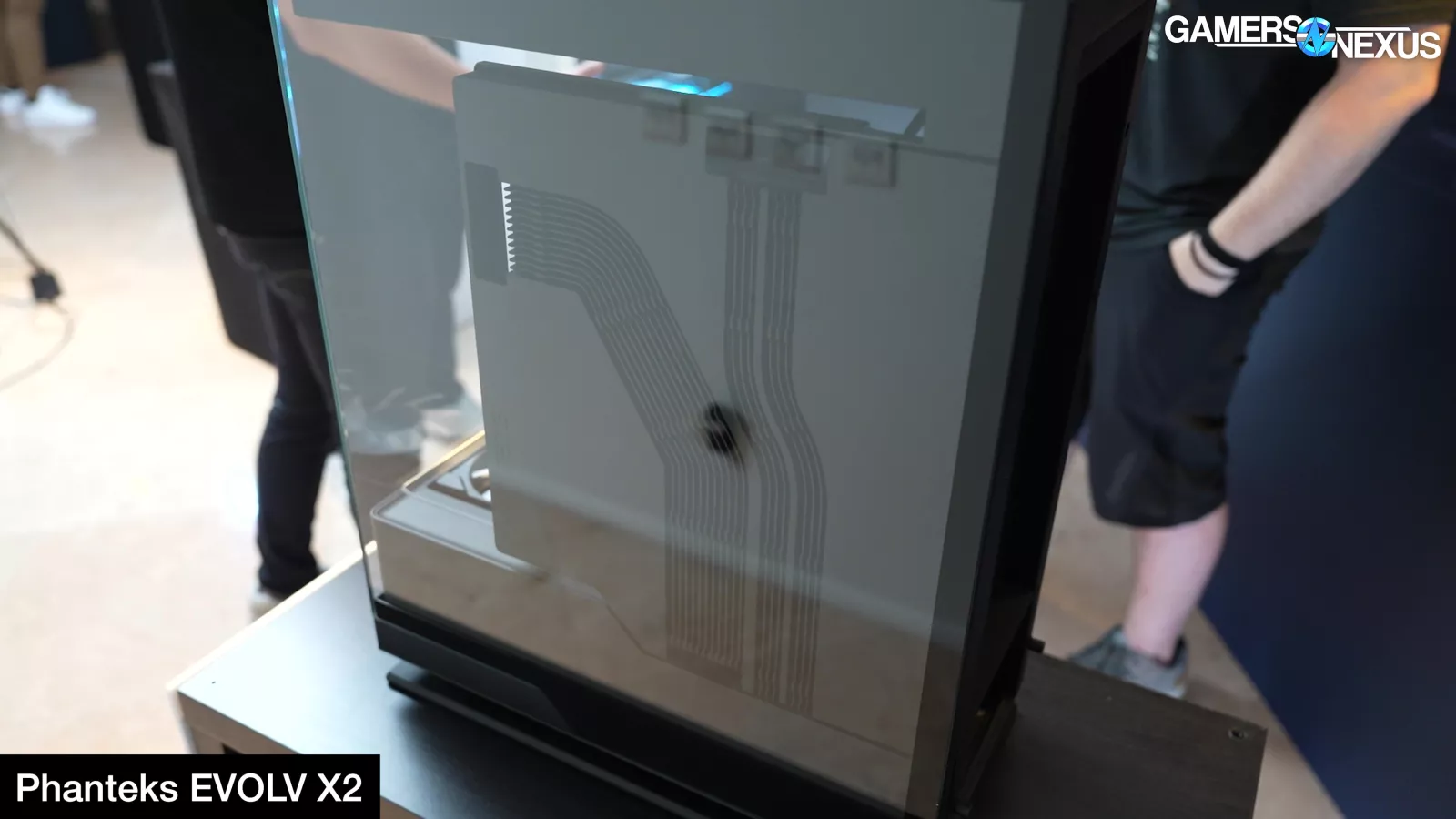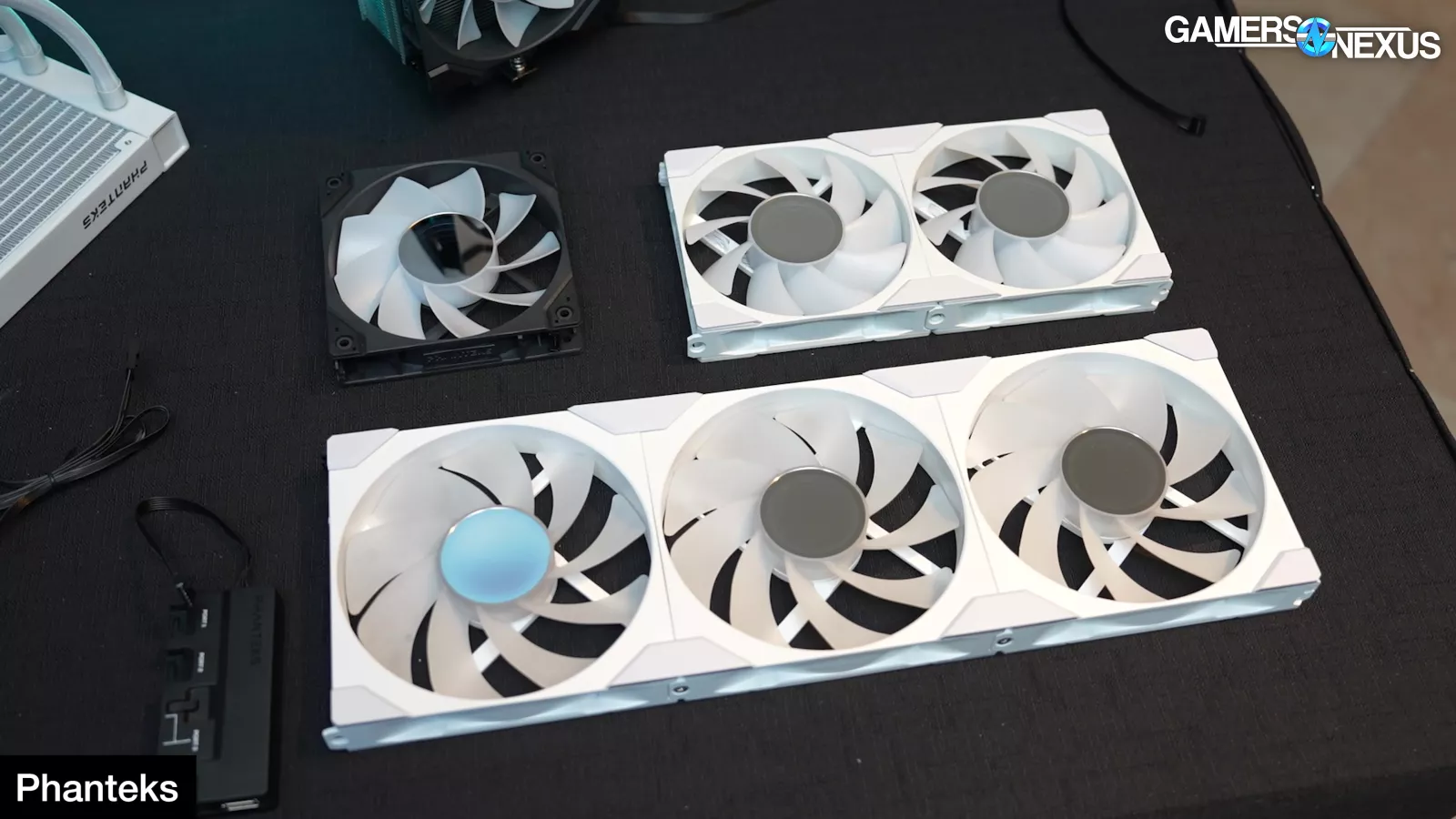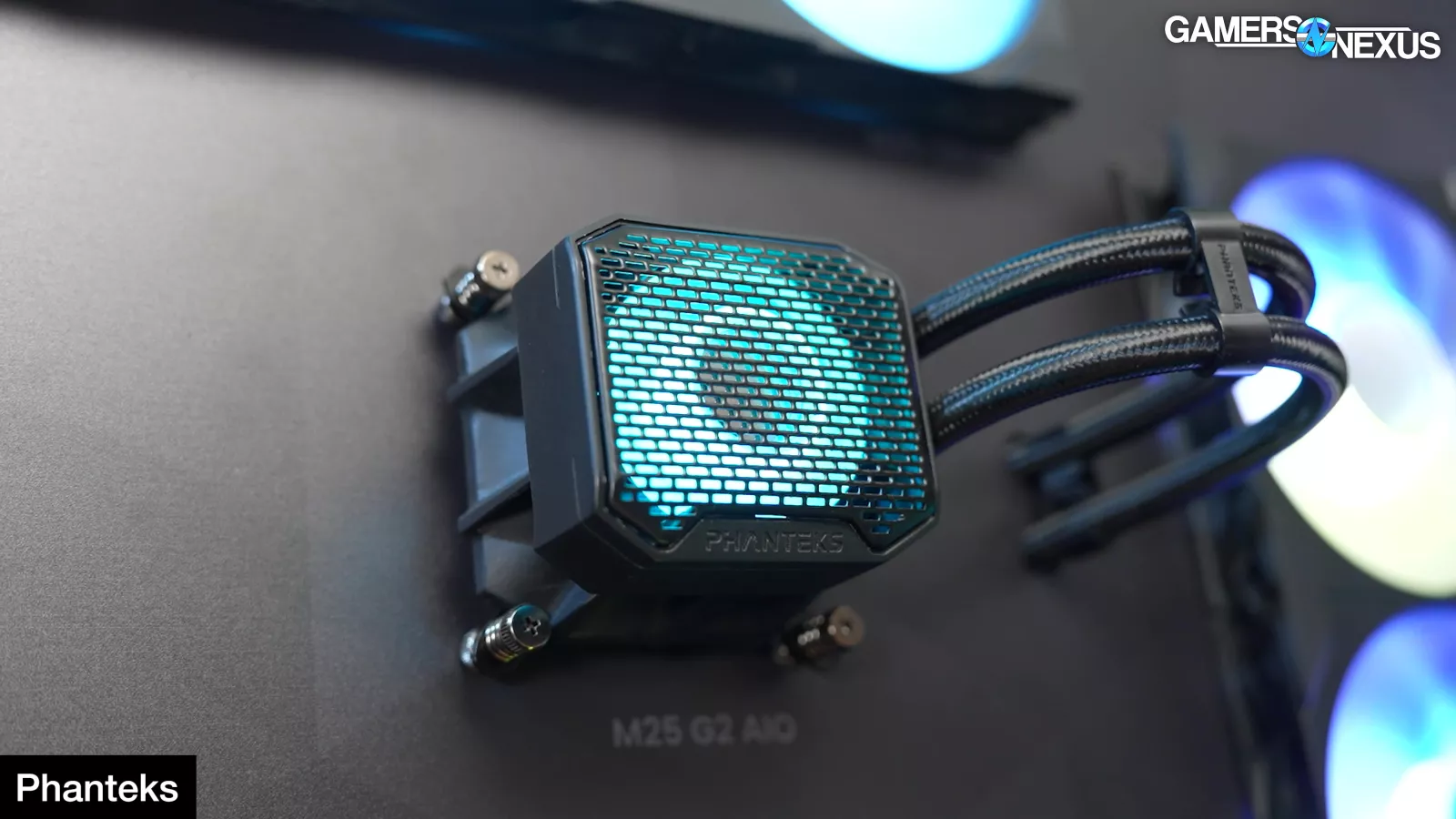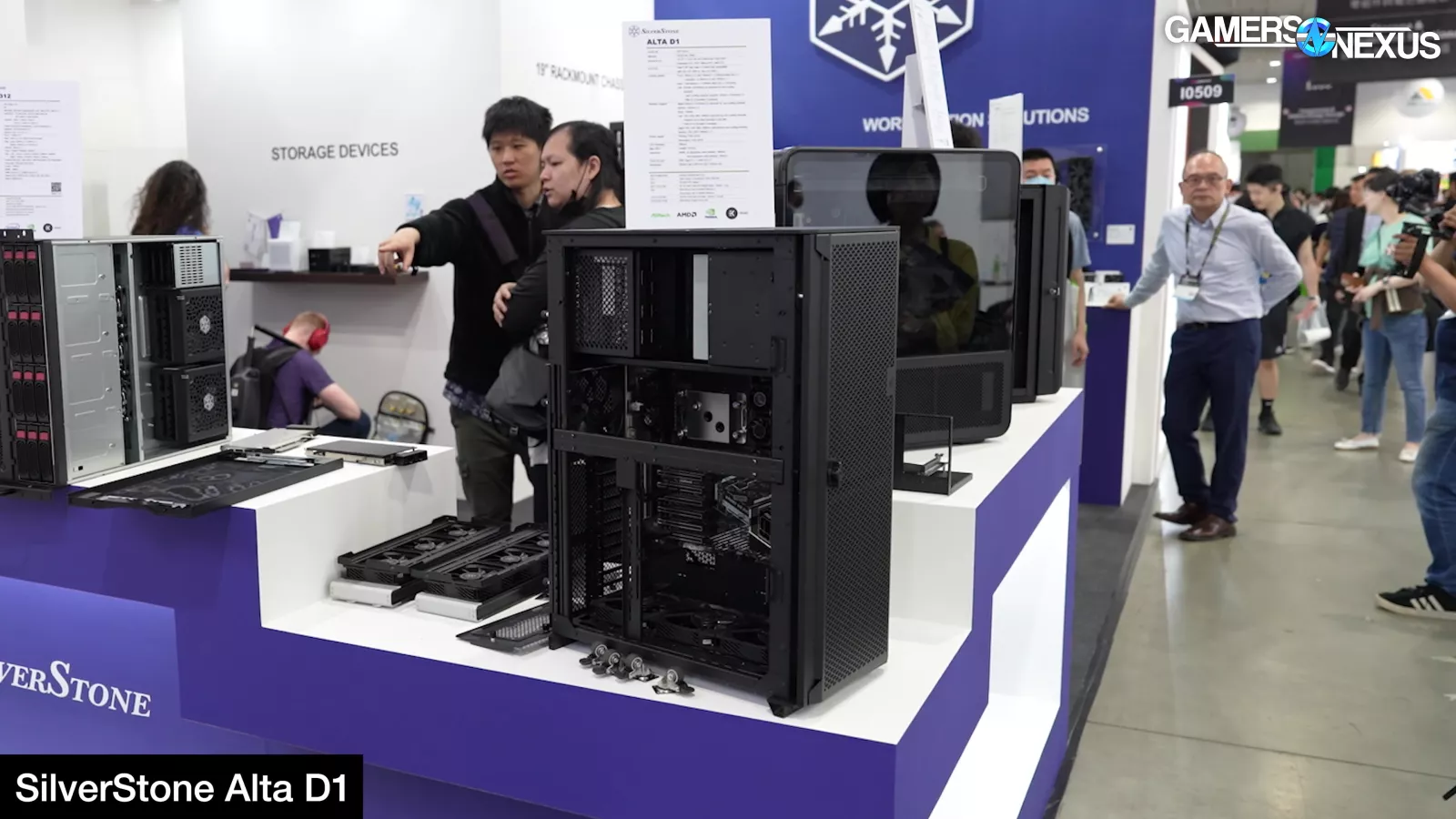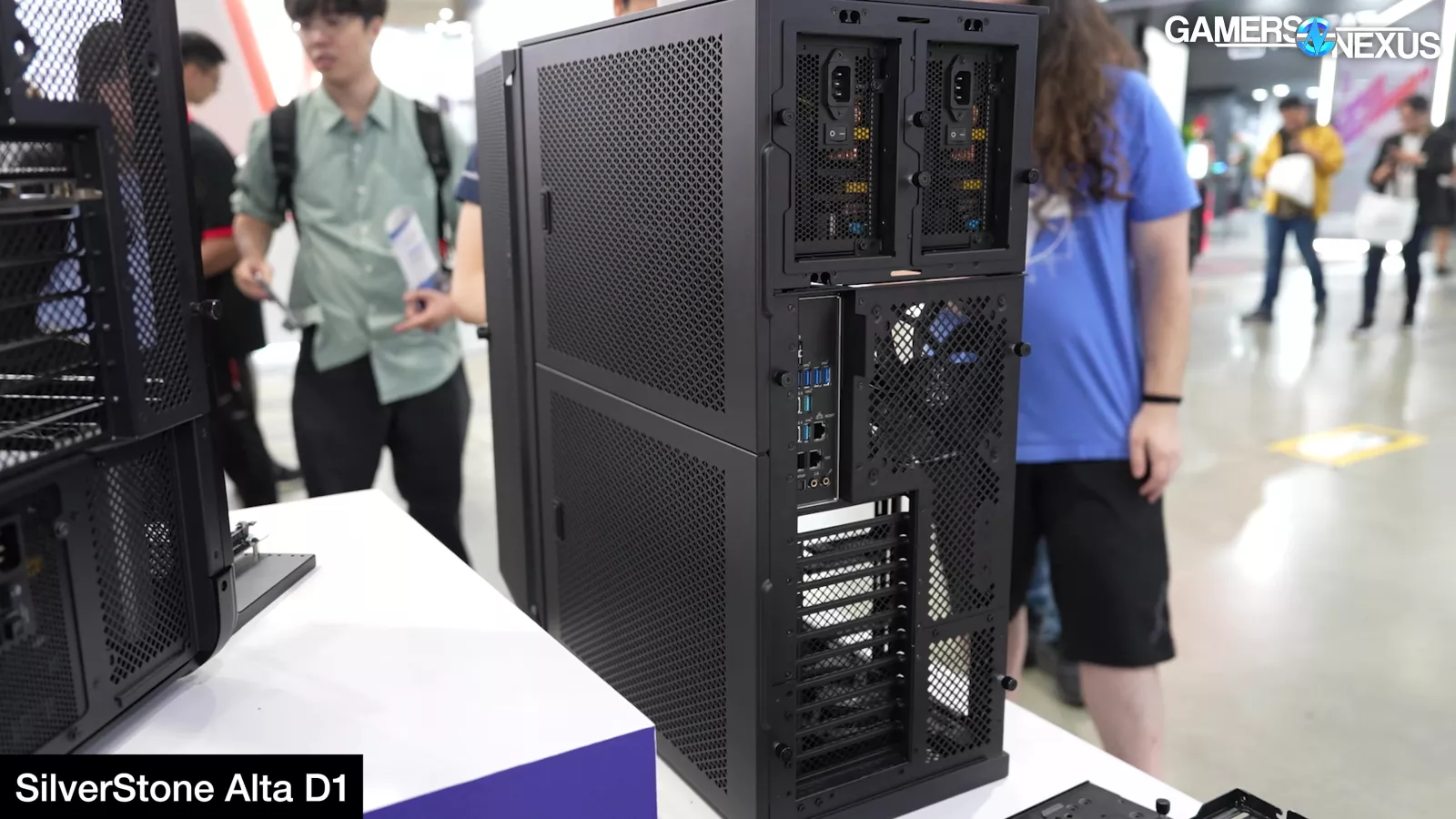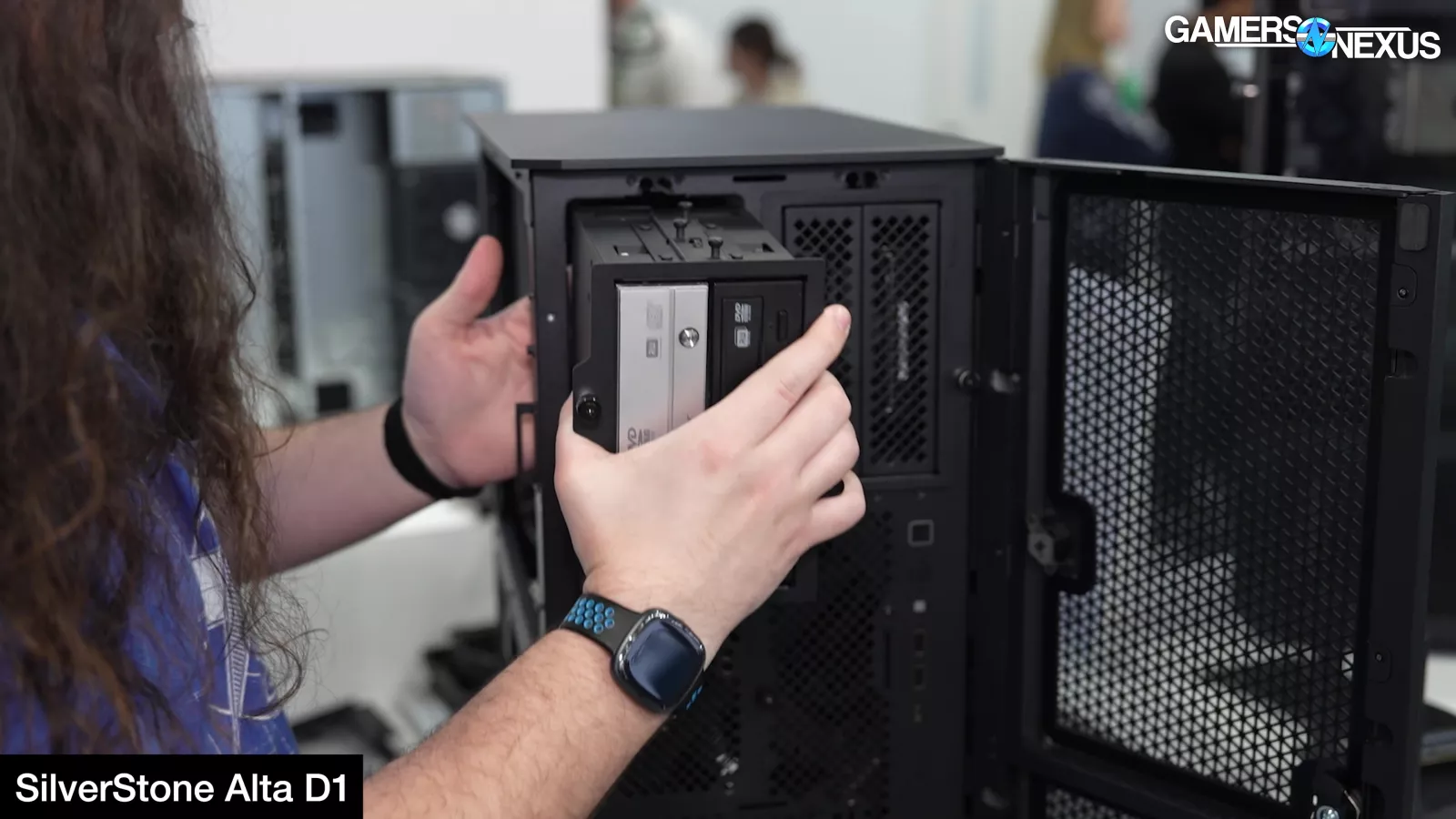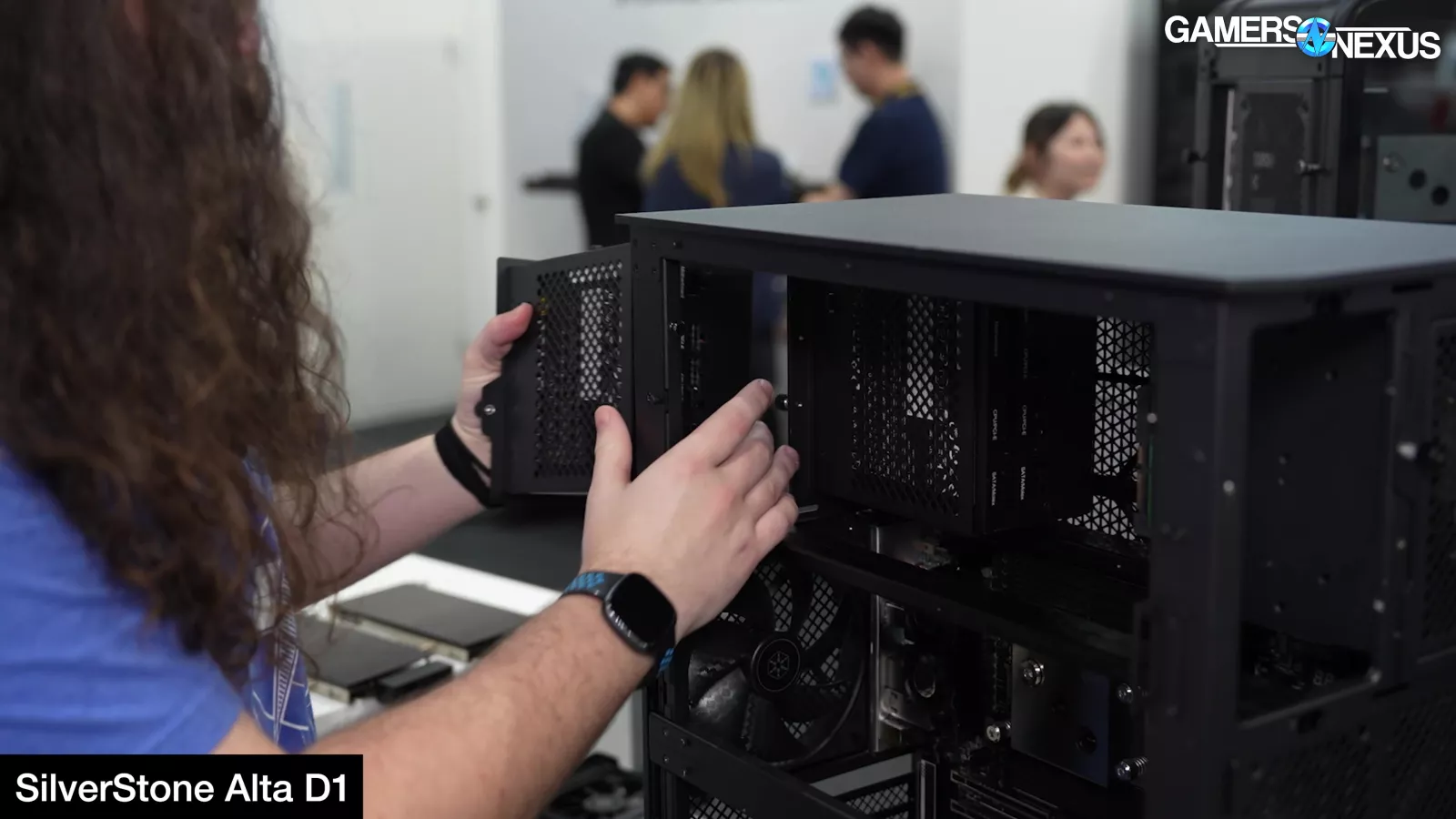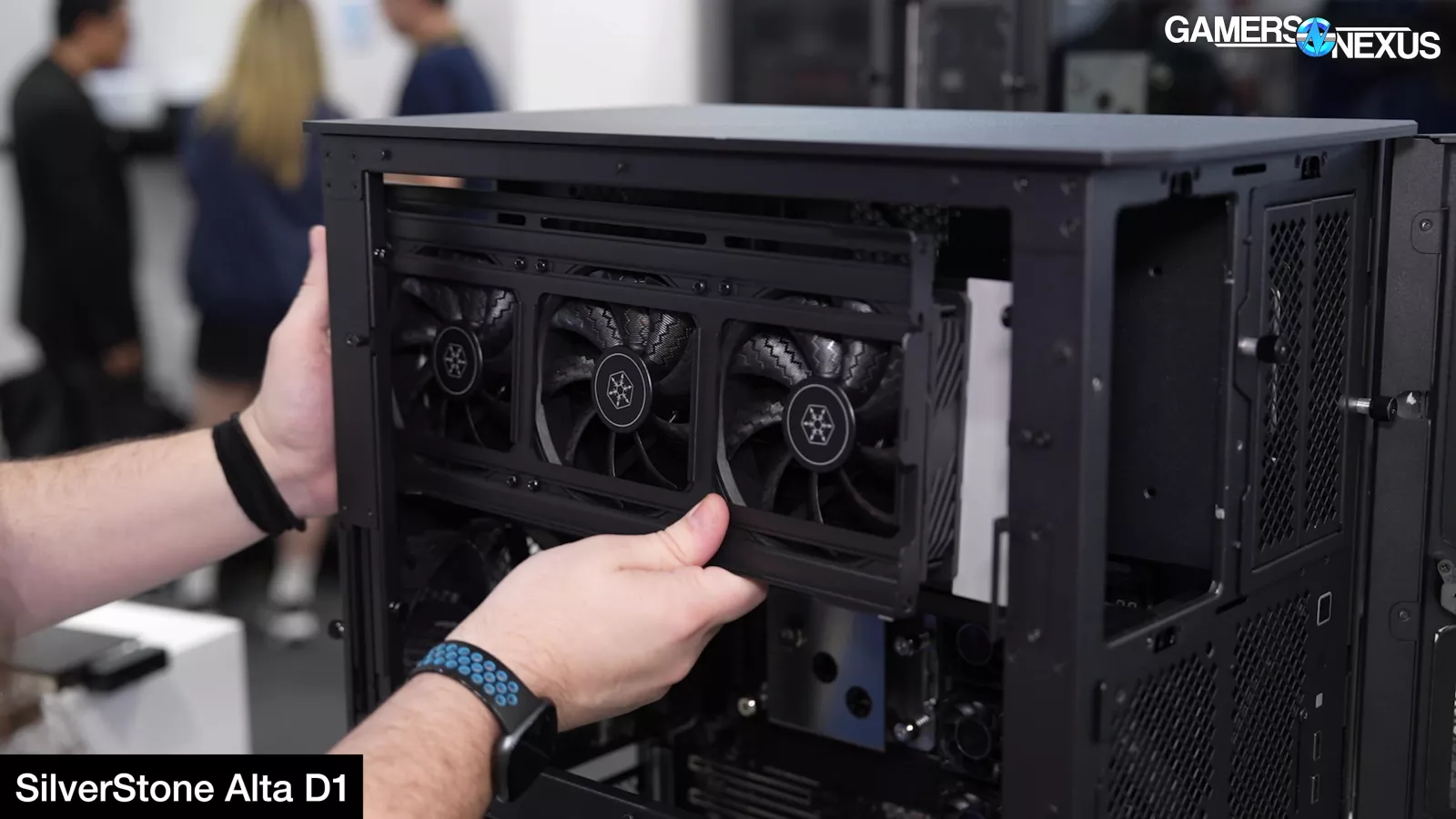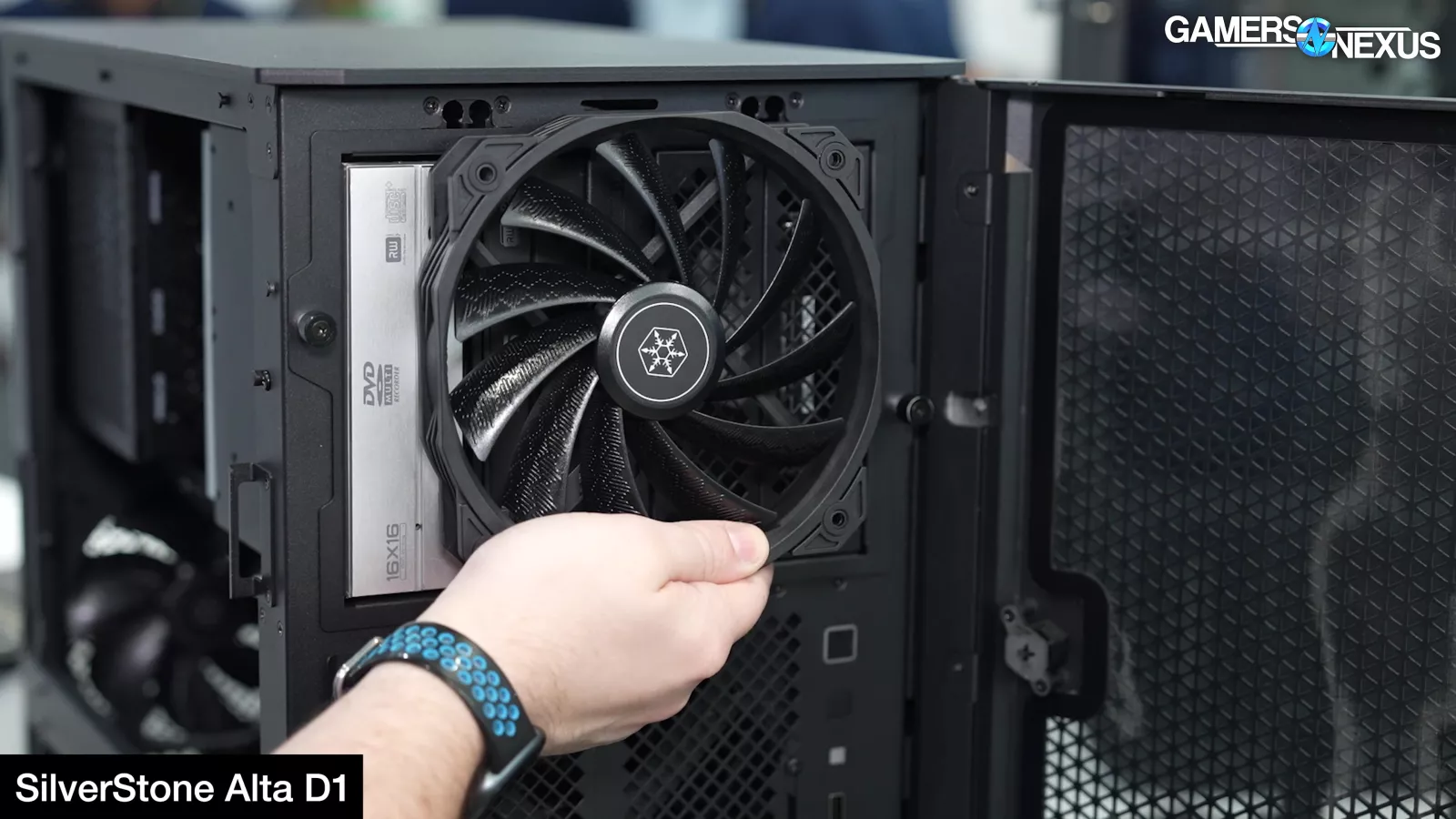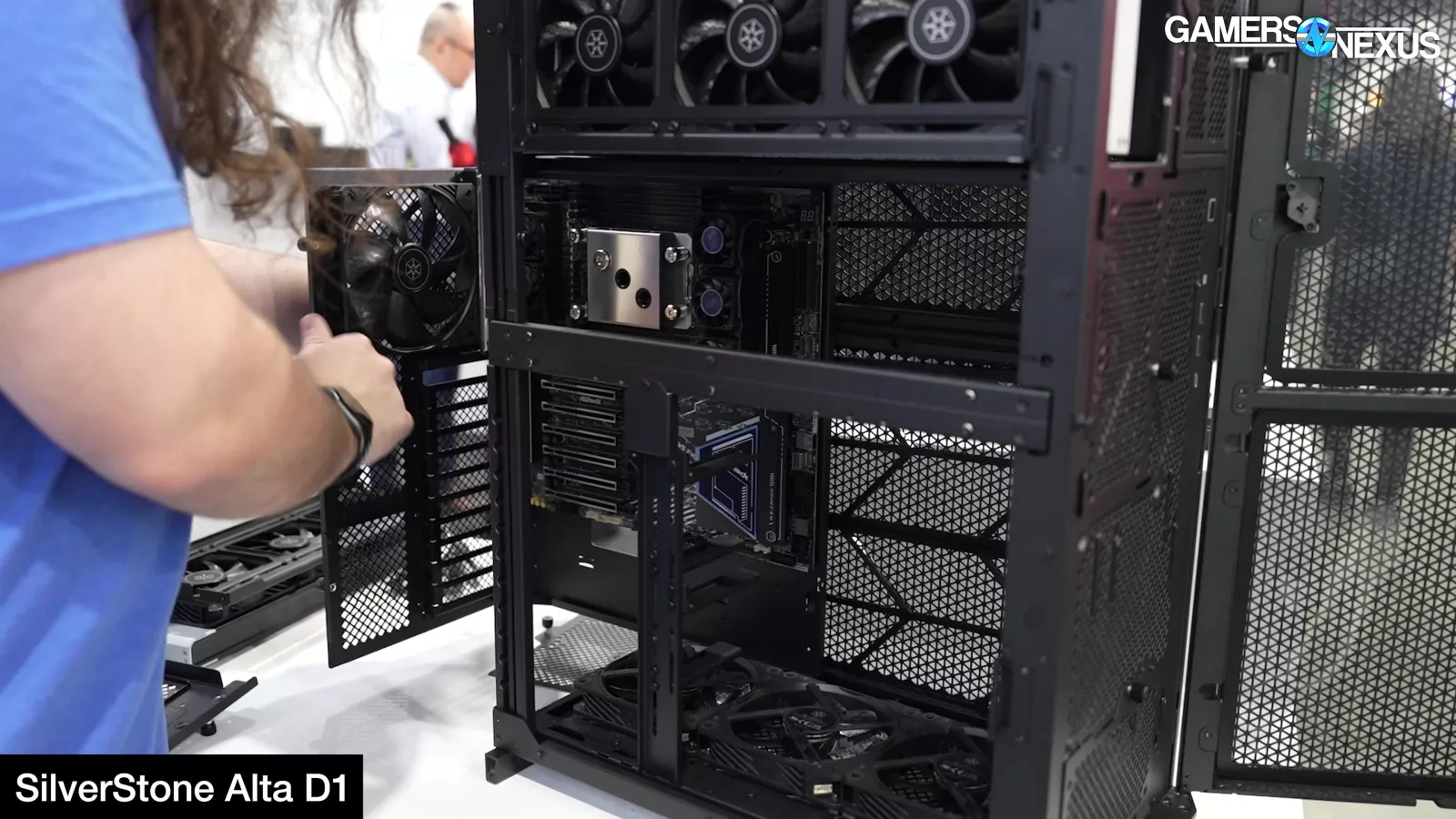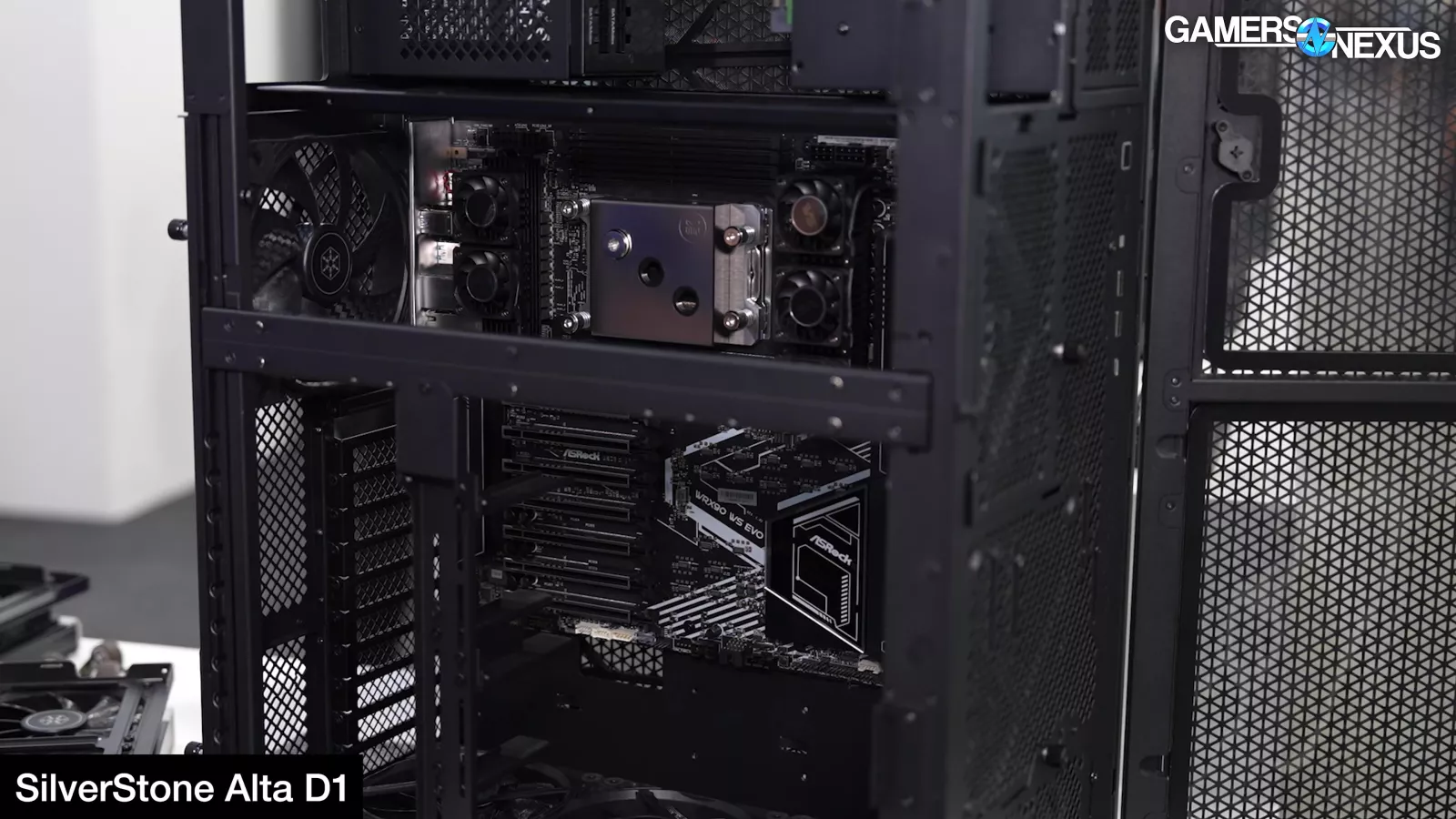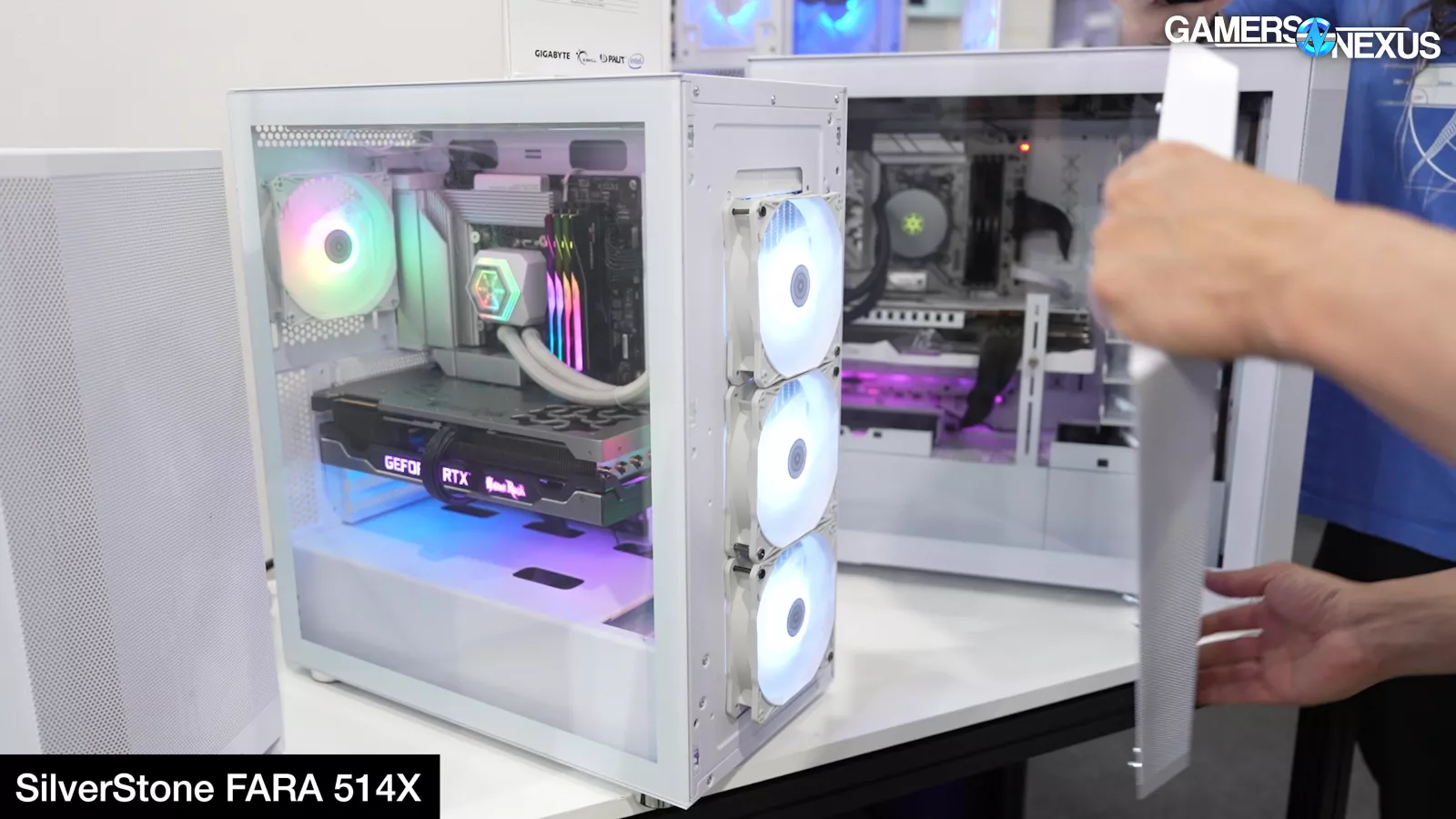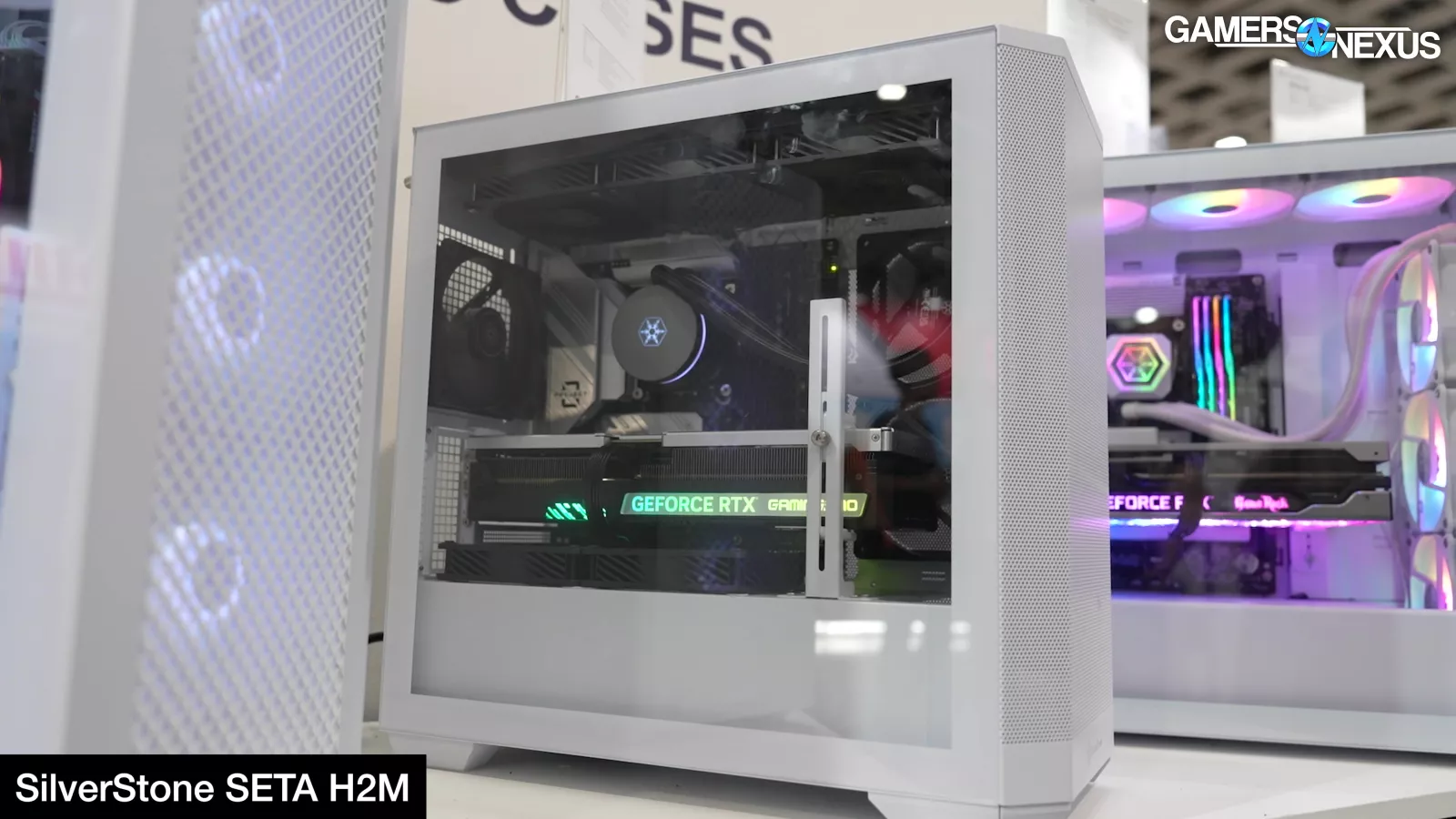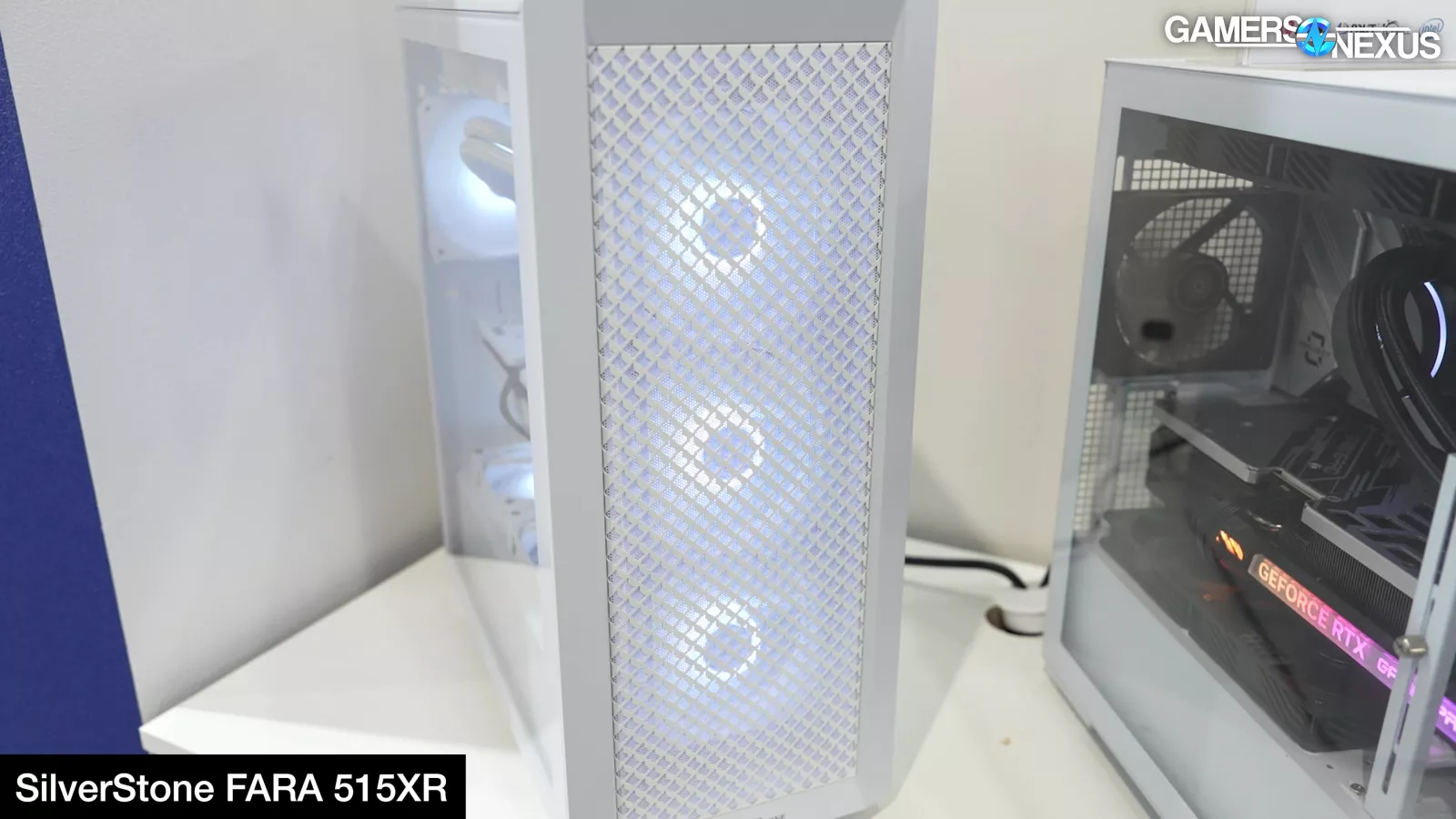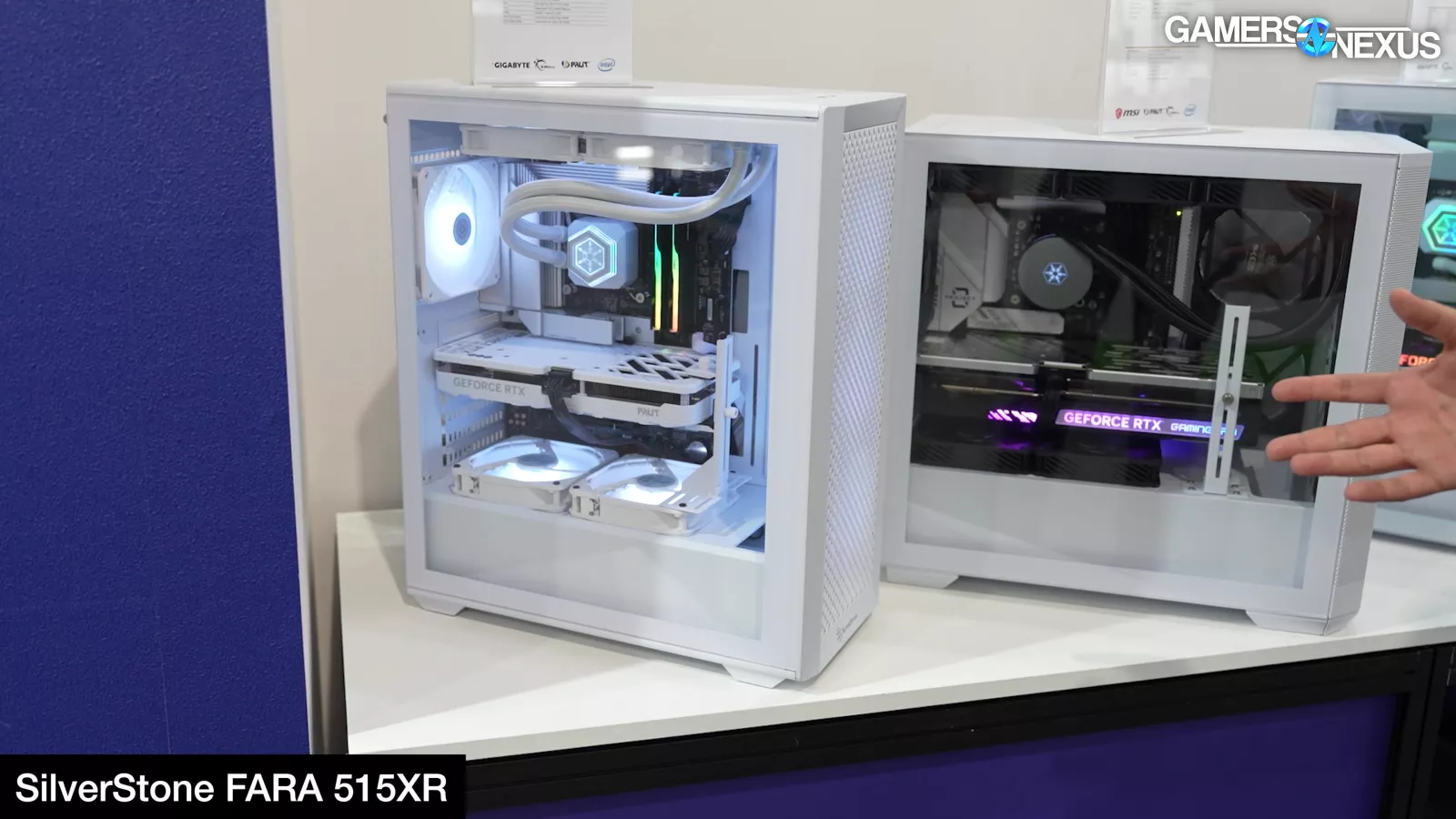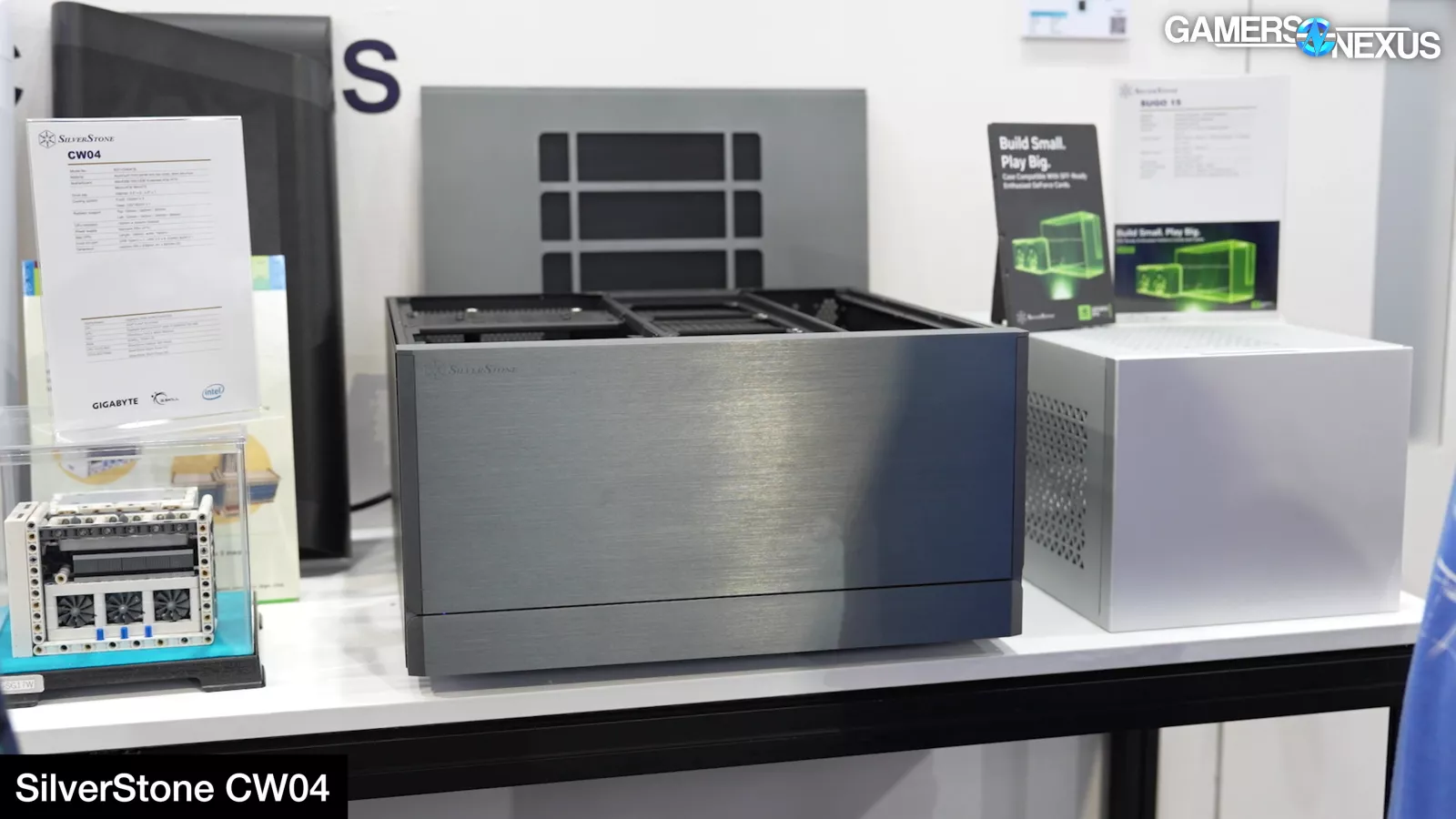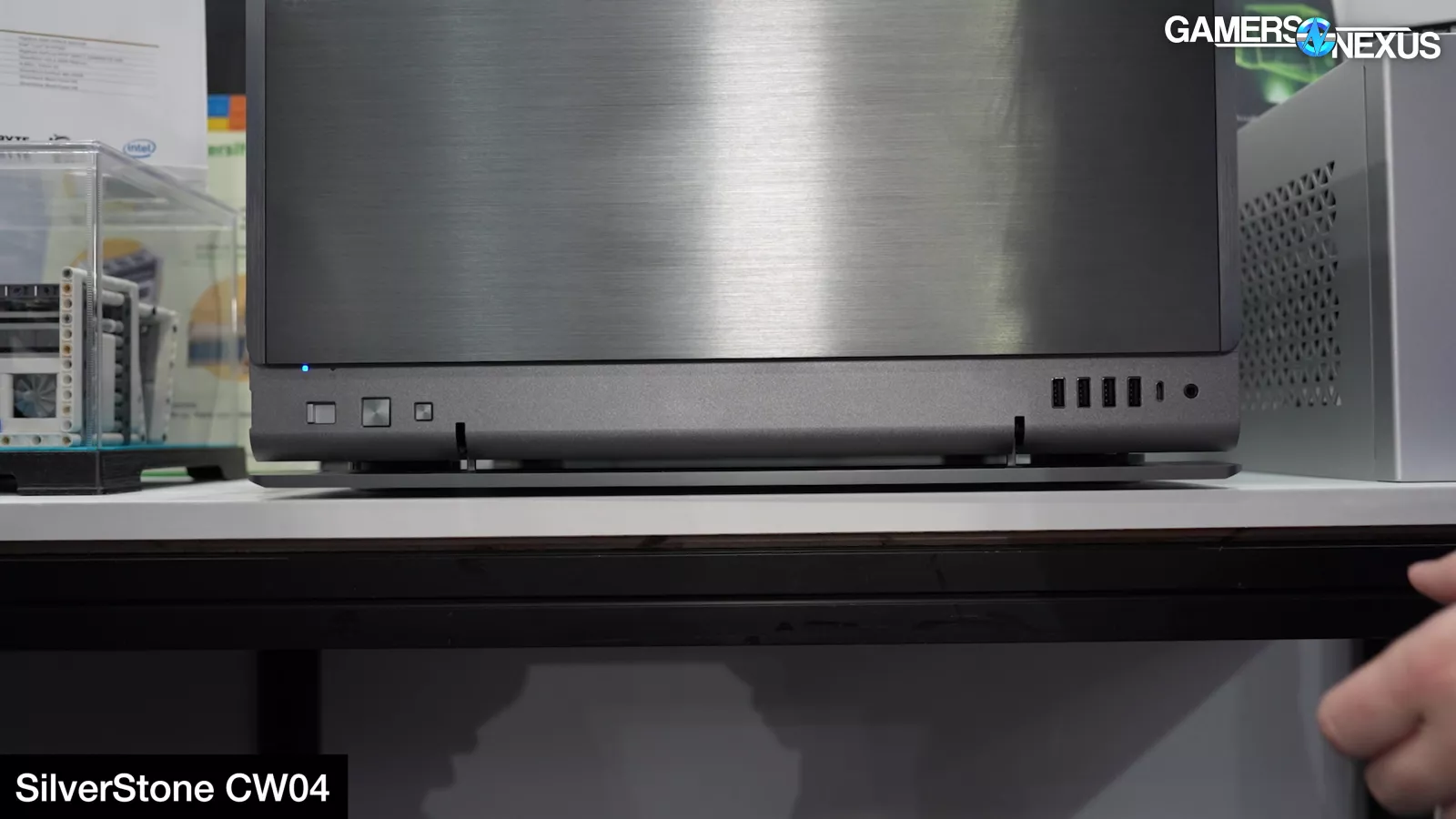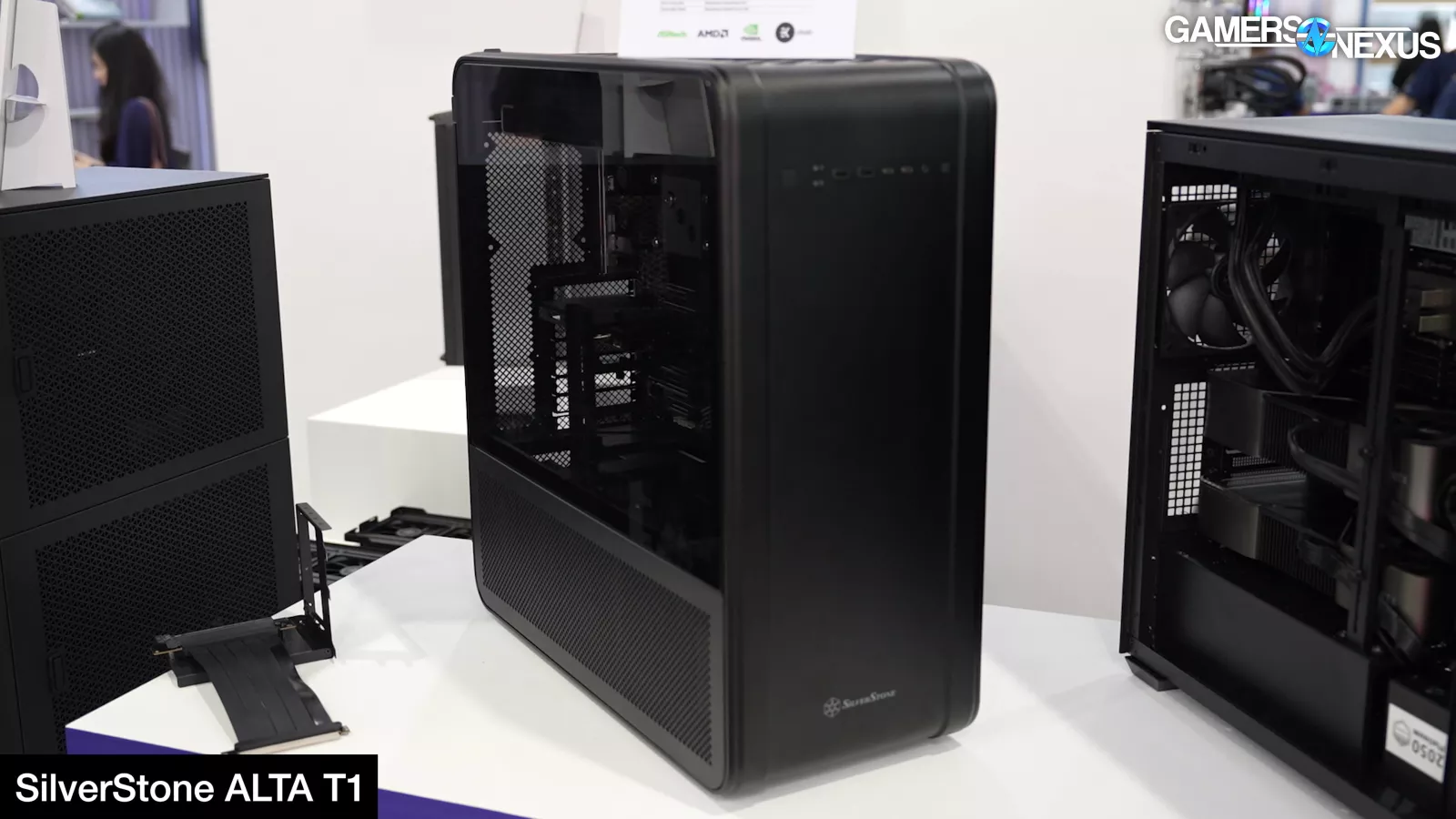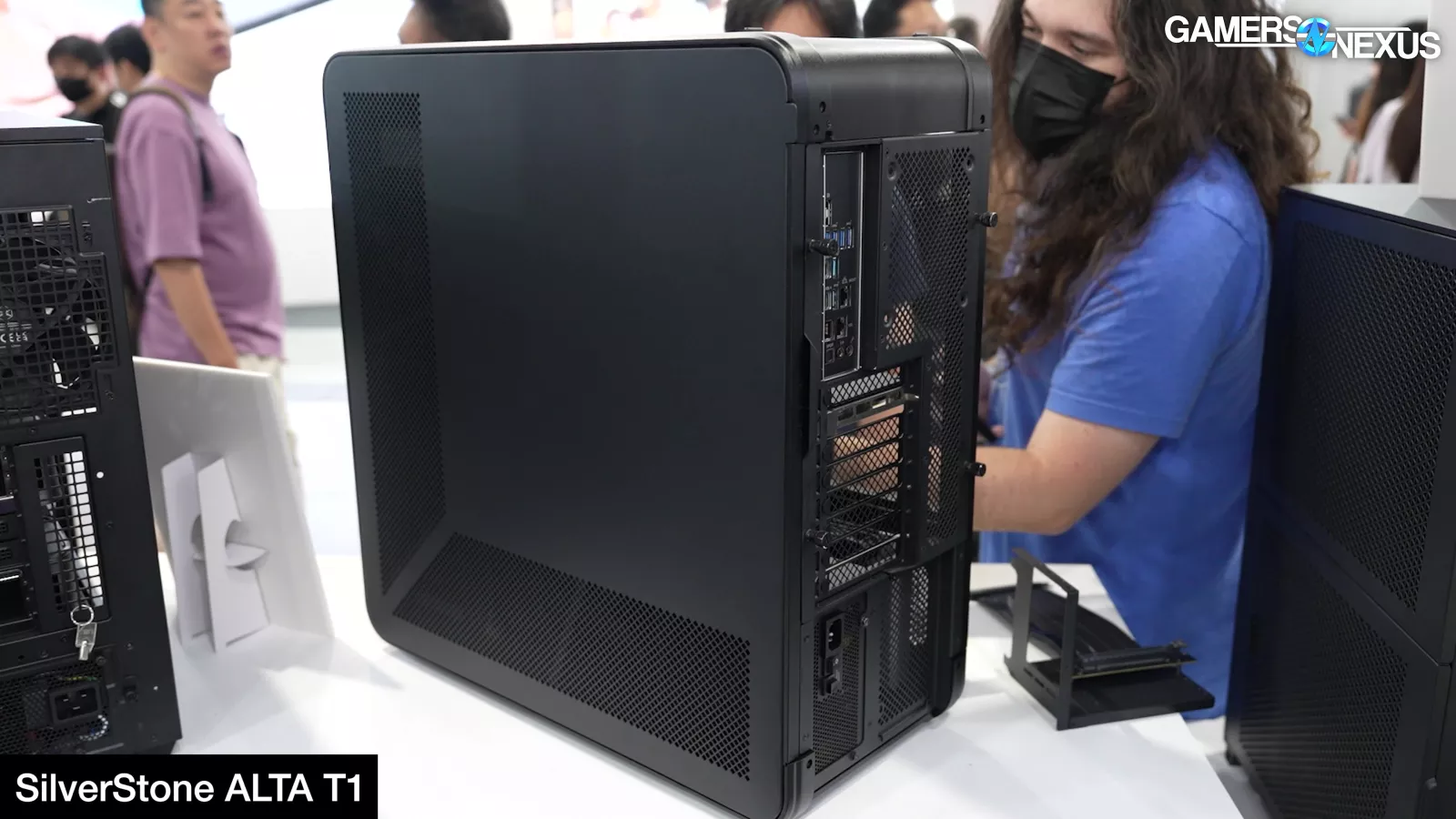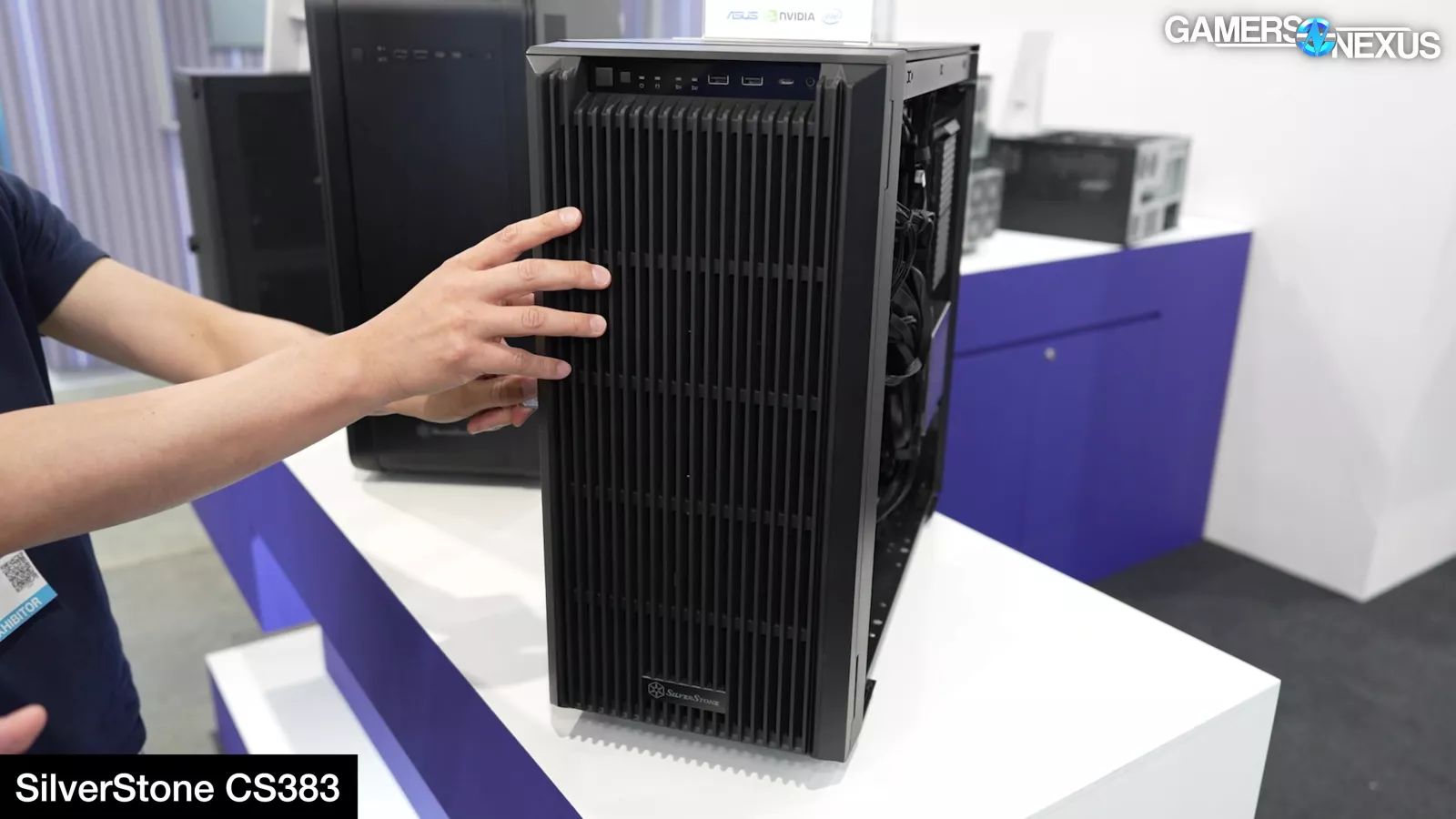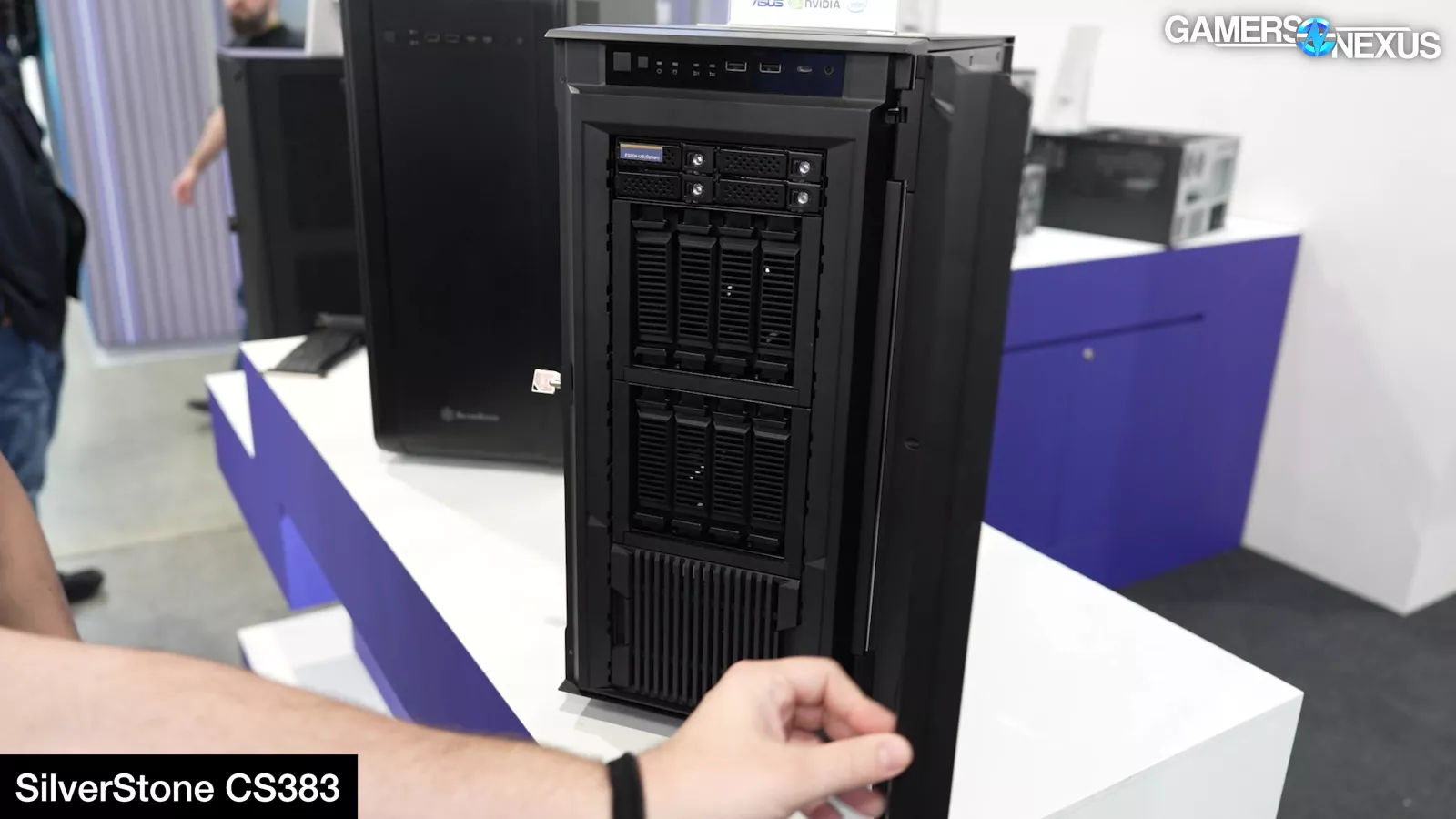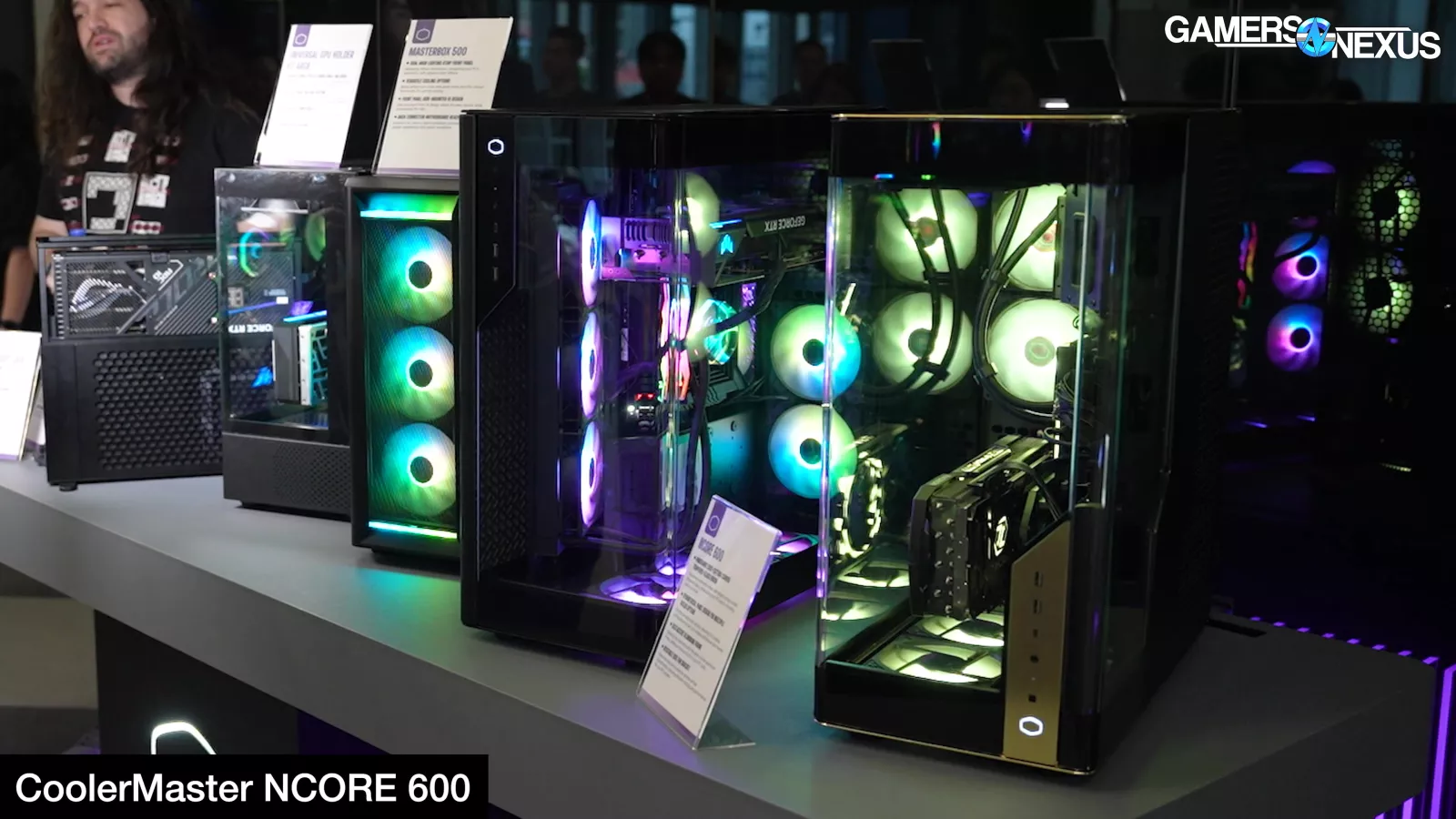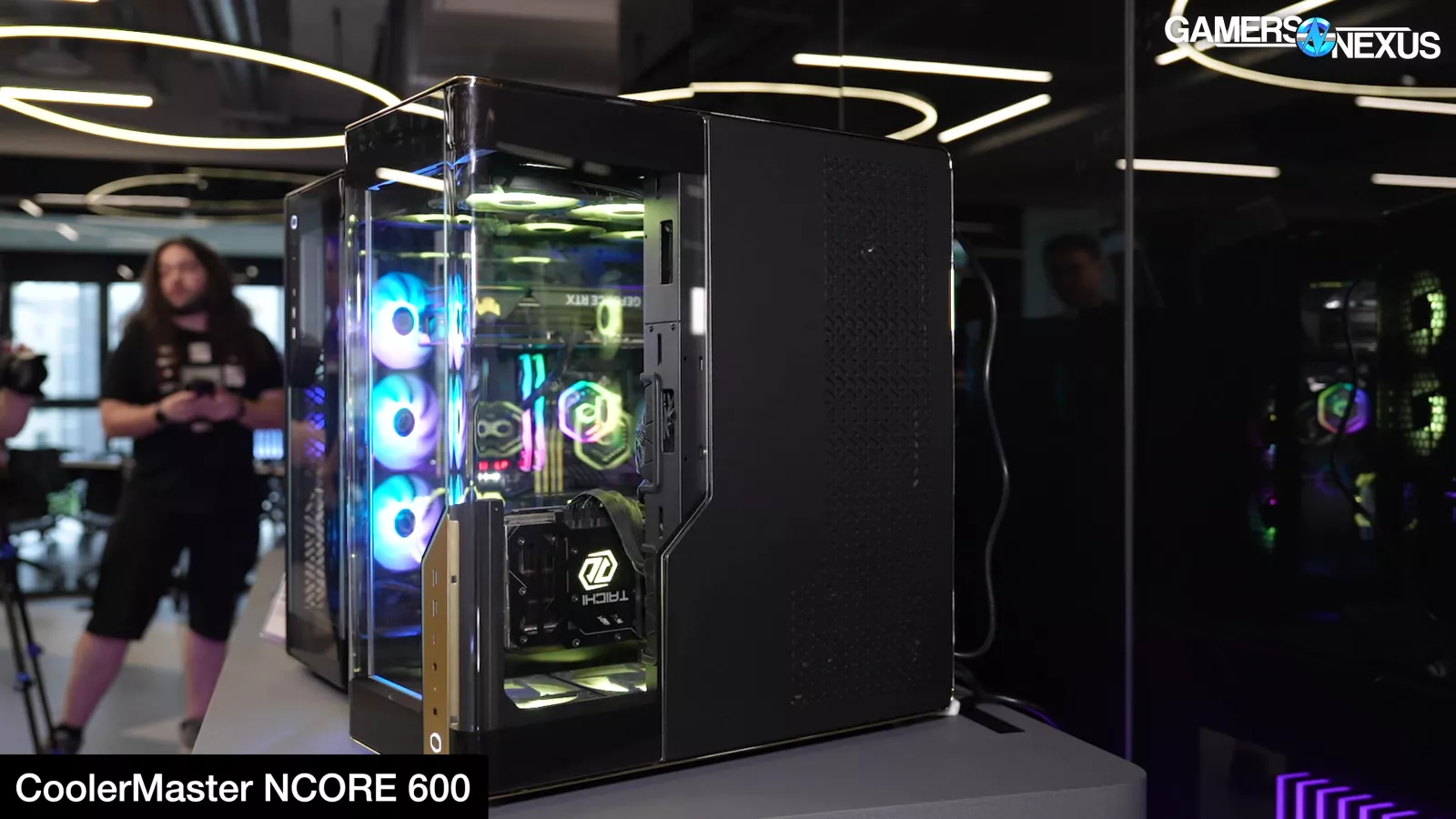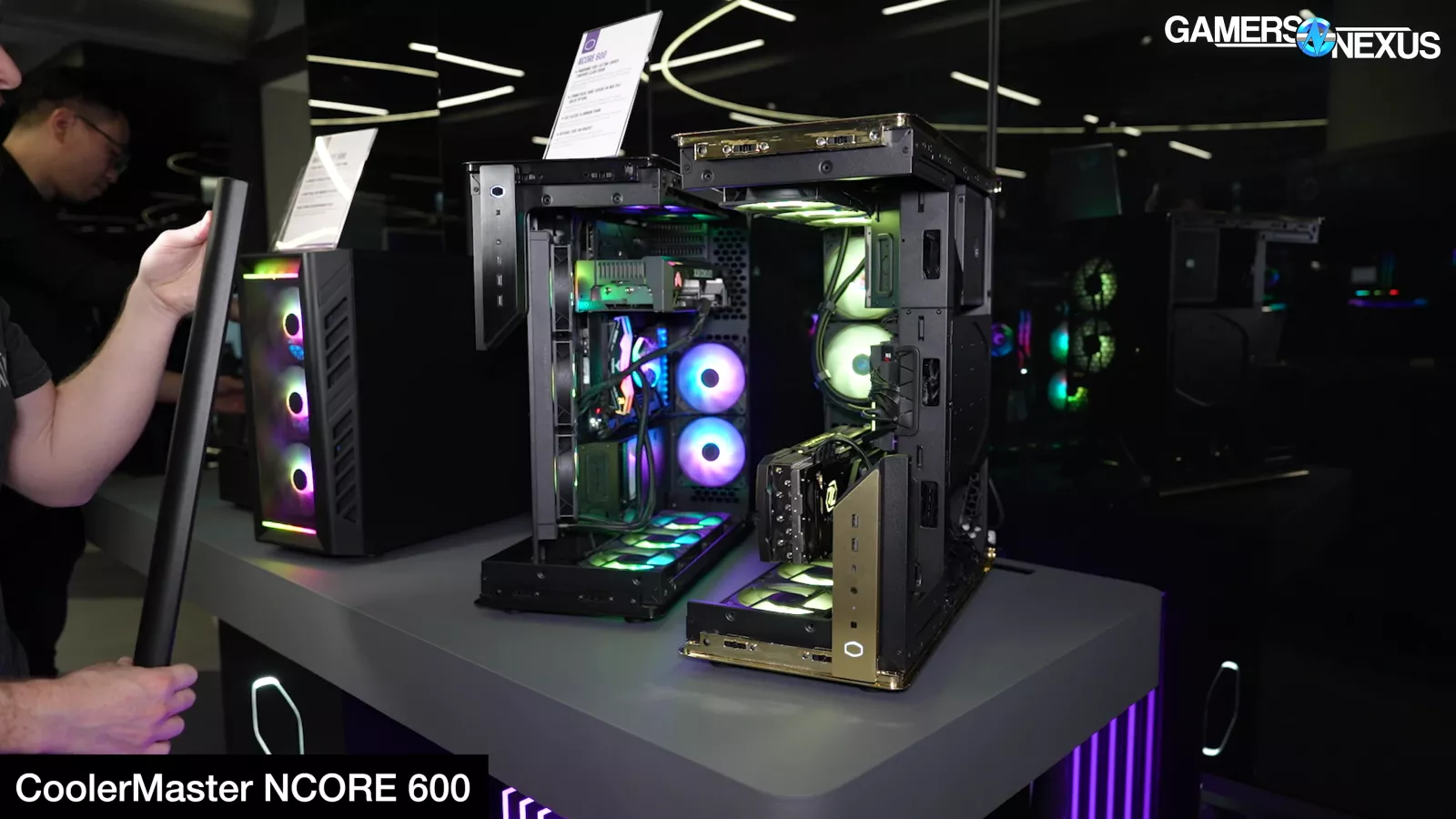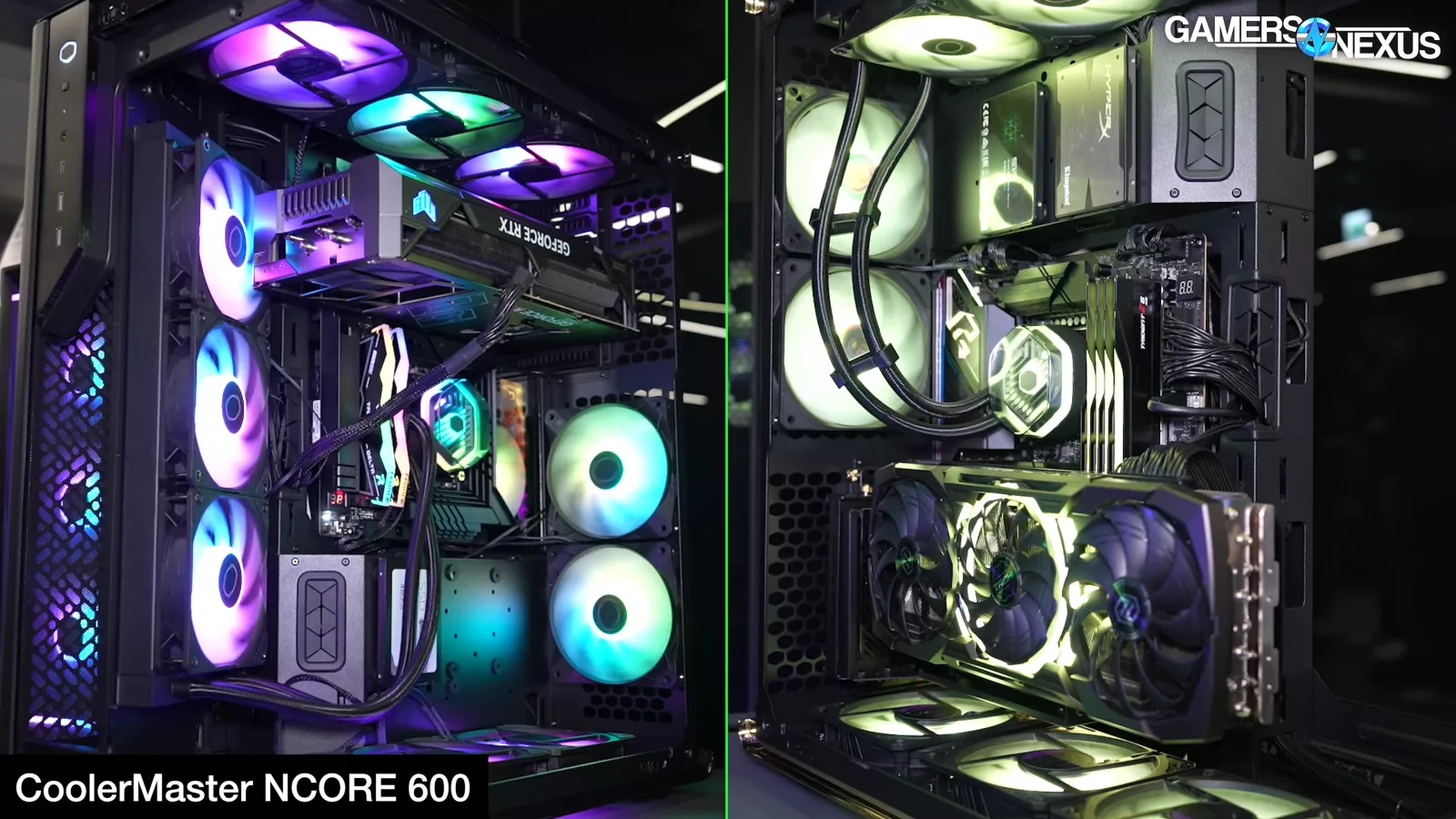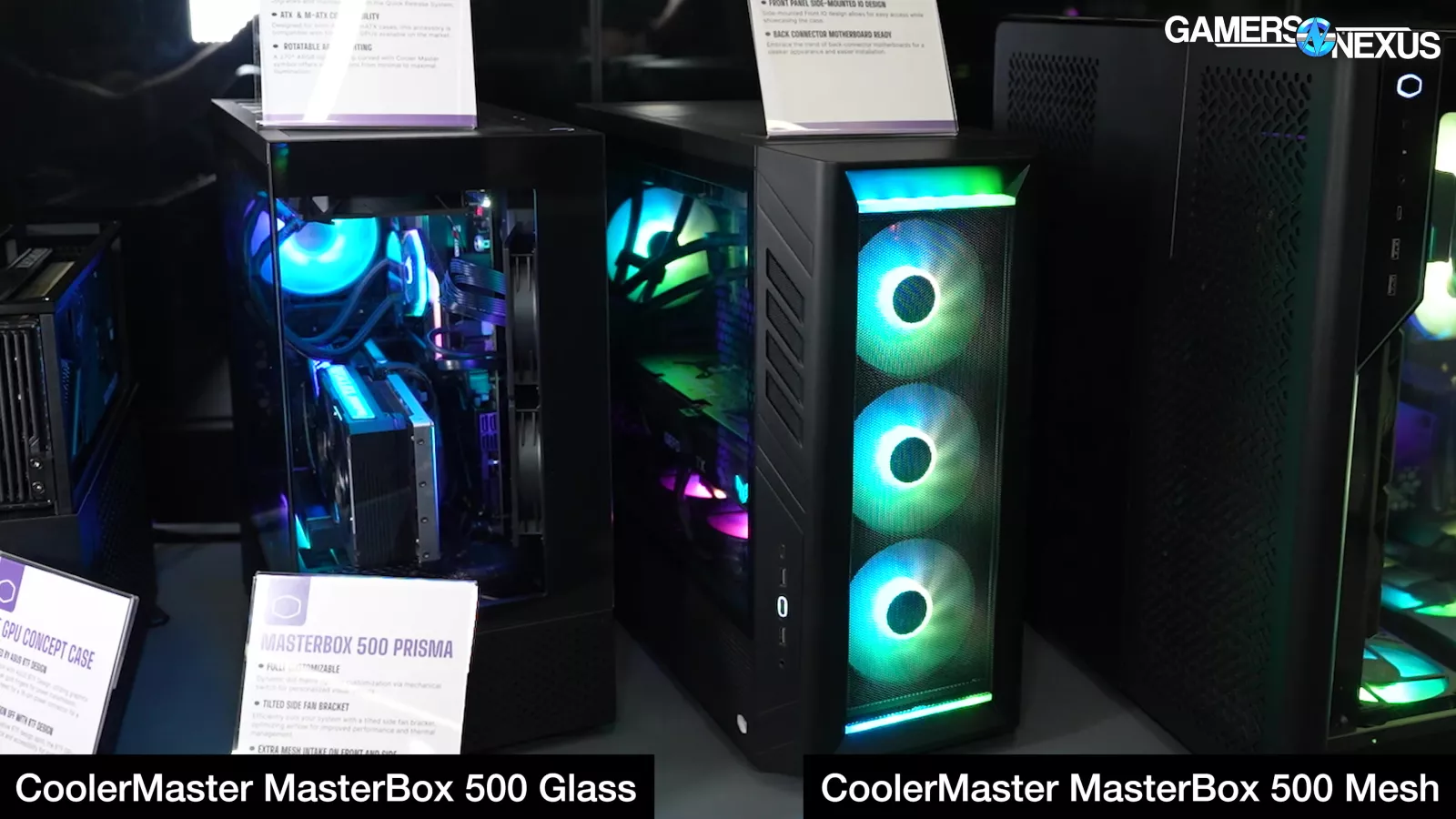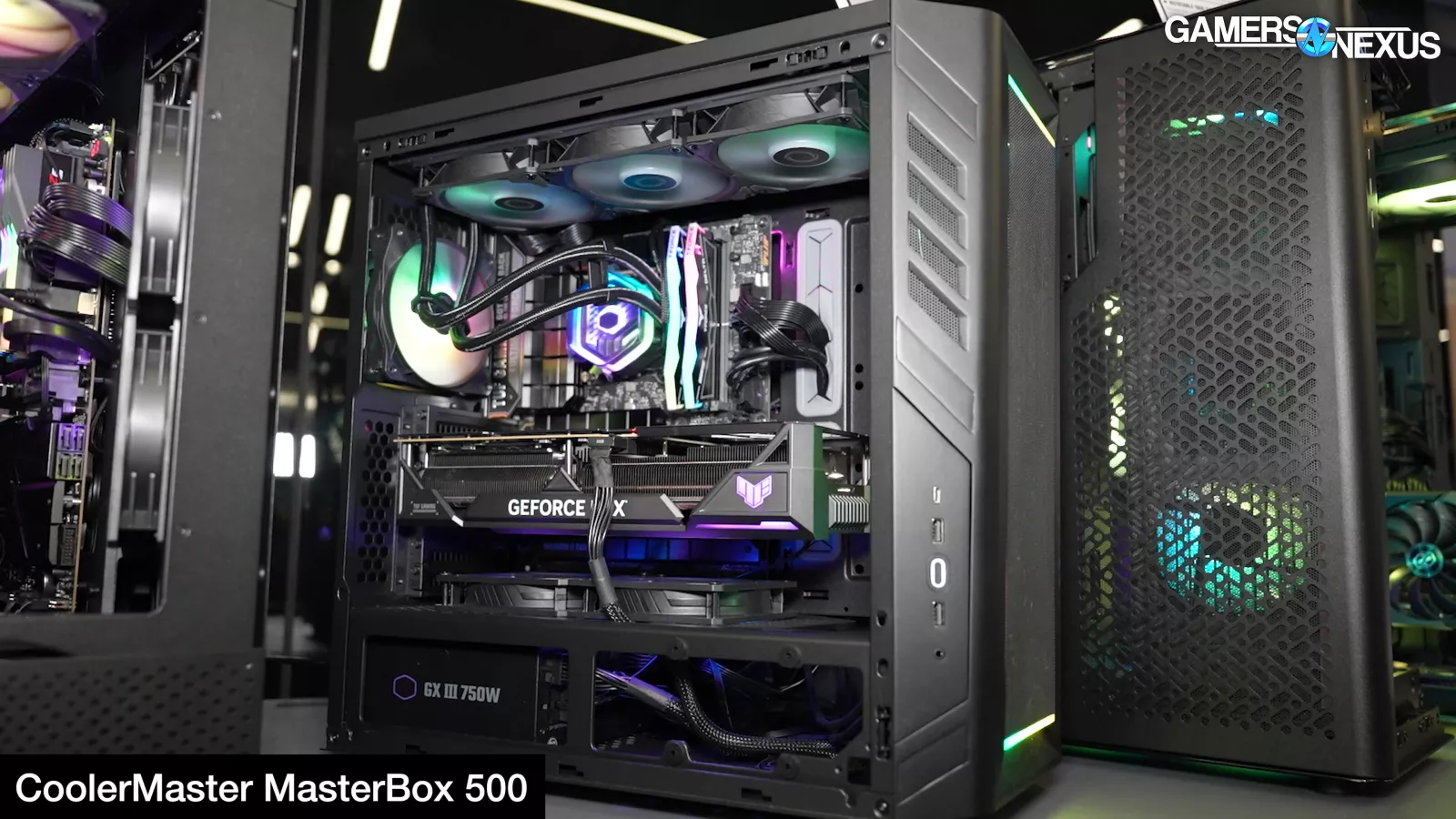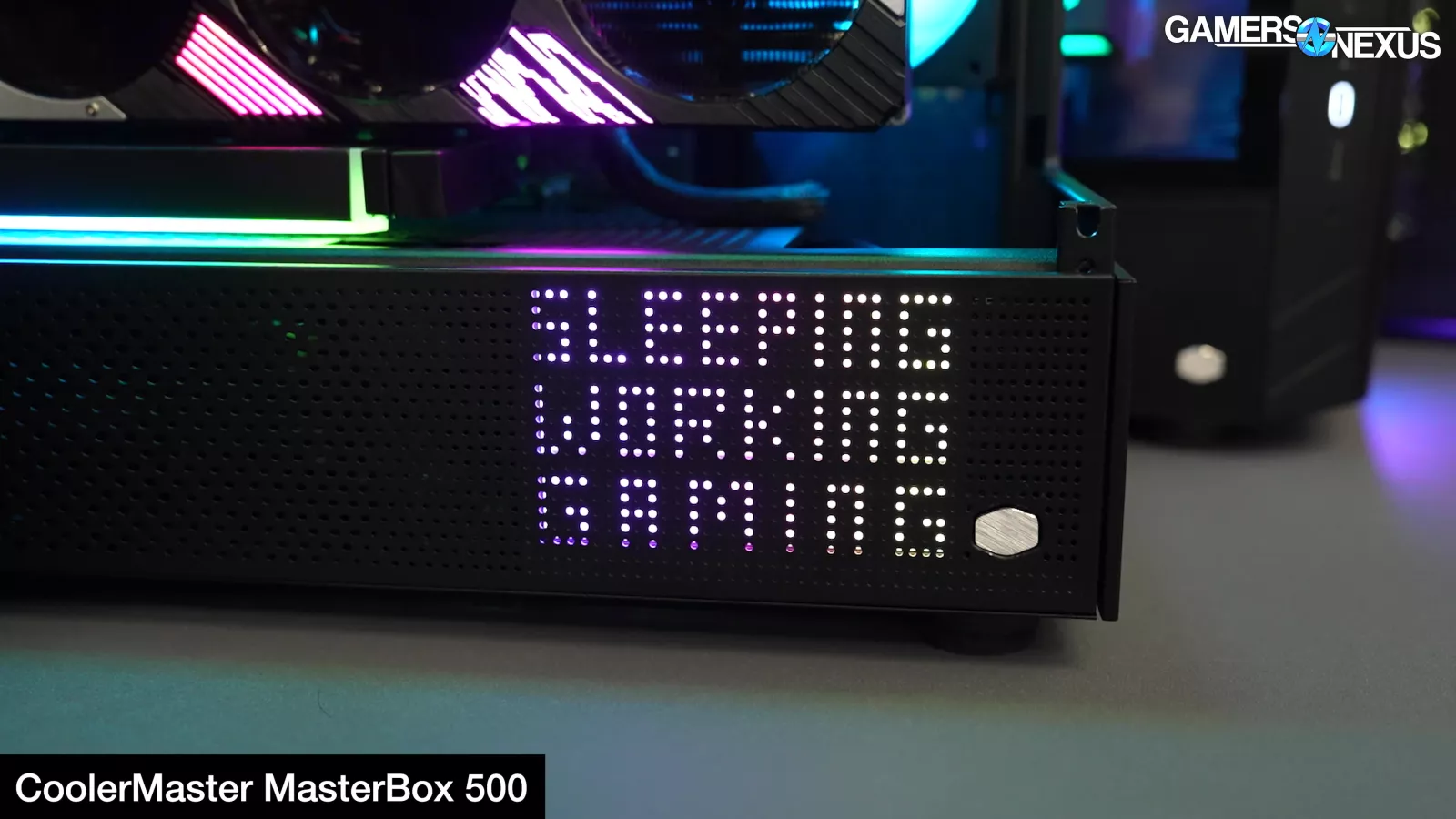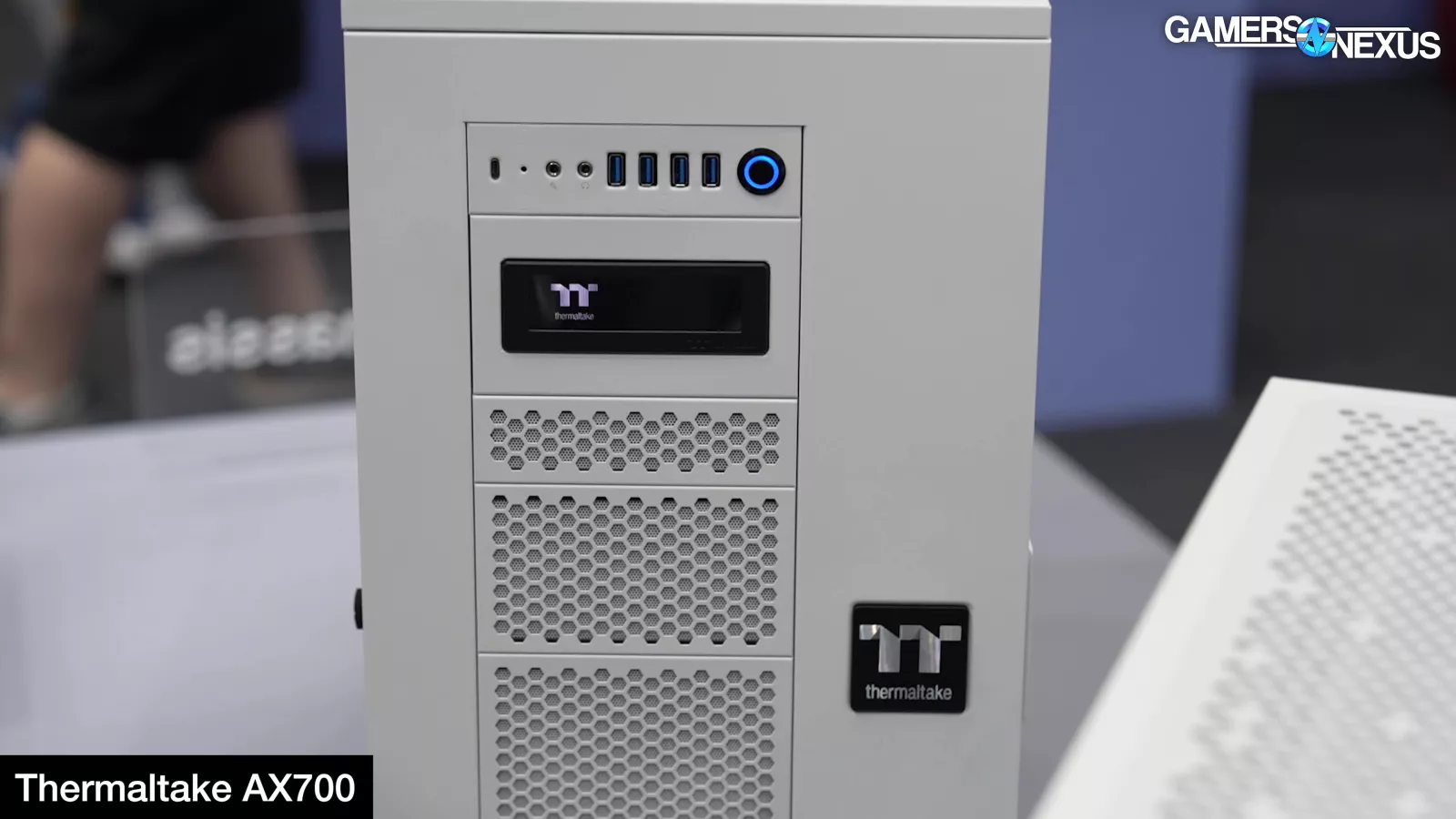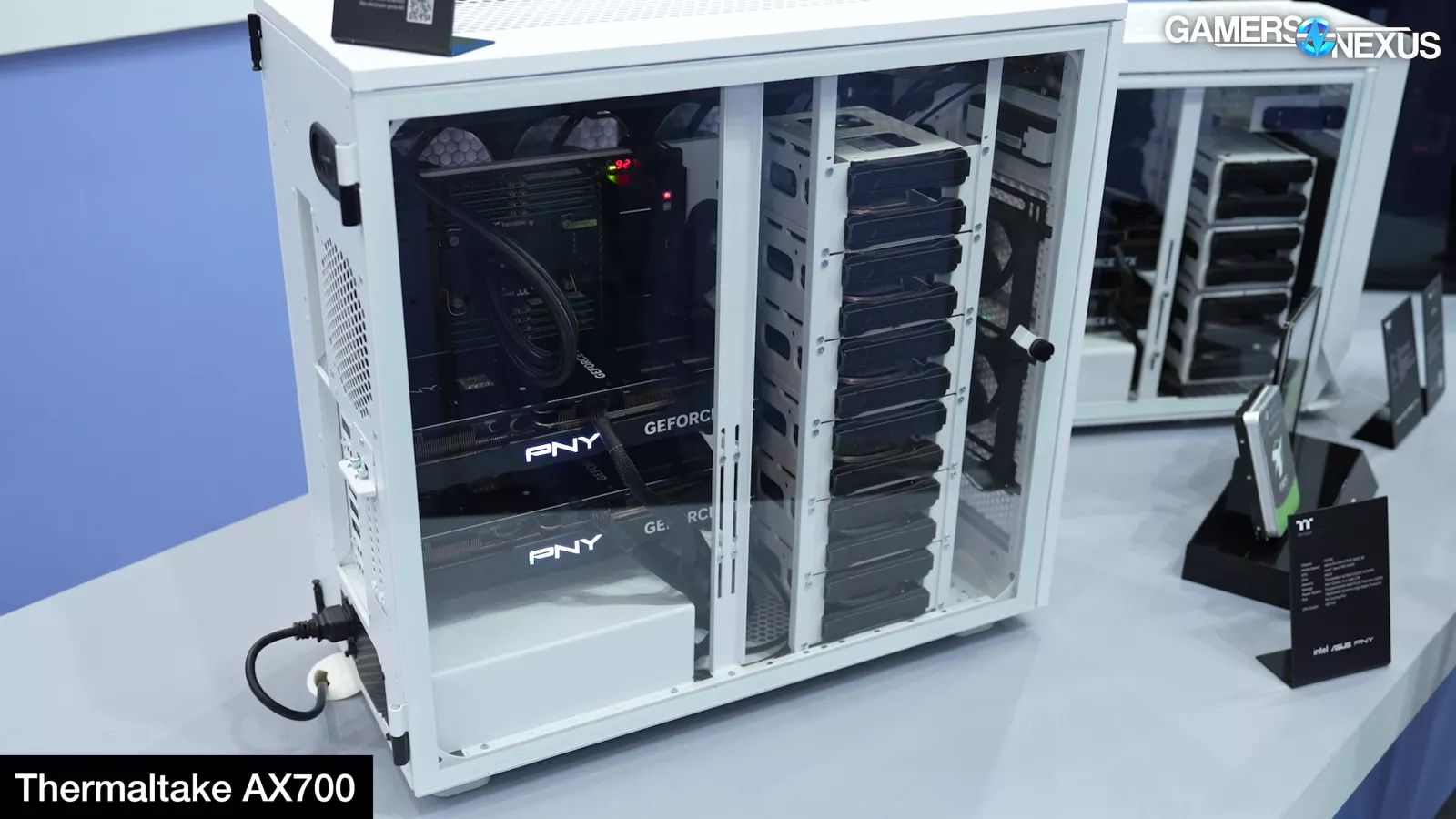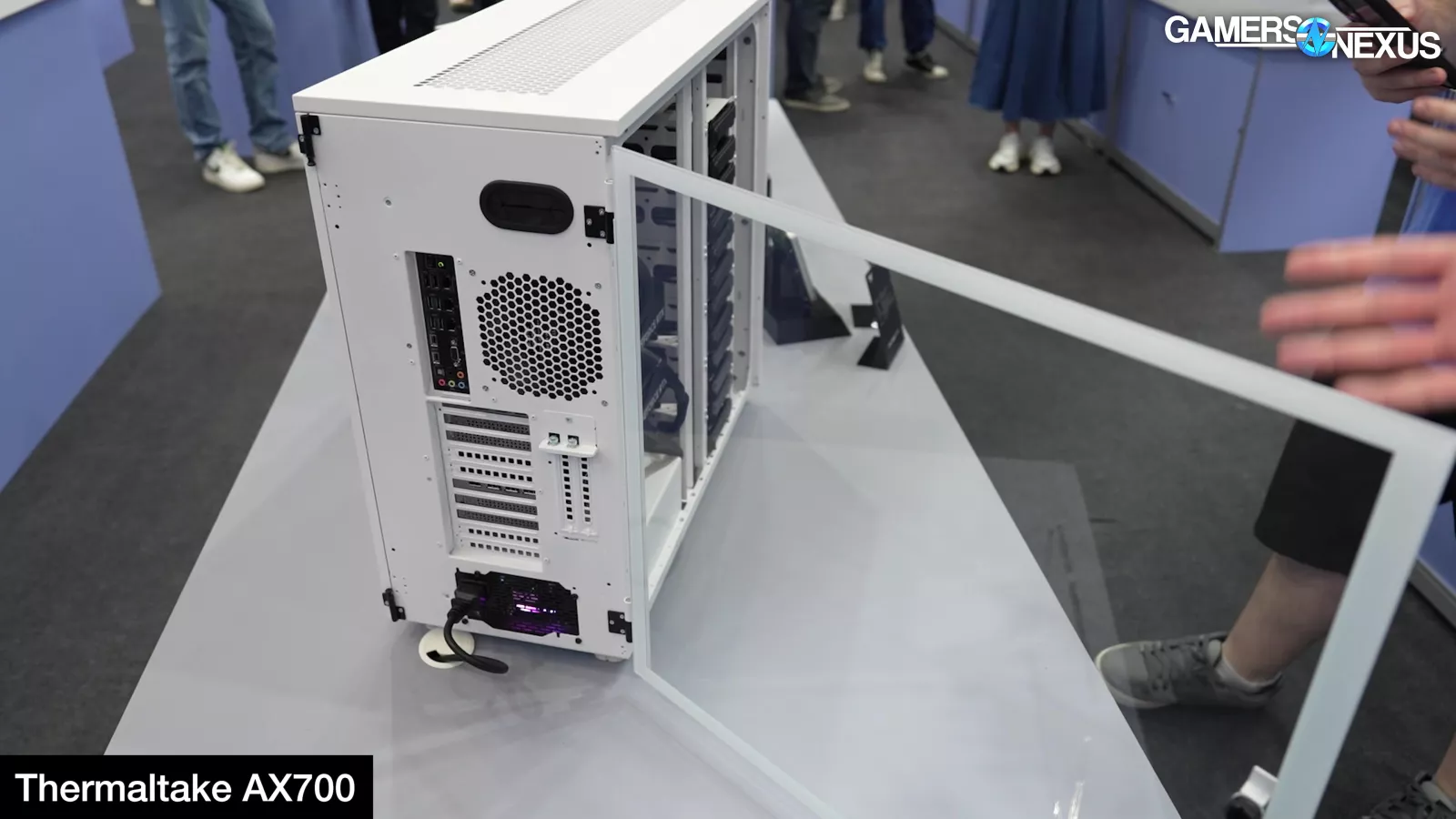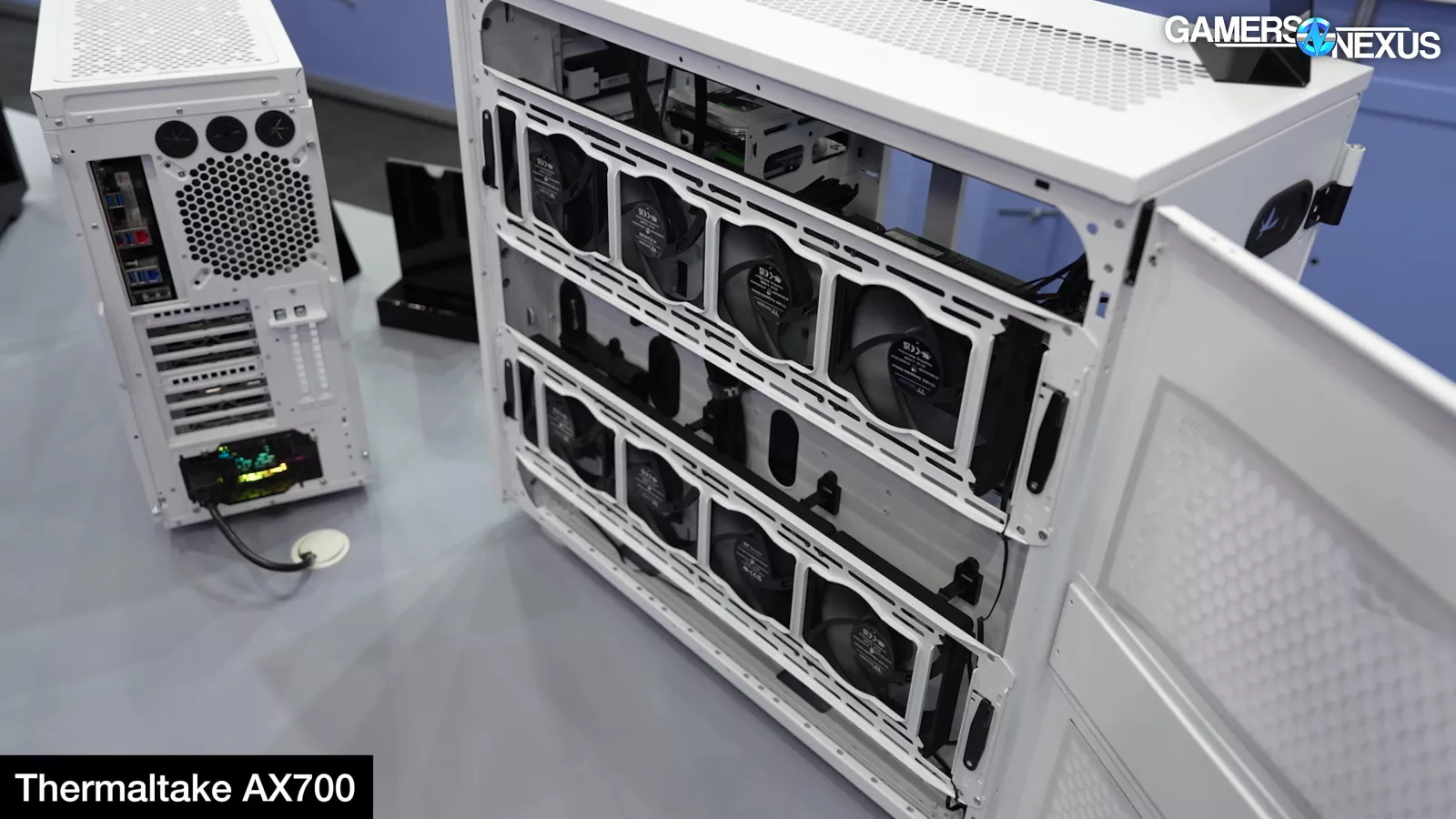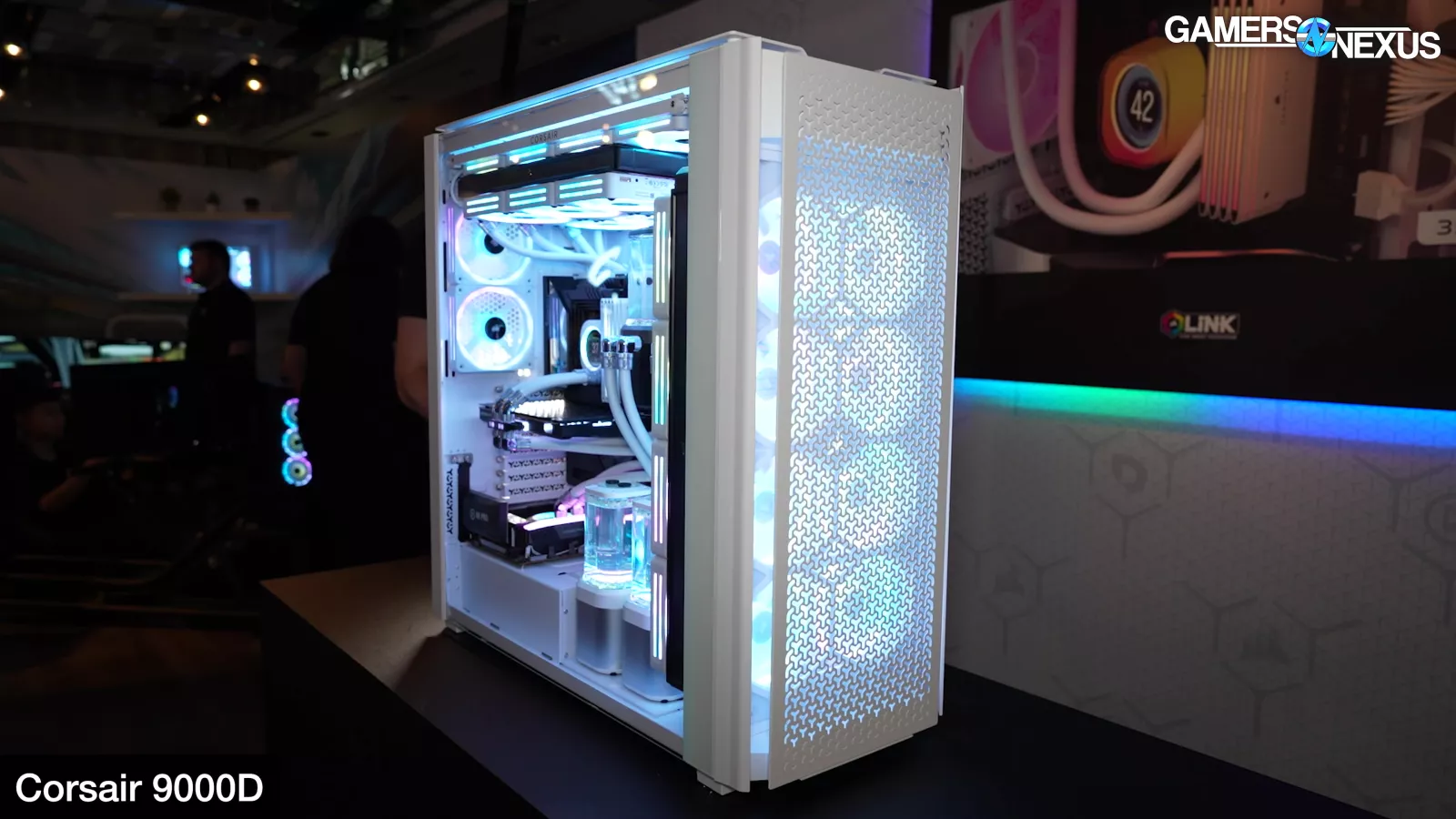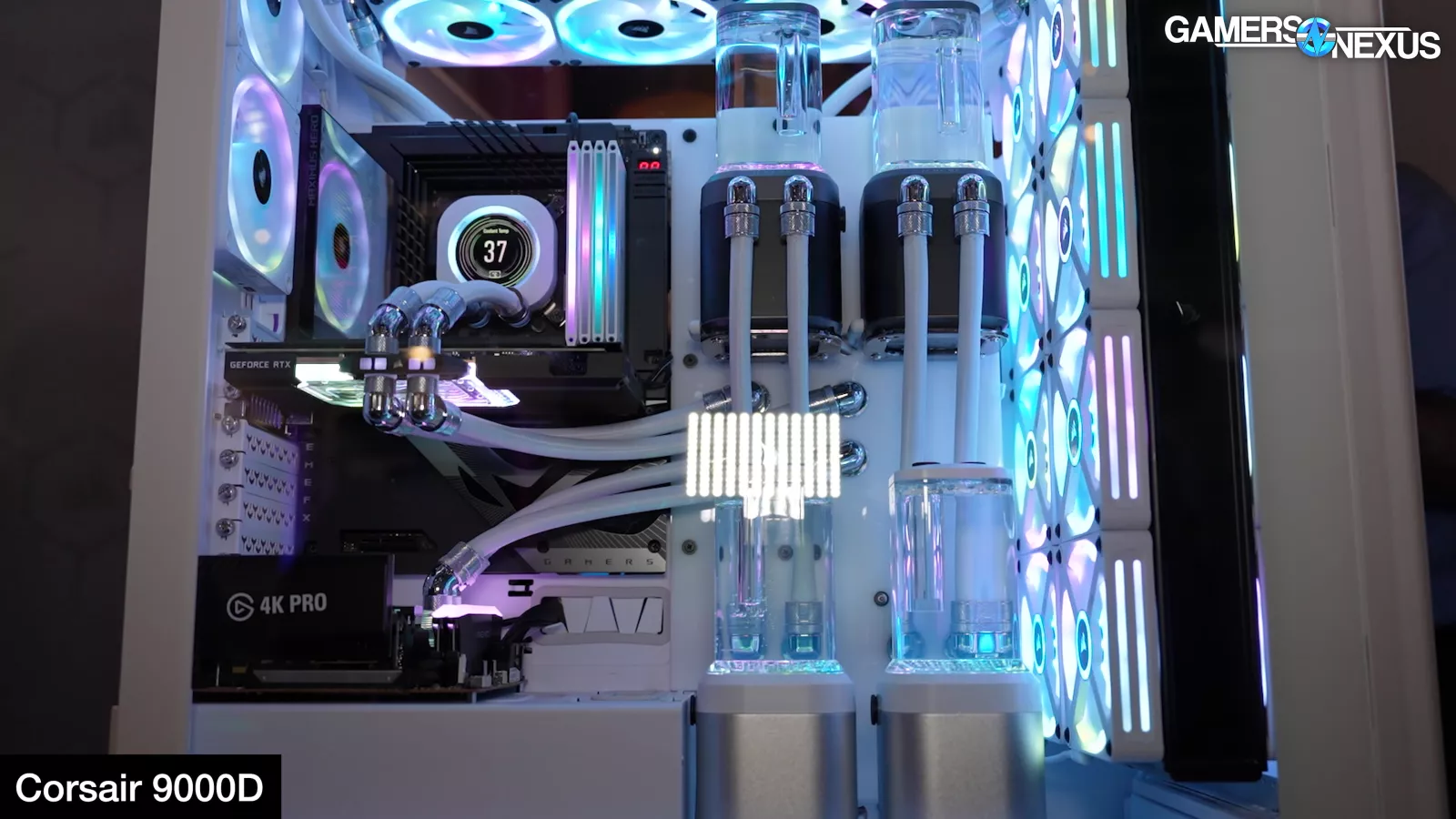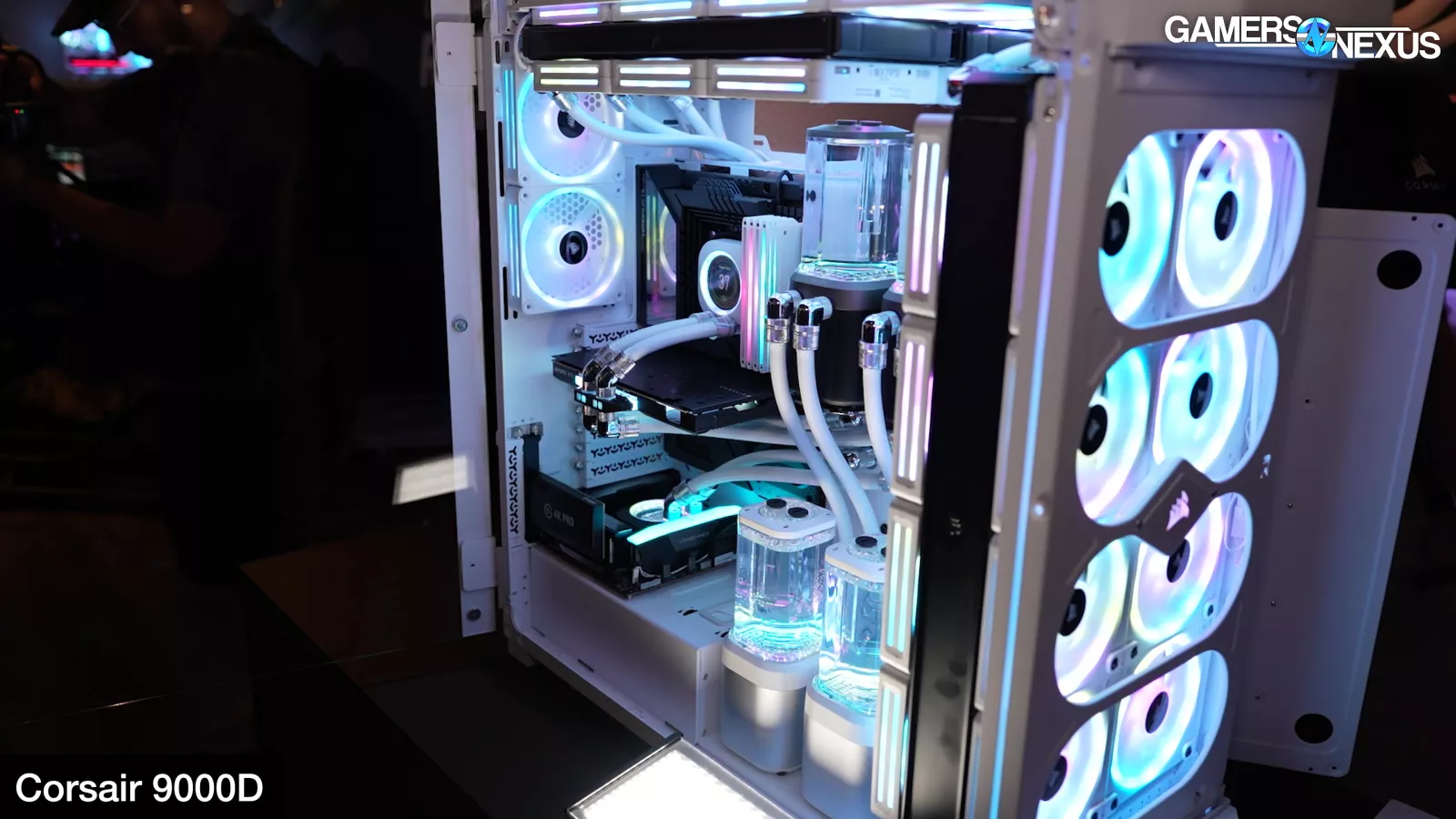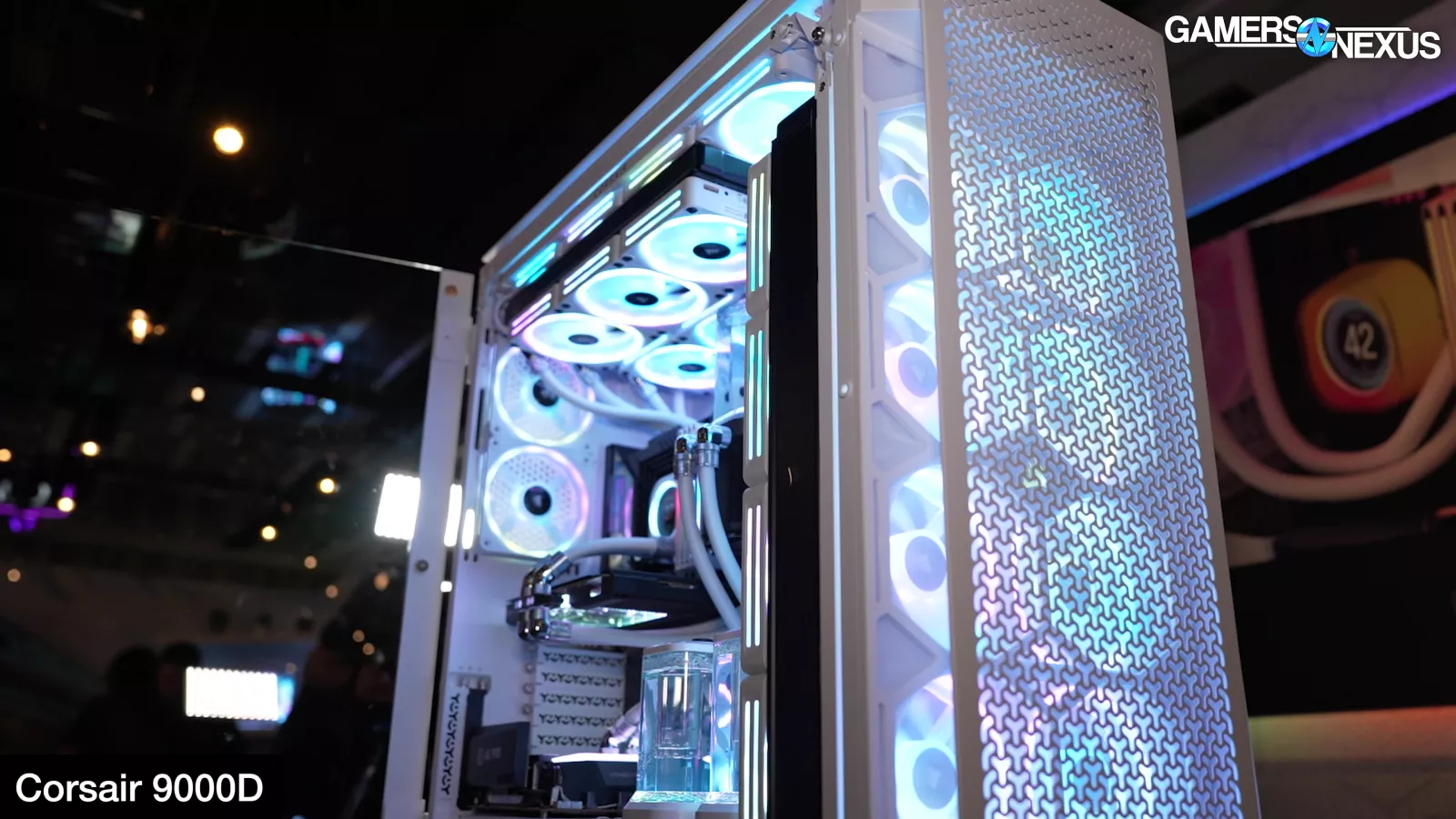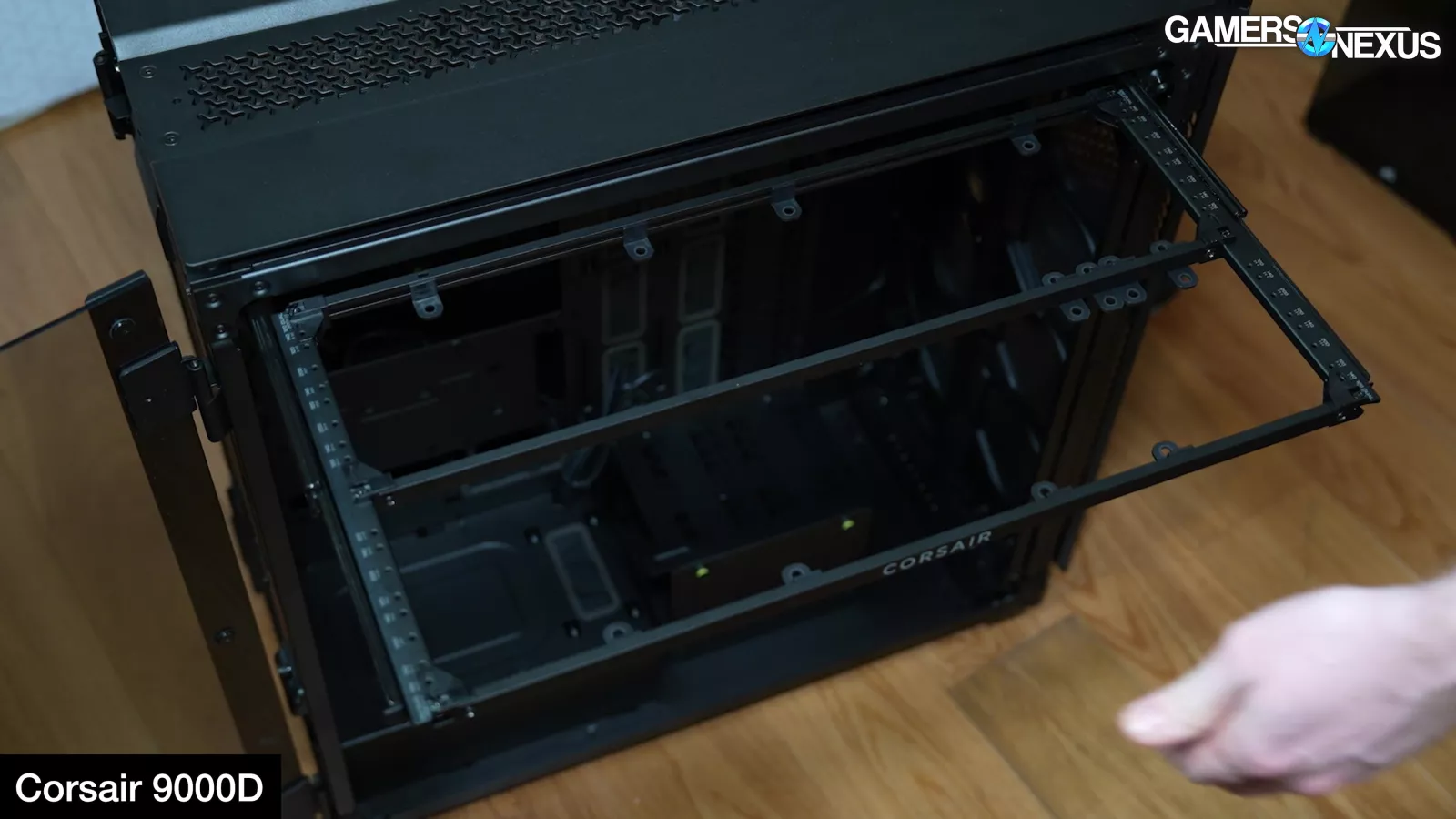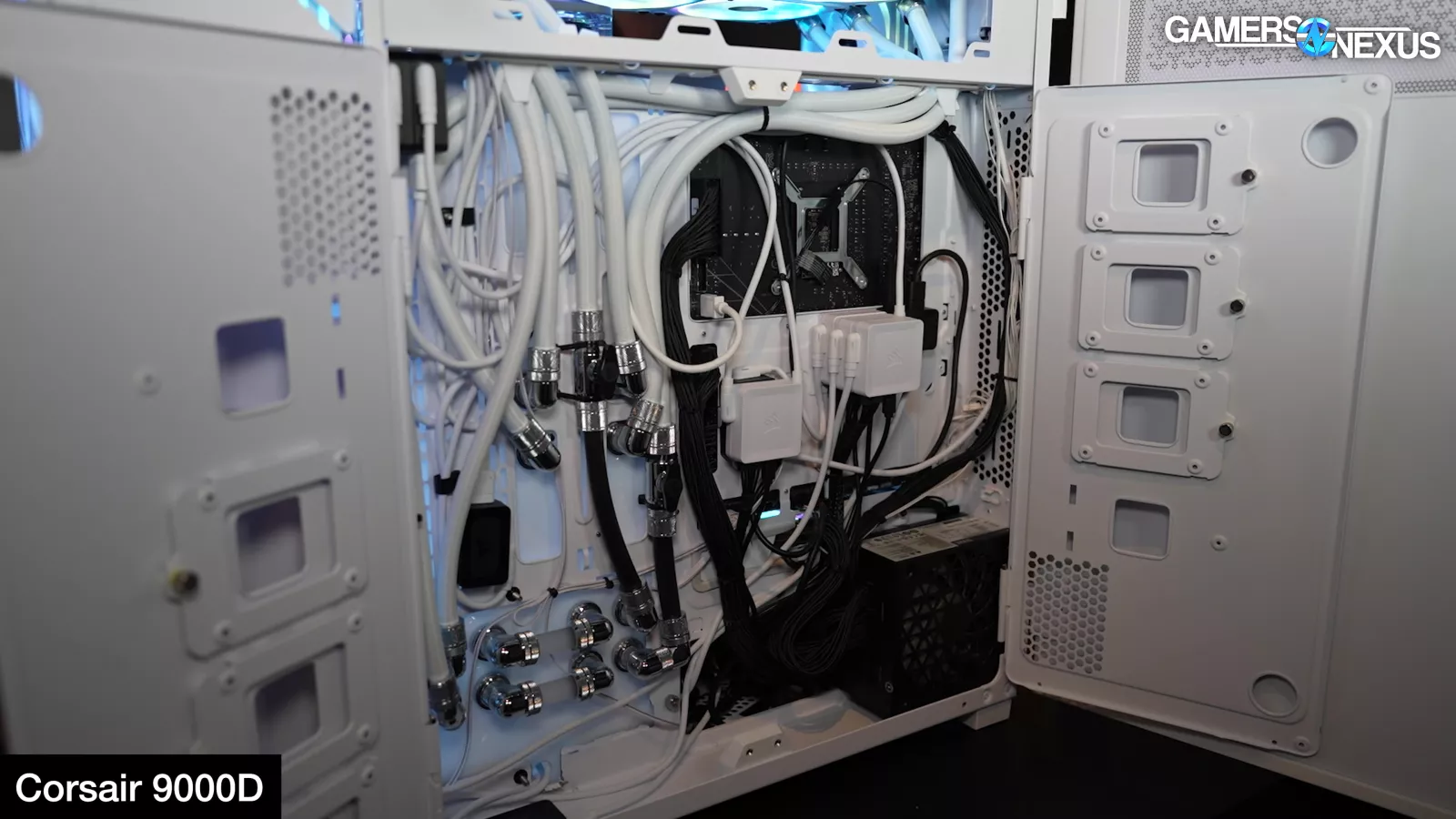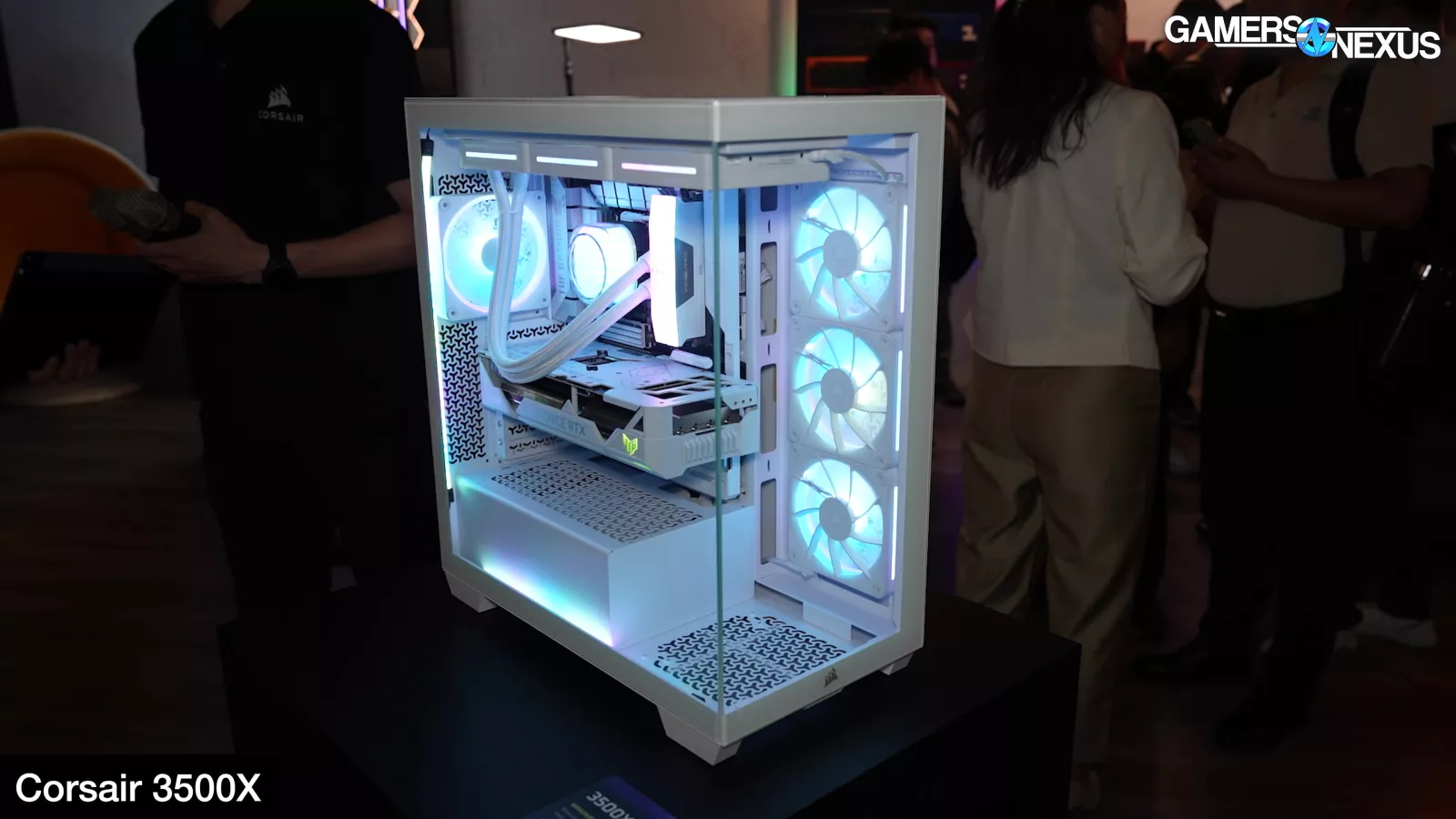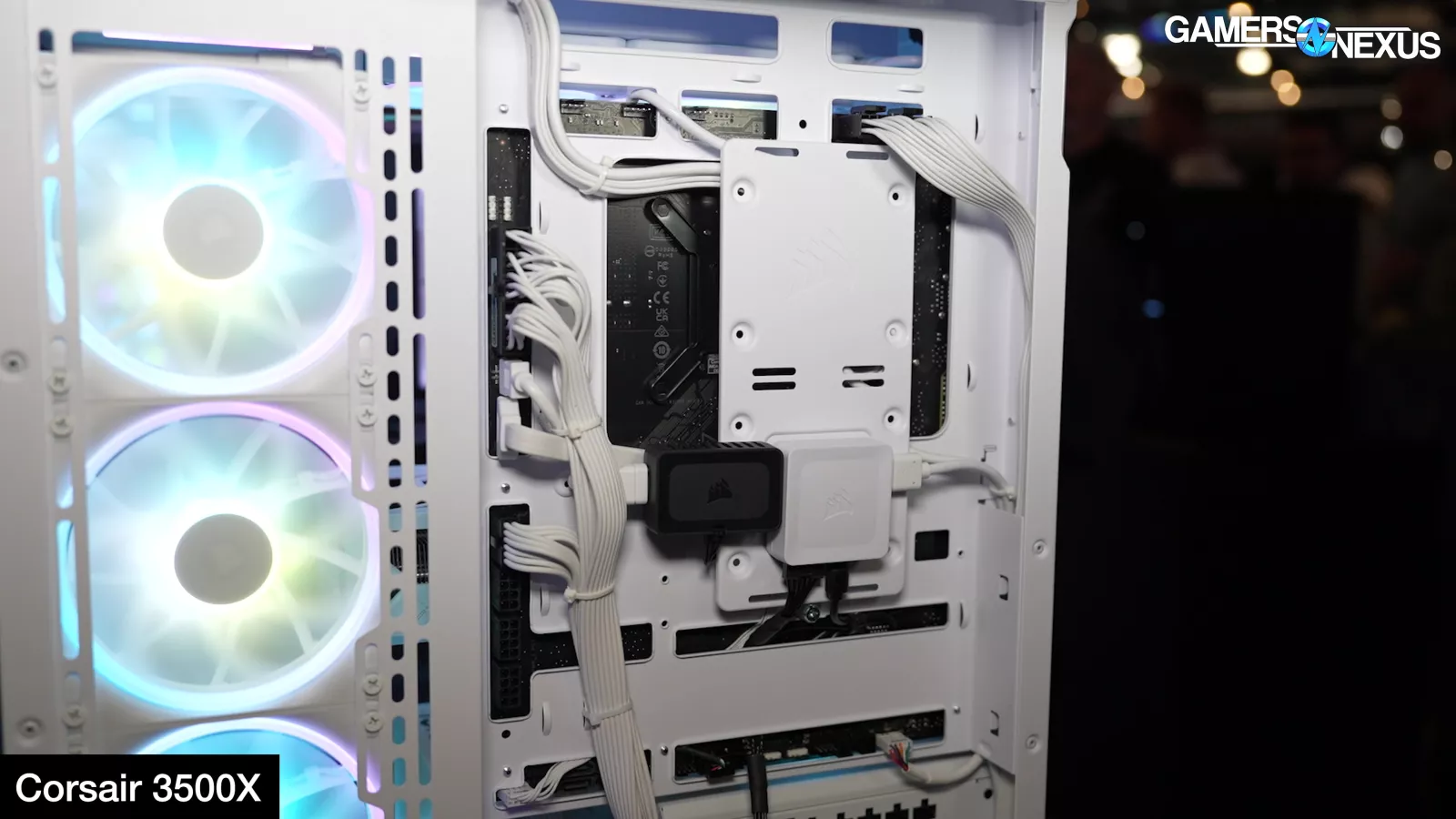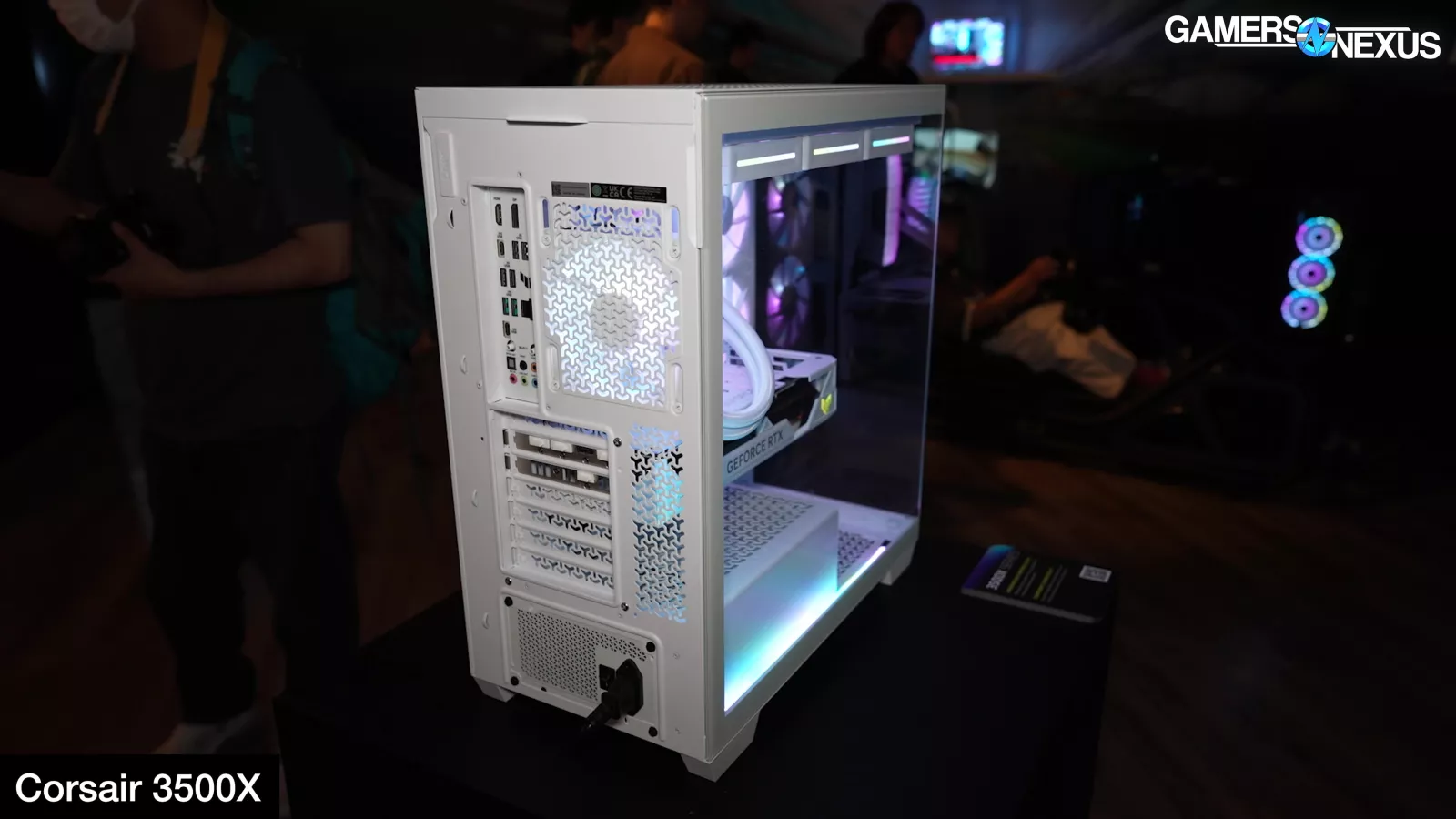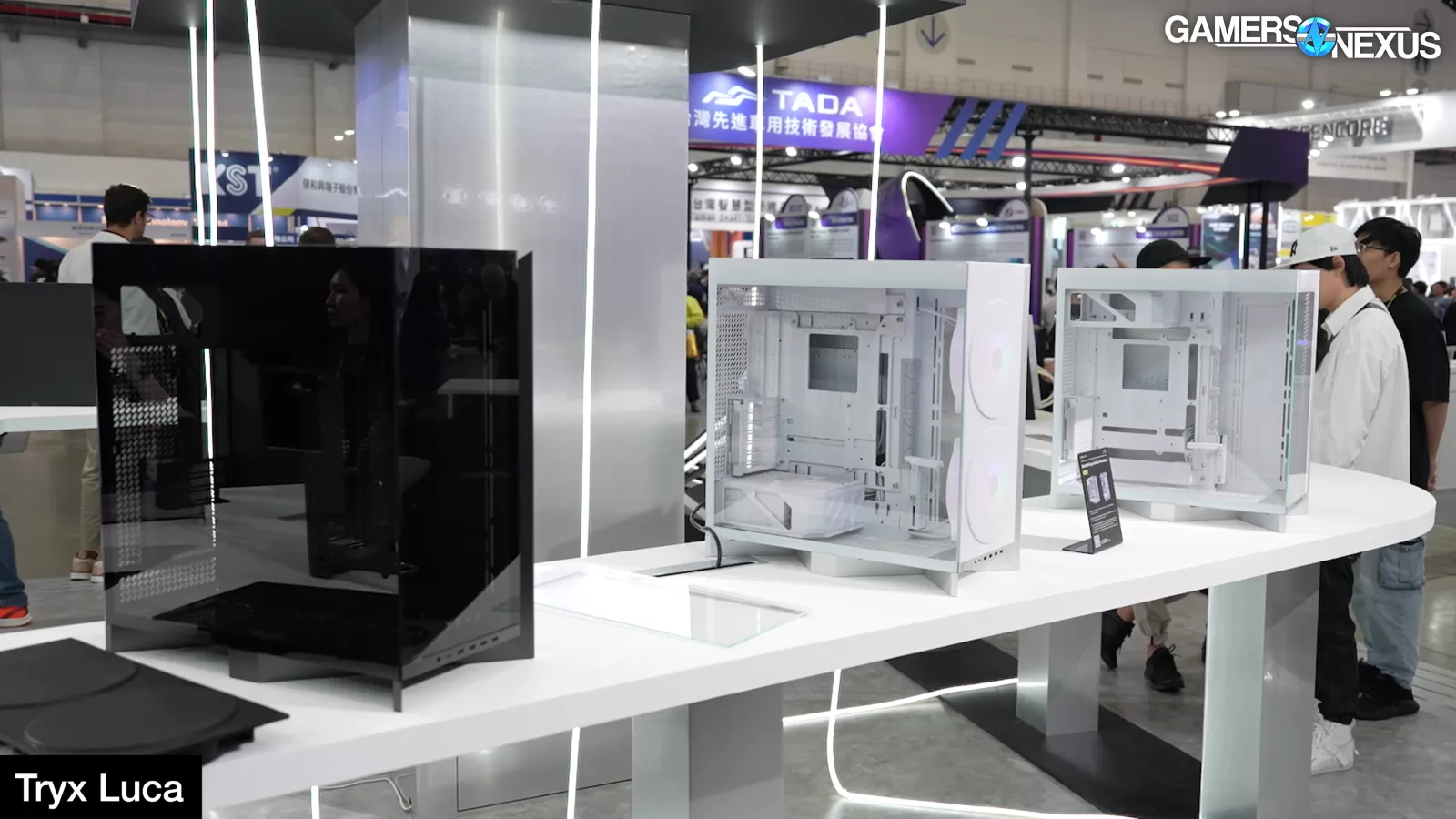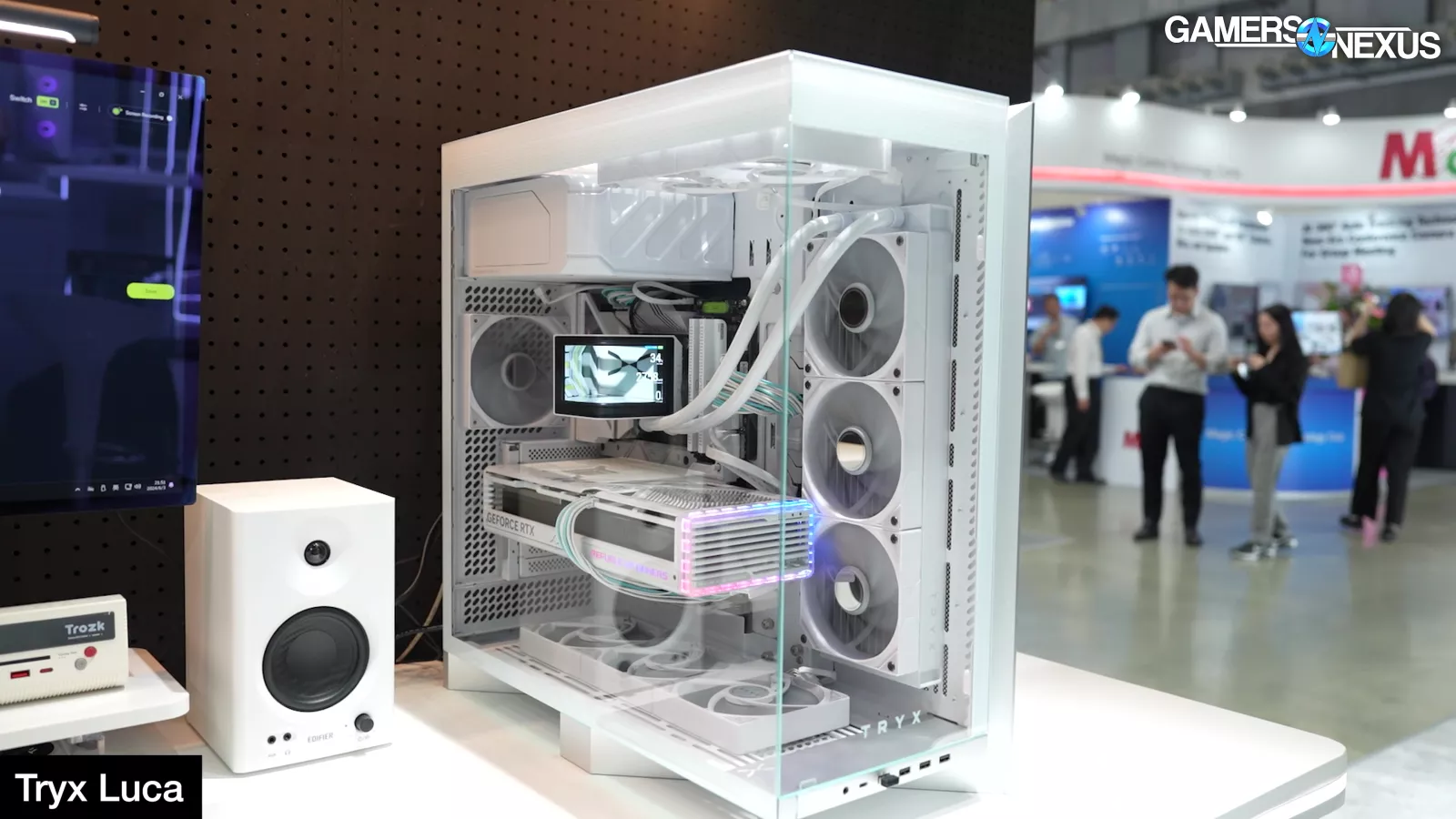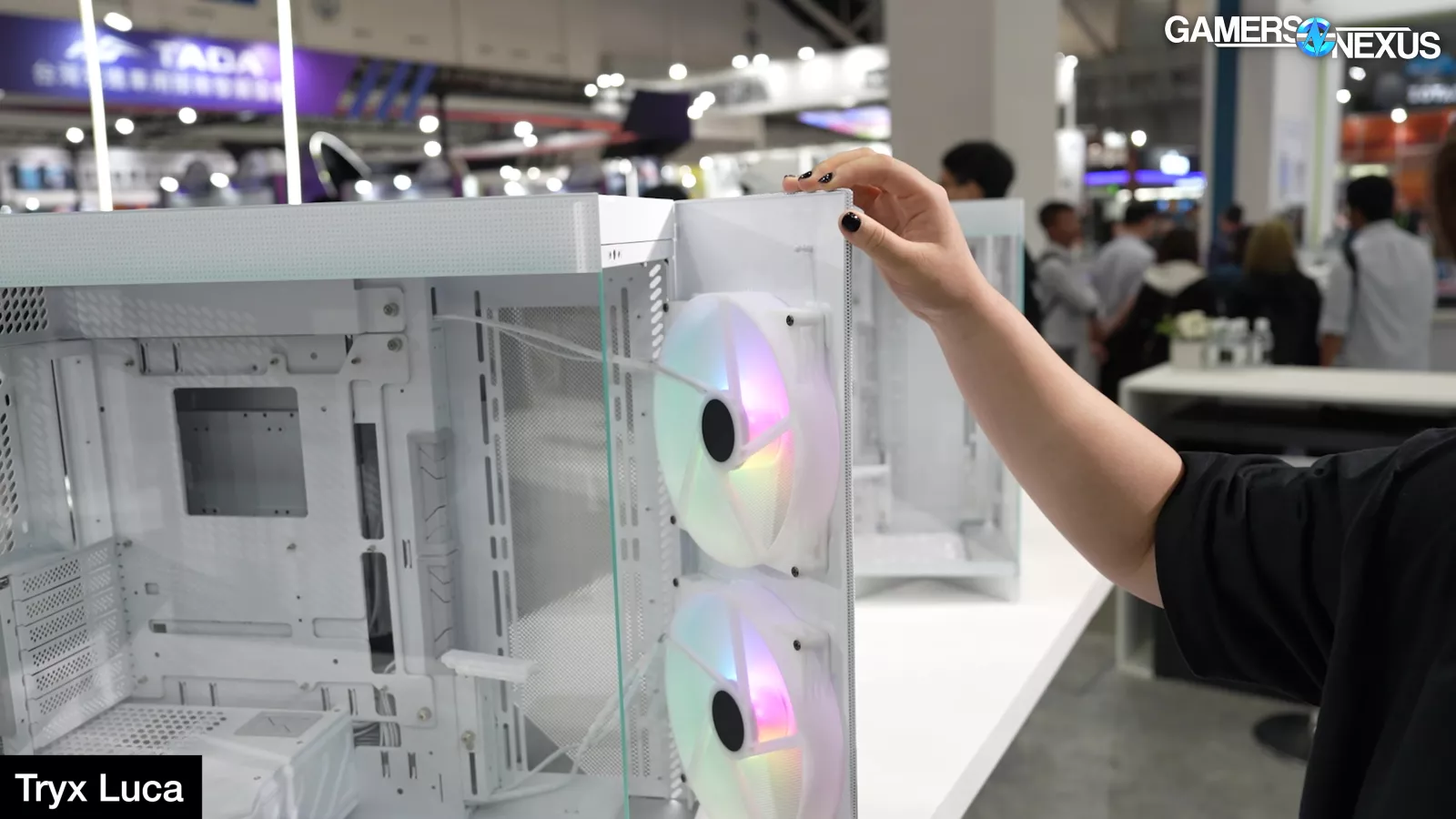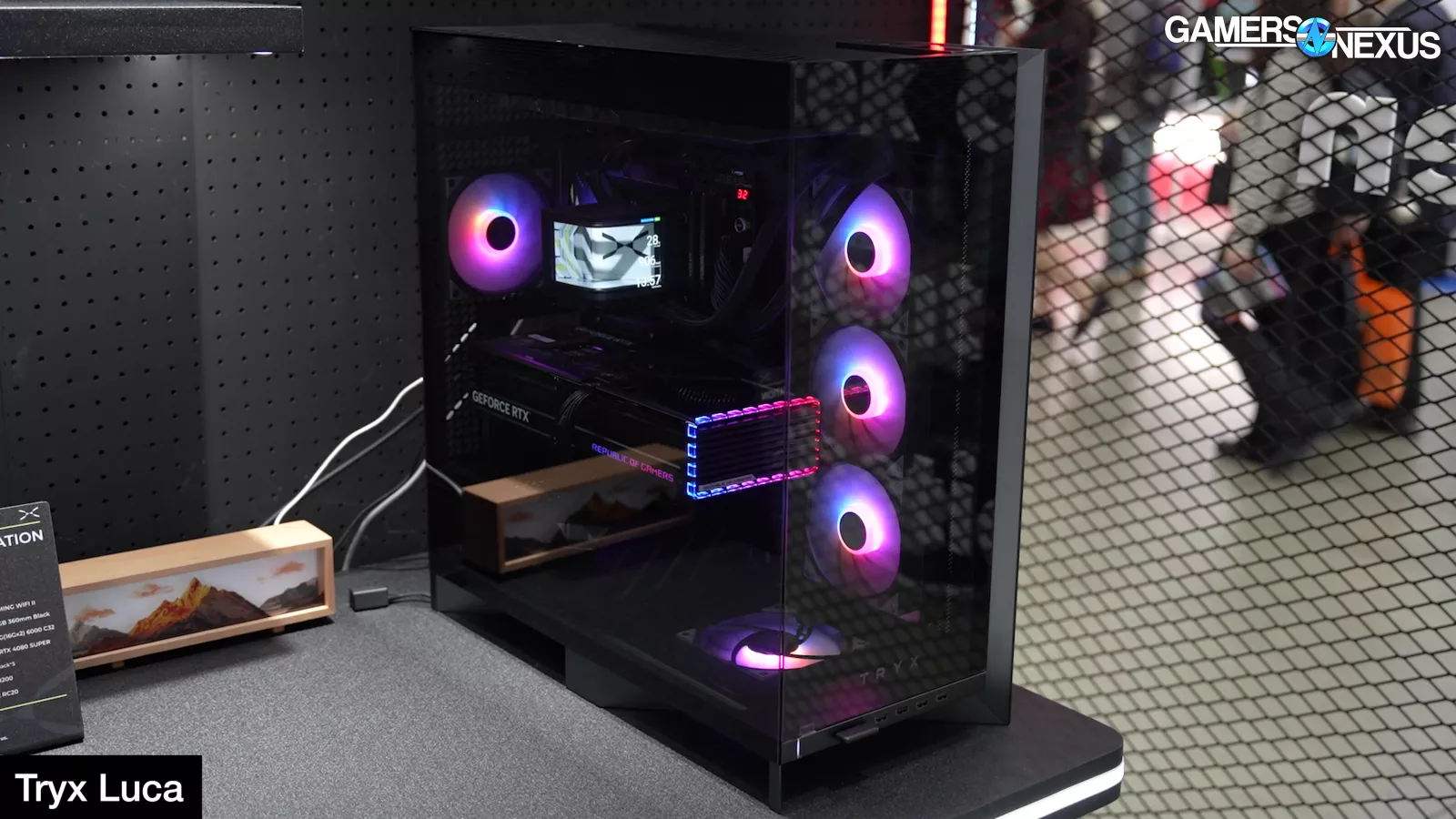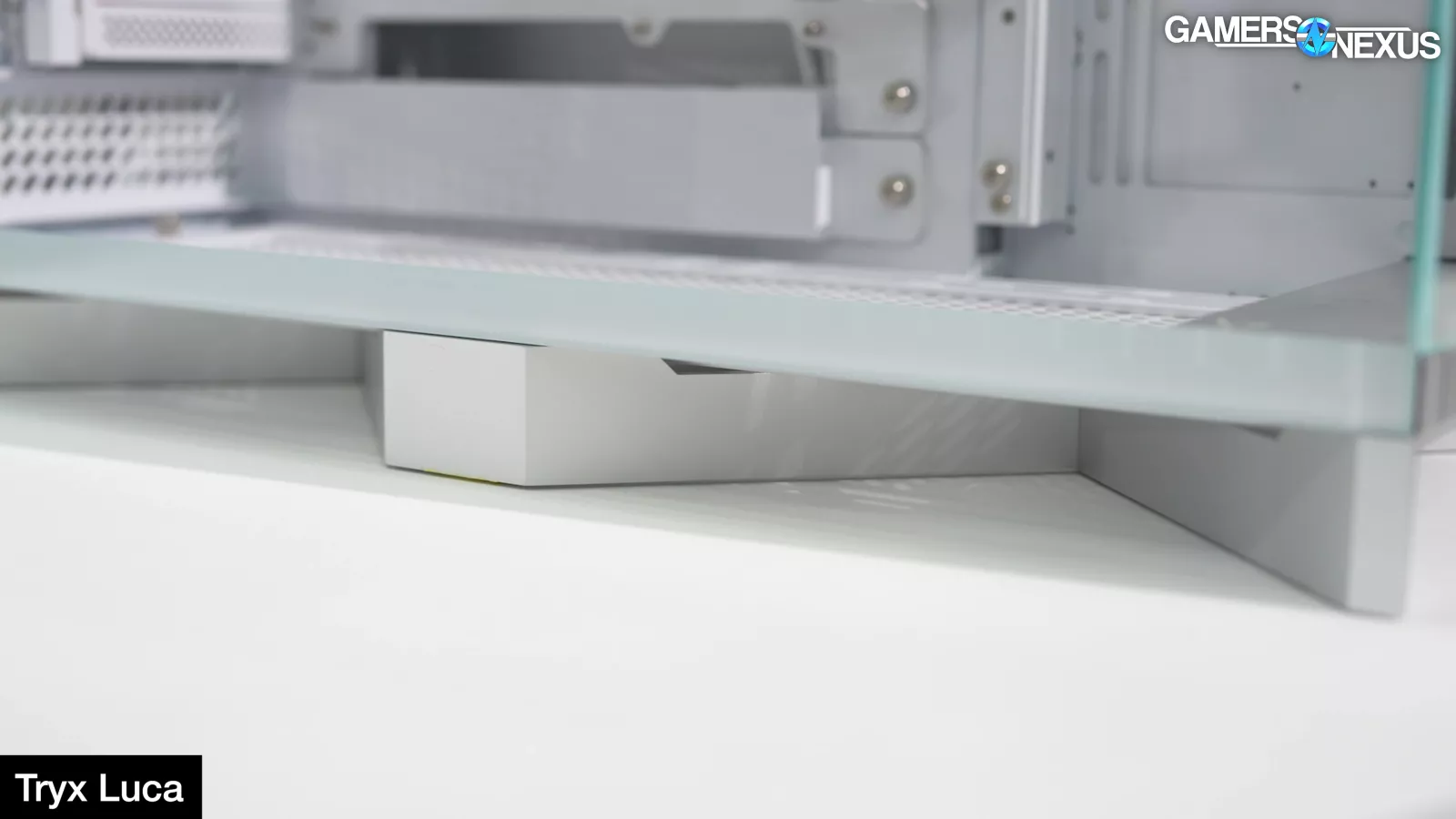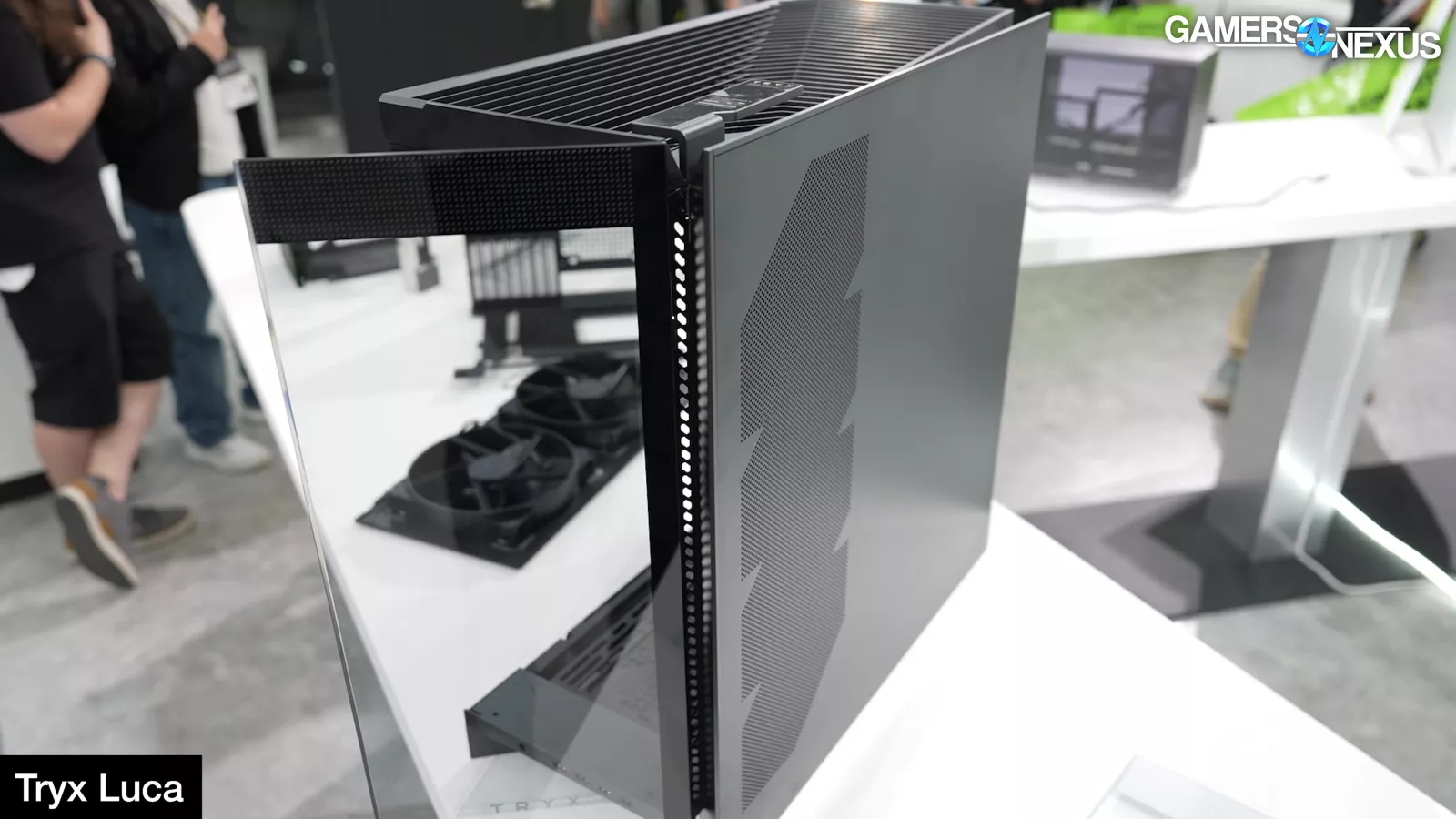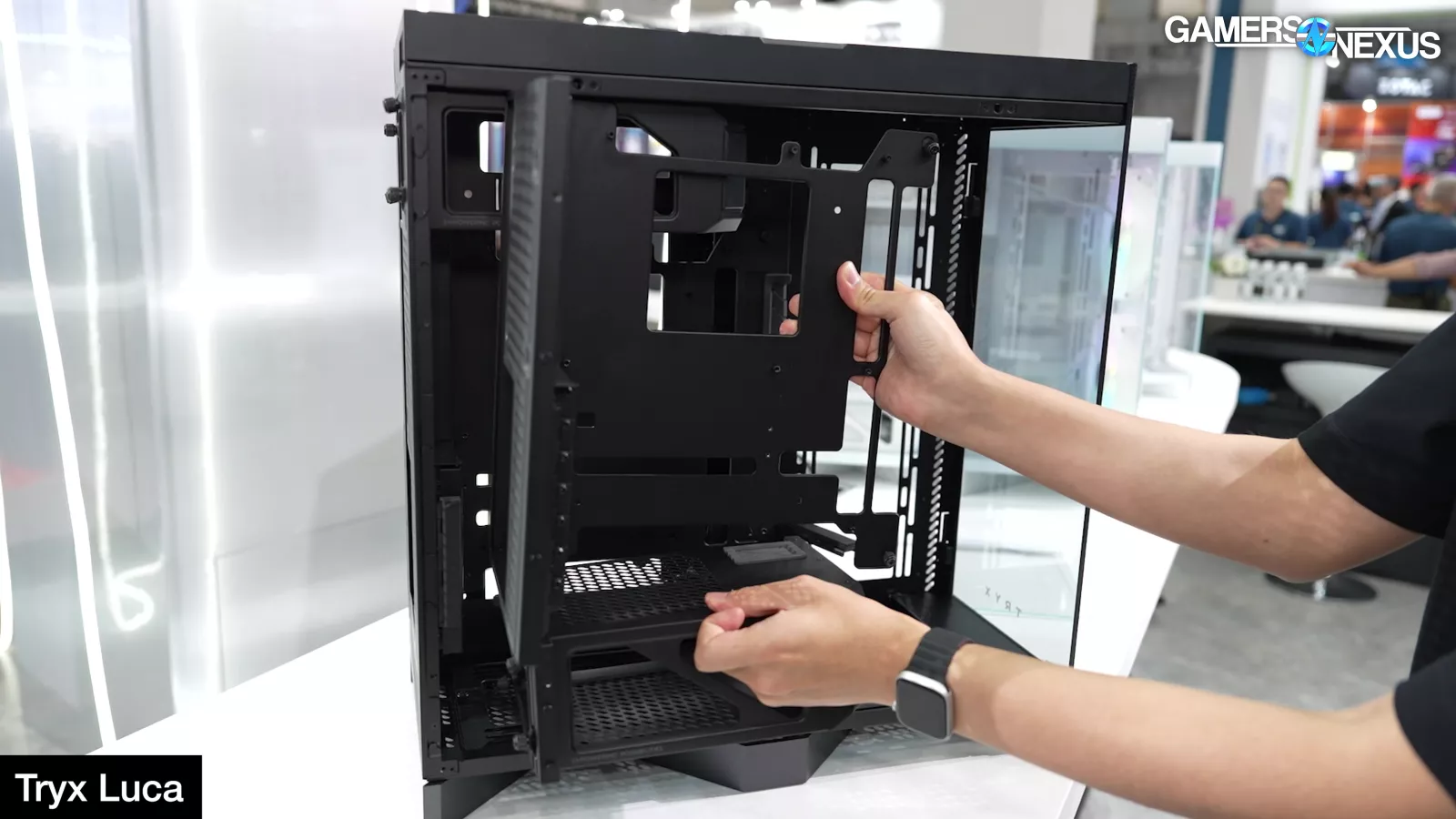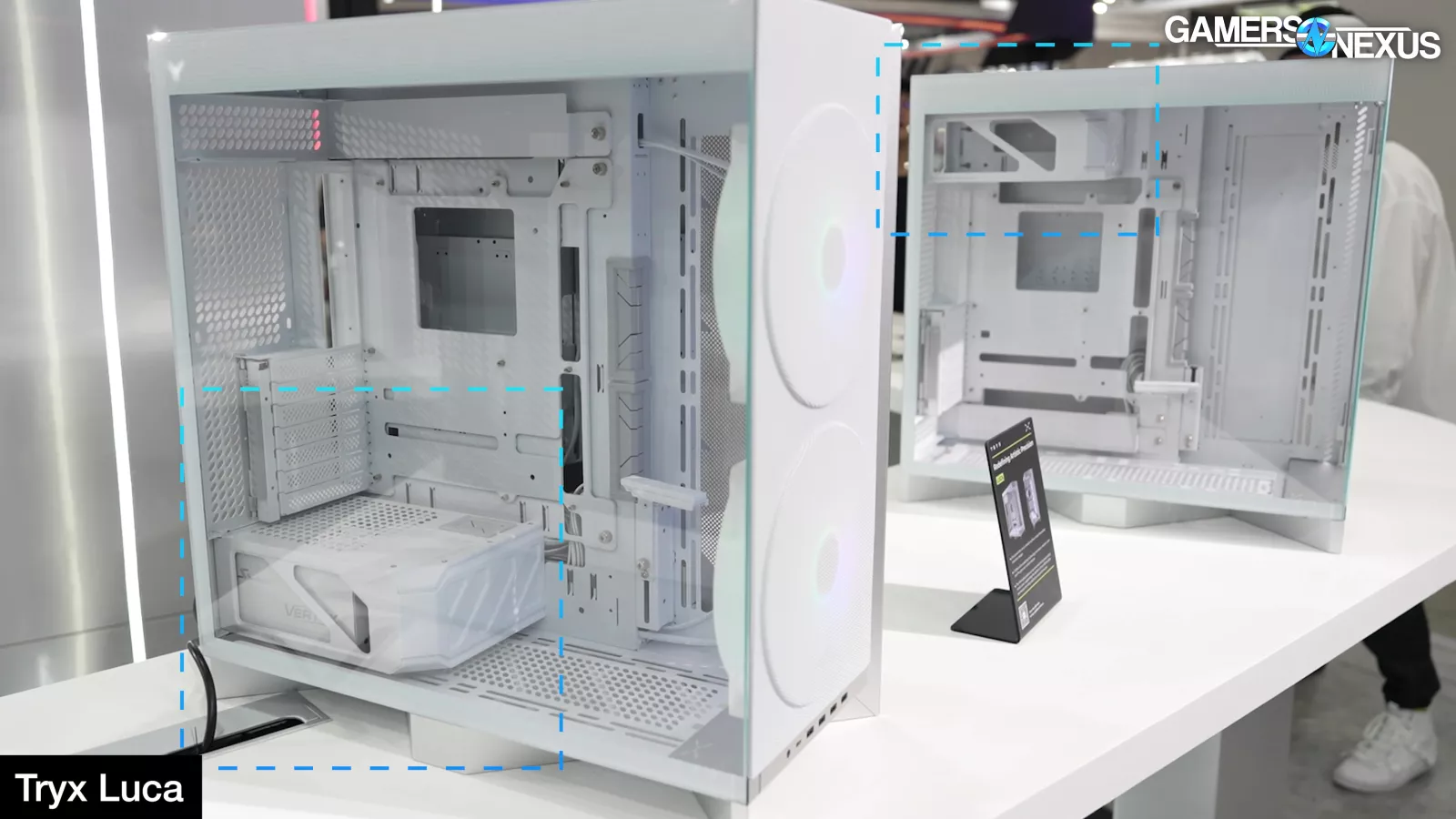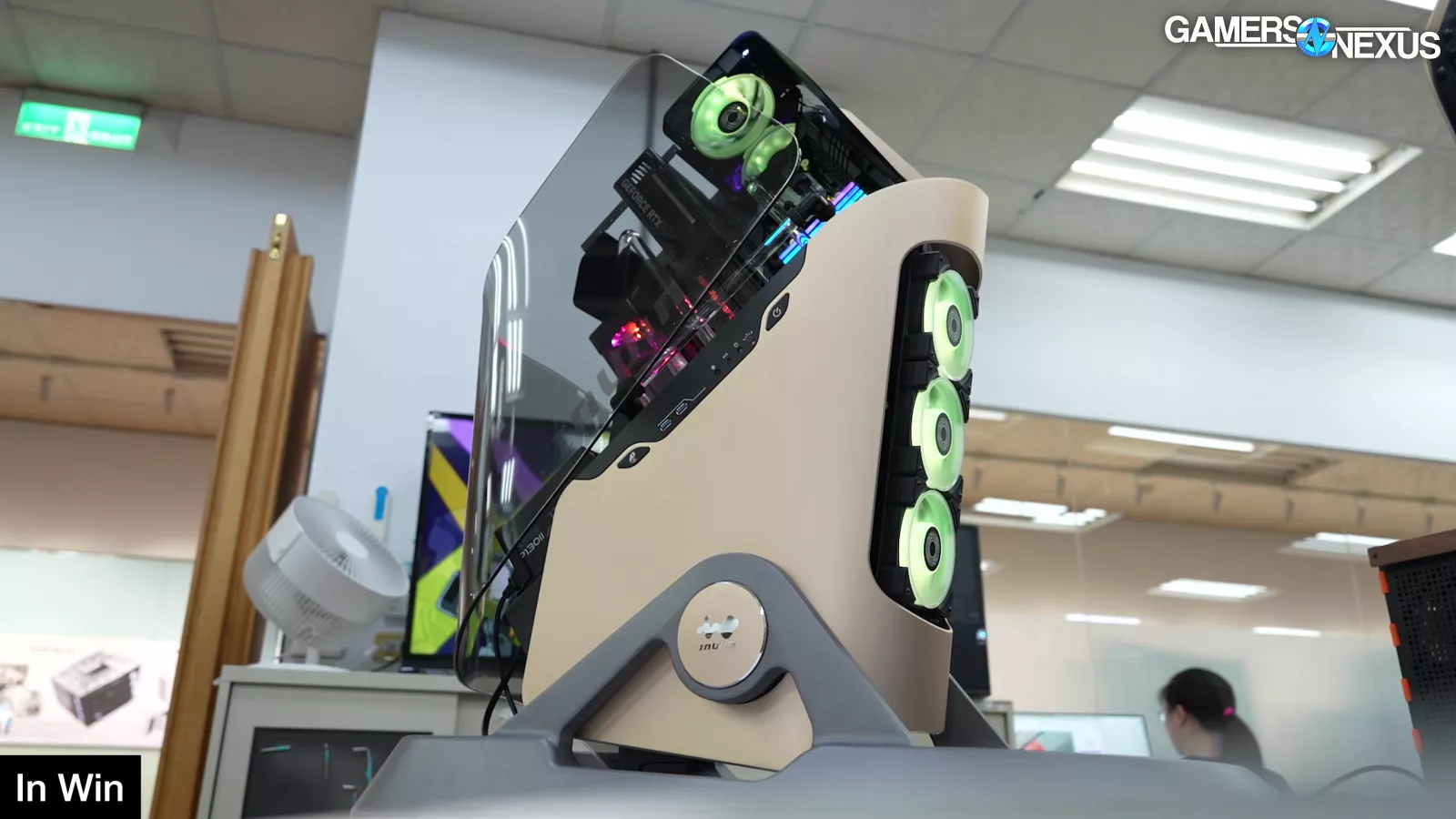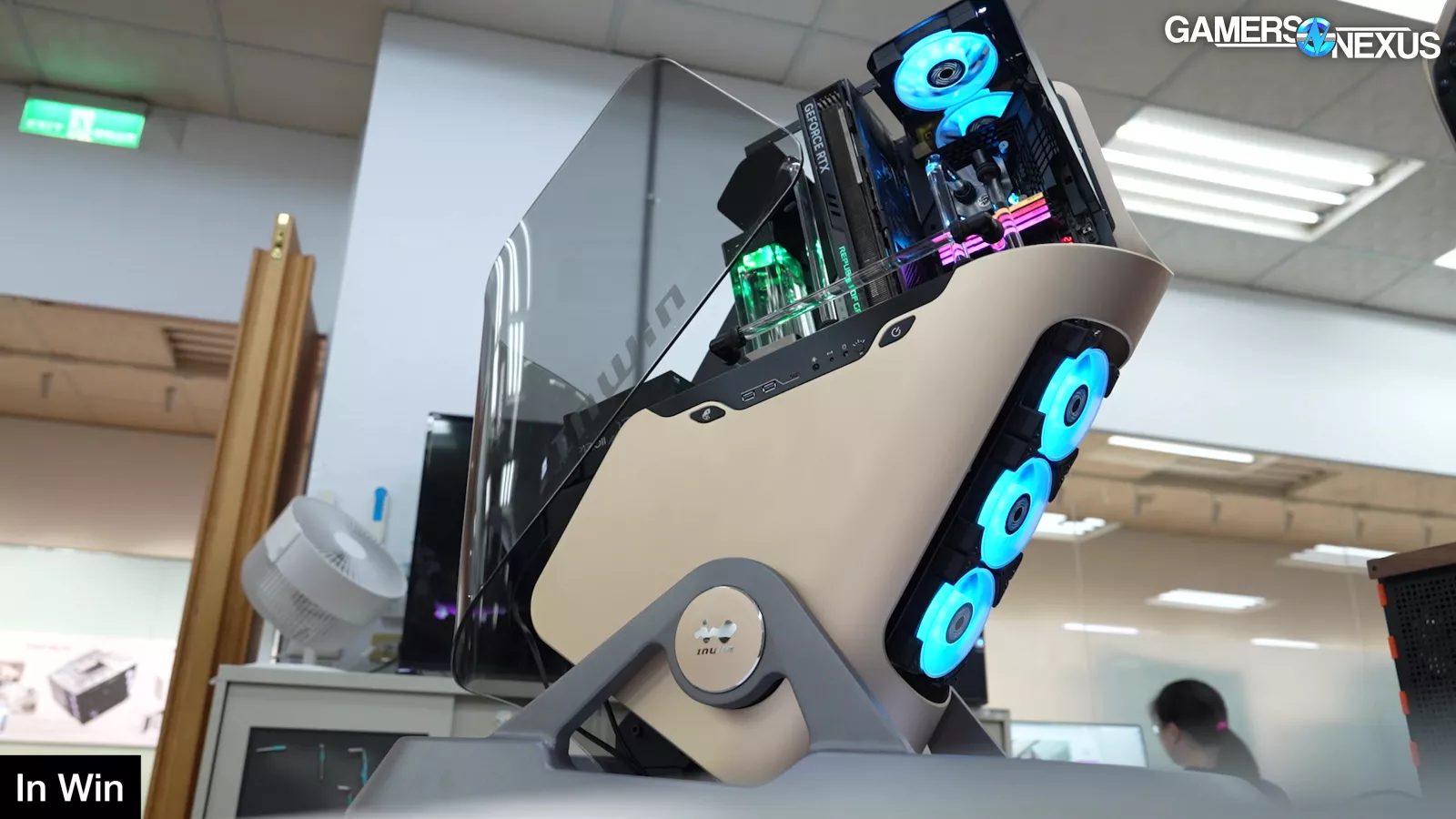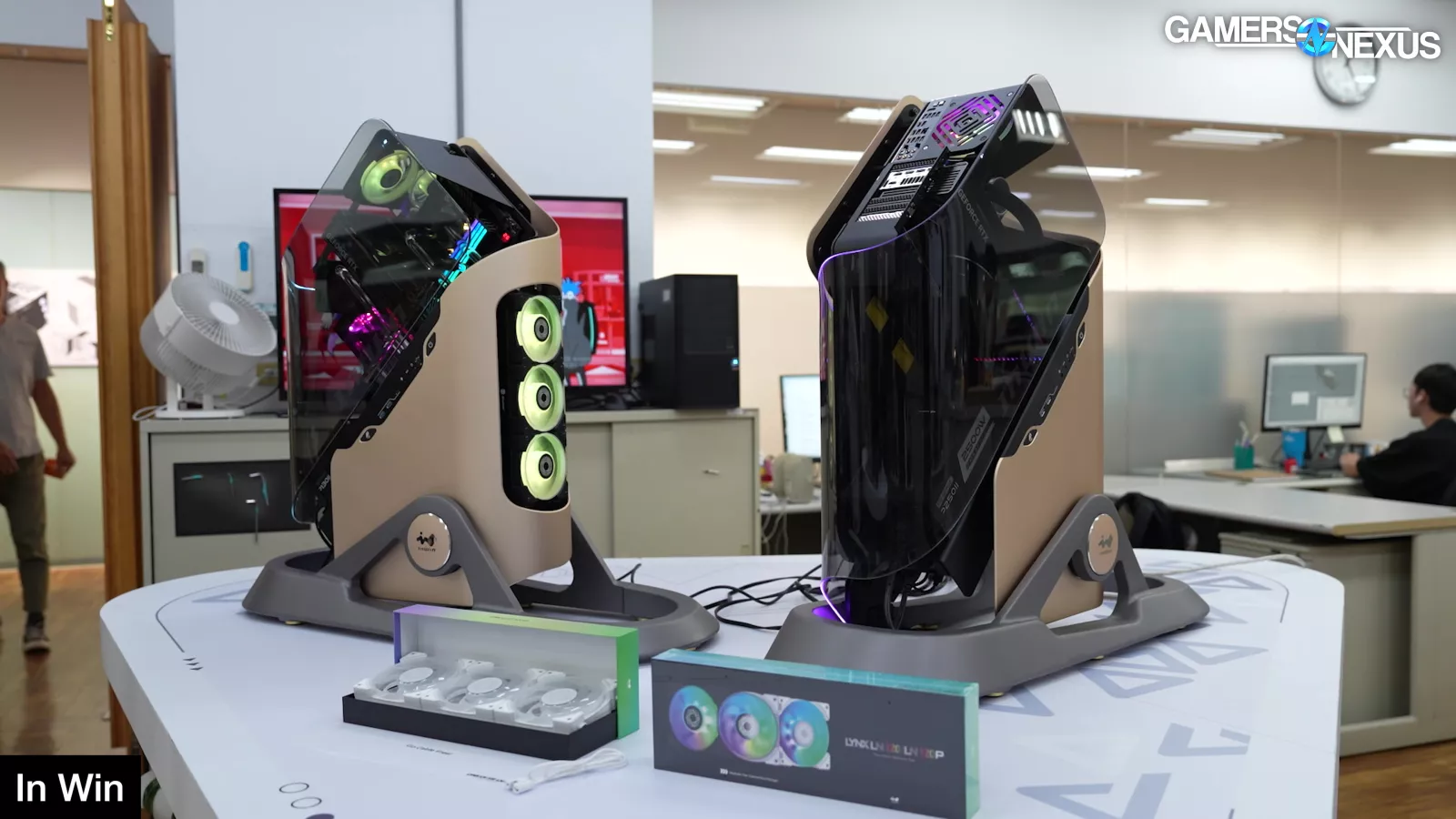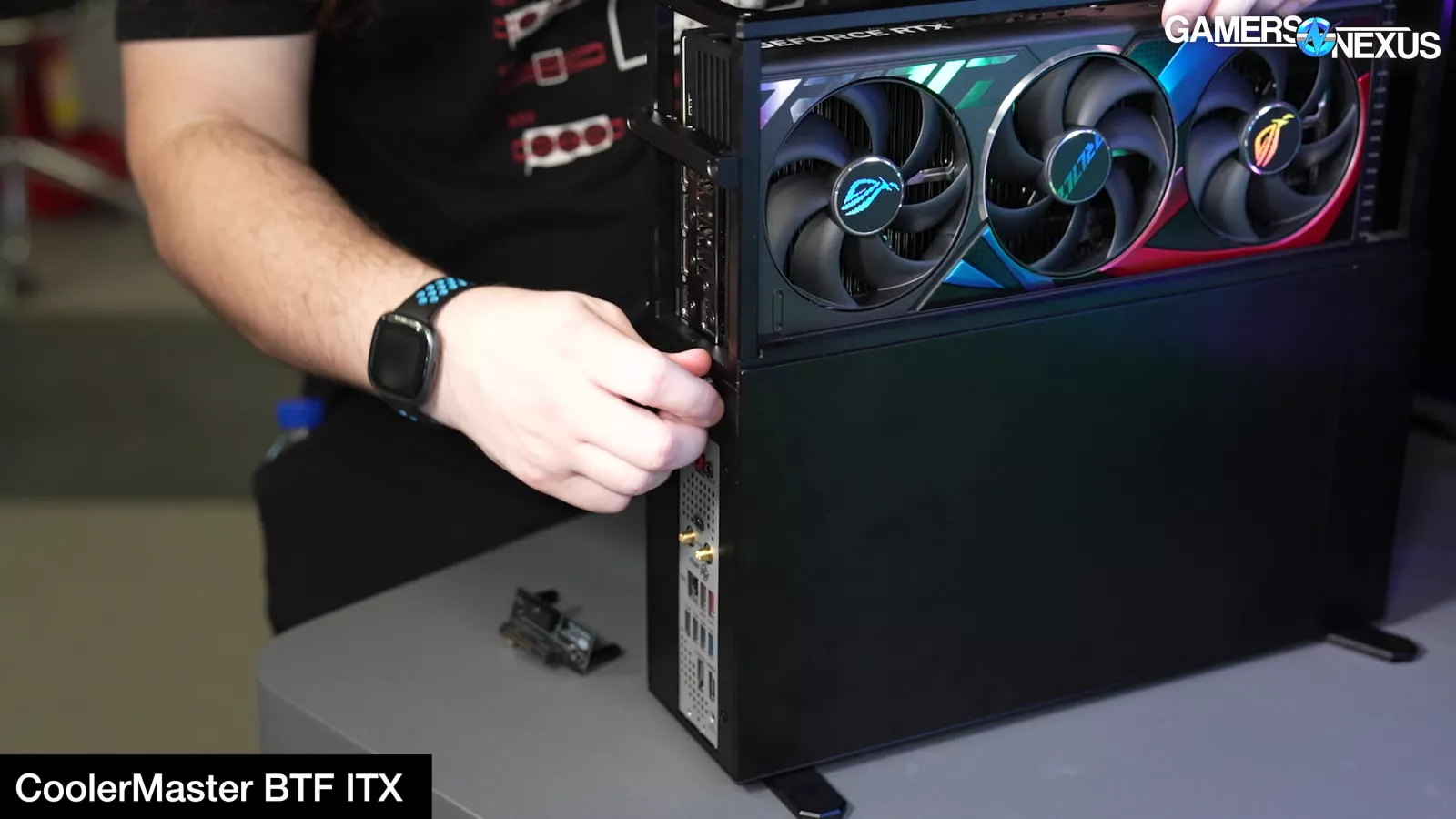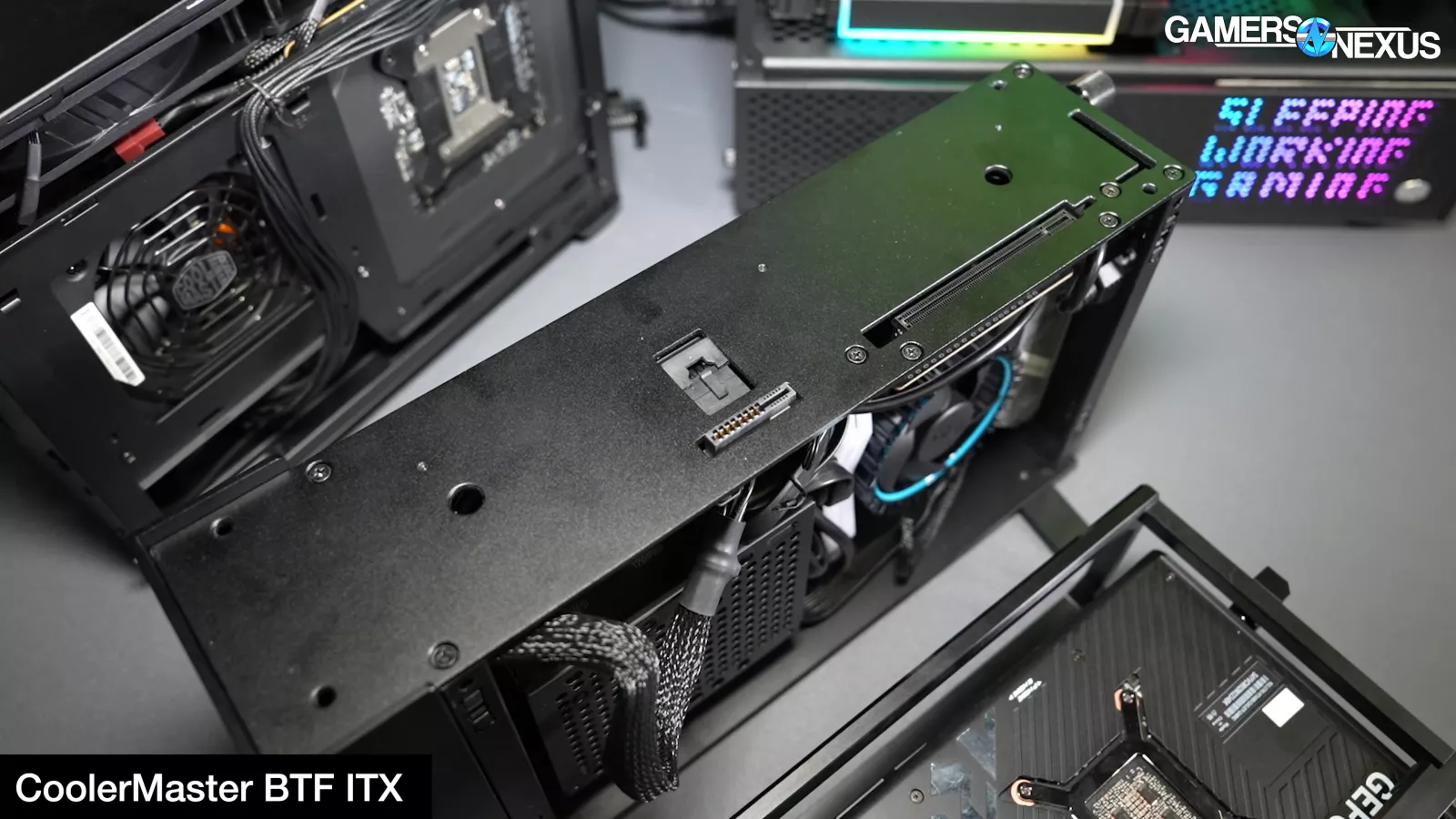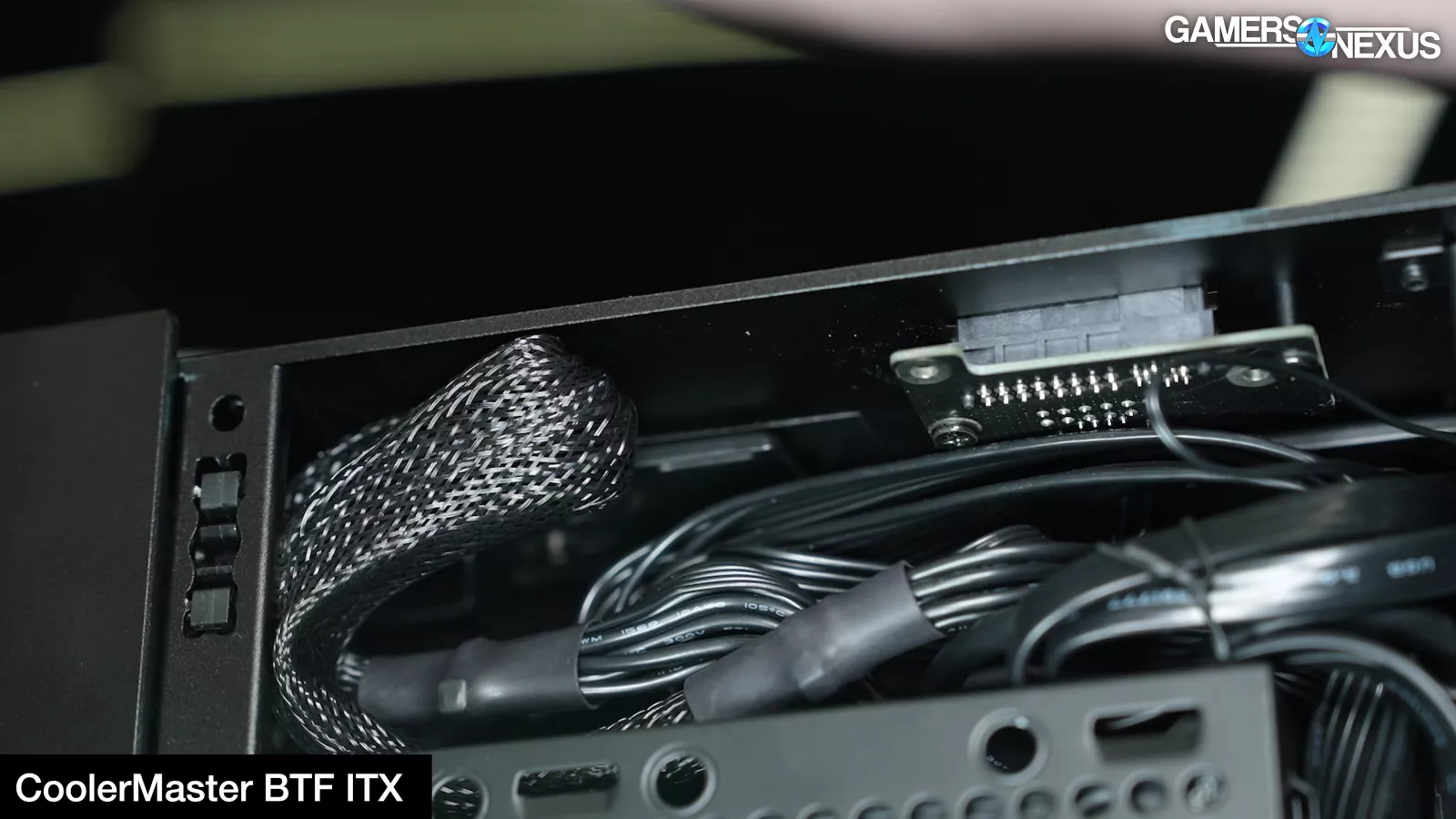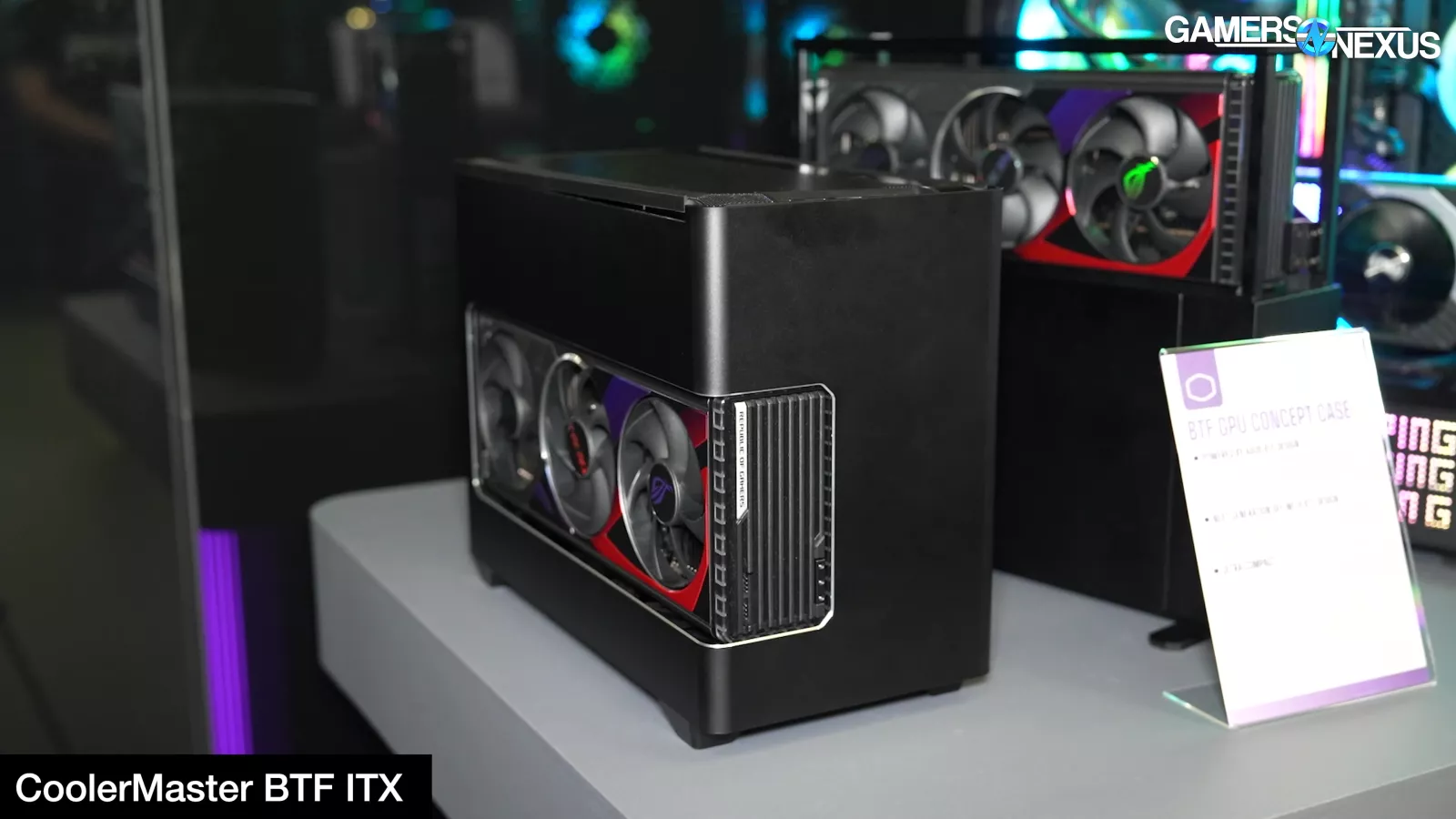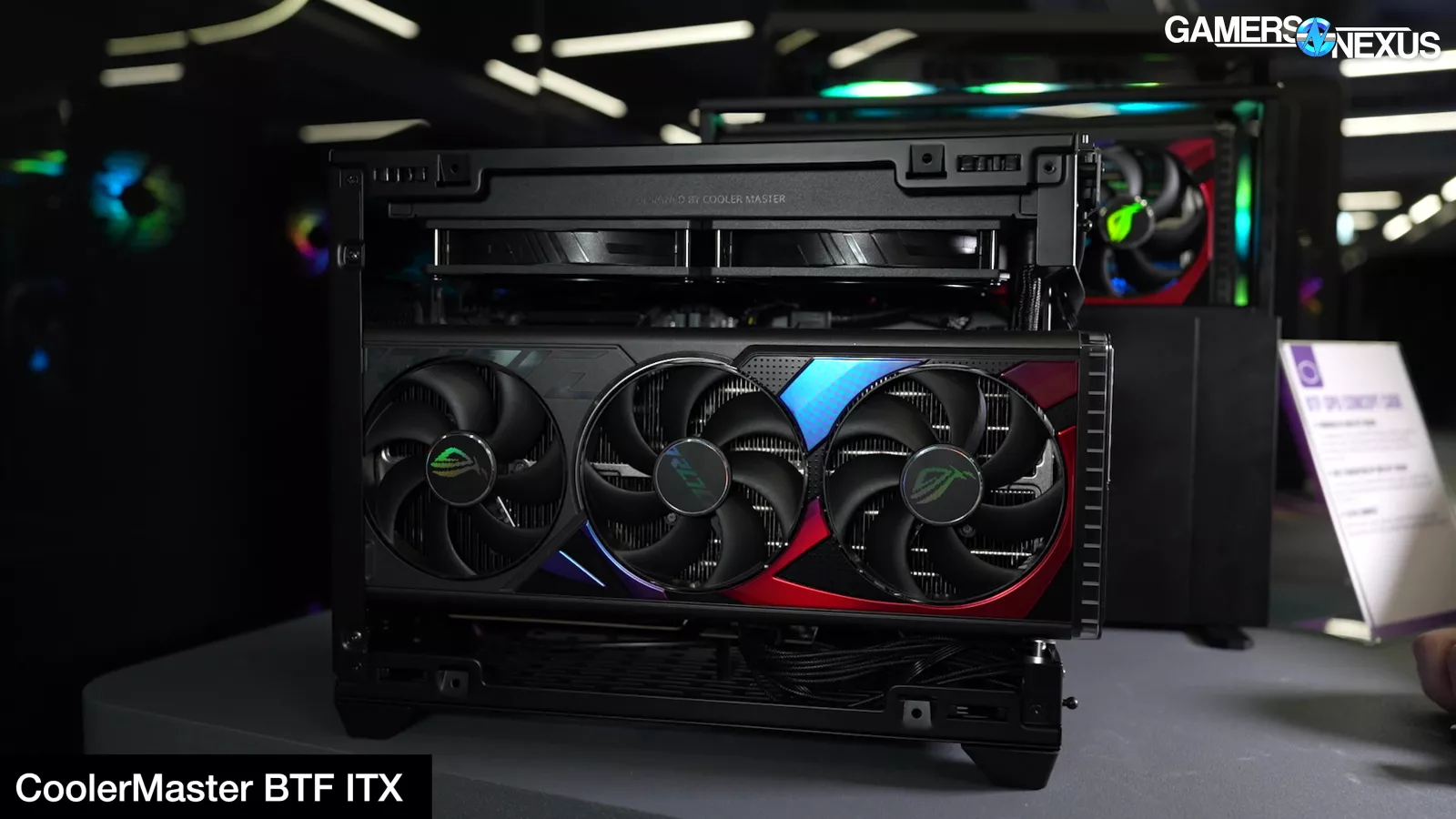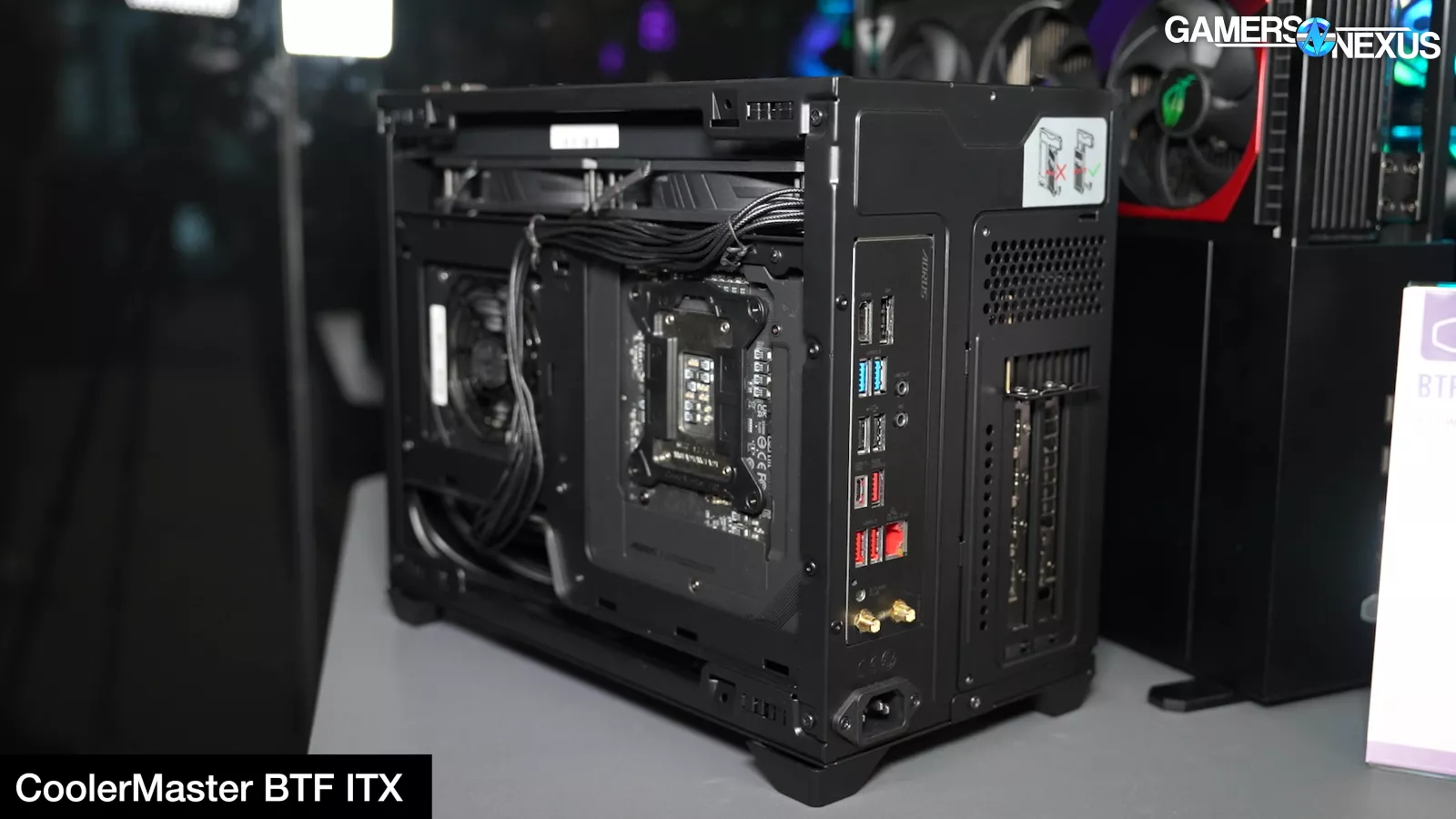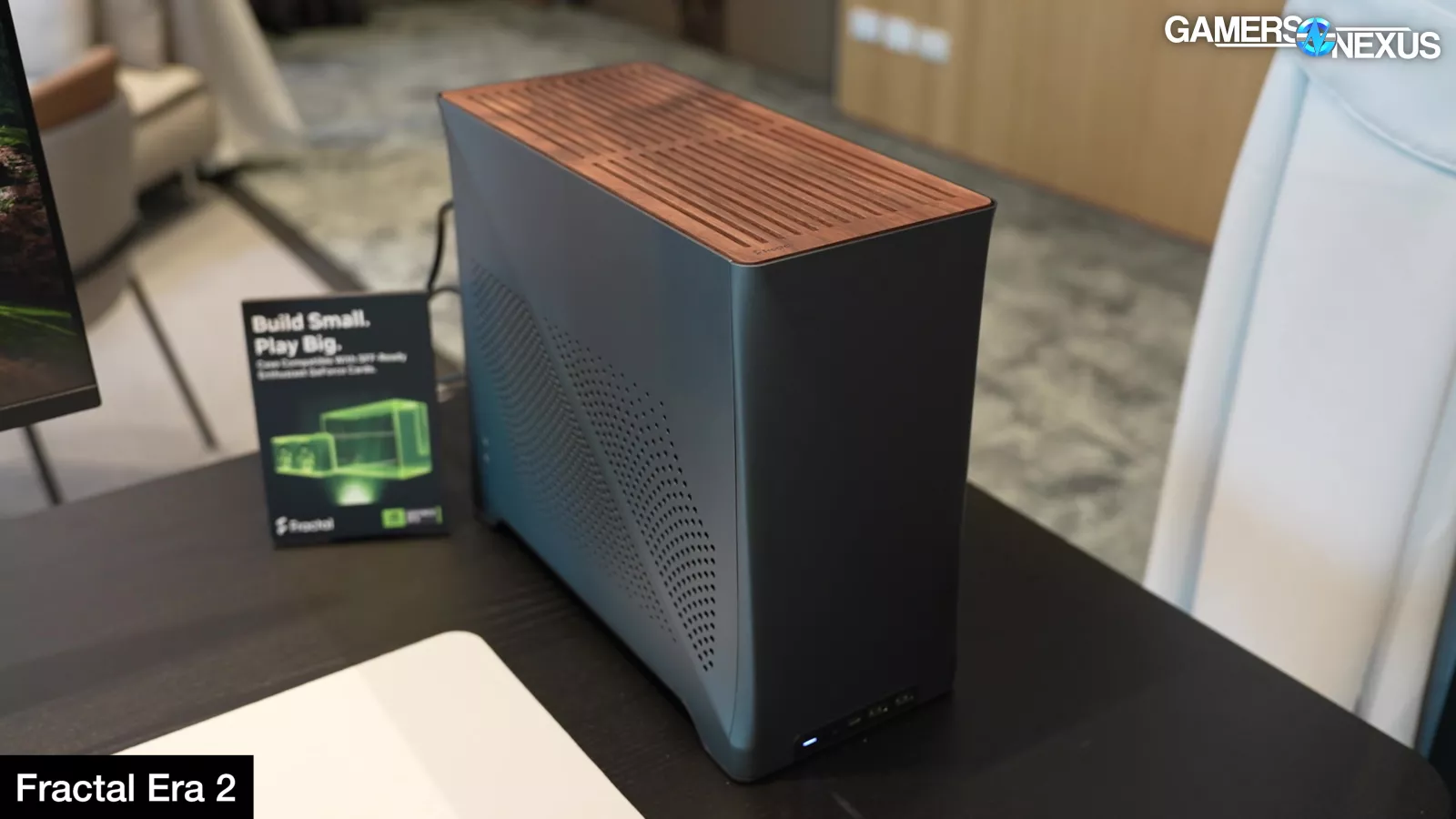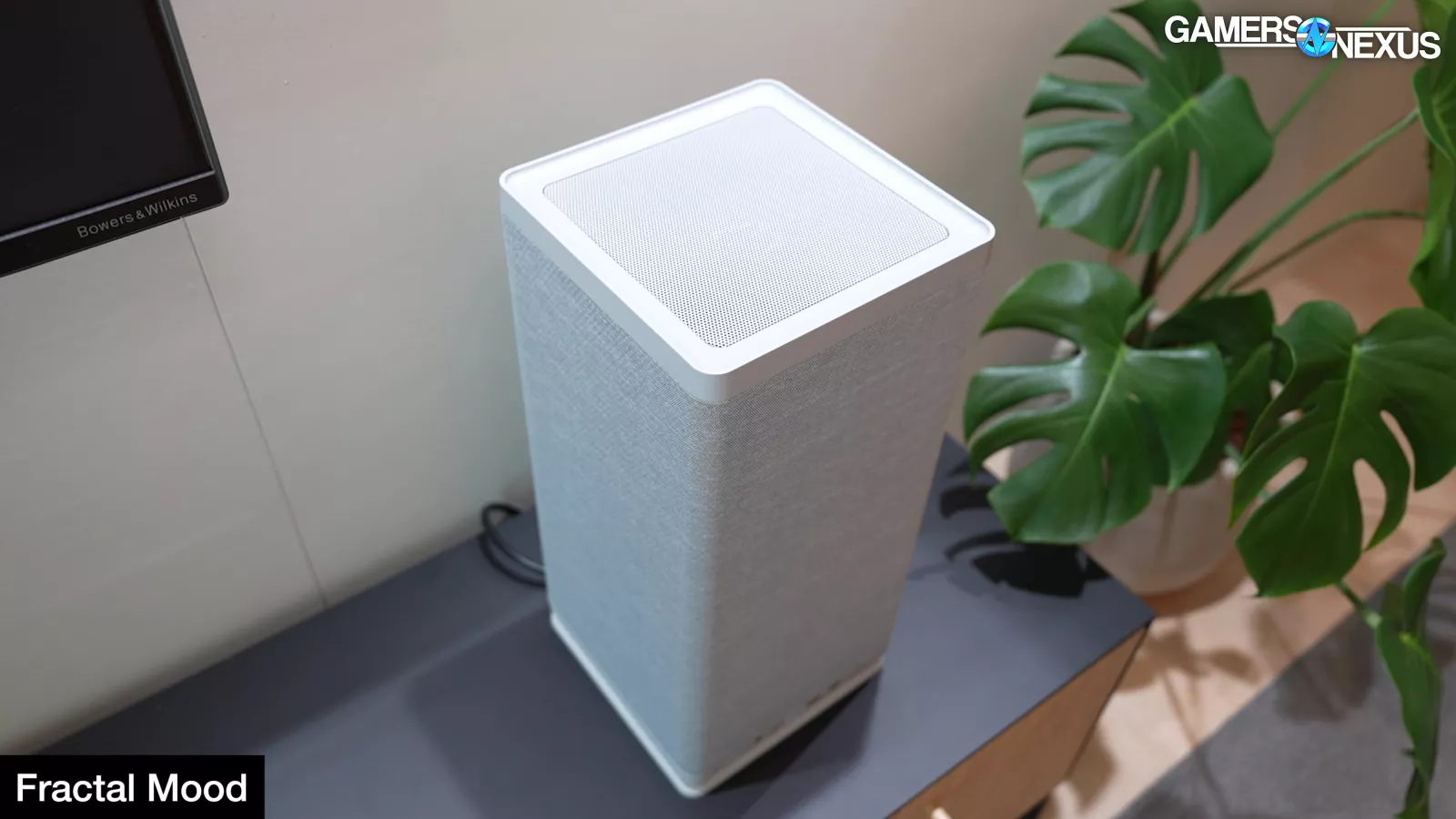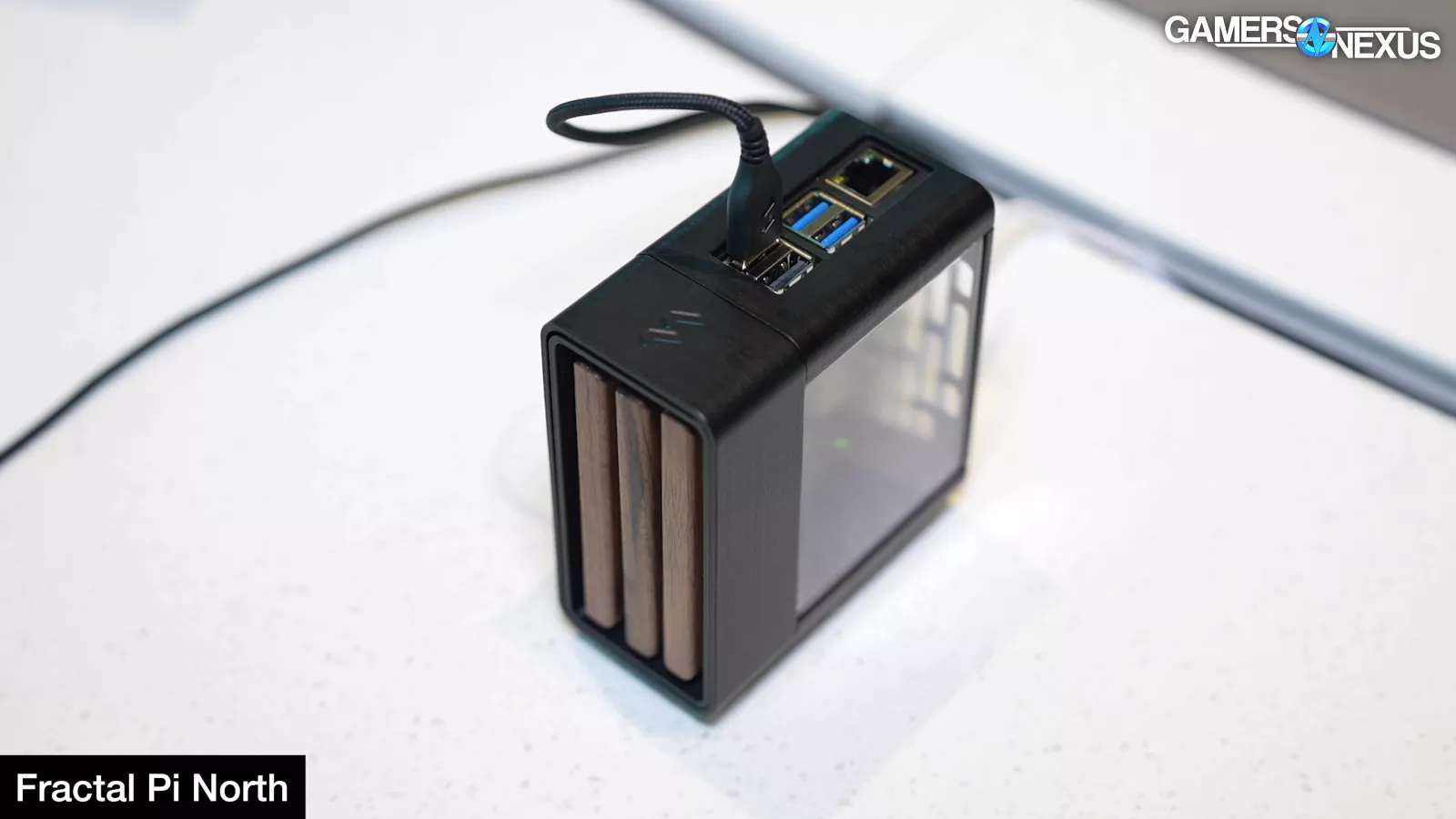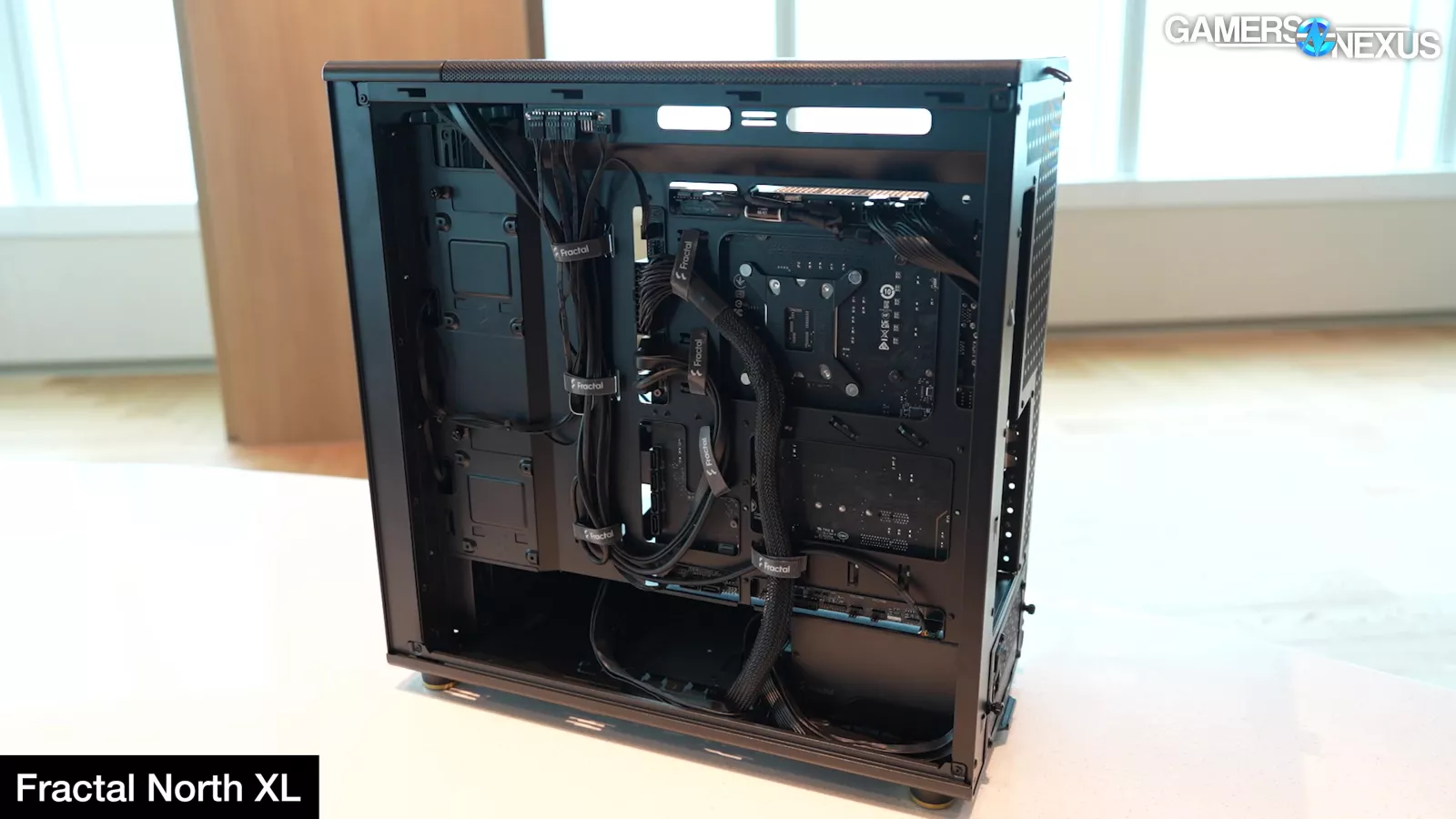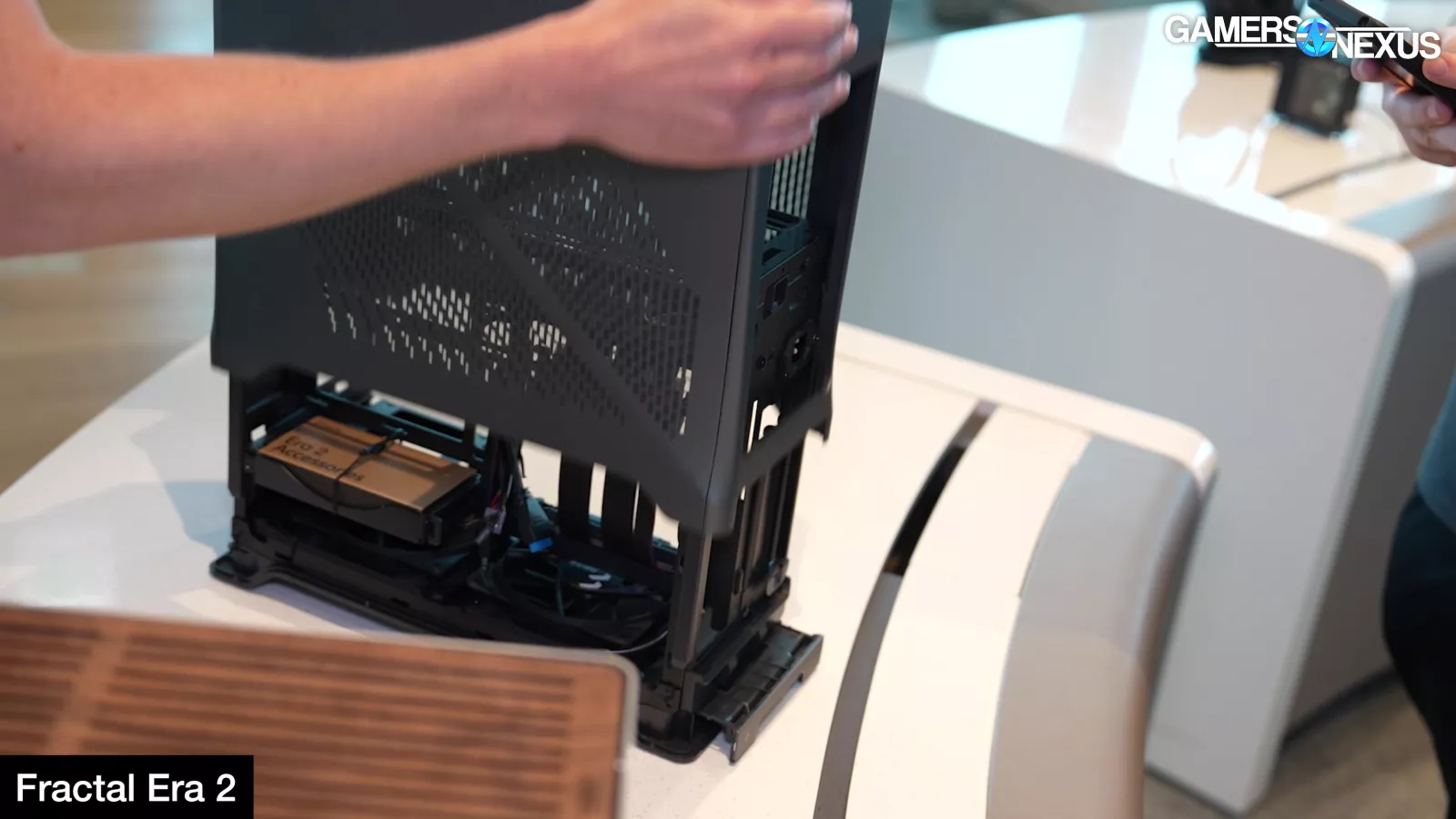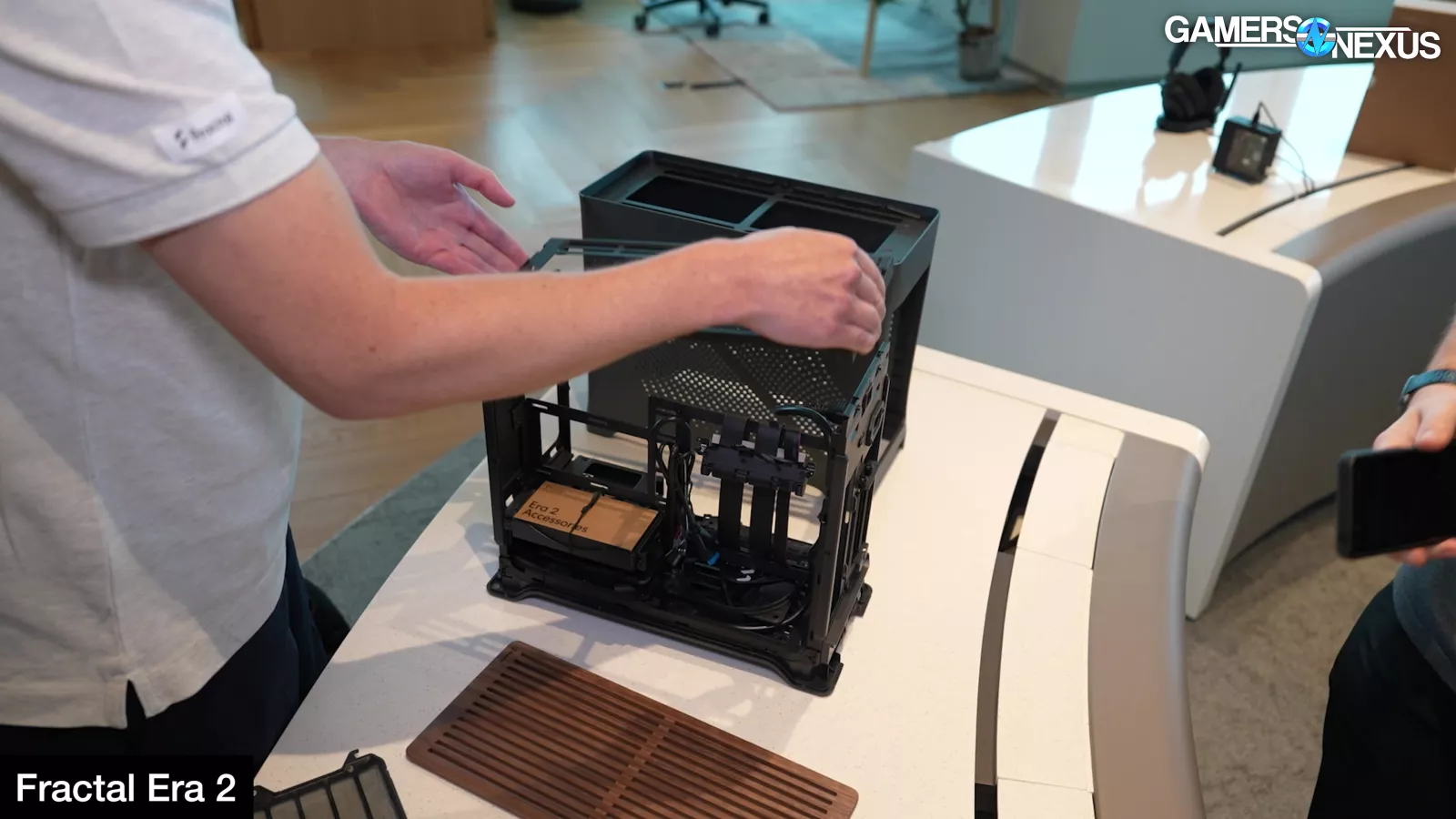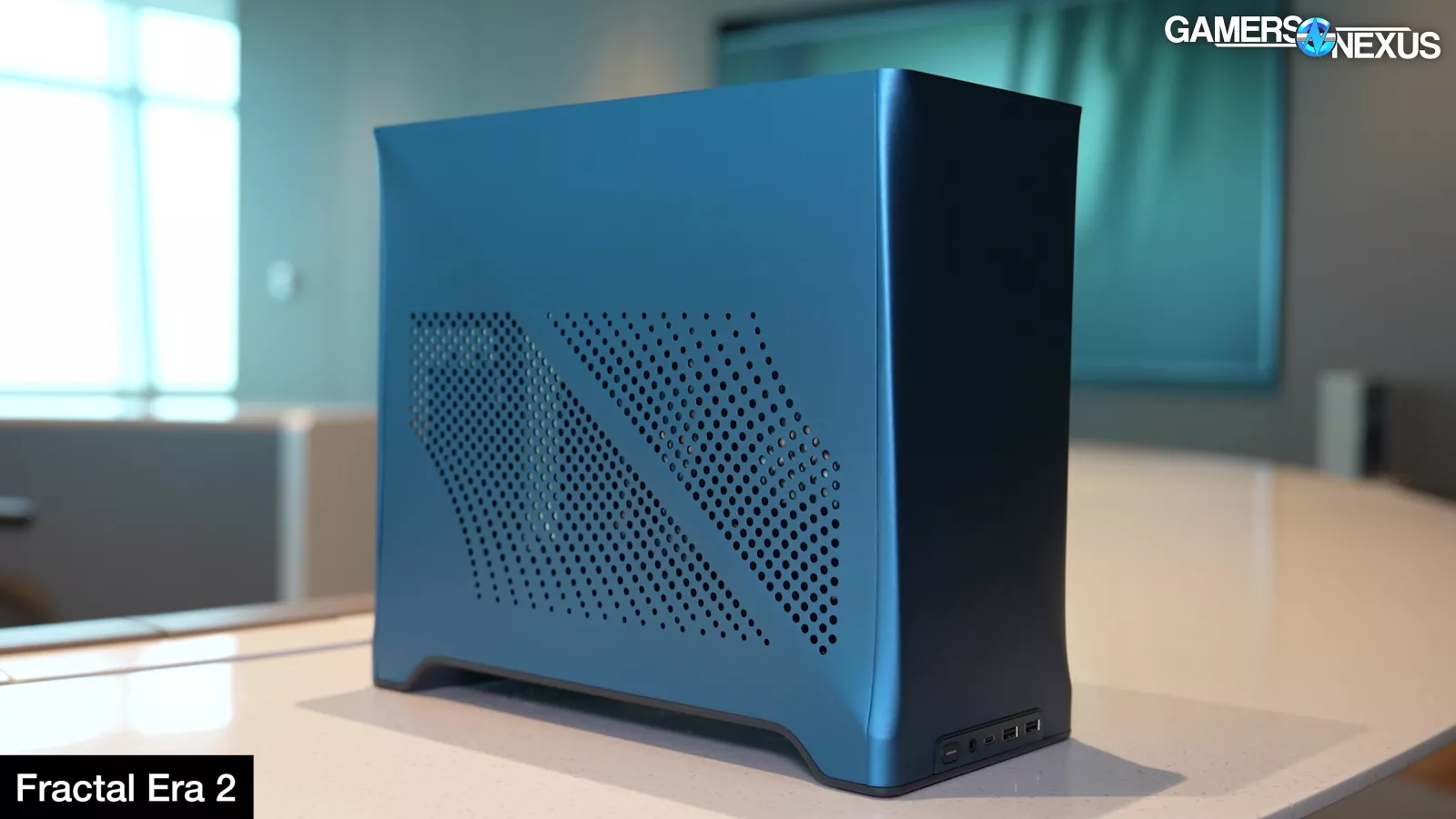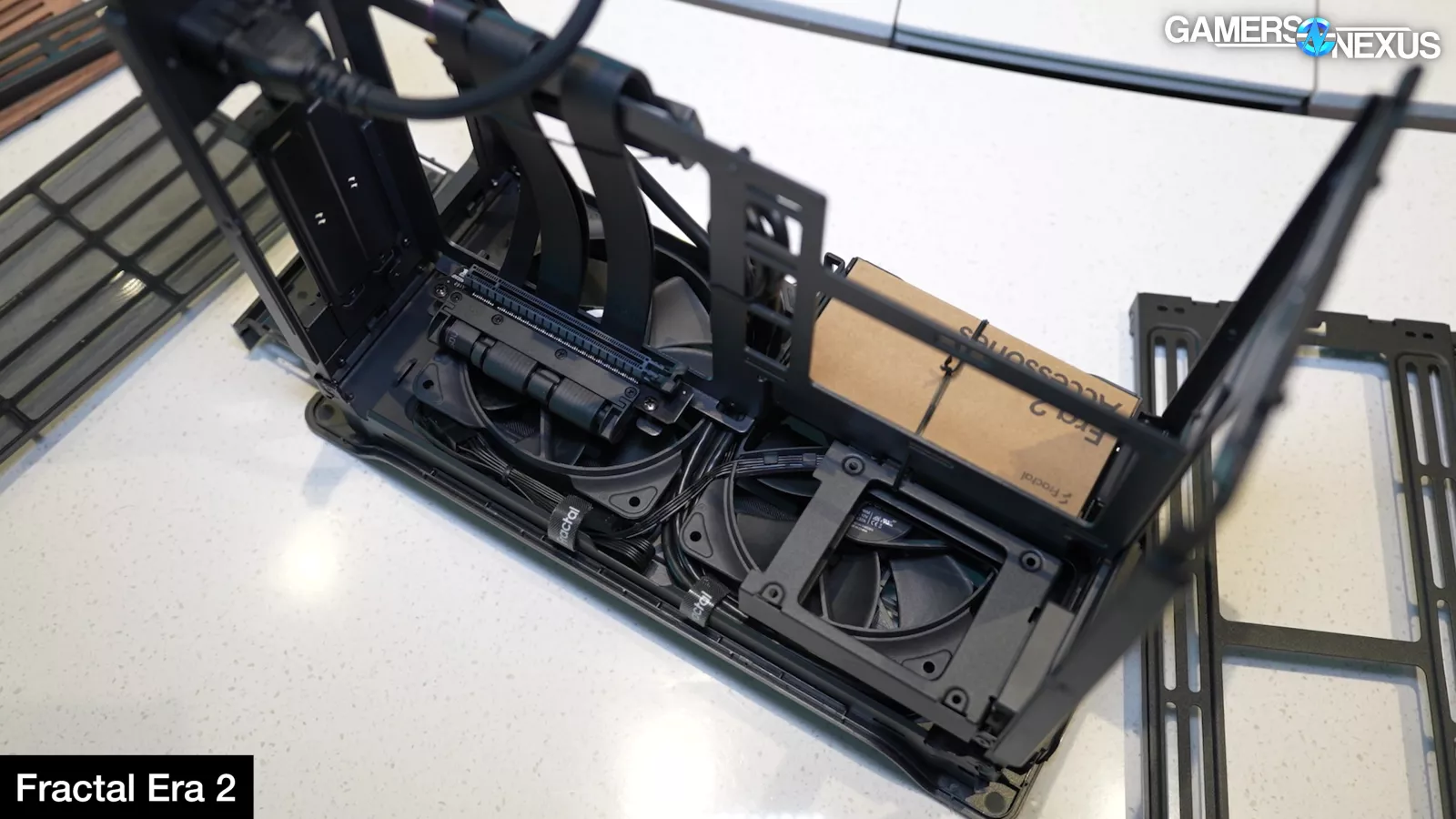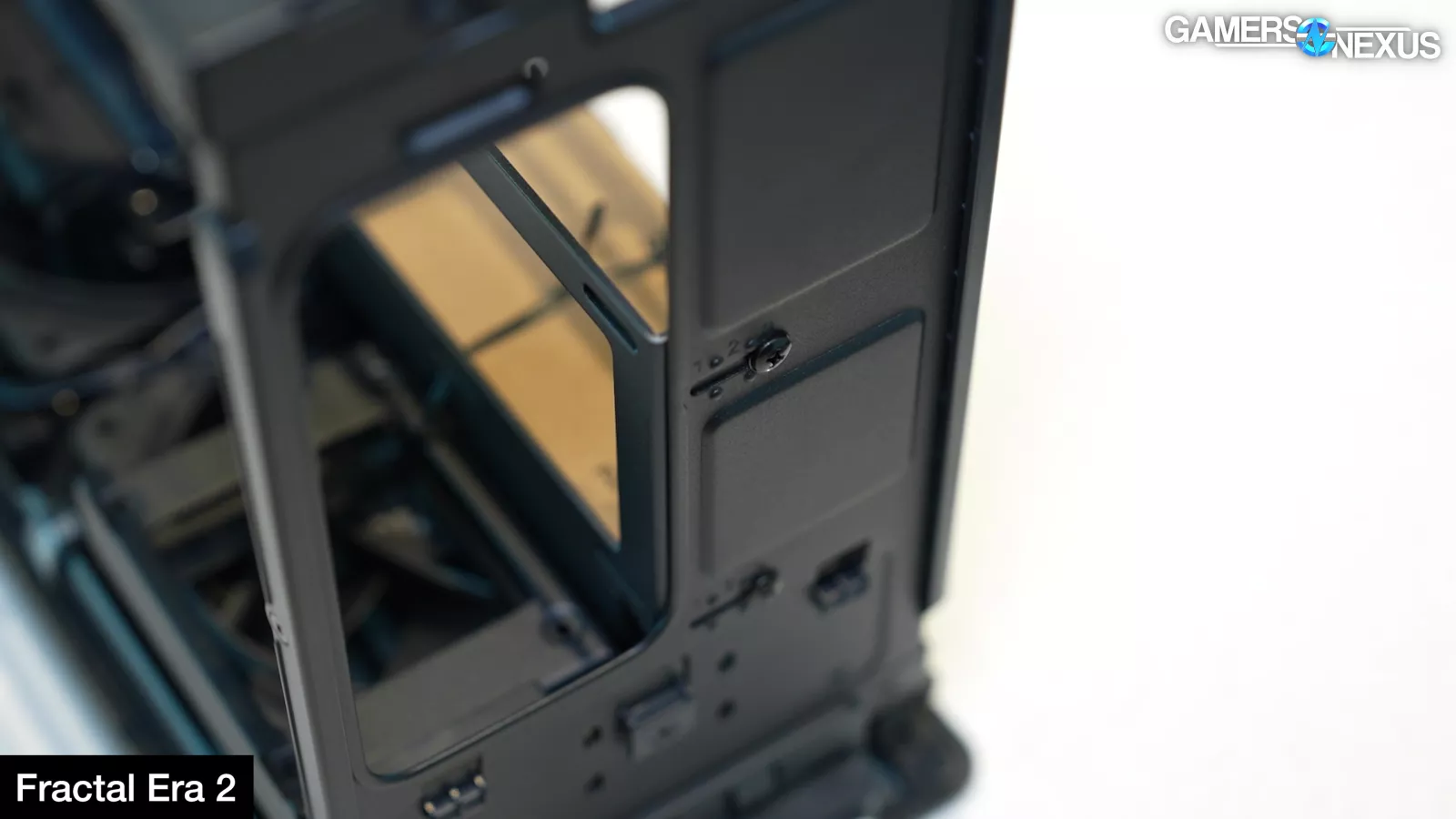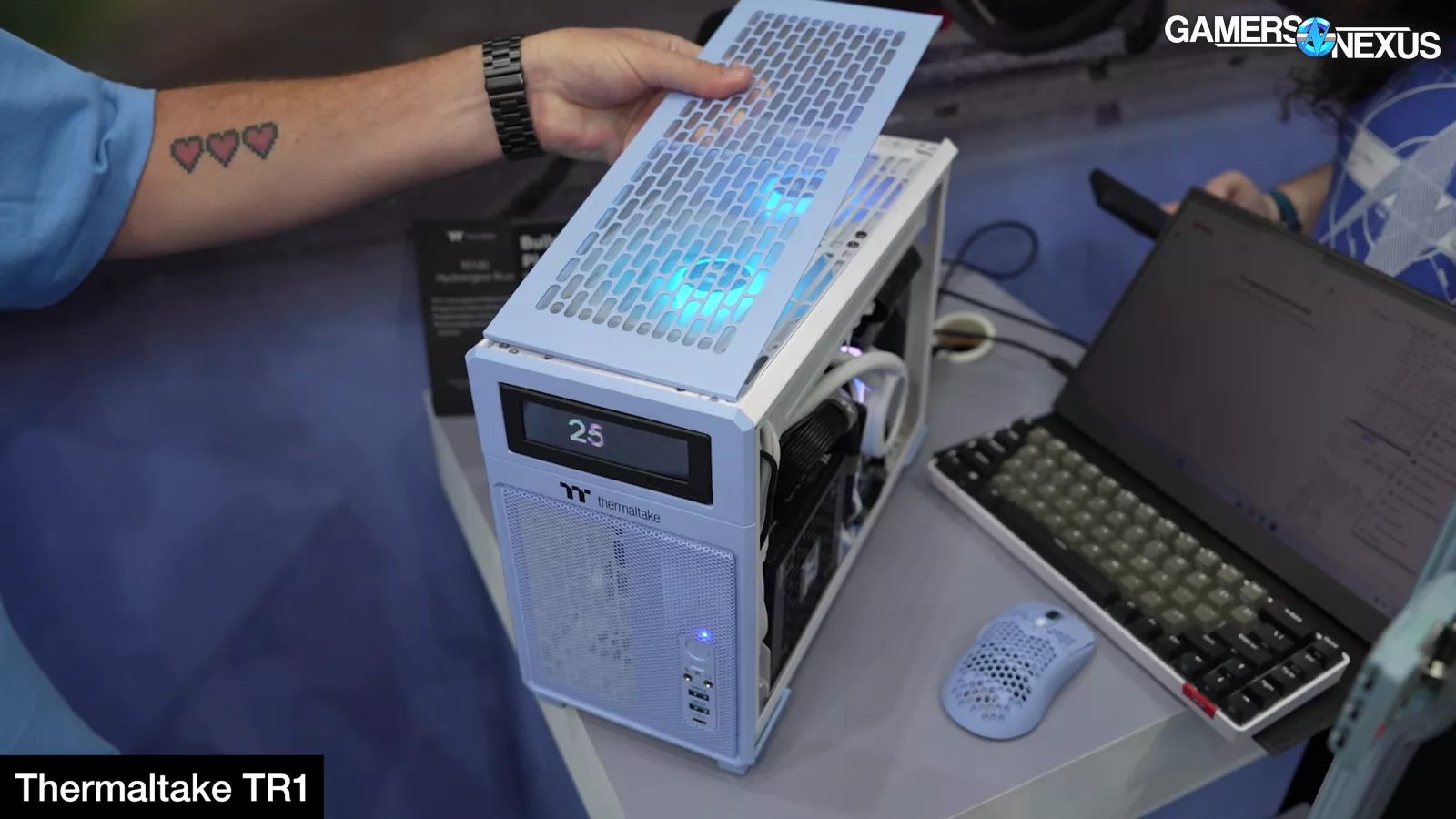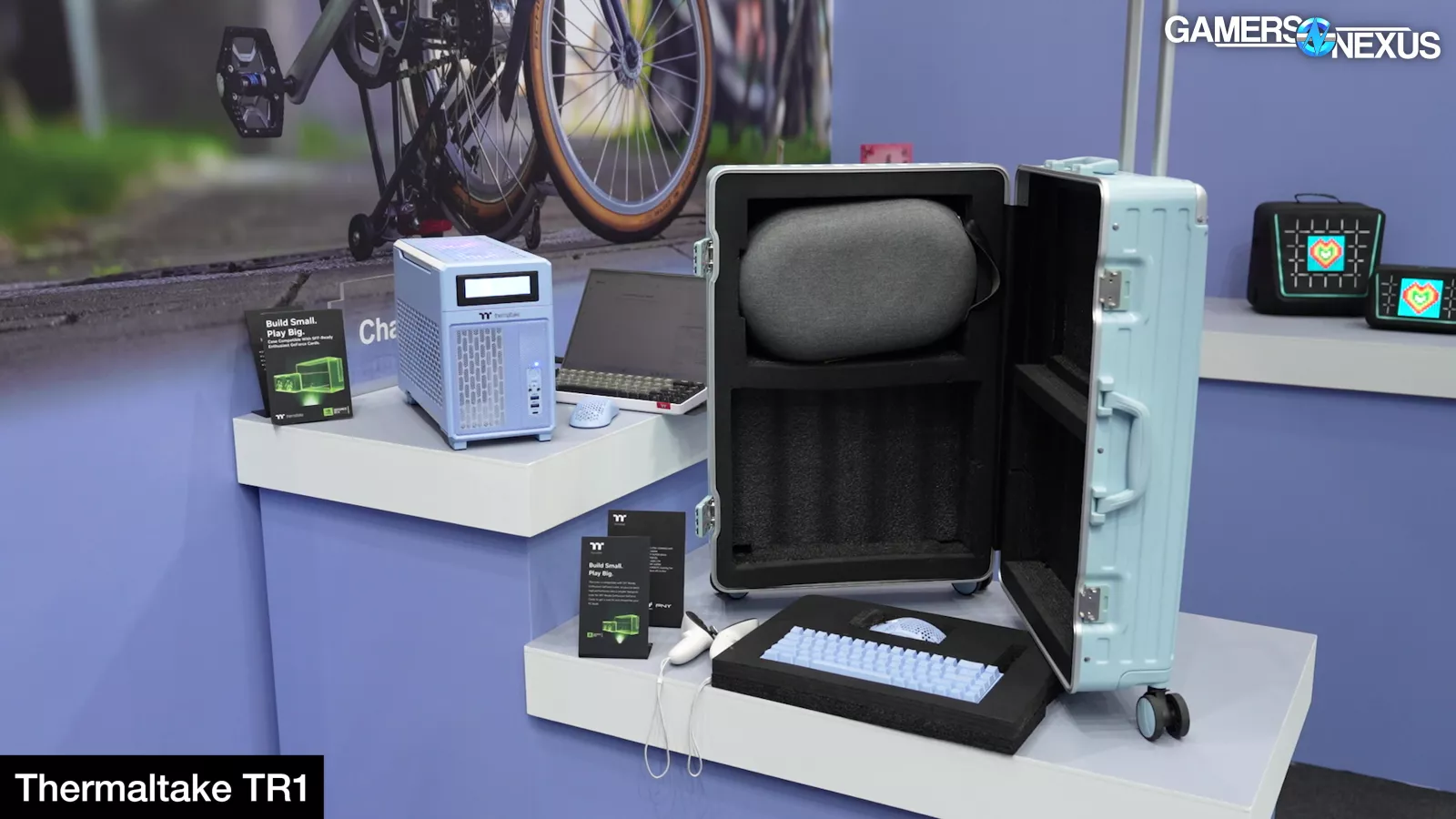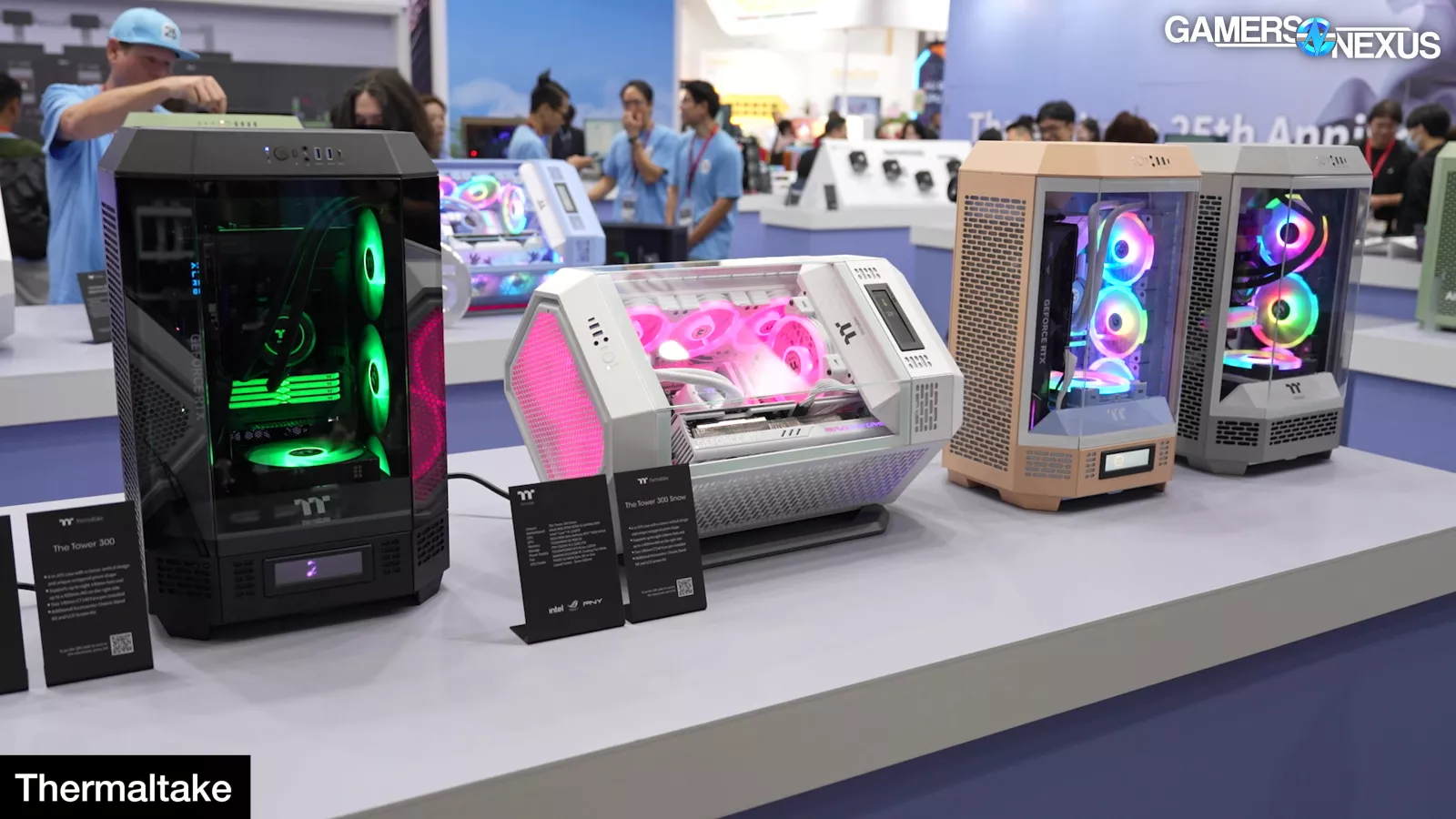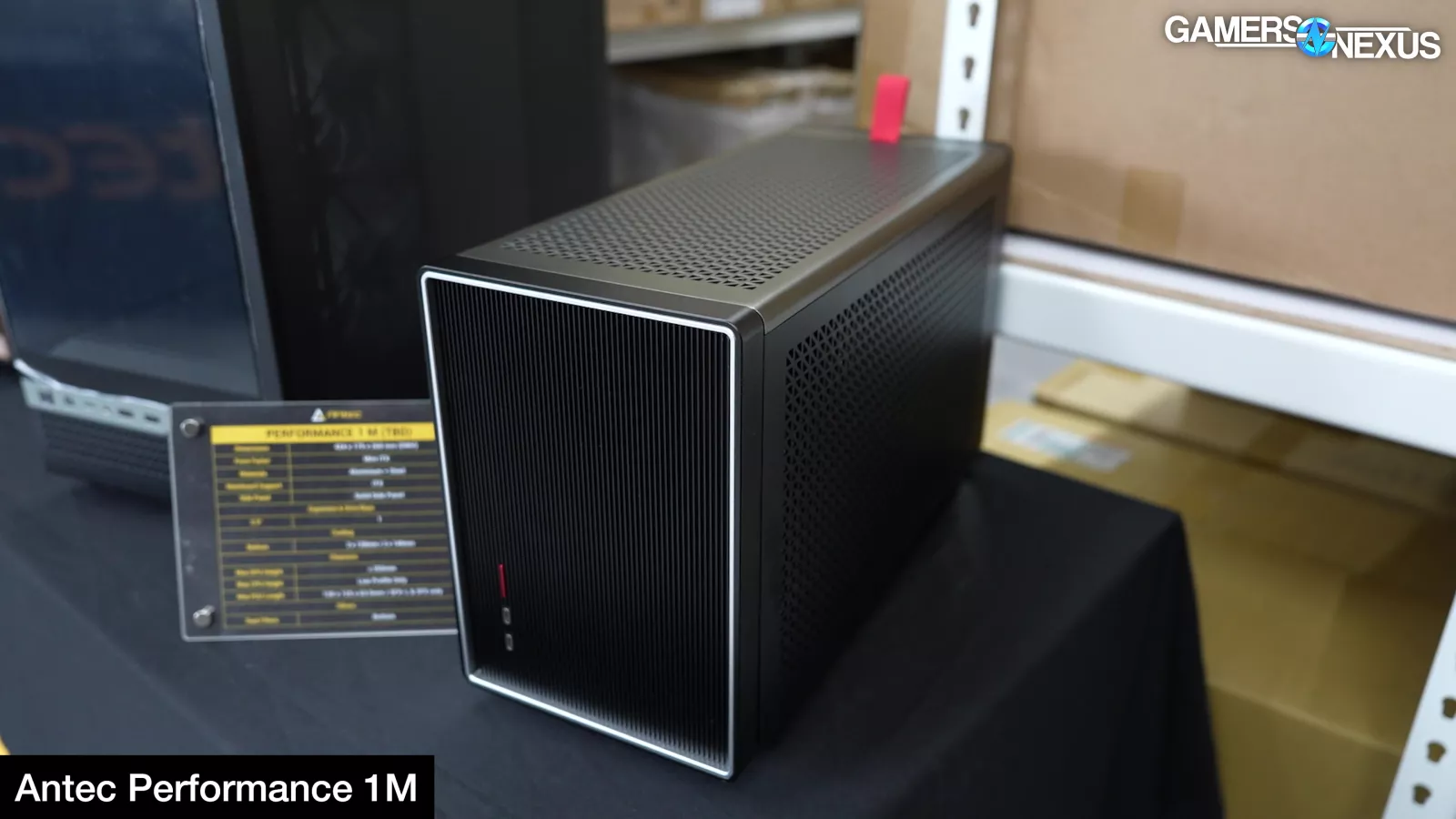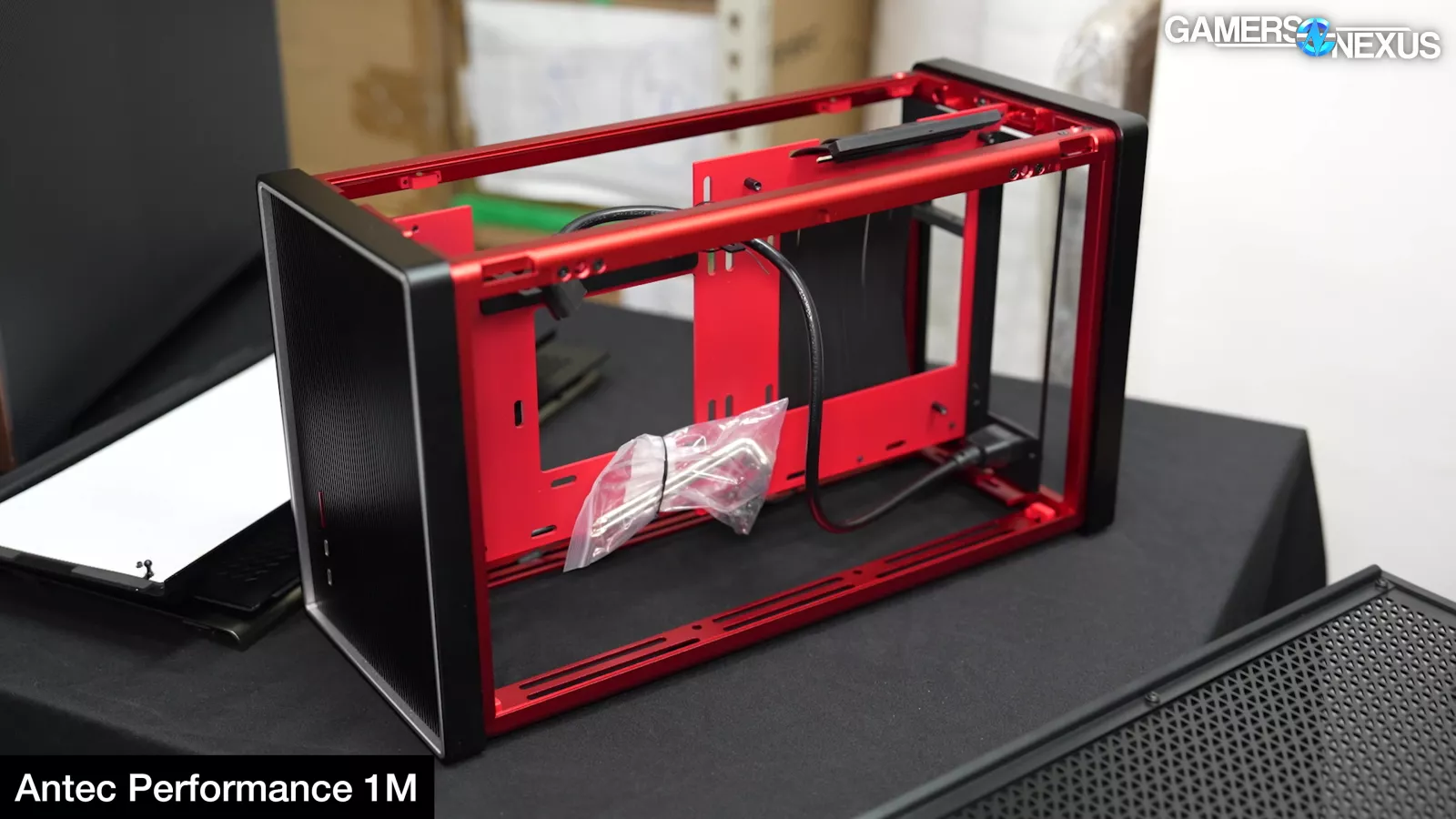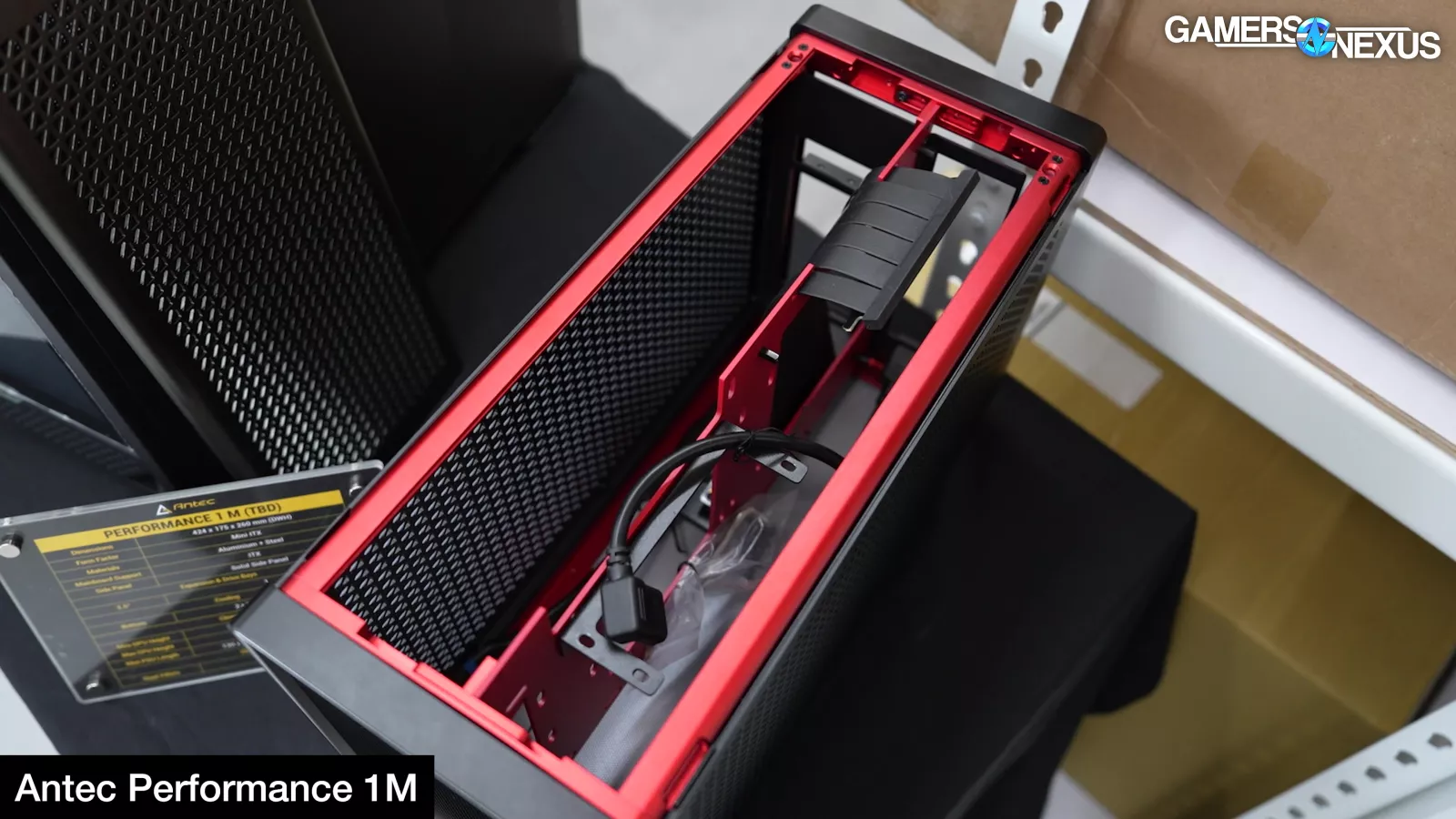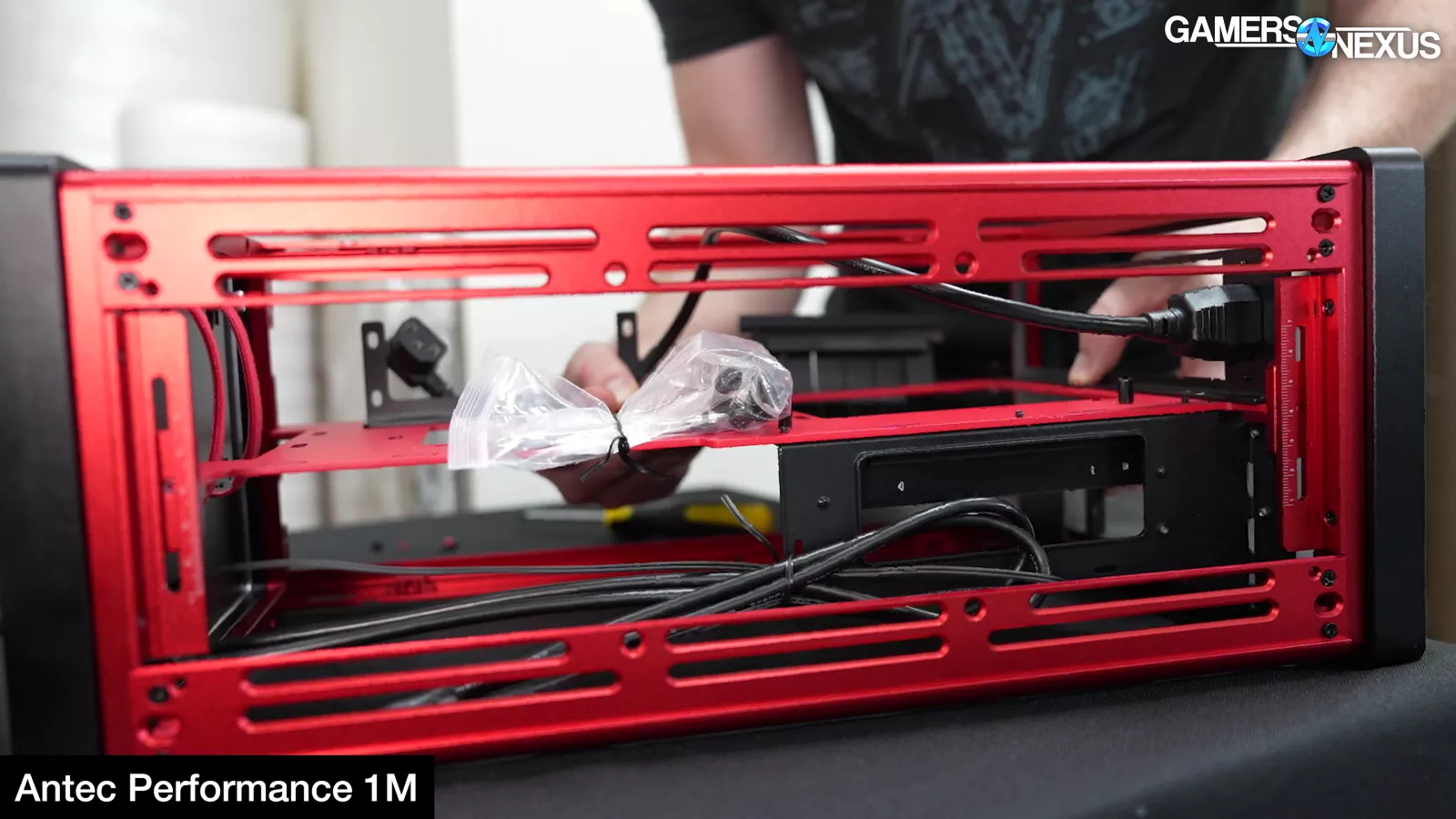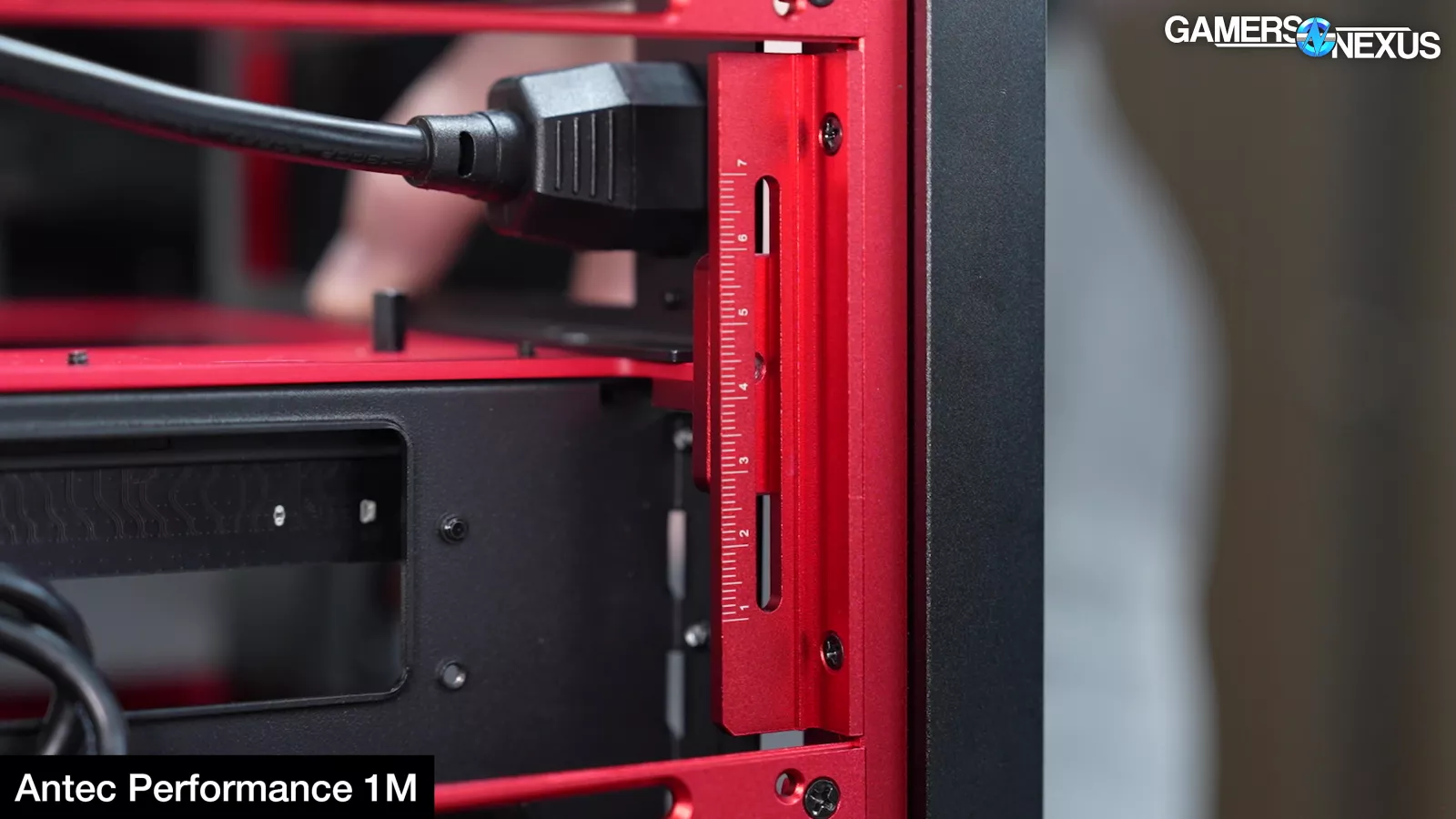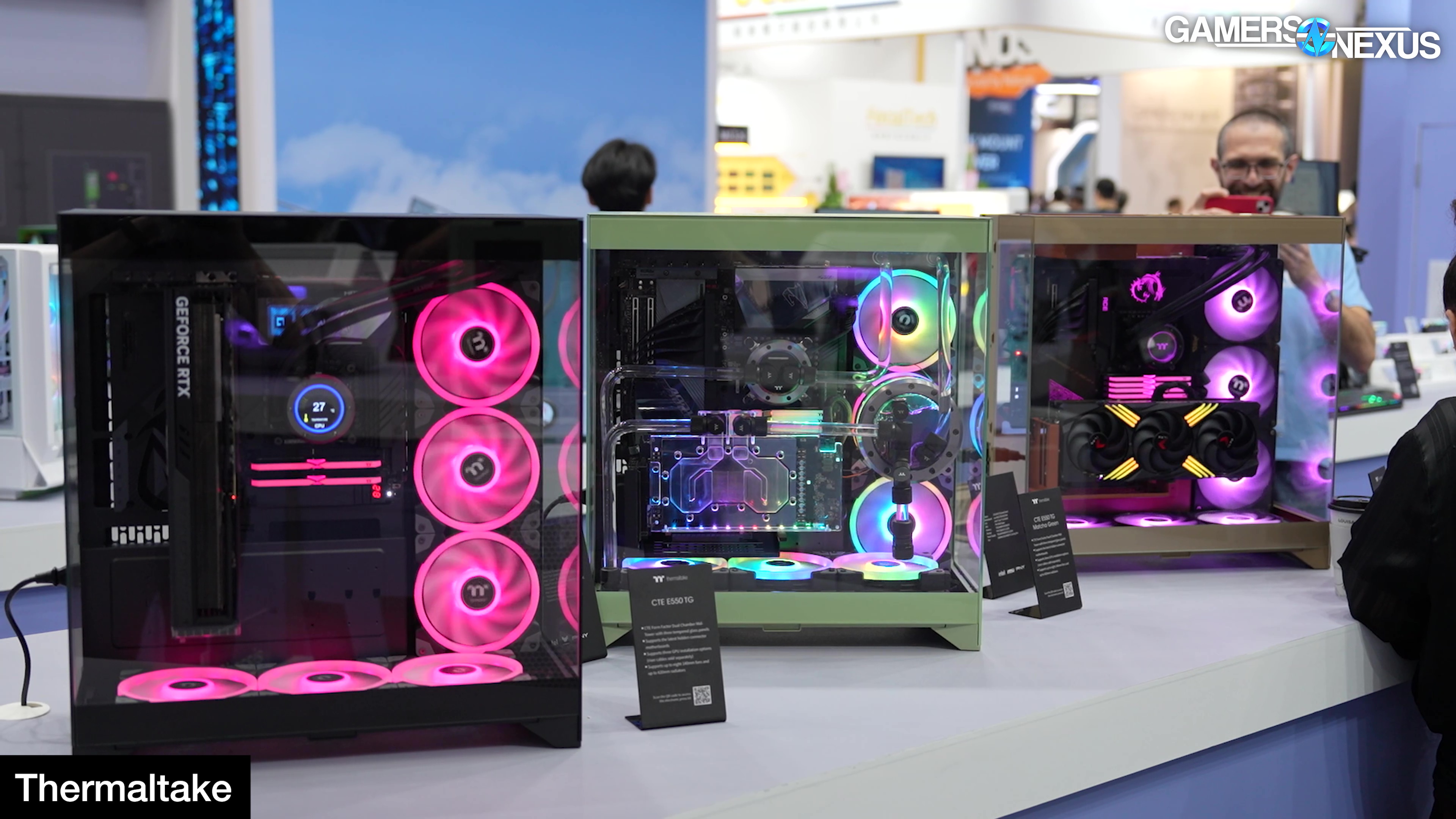
We highlight the best PC cases from Computex 2024 after visiting over a dozen case vendors
The Highlights
- The Lian Li Lancool 207 is an impressive $80 case that sinks its bottom fan tray to get closer to the floor
- The Montech XR is a $64 fish-tank style case with 3 fans
- The $100 Phanteks G400A is the successor to the P400A and includes 4x 140mm fans
- The Silverstone Alta D1 may cost around $1,000 and comes with fully modular cages and mounts
- The Tryx LUCA is a semi modular case that features heavy use of aluminum paneling
Table of Contents
- AutoTOC

Intro
The last few weeks of case announcements have been completely overwhelming -- and a lot of them look actually pretty good. One of the case manufacturers described the current case market as “a bloodbath,” saying that budget, high-performance airflow cases are getting so cheap and good that it’s hard to compete. Some of the most interesting cases at the show included Lian Li’s LanCool 207 with its sunken-floor intake fans for GPU cooling, be quiet!’s Light Base 600 and 900 cases with their flat style layout, Montech’s $64 XR glass fish tank and $70 XR Mesh airflow cases, Phanteks’ G400A for a budget ultra-airflow case, and SilverStone’s Alta D1 for some mechanically impressive functionality. And then there’s the usual showstopper from In Win, this time using a 180-degree bend of straight-up glass -- not even tempered -- with aluminum and a linear actuator to open it all. And the actual showstopper: Fractal’s PiNorth case that uses actual North wood paneling for a Raspberry Pi, but technically isn’t launching. But that’ll change now.
Editor's note: This was originally published on June 20, 2024 as a video. This content has been adapted to written format for this article and is unchanged from the original publication.
Credits
Host, Writing
Steve Burke
Video Editing
Vitalii Makhnovets
Writing, Web Editing
Jimmy Thang
This article will recap some of the best cases we think are coming out over the next few months. We still have to review each of those as they launch and our case methodology has already relaunched with new reviews -- our latest of the Corsair 6500 series -- so we’ll have a busy year with cases. In the meantime, there’s been an explosion of interesting cases ranging from dirt cheap to very expensive, featuring some weird ones in between. This rounds-up everything we saw at Computex into one big Best Cases So Far article to help you get caught up on the dozens of new cases.
We’ll focus on everything coming out over the next 6 months and won’t cover cases that launched before Computex. Let’s start with ATX cases.
Best ATX Cases in 2024 (So Far)
Lian Li Lancool 207
The Lian Li Lancool 207 is first and immediately impressed us for its $80 price point, making it instantaneously relevant given the recent lack of higher quality airflow cases with decent build quality at sub-$100 prices. It set the tone for the revival of the budget case market this year.
This case is function-first: Lian Li is sinking the bottom fan tray in the case to get closer to the floor, which will give the fans closer access to outside air to improve GPU cooling performance. The PSU has been moved to the front of the case in order to accommodate this. The case is overall compact and tries to get as close to micro-ATX as possible while still fitting ATX components.
The 207 will include 2x 140mm ARGB front fans as intake behind the mesh front panel with another 2x 120mm reverse blade fans in the bottom to act as intake. The case uses perforations in the lower side quarter panel to help pull air through the lower intake fans, showing a serious focus on designing the chassis around air cooling performance, which is especially important on budget cases since users are more likely running air cooling.
That said, Lian Li also shifted its motherboard tray down to better accommodate thick radiator and fan combos up to 65mm. This detail isn't fully finalized yet.
The Lancool 207 is expected to ship in August of this year for $80. We intend to review and benchmark it fully.
Other Lian Li ATX Cases
Lian Li had two other ATX cases at its showcase: The first was another O11D Vision variation with some swappable top panels. We're not interested in that one, as it's just another rehash of the O11 series.
The more interesting of these two is the Lancool 217. The 217 is currently a prototype using walnut wood paneling to match the aesthetic created by (to our knowledge) In Win and later popularized by Fractal. The prototype had several scuffs on its misaligned wood panels, but Lian Li tells us that these are related to the hand-made nature of the prototype unit.
The 217 uses a rear 140mm fan and a strange mix of 2x 170mm large fans in the front panel. We've seen 160mm fans on some cases, including Lian Li's own, and 180s are popular on several popular cases (including the Fractal Torrent), but 170s are rare. Lian Li chose 170s for the simple reason that they're the largest size that'll fit without scaling the case wider to accommodate 180s. The company also lined the fans up with a separating block in between, shifting the lower 170mm fan down further. This forces its air into the PSU chamber to eventually find its way up into the GPU side of the video card, theoretically more evenly distributing air across the full surface of the video card rather than focusing it primarily on the power side.
The 217 has also set back the dust filters inside the case to improve dust capture, coupled with a reverse spin feature for the fans that’s intended to shake dust loose.
The company intends to ship the case in September for $120.
be quiet! Lightbase 600 & 900
Be quiet! brought two new cases to Computex: The Light Base 600 and 900 cases use a clever foot mechanism to lock four posts into the protruding ridges of the outer shell, mixing function with form. This allows the feet to be quickly re-positioned so the case can change between a standard layout, horizontal layout like older PC cases, or invert the system. This solves a big problem in invertible cases historically, which has been overly complex hardware to flip the center of the chassis. Cooler Master also improved on this in recent years with its NCORE 600 and we’ll come back to that one below.
Rotating the Light Base to rest in a standard horizontal position moves the top and bottom panels to become the new side panels, with a side-to-side air path while the glass becomes the top and front of the case. The top and bottom panels (in the normal configuration) are symmetrical, allowing them to swap cleanly for the variations. be quiet! did well to design for the invertible element without making it a pure gimmick, which happens a lot on modular cases.
The be quiet! cases range from $150 for the Light Base 600 without fans to $195, depending on the fan configuration. The Light Base 900 ranges from $180 to $240, again depending on fan type and count.
Both cases have a large LED diffuser that’s integrated into an exterior panel. The Light Base 600 has around 1.2-1.3m of LEDs while the 900 has 1.5m, all running through that diffuser panel. Differences between the 600 and 900 include fan and radiator size support, which goes larger on the 900, and the fan tray that's included in the Light Base 900 but not the 600. The cases should launch around October.
Antec Flux Pro
Up next is Antec's return with the Flux Pro. The Flux Pro uses entirely new tooling and has an American Walnut wooden outer border combined with a rippled mesh front panel, reminiscent of its prior Flux cases. Antec is getting competitive on price with these cases: It intends to ship the larger Flux Pro with 6 fans, at 4x 140mm and 2x 120mm reverse blade fans, for $170-$180 in August. The direct price and size competition includes the larger Fractal North XL.
The Flux Pro feels like a more traditionally competitive airflow case, just with some wood strapped to the front. That's purely looks, so we'll let you decide how much you care about the wood aspect.
Antec’s shroud-mounted reverse blade fans aren’t sunken like the Lancool case, but Antec perforated the lower portion of the side panel to give more access to air. We plan to test and review this case once it's ready, so check back to see how the GPU cooling does in particular -- especially against the 207. The other fans are in the front and rear of the case.
The Flux Pro also has a simple digital display on the side that reports GPU and CPU temperature, similar to what we've seen on older EVGA cases in the past. Drive support offers 2x 2.5" SSDs and another set of 4 cages for 3.5" or 2.5" drives.
Other Antec Cases
The company also had a non-Pro smaller Flux, which ditches the display and reduces fan count to a still-high 5 fans. The non-Pro is 70-80% new tooling. Antec plans to sell the non-Pro Flux for $110 to $120 in July or August, depending on shipping timelines.
Finally, they had a C8 with alternate wood or aluminum panels -- our C8 review is in the works now -- and a C7, which we didn't care much for. We'll also talk about Antec's ITX case later in this article.
Montech XR & King 65 Cases
Montech had a massive showing at Computex and seems to be taking a swarm strategy to cases. We have two we'll focus on, but the quick run through is this:
The company had its new ultra-budget case, the XR, at $64 to $70 with 3 fans on the cheaper and 4 total fans on the XR Mesh. They also showed the new King 65 Pro chassis, which is a cheaper King 95 of similar size. Then there was the King 95 Mega Pro, which plans to hit the $200 mark with 7 fans included while also bearing a name that belongs in Quake III.
Montech had prototypes as well, like its Sky 3 with dual sunken 80mm fans and its HS01 case -- accompanied by the HS01 purse case, which... well, not all ideas are winners.
We'll shift focus to the XR first: The Montech XR case comes in either a glass fish tank style with 3 fans or a mesh panel, wood-embellished variant with 4 fans named the "XR Mesh." The fish tank is $64, the Mesh is $70. The XR Fishtank includes 2x 120 reverse side fans and 1x 120 back fan, all ARGB. The tooling is somewhat repurposed: Montech says it took its Sky 2 tooling and scaled it. The Mesh variant has 3x 120mm front fans and 1x 120mm rear fan, with a wood plate that feels thrown on for the trend, but simultaneously doesn’t look bad. The interior chassis is incredibly plain and has no ease-of-installation features that are particularly strong. It’s basic. The strength of the case is brute force air movement as cheap as possible, which has been an underserved market for the last few years. The XR just released and we plan on buying one to review as soon as our schedule clears.
Moving to the King 65 Pro, this case will ship in September for $90 and includes 3 fans, sized at 2x reverse 140s and 1x 120 rear. The King 65 Pro makes use of the dual-chamber tooling of the King 95, but reduces cost by eliminating the curved glass (sticking to just a 90-degree intersection) and changing the top panel design to be a simpler circular mesh. You can learn more about these and other Montech cases here.

Phanteks G400A/N
The Phanteks G400A finally brings a successor to the Phanteks P400A Digital that we really liked years ago. For those who don't remember, Phanteks used to be dead-set on completely obstructed panels like on the P400 non-A that we could just never recommend. The P400A Digital, though, with its mesh panels and high fan count resulted in a regular recommendation in our round-ups for cases. It's been years since the P400A launched and is due for a replacement.
The G400A is meant to be that replacement. The case will be $100 and includes 4x 140mm fans, with 3 in the front and 1 as rear exhaust. The case is mostly new tooling, with the exception of a few parts shared with other cases.
The G400N variant will be $130 and ships with a controller hub, dual glass side panels rather than one, and a cable comb cover (but both cases get the cable management guides). Both cases release in Q3 of this year. We should have a review up for the G400A once it’s ready.
Phanteks also had a workstation variant of its Enthoo series cases, some refreshed NV-series cases with back-connect support, and its new Evolv X2 prototype fish tank that it hopes to sell for around $150, which would make it pretty competitive in that market.
Other Phanteks products included 3 interconnecting fans as a pack intended to sell for $30, which would make them some of the cheapest interconnecting fans on the market. They also had an Arctic competitor liquid cooler that'll use those fans. We'll talk about the cooler in a future review. Back to the cases though, the Evolv X2 would be promising if it can hit that price of $150. The prototype uses aluminum for the interior shroud, which would definitely make it expensive but looks good.
SilverStone Alta D1
We'll switch it up with SilverStone. SilverStone had some "normal" cases that'll be G400A competitors, a cheap XR competitor at $60, and then some absolute mammoths of stature and design (and price).
The Alta D1 is one of those. The D1 was shown last year, but finalized this year. The case is a brilliant showcase of mechanical design with fully modular cages and mounts. Each modular cage can be rotated 90-degrees to either install the cages vertically side-by-side or stacked atop one another. These cages can be used for optical drives, hard drives (including those externally accessible with hot-swap backplanes), radiators that slot-in across the top of the case and take the spot of two drive modules, or fans -- including up to 2x 180mm fans in the bottom of the front and room for 1x 160mm fan up top in the front. The motherboard tray is also completely removable to form an instant test bench or be assembled externally.
The Alta D1 is a taller form factor tower that's big enough to need a cross-brace across the center of the chassis for stability. SilverStone doubles this as a mount for the vertical GPU support bracket. The D1 uses thick aluminum for some of the panels, like the top, and uses a split rear side panel for better structural support and cost. The front panel is hinged and has a keyed latch. The D1 will launch soon and has an unknown price at the moment -- but SilverStone openly told us that it'll be high. We were told to expect closer to $1,000 than not. Despite its inevitable low viability for most people, we wanted to highlight it for doing something unique while remaining functional.
Other SilverStone Cases
SilverStone had a number of other cases of varying affordability. You can check out our dedicated video for some of those, but we'll give a quick recap here. For the more "normal" cases, the FARA 514X will be $100 and includes 4x 120mm ARGB fans with a hub. It uses a chamfered front panel for structural support of the mesh and for enough fan clearance to support fans both inside and outside the chassis.
The SETA H2M is a micro-ATX variation of the same theme while still fitting 2x 360 radiators.
The 515XR is a shorter case in depth while retaining normal height, giving it an older feel. The 515XR is meant for the Japanese market, where space for desktop computers is reduced. SilverStone is considering it for the rest of the world, but wants people to know it won't have the depth to fit the longest video cards. The case should be $50-$60 while somehow still including 4x 120 fans.
As a final note, SilverStone also had a new HTPC chassis in 5U form factor called the CW04, or Crown 04.
The new Alta T1 is also a spiritual successor to the TJ07 from 2006, using an extruded aluminum panel along the front, top, bottom, and some of the back.
A new CS383 made an appearance as a home server or NAS box as well, priced at $400. We think SilverStone’s showing this year illustrates a lot of variety and function-first designs.
Cooler Master NCORE 600
Cooler Master is also back this year. It's been a long time since Cooler Master turned-around its case design by departing from the H500P and moving to the H500P Mesh. We strongly recommended the Mesh and later H500M and TD500 as a result of Cooler Master's significant improvements in its design. Since then though, they haven't had as much exciting stuff because a lot of their cases got kind of smashed by the tax and tariff changes, which eliminated them from the markets.
We found Cooler Master's new ITX cases the most mechanically interesting, but the new MasterBox 500 and NCORE600 revive its ATX side.
The NCORE 600 will fight in the now-burgeoning $180 to $220 market. The Prestige model is $210 and will include 2 glass panels and 1 mesh panel. The glass and mesh are symmetrical with each other and can be swapped between sides and the front, as this modular fishtank style exposes basically 2.5 panels. The panels each pop out individually and relatively easily for the same reason as be quiet!'s Light Base: Simple invertibility, as a total of 6 screws allows the case to flip upside down and present the system to the other side. This is a massive improvement on Cooler Master's flawed prior invertible cases. Neither of the NCORE 600 models include fans and both models use an angled fan tray to help direct air toward the components while also looking different. The Standard edition will be $180 and include just 1 glass and 1 mesh panel, but is otherwise mostly identical.
The MasterBox is a relatively uneventful case in that it matches other cases in its price point. The Box will be $140 for the glass variant and $120 for mesh. Both include a rear 120mm ARGB fan and the Mesh model includes 3 additional 120mm ARGB fans, totaling 4. The cases share the same tooling. Cooler Master intends for the LED side panel to be customizable, so the angsty LED lettering should be swappable to other pixel-based designs in software.
Thermaltake AX700
We'll change things up again. Thermaltake had a ton at its booth this year, but we wanted to highlight what’s technically an older case. The Thermaltake 100 case has had its tooling refreshed for the new AX700 workstation case. The case is an absolute monster and it remembers why big cases exist. Rather than a big empty glass cube, Thermaltake still includes a lot of drive cages. The show build had space for 12 hard drives mounted to the vertical rail, but another 2 drives could be mounted without the radiator in the way, and the backside of the motherboard tray would support at least another 2 drives from what we could see at the show.
The large panel doors have latches to secure closed and use foam pads for a better seal, showing more attention to detail in small areas. The AX700 has a TBD price and will probably launch in Q4. It's not final yet.
Since this is technically a refresh of an existing case, we’ll move on to the next one.
Corsair 9000D
Which is Corsair's 9000D, another refresh: This one builds on the 1000D case, but has about 30% new tooling, according to Corsair.
The show build had about 32 fans installed and two systems (one ITX and one ATX), but doesn't focus on the functional storage afforded by the AX700 as much. This is another one where we liked the smaller attention to detail: The pre-greased rails and actuation for the fan and radiator trays were nicely done and the small fan size markings on the rails makes installation clearer, reviving the 1000D highlights of the past. Corsair doesn't reach SilverStone levels of pure mechanical functionality and quality of life features in a huge case, but it also comes in cheaper -- but still not cheap. The 9000D will be around $500, but is expected to be a lot cheaper than Silverstone’s D1.
But Corsair had two cases on show this year: We didn't like the 3500X that much, but it’ll fight in that $100ish fish tank arena.
Tryx LUCA
Our next entry in the ATX category is the LUCA. This is from the brand new company "Tryx," which made its public debut just this year and launched its Panorama liquid cooler. Tryx is founded by defectors from ASUS and Cooler Master and is supported by Asetek.
The Tryx LUCA is intended to be $200 for the glass model and $220 for the unit that includes 2x 200 x 38mm fans with a hinged door mesh front panel.
While it has some oversights, like the restrictive airflow design of the bottom foot, its heavy use of aluminum paneling and futuristic styling gets it on the map, plus being $200 for a case with a full aluminum side panel and foot is uncommon. It seems Tryx is willing to run at a lower margin than its competitors to get some recognition and market share. The case is also semi-modular, allowing the motherboard tray and PSU cage to be swapped positionally. It’s coming out in Q3.
In Win Signature Case
Let's end our ATX section with In Win's signature cases. This isn't something that'll be for sale in any kind of volume or maybe at all, but deserves a mention for being basically an art piece.
The new Signature case uses a 180-degree bend in a sheet of straight-up glass, it’s not even tempered glass. It's 110cm long and treated with an anti-shatter film and bent around the entire chassis, sort of appearing to interlock with the aluminum. The designers told us that their objective was to artistically represent aluminum and glass embracing. Like the In Win H-Tower of yore, the new Infinite signature case opens on a button press and unfolds the motherboard tray out to present it.
The case uses a motor to push the enclosure open and a gigantic aluminum foot to hold everything securely in place without anything tipping. The glass is a feat of manufacturing and requires long cooling cycles to make the shape without shattering.
There were a ton of other ATX cases at the show, like MSI's that we briefly showed in a video, but these are some of the most interesting ones that we encountered. The $100 market is definitely exploding, or will be later this year, and the $180-$220 market will remain popular as well.
Let's look at some mini-ITX cases.
Best Mini-ITX Cases 2024 (So Far)
Cooler Master BTF ITX
Cooler Master's mini-ITX concepts start us off. The unnamed BTF ITX concept case is currently built to enclose the GPU in a cage atop the main body and present it openly. Although shown with the ASUS BTF solution to run power into the foot of this particular GPU, Cooler Master intends to optionally punch a hole for the GPU power cable to come up through the chassis.
The case uses a locking mechanism to latch the top cage into place and the concept is a relatively fresh take on showcasing a component. We’d like to see some ventilation punched-out between the GPU and the floor and, likewise, you’ll need to keep an eye on dust in the card. Still, it’s a new take and we can respect that.
Cooler Master also had the favored NR200P except in a new variant, where the side panel is cut for the GPU. Our viewers pointed-out that this is fulfilling the meme of cutting cases to fit 4090s. Both are expected out in the last half of this year. Prices aren't known yet.
Fractal Era 2
The Fractal Era 2 case also gets a spot on our ITX list. Fractal had the Mood ITX case, the Era 2, the PiNorth unofficial product, and an updated North XL with back-connect tooling. The Era 2 is where we’ll focus on ITX cases now. We’ll reserve commentary on the fabric-covered Mood since it is currently in our reviews process.
The Era 2 uses wood and aluminum for a $200 price-point. Fractal noted that its wood has been treated in a way that should prevent any cracking or damage from use.
The Era 2 has clever mechanical design to allow the exterior chassis to easily lift off after a bottom filter is unseated, making the chassis easy to get into for building or maintenance. The top panel also has some mechanical latches that release it for full access inside the case. It’s an 18.9L case with 2x 120mm basement fans included, a PCIe Gen4 riser, and a Terra-style spine that shifts slightly side-to-side to better accommodate GPU or CPU cooler clearance.
As for the wood, it’s reinforced underneath to prevent bowing while still filtering air.
Thermaltake TR1
Thermaltake gets a mention for its TR1 ITX case, which it intends to design specifically for travel. To truly hit the travel market, we think it needs some screws to lock the panels in place and definitely a strap or handle of some kind, but it’s still in design stages. Overall, we liked the color combinations and execution. They’re trying to hit the $100 to $120 price point. This case isn't final yet and will be expanding in depth, so since it still needs some time to bake, we'll move on -- but it's on the radar.
The biggest thing Thermaltake did this year was expand their color palette across all of their cases, so we’re excited to see how that’s received beyond the usual black or white solutions.
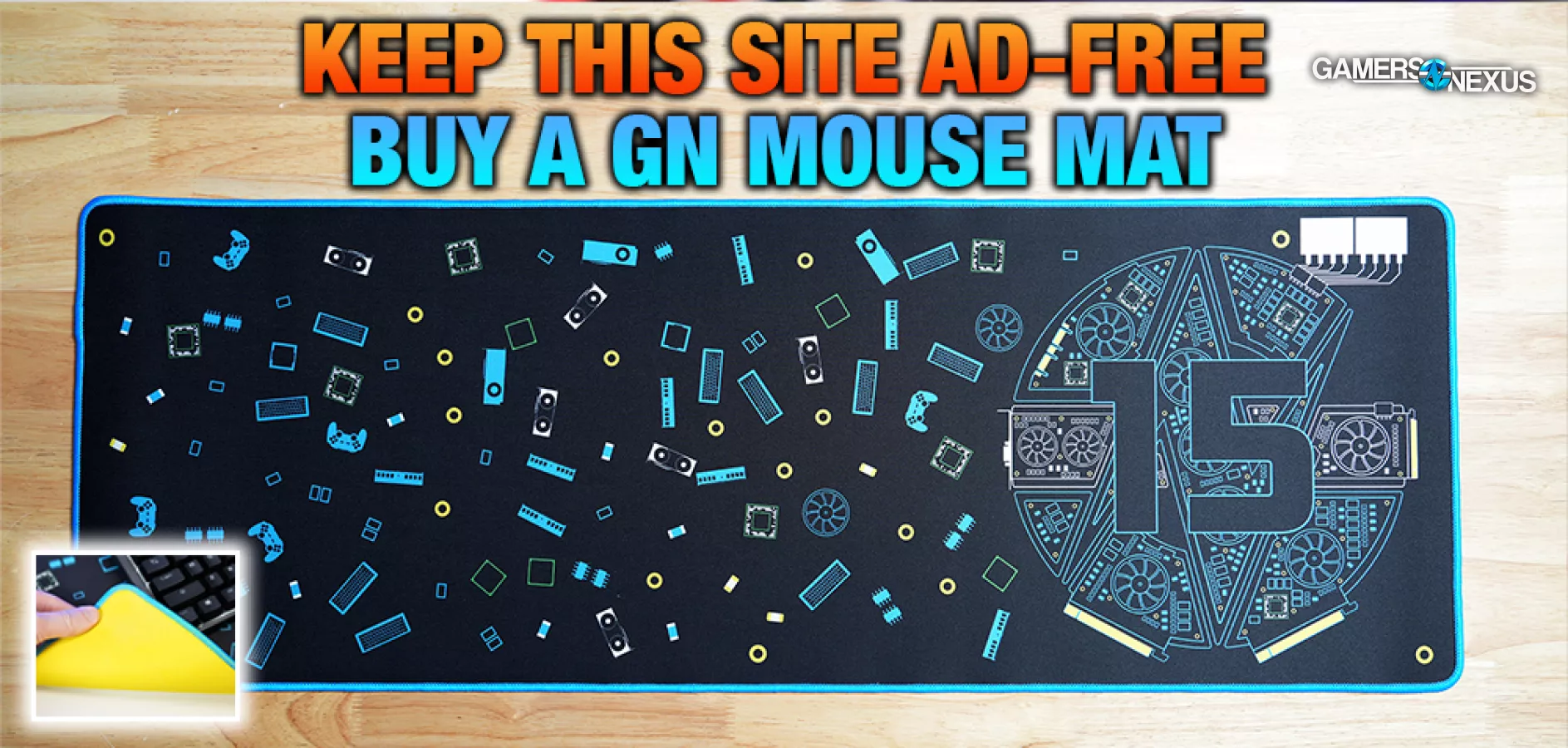
Antec Performance 1M
Finally, Antec also had an ITX case present: The Performance 1M uses a red interior frame and a mixture of aluminum and steel to create a back-to-back style ITX build. From our hands-on with the prototype, the mechanism isn't as refined as the Terra, but we did like the red accent and saw potential in the design. The case fits a 3-slot GPU with adjustable depth to bias toward the CPU or GPU cooler, as with the Terra and other similar cases. Antec is still finalizing the case.
